These photos have been shared on social media channels.

Attention beach goers! August 19, 2025
Just as contagious bacteria and viruses can spread amongst human communities leading to illness (and worse), the same happens in the ocean environment.
Beach Watch community scientists are observing an increase in evidence that a dangerous bacterial infection called Leptospirosis affecting California sea lions is potentially on the rise. Leptospirosis is a bacterial infection that can be contagious — and even lethal — to pets (especially dogs) and humans. Infection can occur through contact with contaminated urine, water, sand, or soil.
If you see a sick or dead California sea lion at the beach, please note the following precautions:


Climate change may be eating our coastlines, but agencies are working to slow its appetite. Beaches are shrinking. Sand is important, but it moves! As the second most consumed natural resource globally after water, sand and sediment form the foundation of coastal habitats like beaches and dunes. These habitats provide essential refuge for marine life and act as natural barriers against erosion and storms, protecting coastal communities.
Greater Farallones National Marine Sanctuary led a collaborative committee of 17 local, state and federal agencies to reduce barriers for coastal restoration projects and reached a major milestone this week to facilitate planning of nature based solutions by publishing the Efficient Permitting Roadmap. Good for humans, good for wildlife! https://nccscc-noaa.hub.arcgis.com/pages/roadmap

Earlier this year a fishing vessel grounded on Salmon Creek Beach, Sonoma Coast State Park within Greater Farallones National Marine Sanctuary and thankfully nobody was injured. Abandoned, derelict, or grounded vessels can damage important ecosystems in the sanctuary, by scouring or crushing sensitive marine habitats or by discharging hazardous substances. Under sanctuary regulations it is prohibited to both leave a vessel or other marine debris in this marine protected area and/or discharge fuel, debris, or other matter. While the loss of the vessel is unfortunate, the debris has been cleaned up thanks to close coordination between the NOAA/Greater Farallones and Cordell Bank National Marine Sanctuaries, US Coast Guard, California State Parks, US Fish and Wildlife Service, Sonoma County, and the vessel owner’s insurers.

What does evolution have to do with kelp restoration? Kelp forests are economically, ecologically, and culturally important habitats and have suffered significant loss in Greater Farallones National Marine Sanctuary in recent years. A recent workshop brought together leading experts to discuss the role of evolution for management strategies into the future. Check out some of the highlights from the experts Photo: Chad King/MBNMS

Side scan sonar image taken by Ocean Infinity of the USS Stewart (DD-224) a Department of Navy destroyer that was located in September 2024 in Cordell Bank National Marine Sanctuary.

The wreck of the USS Stewart (DD-224), a destroyer launched in 1920 with a remarkable history during World War II, was located last month in Cordell Bank National Marine Sanctuary by Ocean Infinity, a marine robotics company, during a collaborative expedition with the Air/Sea Heritage Foundation, SEARCH, and NOAA. USS Stewart is considered a sunken military craft by the Department of the Navy and protected by the Sunken Military Craft Act against unauthorized disturbance. The USS Stewart’s final resting place in a national marine sanctuary is a reminder of the sanctuary’s maritime history and heritage legacy, as well as opportunities for further investigation and discovery. Photo Credit: Ocean Infinity

Happy Marine Life Monday! Mew gulls (Larus canus) breed in the tundra but can be spotted along the Pacific Coast during winter months. They are omnivores that feed on grain, insects, fish, and marine invertebrates. These small-medium sized gulls are about the size of a crow. The juveniles have a grayish brown head and black bill, while adults have a white head and yellow bill. Is the gull pictured a juvenile or adult? (Photo Credit: Peter Pearsall, USFWS. Image description: gull with wings raised and a small invertebrate in its bill at the water’s edge.)
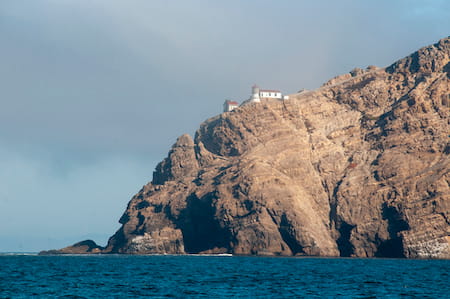
Scenic Saturday! What is your favorite scenic sanctuary spot to enjoy? (Photo Credit: Robert Schwemmer, NOAA. Image description: white buildings and white lighthouse with red roofs on a rocky point above the ocean.)

Create a caption! What might this manatee or group of fish in NOAA’s Florida Keys National Marine Sanctuary be saying? (Photo Credit: Keith Ramos/USFWS. Image description: gray manatee swimming underwater with lots of small fish swimming nearby.)
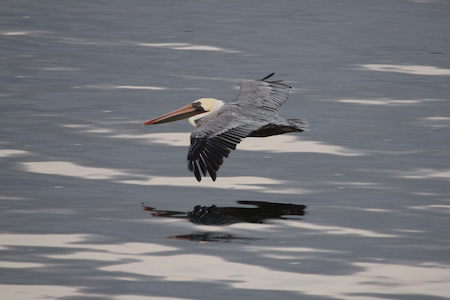
Welcome to Winged Wednesday! Seabirds fly long distances to enjoy the bountiful waters of Greater Farallones National Marine Sanctuary. More than 160 seabird species use the sanctuary for shelter, food, or as a migration corridor! We’re introducing our favorite masterful migrators. First up, are brown pelicans. Brown pelicans can spend long days traveling on the ocean without worrying about how to find water to drink. They drink seawater! With built-in water desalination filters connected to their bills that rid their bodies of excess salts, brown pelicans nest in Mexico, feed in the food-rich waters of the sanctuary, and then migrate all the way up to British Columbia. To learn more about California seabirds and what Greater Farallones National Marine Sanctuary is doing to help seabirds thrive, visit http://farallones.noaa.gov/eco/seabird/ #MasterfulMigrators (Photo: David Dann, NOAA, CBNMS. Image description: brown pelican with wings outstretched flying above the surface of the ocean.)
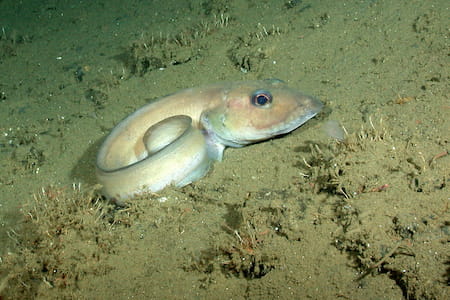
Happy Marine Life Monday! Bigfin eelpouts (Lycodes cortezianus) are bony ray-finned fish that have an eel-like appearance and grow to a maximum length of about 19 inches. These deepwater, bottom dwellers are typically found in habitats with muddy bottoms at depths of 73 - 620 meters from Alaska to San Diego. (Photo Credit: Kevin L. Stierhoff, NOAA, SWFSC. Image description: long, pale colored fish curled up on a muddy bottom habitat.)
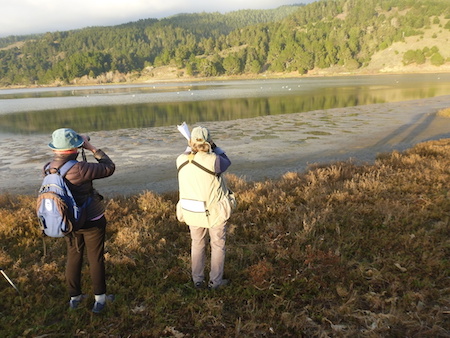
We’re recruiting volunteers to join the Beach Watch Program! Our long-term & highly trained volunteer surveyors collect important data along Greater Farallones National Marine Sanctuary’s coastline. Attend an upcoming orientation to start the application process. Full details here: https://farallones.org/beach-watch Learn more about Beach Watch: https://farallones.org/beach-watch (Photo Credit: Beach Watch, GFNMS/NOAA. Image description: two people standing at the edge of a lagoon with binoculars.)
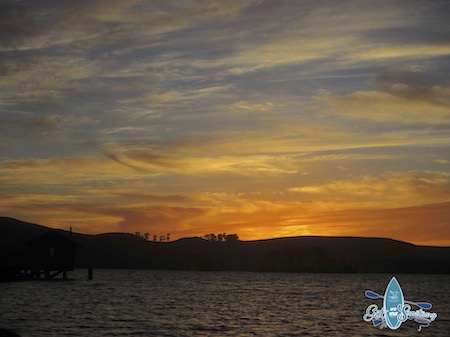
Scenic Saturday! What is your favorite scenic sanctuary spot to enjoy? We want to see NOAA’s Greater Farallones National Marine Sanctuary through your lens! The Get Into Your Sanctuary photo contest is open now through Labor Day Weekend. Visit https://sanctuaries.noaa.gov/photo-contest.html to learn how to enter. (Photo Credit: Sara Heintzelman, NOAA. Image description: orange sky at sunset over water with dark silhouetted hills.)
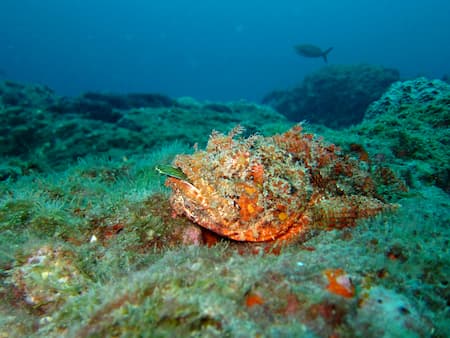
Create a caption! What might this scorpionfish in NOAA’s Flower Garden Banks National Marine Sanctuary be saying? (Photo Credit: Emma Hickerson/NOAA. Image description: orange fish camouflaged on a reef with a fin from a recent meal sticking out of its mouth.)

Farallones Field Notes: Giant green anemones are one species you might spot in the low to mid intertidal. When submerged in water, you will often see these anemones opened up with their bright green oral disk visible. However, when out of the water, they are usually closed up and you will only see their dark green or brown column. (Photo Credit: Jahmal White, Farallones Volunteer Naturalist. Image description: a partially open anemone in a channel of water surrounded by rocks in the intertidal.)
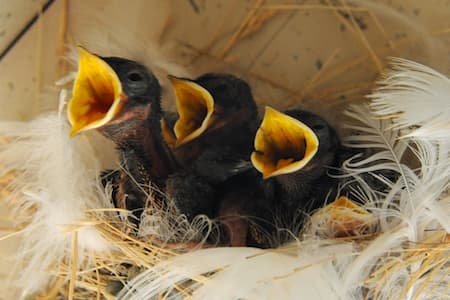
Happy Marine Life Monday! Barn swallows (Hirundo rustica) have cobalt blue backs, orange-brown bellies, and a deeply forked tail. During their breeding season you may spot them near mud puddles as they gather supplies to build cup-shaped nests of mud; such as the one these hungry chicks are in! They used to nest in caves throughout North America, but now with the exception of a barn swallow population on the Channel Islands in NOAA’s Channel Islands National Marine Sanctuary, they almost all build nests on human-made structures. (Photo Credit: Peter Davis, USFWS. Image description: black barn swallow chicks with yellow mouths wide open in a nest of mud, straw, and feathers.)
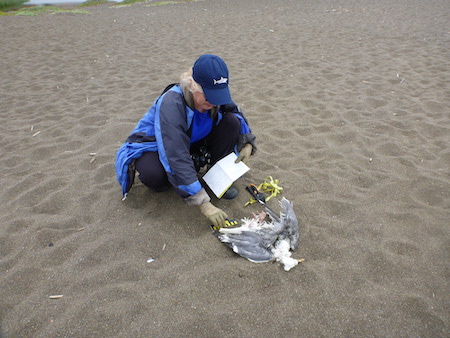
We’re recruiting volunteers to join the Beach Watch Program! Our long-term & highly trained volunteer surveyors collect important data along Greater Farallones National Marine Sanctuary’s coastline. Attend an upcoming orientation to start the application process. Full details here: https://farallones.org/beach-watch Learn more about Beach Watch: https://farallones.noaa.gov/science/beachwatch.html (Photo Credit: Beach Watch, GFNMS/NOAA. Image description: woman bent down near a dead bird on a sandy beach with a notebook and tools.)
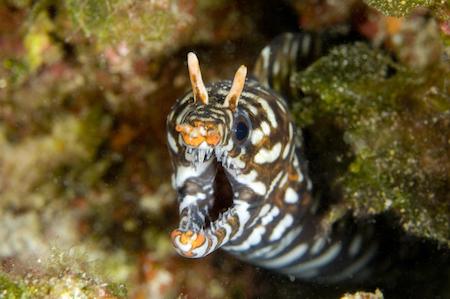
Create a caption! What might this dragon moray eel in Papahānaumokuākea Marine National Monument be saying? (Photo Credit: NOAA. Image description: close up of an orange, brown, and white eel with its mouth open.)

Welcome to Winged Wednesday! How do you spot a tufted puffin in the wild? The trick is to look offshore near the Farallon Islands, the only place they nest locally in Greater Farallones National Marine Sanctuary. Use binoculars and keep an eye out for that signature candy corn orange beak and orange feet. If you’ve seen one, let us know! To learn more about California seabirds and what Greater Farallones National Marine Sanctuary is doing to help seabirds thrive, visit http://farallones.noaa.gov/eco/seabird/ (Photo: Sophie Webb, ACCESS/NOAA/Point Blue. Image description: black bird with a white head and bright orange beak.)
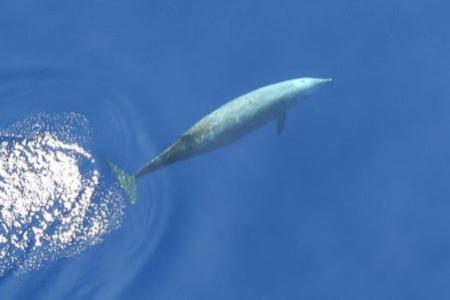
Happy Marine Life Monday! Cuvier's beaked whales (Ziphius cavirostris) grow to lengths of 15-23 feet and weigh between 4,000 and 6,800 pounds. The males have two small teeth protruding from their bottom jaw that are used for fighting. These beaked whales may remain elusive, not only do they exhibit skittish behavior, their blow is only about 3 feet tall and harder to spot than some other species of whales. They are known for their deep diving ability; the deepest known dive of a Cuvier’s beaked whale was 9,816 feet, nearly 2 miles deep! Photo Credit: Richard Holt/NOAA Fisheries, NMFS MMPA Permit No.21938. Image description: view from above of a Cuvier’s beaked whale swimming below the ocean’s surface.)
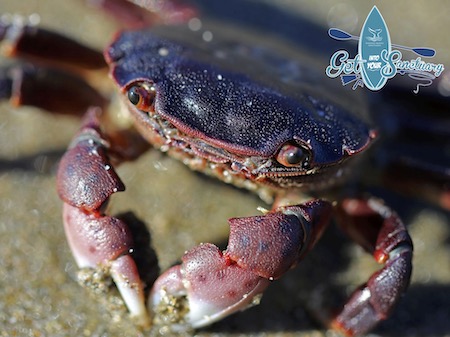
Using an innovative storymap with photos, videos, maps, and a 3D intertidal model, we will explore the amazing intertidal habitat at the dynamic edge of the sea. You'll learn how the animals and algae survive under ever-changing conditions. We'll explore the creatures of the intertidal including octopuses, chitons, anemones, sea stars, sea urchins, and nudibranchs that call this biodiversity hotspot “home.” Learn important tidepool etiquette and helpful techniques to plan your own trip to the intertidal. NOAA Office of National Marine Sanctuaries Greater Farallones Association #ILoveMySanctuary (Photo Credit: Peter Pearsall, USFWS. Image description: close up view of a purple crab with dots on its front claws.)
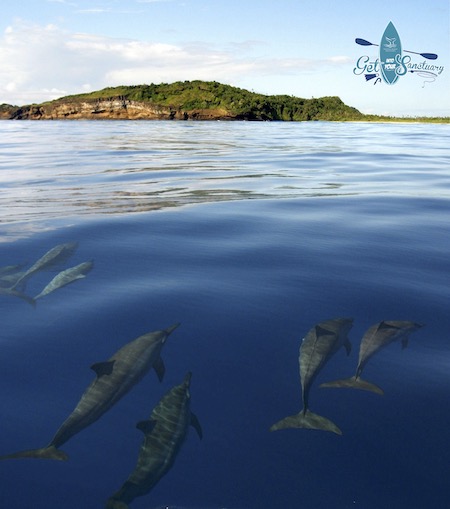
Create a caption! What might these spinner dolphins in National Marine Sanctuary of American Samoa have to say? We want to see the national marine sanctuaries through your lens! The Get Into Your Sanctuary photo contest is open now through Labor Day Weekend. Visit https://sanctuaries.noaa.gov/photo-contest.html to learn how to enter. (Photo Credit: Ed Lyman,NOAA. Image description: a group of dolphins swimming underwater with an island in the distance.)
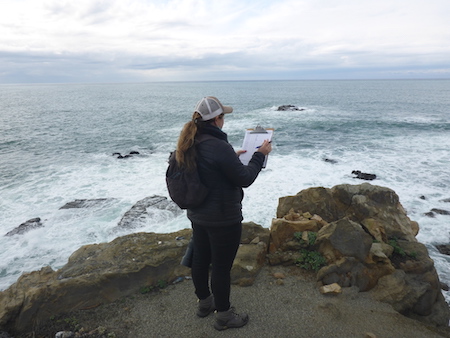
We’re recruiting volunteers to join the Beach Watch Program! Our long-term & highly trained volunteer surveyors collect important data along Greater Farallones National Marine Sanctuary’s coastline. Attend an upcoming orientation to start the application process. Full details here: https://farallones.org/beach-watch Learn more about Beach Watch: https://farallones.noaa.gov/science/beachwatch.html (Photo Credit: Beach Watch, GFNMS/NOAA. Image description: woman standing on a rocky point above the ocean with a clipboard and a camera.)
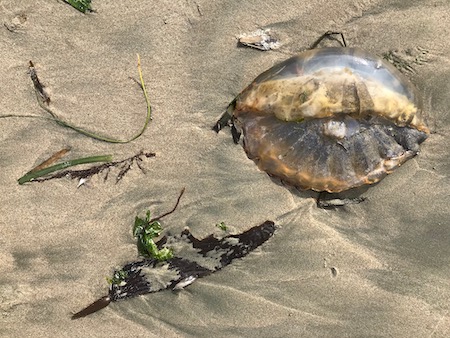
Farallones Field Notes: Pacific sea nettles, a type of jellyfish, are wondrous animals that find themselves at the mercy of the weather. You may often find them in the beach wrack where the wind has stranded them. Because their bodies have a high concentration of water, they dry out quickly and die once beached. (Photo Credit: Rebecca Akin, Farallones Volunteer Naturalist. Image description: a jellyfish stranded on a sandy beach with bits of seaweed.)

Did you hear?! The Greater Farallones National Marine Sanctuary Advisory Council is recruiting and today is the deadline! The Council is currently seeking applicants for multiple seats including Community-at-Large Mendocino/Sonoma, Conservation, Research, and Maritime Recreational Activities Seats. Council members attend quarterly meetings and advise the sanctuary superintendent on important ocean conservation and management topics. Learn more and apply today. The deadline to apply is today, Monday, August 2. https://farallones.noaa.gov/manage/sac_recruitment.html (Photo Credit: Chad King, NOAA, MBNMS. Image description: a group of elephant seals laying on a beach, one in the middle of the group has its mouth wide open.)
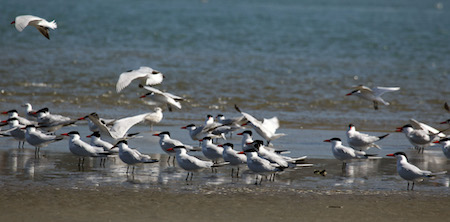
Happy Marine Life Monday! Caspian terns (Hydroprogne caspia), about the size of a crow, are the largest terns in the world. They have bright red bills and distinctive raspy calls. They mainly feed on fish, but have been known to feed on crustaceans or even insects. To catch their prey, they fly 10-100 feet above the water while they scan for fish. Once a fish is spotted, they dramatically dive down, catch their meal, and eat while still in flight (unless they are delivering a meal to their chick). They are kleptoparasites, or bird pirates, and are known to chase other tern species and steal their catch. (Photo Credit: Peter Pearsall, USFWS. Image description: a group of birds with gray and white bodies, black caps, and bright red bills standing at the edge of the water.)
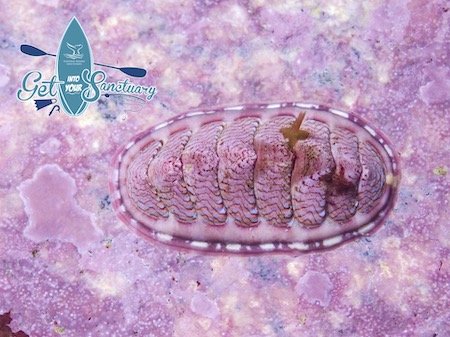
Join Greater Farallones sanctuary naturalists for a virtual tidepool adventure! Using an innovative storymap with photos, videos, maps, and a 3D intertidal model, we will explore the amazing intertidal habitat at the dynamic edge of the sea. You'll learn how the animals and algae survive under ever-changing conditions. We'll explore the creatures of the intertidal including octopuses, chitons, anemones, sea stars, sea urchins, and nudibranchs that call this biodiversity hotspot “home.” Learn important tidepool etiquette and helpful techniques to plan your own trip to the intertidal.NOAA Office of National Marine Sanctuaries Greater Farallones Association #ILoveMySanctuary (Photo Credit: Chad King, NOAA/MBNMS. Image description: an oval-shaped, pink, striped creature with 8 plates on a pink algae covered surface.)
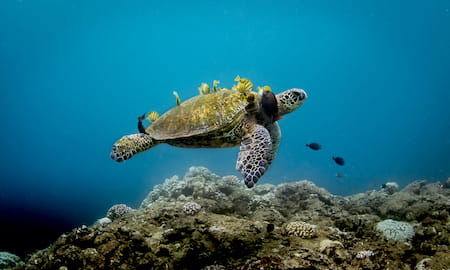
Create a caption! What might these fish or this green sea turtle in Hawaiian Islands Humpback Whale National Marine Sanctuary have to say? (Photo Credit: Matt McIntosh, NOAA. Image description: green sea turtle underwater with fish hovering near its shell above a coral reef.)
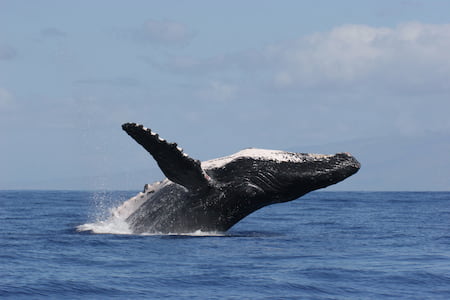
Will YOU jump at this opportunity to join the Greater Farallones National Marine Sanctuary Advisory Council? The Council is currently seeking applicants for multiple seats including Community-at-Large Mendocino/Sonoma, Conservation, Research, and Maritime Recreational Activities Seats. Council members attend quarterly meetings and advise the sanctuary superintendent on important ocean conservation and management topics. Learn more and apply today! The deadline to apply is Monday, August 2. https://farallones.noaa.gov/manage/sac_recruitment.html (Photo Credit: HIHWNMS/NOAA, under NOAA permit #14097. Image description: humpback whale jumping out of the water.)
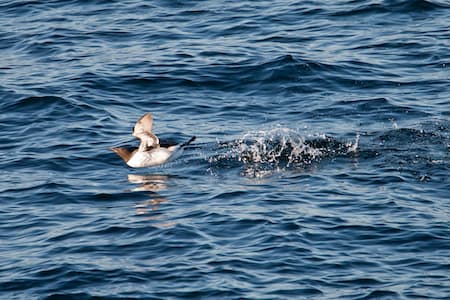
Welcome to Winged Wednesday! How do seabirds take flight from water? For common murres, who have small wings and a heavy body, it takes a lot of energy! Murres run along the water’s surface with their feet to gain enough speed to get lift and finally take flight. To learn more about California seabirds and what Greater Farallones National Marine Sanctuary is doing to help seabirds thrive, visit http://farallones.noaa.gov/eco/seabird/ (Photo Credit: Peter Pearsall, USFWS. Image description: football shaped bird with a black back and white belly just above the ocean’s surface with wings raised and legs straight back.)

Happy Marine Life Monday! Sperm whales (Physeter macrocephalus) are the largest of the toothed whales and are named for the waxy substance (spermaceti) located in their heads that helps them focus sound. Sperm whales regularly dive to depths of 2000 feet, but have been recorded diving to depths of 10,000 feet! They have social groups and will form a protective rosette when faced with danger in which the group of whales gathers in a circle with their heads in and flukes out. They will surround the most vulnerable members in their group to keep them safe. (Photo Credit: Tim Cole, NOAA. Image description: aerial view of six sperm whales gathered in a group.)
Farallones Field Notes: What are all the birds eating? These Pacific mole crabs, commonly known as sand crabs! They live along sandy beaches from Alaska to Baja. You can spot them in the swash zone, the area of wet sand between the highest and lowest reach of the waves, as they burrow away from hungry birds on shore and hungry fish in the sea. In the sanctuary they are a favorite meal of surf perch, accounting for 90% of the fish’s diet. (Video: Tiffany Pfeiffer, Farallones Volunteer Naturalist)
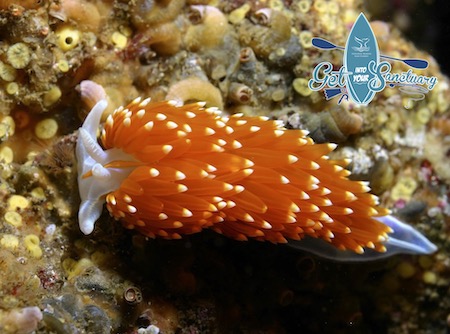
Join Greater Farallones sanctuary naturalists for a virtual tidepool adventure! Using an innovative storymap with photos, videos, maps, and a 3D intertidal model, we will explore the amazing intertidal habitat at the dynamic edge of the sea. You'll learn how the animals and algae survive under ever-changing conditions. We'll explore the creatures of the intertidal including octopuses, chitons, anemones, sea stars, sea urchins, and nudibranchs that call this biodiversity hotspot “home.” Learn important tidepool etiquette and helpful techniques to plan your own trip to the intertidal. NOAA Office of National Marine Sanctuaries Greater Farallones Association #ILoveMySanctuary (Photo Credit: Steve Lonhart, NOAA/MBNMS. Image description: a sea slug with orange along its back.)
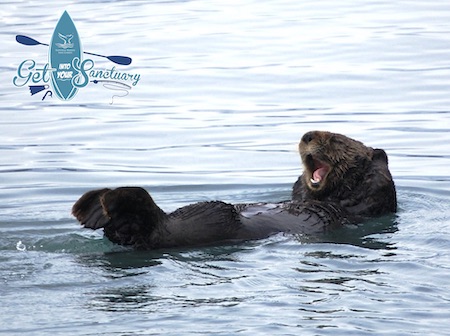
Create a caption! What might this sea otter in NOAA's Olympic Coast National Marine Sanctuary have to say? We want to see the national marine sanctuaries through your lens! The Get Into Your Sanctuary photo contest is open now through Labor Day Weekend. Visit https://sanctuaries.noaa.gov/photo-contest.html to learn how to enter. (Photo Credit: NOAA. Image description: a sea otter floating on its back with its mouth open and paws behind its head.)

The ACCESS (Applied California Current Ecosystem Studies) team headed back out to sea this week! Although the seas were a little rough offshore, they still had good sightings and observed many humpback whales. They spotted birds in feeding flocks, including many sooty shearwaters and Brandt’s cormorants and there were many common murres with chicks. ACCESS Oceans NOAA's Cordell Bank National Marine Sanctuary Point Blue Conservation Science *Note: this cruise was conducted under all CDC and CA state and local COVID-19 prevention requirements. (Photo credits: Dru Devlin ONMS/Point Blue/ACCESS. Image descriptions: whale tail, birds flying over the water's surface, and an adult common murre and chick floating on the ocean's surface.)
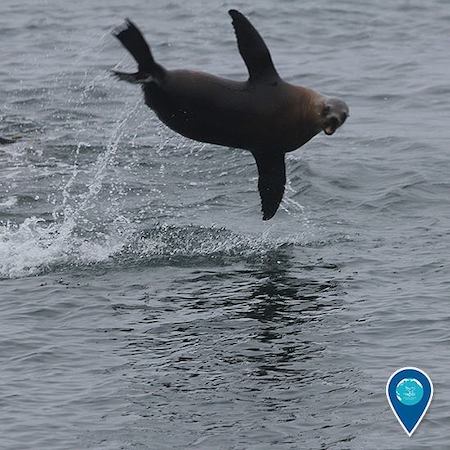
This California sea lion is excited that the Greater Farallones National Marine Sanctuary Advisory Council is recruiting! The Council is currently seeking applicants for multiple seats including Community-at-Large Mendocino/Sonoma, Conservation, Research, and Maritime Recreational Activities Seats. Council members attend quarterly meetings and advise the sanctuary superintendent on important ocean conservation and management topics. Learn more and apply today! The application deadline is Monday, August 2. https://farallones.noaa.gov/manage/sac_recruitment.html (Photo Credit: Dru Devlin, GFA. Image description: a brown sea lion in the air above the ocean with flippers stretched wide and its mouth open.)
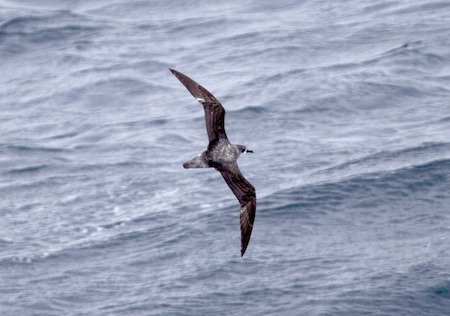
Happy Marine Life Monday! Cook’s petrels (Pterodroma cookii) are small, fast seabirds. Despite having a wingspan of only about 26 inches and weighing 7oz, Cook’s petrels fly from their breeding grounds in New Zealand to the Pacific. If you are lucky, you can spot these pelagic seabirds well offshore along the west coast from March-August. (Photo Credit: Chad King, NOAA, MBNMS. Image description: seabird with gray and black plumage soaring above the ocean.)
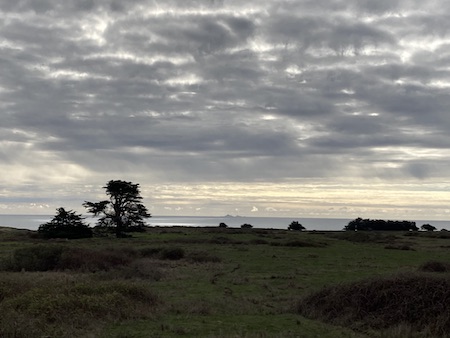
Scenic Saturday! What is your favorite scenic sanctuary spot to enjoy? Do you know where this beautiful photo was taken? (Photo Credit: Sara Heintzelman, NOAA. Image description: grassy mesa with islands at the horizon of the ocean and dramatic gray clouds with sunlight shining through above.)
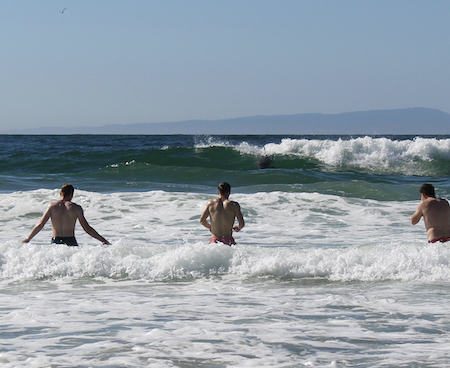
Create a caption! What might this shark in NOAA’s Monterey Bay National Marine Sanctuary have to say? #SharkWeek (Photo Credit: Jim Bryan. Image description: great white shark visible through a wave near bodysurfers.)
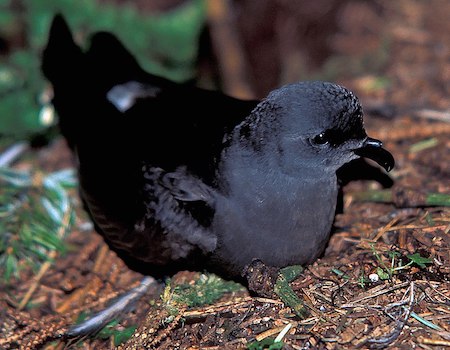
Welcome to Winged Wednesday! The waters of Greater Farallones National Marine Sanctuary are home to 13 breeding species of seabirds and we’re going to introduce you to all of them and their seabird ‘superpower’. Next up, the Leach’s storm-petrel: If Leach’s storm-petrels had a superpower it would be stealth! These nocturnal, pint-size seabirds are among the world’s most difficult seabirds to spot because they nest deep in crevices on sheer rock cliffs and only come out at night. This superpower keeps them safe from predators and cuts down on their chances of leading them back to their eggs or young. To learn more about California seabirds and what Greater Farallones National Marine Sanctuary is doing to help seabirds thrive, visit http://farallones.noaa.gov/eco/seabird/ #SeabirdSuperpowers (Photo Credit: C. Schlawe, USFWS. Image Description: dark gray bird with black beak sitting on the ground.)
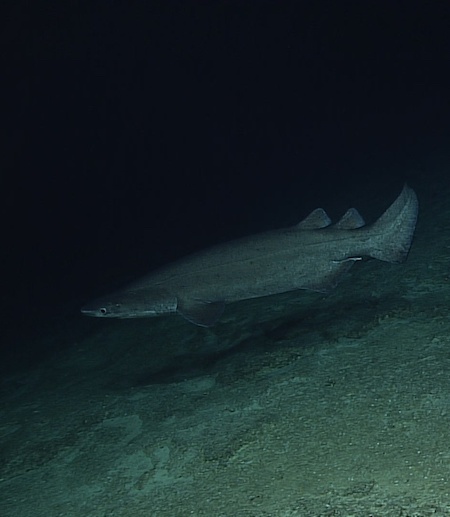
Happy Marine Life Monday! The prickly shark (Echinorhinus cookei) is a large, sluggish shark that can grow to a length of about 13 feet. Because it is not very fast, scientists believe that it may use suction to help capture its prey. It feeds on fish, other sharks, octopus, and squid. It is aptly named for its thorn-like denticles, which are small toothlike projections on its skin! #SharkWeek (Photo Credit: NOAA/Ocean Exploration and Research. Image description: gray shark swimming underwater with a dark background.)

Scenic Saturday! What is your favorite scenic sanctuary spot to enjoy? We want to see NOAA’s Greater Farallones National Marine Sanctuary through your lens! The Get Into Your Sanctuary photo contest is open now through Labor Day Weekend. Visit hre https://sanctuaries.noaa.gov/photo-contest.html?fbclid=IwAR2ZVtzEqG_m_kzCp4sHCPYJgJqkftk24eOiDT4pwGMibA-Q02TR1jB-Jwshttps://sanctuaries.noaa.gov/photo-contest.html to learn how to enter. (Photo Credit: Robert Schwemmer, NOAA. Image description: rolling hills surrounding a body of water.)
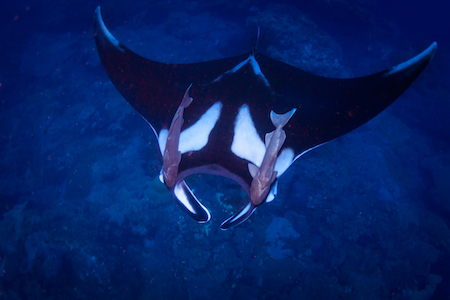
Create a caption! What might this manta ray or remoras in NOAA’s Flower Garden Banks National Marine Sanctuary have to say? (Photo Credit: Beata Lerman. Image description: manta ray from above with two remoras on either side of its body.)
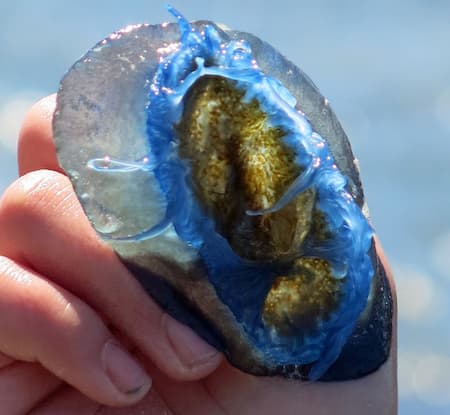
Farallones Field Notes: If you spy a splash of cobalt blue while walking along the beach, chances are you’ve found a “By the Wind Sailor” or Velella velella. With a blue body and a clear stiff sail, the Velella velella free floats on the ocean’s surface, its sail catching the wind to propel it across the water. This little jelly has tentacles that extend down and catch plankton as it sails. When the wind shifts you can find them stranded in the sand during your beach explorations. (Photo Credit: Margaret Farley, Farallones Volunteer Naturalist. Image description: view of a Velella velella from the top and bottom showing its bright blue body, clear sail, and tentacles.)
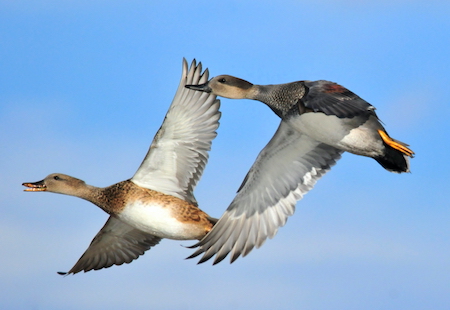
Happy Marine Life Monday! Gadwall (Mareca strepera) are not as flashy as other duck species. Both males and females have a subdued brown coloring, although if you look closely they have intricate patterns vs. the streaked or spotted plumage of some other ducks. During the breeding season females will lay an egg a day for 7-12 days. During this time they eat more invertebrates to meet their high protein demands and animals may account for up to 50% of their diet. In comparison, during winter months animals usually only account for about 5% of their diet. These dabbling ducks are even known to snatch food from other ducks as they surface from a dive! (Photo Credit: Tom Koerner, USFWS. Image description: two ducks with white bellies and brown coloring flying against a bright blue sky.)
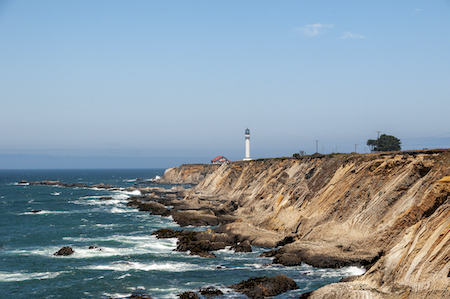
Scenic Saturday! What is your favorite scenic sanctuary spot to enjoy? Do you know where this beautiful photo was taken? (Photo Credit: Robert Schwemmer, NOAA. Image description: rocky point with a lighthouse and red roofed building.)

Create a caption! What might this tiger shark in Hawaiian Islands Humpback Whale National Marine Sanctuary have to say? (Photo Credit: Ed Lyman, NOAA. Image description: close up view of a shark underwater facing the camera with a small boat at the surface above.)
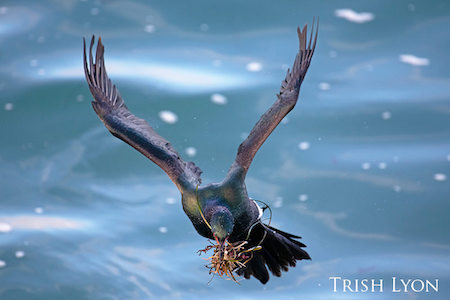
Welcome to Winged Wednesday! The waters of Greater Farallones National Marine Sanctuary are home to 13 breeding species of seabirds and we’re going to introduce you to all of them and their seabird ‘superpower’. Next up, the pelagic cormorant. If pelagic cormorants had a superpower it would be rocket launching! These small and slender seabirds are the smallest of the three cormorants found in the sanctuary. Due to their size they can spring straight up out of the water into the air and fly, rather than needing to run across the water’s surface to get speed for takeoff. To learn more about California seabirds and what Greater Farallones National Marine Sanctuary is doing to help seabirds thrive, visit http://farallones.noaa.gov/eco/seabird/ #SeabirdSuperpowers (Photo Credit: Trish Lyon, NOAA/MBNMS. Image description: black bird with wings in a v shape flying over the ocean with seaweed in its beak.)

Happy Marine Life Monday! Hilton's Phidiana (Phidiana hiltoni) is a shell-less mollusk known as a nudibranch. It reaches a maximum length of about 2 inches and is known to exhibit more aggressive behavior, biting and fighting with other nudibranchs. It has had a limited range from central California to Baja California, but in more recent years its range has extended north and it is now spotted north of San Francisco. (Photo Credit: Steve Lonhart, NOAA/MBNMS. Image description: sea slug with white body and spiny appendages that are brown, orange, and red covering most of its body.)
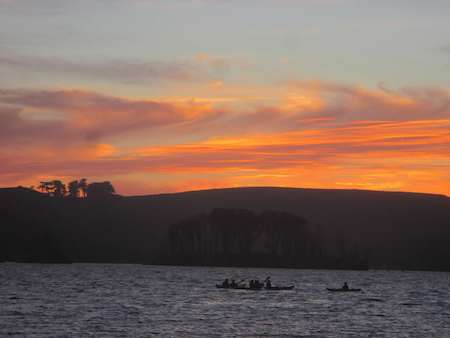
Scenic Saturday! What is your favorite scenic sanctuary spot to enjoy? Do you know where this beautiful photo was taken? (Photo Credit: Sara Heintzelman, NOAA. Image description: dark silhouettes of kayakers on the water at sunset with dark hills and trees and a bright orange and pink sky.)
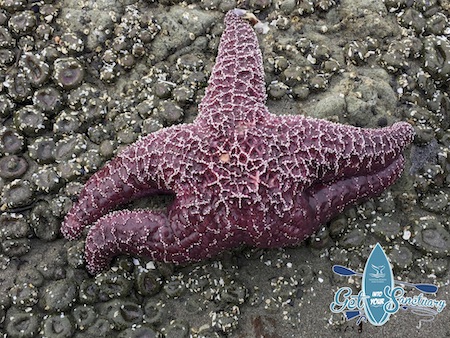
Create a caption! What might this ochre star in NOAA's Olympic Coast National Marine Sanctuary have to say? We want to see the national marine sanctuaries through your lens! The Get Into Your Sanctuary photo contest is open now through Labor Day Weekend. Visit https://sanctuaries.noaa.gov/photo-contest.html to learn how to enter. (Photo Credit: Kate Thompson, NOAA. Image description: purple sea star with white dots attached to a rock covered in small anemones.)
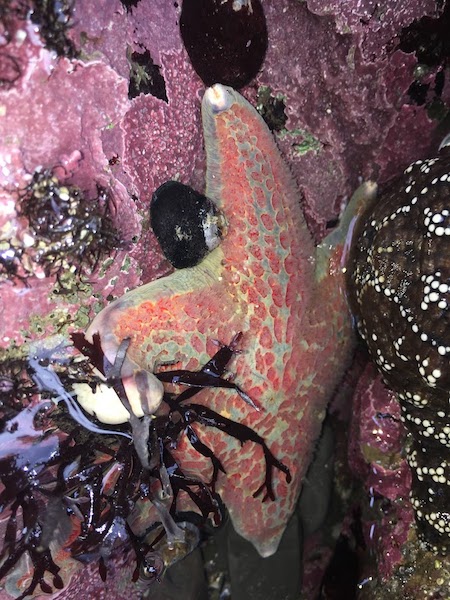
Farallones Field Notes: Look for these brightly-colored sea stars while you're exploring pools in the rocky intertidal zone this summer! Their common name is leather star, but they've also been nicknamed "garlic starfish'' due to the garlicky-scented chemical they produce. (Photo Credit: Kelly DeForest, Farallones Volunteer Naturalist. Image description: Close-up of a leather star in a rock crevice surrounded by pink encrusting coralline algae, a black turban snail, and an ochre star.)
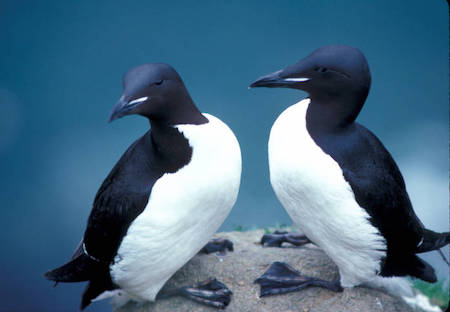
Happy Marine Life Monday! Thick-billed murres (Uria lomvia) are among the deepest diving seabirds, regularly diving 300 feet deep and sometimes even as deep as 600 feet! They nest on cliffs along the ocean in the Arctic. In Greater Farallones National Marine Sanctuary, common murres are a common sight, but the similar looking thick-billed murre has occasionally been spotted off the California coast as well. Like the common murre, thick-billed murres sport the black and white tuxedo coloring that leads them to be mistaken for penguins, however unlike penguins both murre species are very capable fliers! (Photo credit: Art Sowls/USFWS. Image description: two birds with white chests and black heads and backs standing on a rock.)
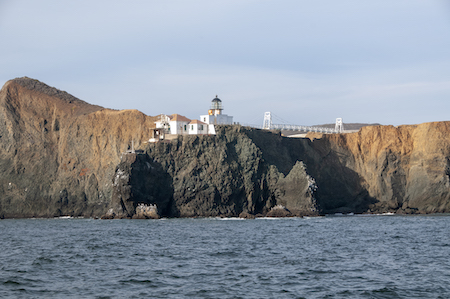
Scenic Saturday! What is your favorite scenic sanctuary spot to enjoy? Do you know where this beautiful photo was taken? (Photo Credit: Robert Schwemmer, NOAA. Image description: view from the ocean of a rocky point with a lighthouse and a bridge.)
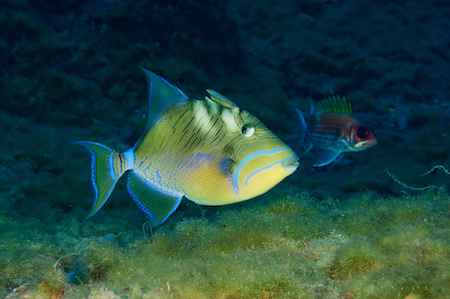
Create a caption! What might this queen triggerfish in NOAA's Flower Garden Banks National Marine Sanctuary have to say? (Photo Credit: G.P. Schmahl, NOAA. Image description: yellow fish with bright blue markings looking sideways with a red and yellow fish behind it.)
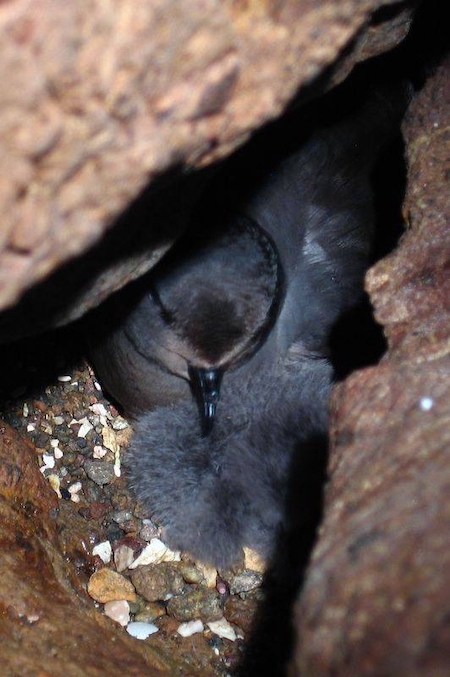
Welcome to Winged Wednesday! The waters of Greater Farallones National Marine Sanctuary are home to 13 breeding species of seabirds and we’re going to introduce you to all of them and their seabird ‘superpower’. Next up, the ashy storm-petrel: If ashy storm-petrels had a superpower it would be teleportation! These nocturnal, pint-size seabirds are among the world’s most difficult seabirds to spot because they nest deep in crevices and only come out at night. This allows them to seemingly teleport from their nests out to the safety of the open ocean to hunt for squid, fish, and krill to eat. Why is teleportation a superpower? It keeps them safe from predators and cuts down on their chances of leading them back to their eggs or young! To learn more about California seabirds and what Greater Farallones National Marine Sanctuary is doing to help seabirds thrive, visit http://farallones.noaa.gov/eco/seabird/ (Photo Credit: NPS. Image description: small gray bird with a black beak and a fluffy chick tucked inside a rocky crevice.)
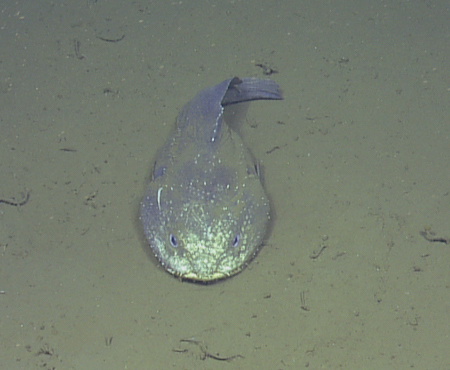
Happy Marine Life Monday! Blob sculpins (Psychrolutes phrictus) are a deep sea species, found at depths of 1,600-9,200 feet in the northeastern Pacific Ocean. They can grow to lengths of 28 inches. Aggregations of blob sculpins brooding their eggs have been spotted with ROVs (remotely operated vehicles). The adults guard the nests of eggs, protecting them from predators and keeping them free of sediment. (Photo Credit: OET/NOAA. Image description: a grayish fish with a flattened appearance and rounded head sitting on the seafloor.)
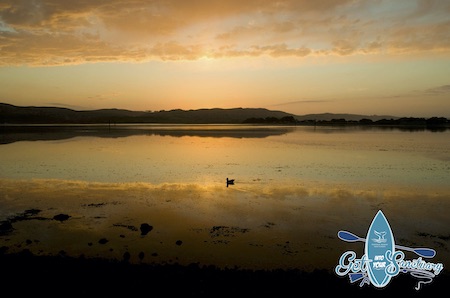
Scenic Saturday! What is your favorite scenic sanctuary spot to enjoy? We want to see NOAA’s Greater Farallones National Marine Sanctuary through your lens! The Get Into Your Sanctuary photo contest is open now through Labor Day Weekend. Visit https://sanctuaries.noaa.gov/photo-contest.html to learn how to enter. (Photo Credit: Robert Schwemmer, NOAA. Image description: warm sunrise colors in the sky and reflecting on the still water with rolling hills in the background.)
Hello from sea! These Pacific white-sided dolphins were spotted from the R/V Fulmar during day one of the ACCESS (Applied California Current Ecosystem Studies) cruise. The team will be conducting surveys of birds and mammals, taking krill samples, and deploying drifting acoustic arrays to record the sounds of baleen and beaked whales. (Video: Shannon Rankin, ONMS/Point Blue/ACCESS) ACCESS Oceans NOAA's Greater Farallones National Marine Sanctuary NOAA's Cordell Bank National Marine Sanctuary Point Blue Conservation Science *Note: this cruise was conducted under all CDC and CA state and local COVID-19 prevention requirements.
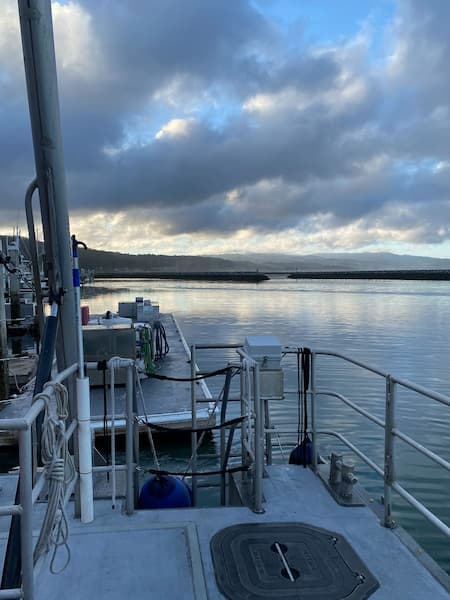
Back to the ocean! After over a year hiatus due to COVID, the at sea monitoring program ACCESS (Applied California Current Ecosystem Studies) is resuming this week. In addition to observations of birds and mammals and krill sampling; a set of drifting acoustic arrays will be deployed (equipment seen in picture) on the western edges of the sanctuaries over the deepest waters. These arrays will record the sounds of baleen and beaked whales. In four to six weeks, the arrays will be retrieved and our colleagues at National Marine Fisheries Service will study the recordings and identify the vocalizations of deep diving whales that we normally do not detect during our ACCESS surveys. Learn more about ACCESS: https://farallones.noaa.gov/science/access.html ACCESS Oceans Point Blue Conservation Science NOAA's Cordell Bank National Marine Sanctuary (Photo Credit: J. Roletto, NOAA/GFNMS/Pt Blue/ACCESS. Image descriptions: View from a boat of a cloudy sky above calm water and hills in the background. Three red round balls attached to long silver metal poles, three red boxes are on a black mat on the deck of a boat. One man and one woman are looking down at the round balls on the deck of a boat.)
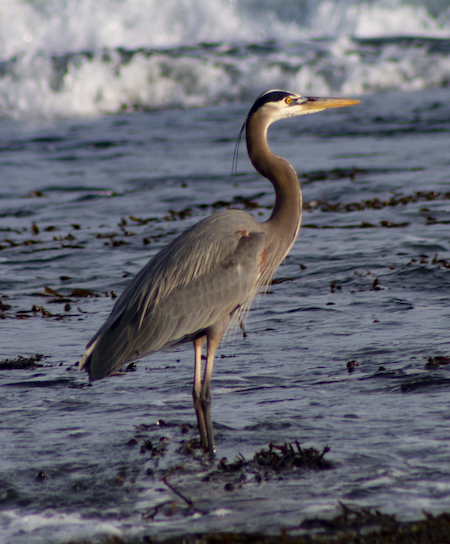
Farallones Field Notes: If you’re lucky, you may spot this fearless hunter- the great blue heron- as it wades slowly through the intertidal. It will stand tall and unmoving, like a statue, until it quickly strikes its prey. Great blue herons have special patches of powder down feathers on their chest. They'll rake their foot through the feathers and use the powder almost like a washcloth to remove fish slime and oils as they preen their feathers. Photo Credit: Margaret Farley, Farallones Volunteer Naturalist. Image description: tall, gray bird, with long legs, a long beak, and black feathers trailing off of its head standing in shallow water at the ocean’s edge.)
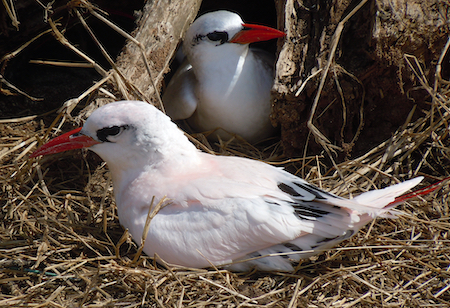
Happy Marine Life Monday! Red-tailed tropicbirds (Phaethon rubricauda) resemble terns at first glance. However, as their name implies, they are usually found in the tropics and only make a rare appearance in Greater Farallones National Marine Sanctuary. The males and females have similar appearances with white plumage, a black mask, a red bill, and the adults have long, thin, red tail feathers that look like streamers. These plunge divers make steep dives from 20-160 feet in the air, straight into the water to feed on fish and squid. (Photo Credit: Noah Kahn, USFWS. Image description: two white birds with red bills and black feathers around their eyes sitting among dried grasses and wood.)

Welcome to Winged Wednesday! The waters of Greater Farallones National Marine Sanctuary are home to 13 breeding species of seabirds and we’re going to introduce you to all of them and their seabird ‘superpower’. Next up, the California gull: If California gulls had a superpower it would be voracious foraging! These gulls are opportunistic feeders who forage for food anywhere they can find it; from coastal mudflats, estuaries, deltas, and beaches, to inland scrublands, meadows, and even farms and garbage dumps. They even eat while walking, wading, swimming, or flying! To learn more about California seabirds and what Greater Farallones National Marine Sanctuary is doing to help seabirds thrive, visit http://farallones.noaa.gov/eco/seabird/ #SeabirdSuperpower (Photo: Claire Fackler, NOAA/CINMS. Image description: adult gull with gray back, white head and chest, yellow beak with red spot sitting on a cliff edge with a gray speckled chick standing next to it.)
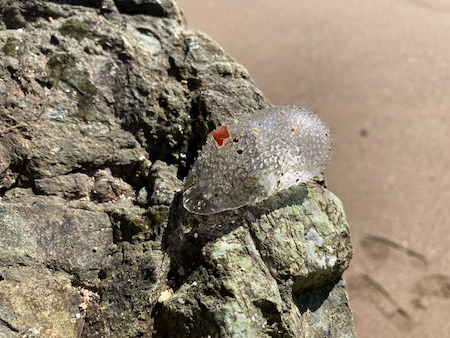
Happy Marine Life Monday! Spectacular sea butterflies (Corolla spectabilis) are pelagic mollusks, in a group known as pteropods. These sea snails spend their lives floating and swimming through the ocean rather than crawling along the shoreline like many other sea snails. Instead of the typical hard shell seen on terrestrial snails and other types of marine snails, spectacular sea butterflies have a gelatinous shell-like structure called a pseudoconch (which is pictured here after the sea butterfly washed up on the beach). They are holoplankton, plankton that stay plankton their entire lives vs. developing into a creature that is no longer plankton. (Photo Credit: Steve Lonhart/NOAA. Image description: rock with a colorless, textured creature resembling a slug on a rock.)
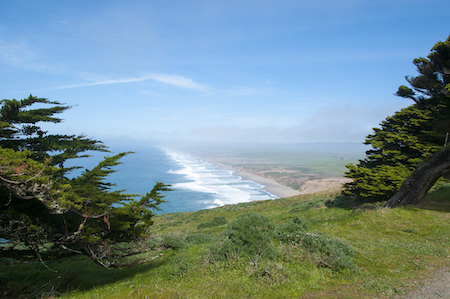
Scenic Saturday! What is your favorite scenic sanctuary spot to enjoy? Do you know where this beautiful photo was taken? (Photo Credit: Robert Schwemmer, NOAA. Image description: view from bluffs of a long, wide beach with flat fields leading up to it and waves rolling into shore.)
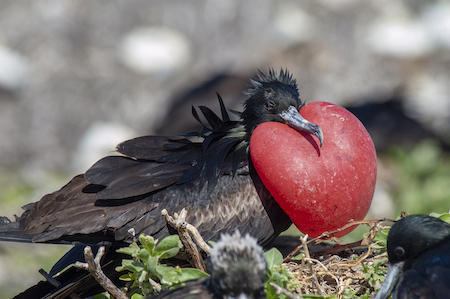
Create a caption! What might this magnificent frigate bird in Papahānaumokuākea Marine National Monument have to say? (Photo Credit: Robert Schwemmer, NOAA. Image description: black bird with spiky feathers on its head and an inflated red pouch under its beak.)
Farallones Field Notes: Harbor seals come ashore to rest and warm up. Pupping season takes place from March to June, and female harbor seals come to shore to give birth and nurse their young. See a seal pup on the beach? Mom could be feeding nearby. Love seals from afar (300 ft.) & keep pets on-leash; disturbance can be fatal. Respecting distance helps them survive! Do you know how much a harbor seal pup weighs at birth? (Video Credit: Jahmal White, Farallones Volunteer Naturalist. Description: A group of harbor seals resting on the beach.)
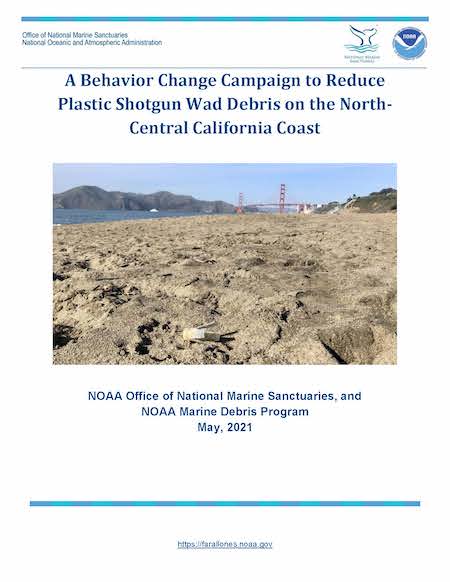
Did you know one of the most commonly found plastic debris items surveyed across Greater Farallones National Marine Sanctuary beaches are shotgun wads? We are excited to share a new report, in partnership with @NOAAMarineDebris, @Farallones, @NOAAOfficeofNationalMarineSanctuaries that shares recommendations to reduce shotgun wad debris by partnering with hunting reserves and hunters to retrieve and properly dispose of them. Read the report and learn more about this exciting project! Shotgun Wad Debris Reduction Project
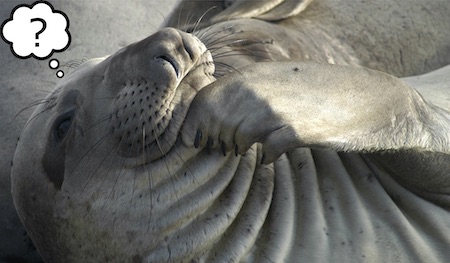
Tuesday Trivia Time! Building on last week’s question, which of the following federally listed threatened and endangered marine mammal species can be found in Greater Farallones National Marine Sanctuary?
(Photo Credit: Robert Schwemmer, NOAA. Image description: elephant seal with a flipper to its chin and a thought bubble photoshopped over its head.)
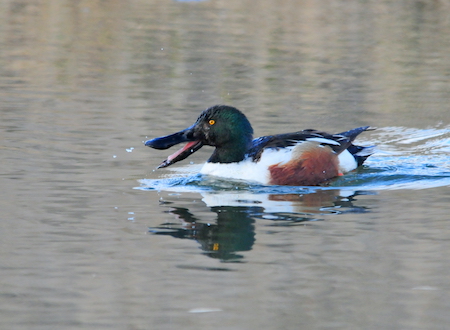
Happy Marine Life Monday! Northern shovelers (Spatula clypeata) are dabbling ducks with very distinct, spoon-shaped bills. They swing these bills side-to-side through the water and use the comblike projections which run along the edge of their bills to help filter small food particles from the water. When northern shovelers are scared off their nests, they defecate on their eggs in an attempt to deter predators! (Photo Credit: Tom Koerner/USFWS. Image description: duck with a white belly, cinnamon feathers on its side, dark back, and a green head with an open black bill sitting on the surface of the water.)
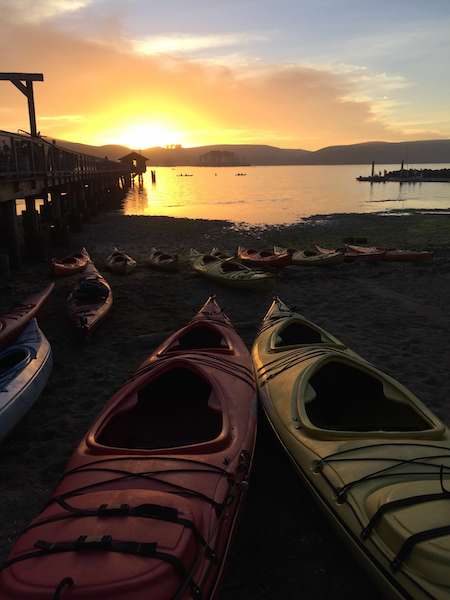
Scenic Saturday! What is your favorite scenic sanctuary spot to enjoy? Do you know where this beautiful photo was taken? (Photo Credit: Sara Heintzelman, NOAA. Image description: colorful empty kayaks on a beach at the water’s edge with a pier to the left and hills in the background at sunset.)

Create a caption! What might this sea otter in NOAA’s Monterey Bay National Marine Sanctuary have to say? (Photo Credit: Douglas Croft. Image description: sea otter floating on its back in the water with a large crab on its stomach and grasped in its paws.)
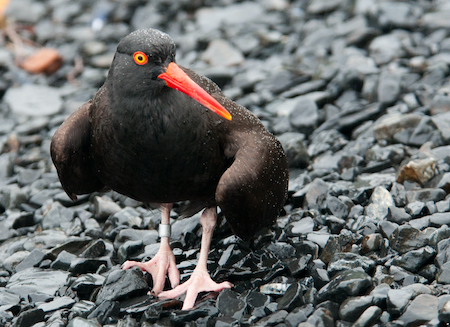
Welcome to Winged Wednesday! The waters of Greater Farallones National Marine Sanctuary are home to 13 breeding species of seabirds and we’re going to introduce you to all of them and their seabird ‘superpower’. Next up, the black oystercatcher: If black oystercatchers had a superpower it would be slicing and dicing! With their sharp beaks, oystercatchers can stab and slice open the strong muscles that hold limpets and mussels together and quickly pry them open. This superpower makes them skillful intertidal foragers, able to pick and pull food from a variety of rocky sources. To learn more about California seabirds and what Greater Farallones National Marine Sanctuary is doing to help seabirds thrive, visit http://farallones.noaa.gov/eco/seabird/ #SeabirdSuperPowers (Photo Credit: Kent Miller, NPS. Image description: black bird with a bright red beak and a red circle around its eye standing on a rocky gravel.)

Tuesday Trivia Time! How many federally listed threatened and endangered marine mammal species can be found in Greater Farallones National Marine Sanctuary? (Photo Credit: Robert Schwemmer, NOAA. Image description: elephant seal with a flipper to its chin and a thought bubble photoshopped over its head.)

Happy Marine Life Monday! Kelp bass (Paralabrax clathratus) may look pretty similar to some rockfish species, but they lack the spines found on rockfish. These slow growing fish can reach a maximum length of 28 inches, but it takes them 4-6 years to grow to about 12 inches, and a 24 inch fish could be more than 20 years old! Kelp bass are pelagic spawners, meaning that large groups aggregate in the middle of the water column to fertilize eggs. They prey on smaller fish by launching sneak attacks from the cover of kelp blades, and in turn are preyed upon by birds when they are young, and eaten by larger fish as they reach adult size. (Photo Credit: Chad King/NOAA. Image description: fish with mottled white and brown coloring underwater above kelp and with rocky reef covered in colorful algae.)

Scenic Saturday! What is your favorite scenic sanctuary spot to enjoy? Do you know where this beautiful photo was taken? (Photo Credit: Robert Schwemmer, NOAA. Image description: water in the foreground with sunrise silhouetting a city skyline and bridge.)
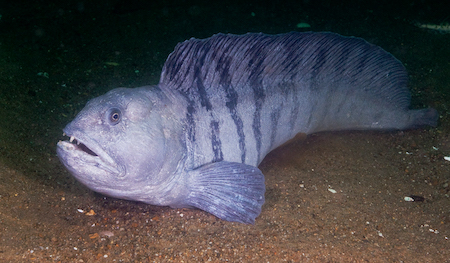
Create a caption! What might this wolf eel have to say? (Photo Credit: NOAA. Image description: elongated gray fish with a fin running the length of its back, darker gray stripes, and small teeth visible in its open mouth.)
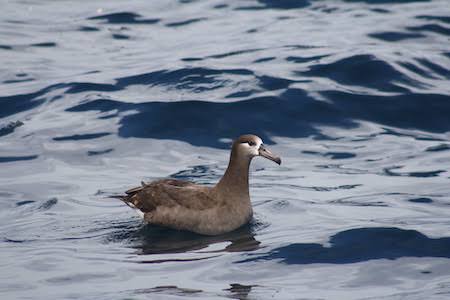
Farallones Field Notes: These large seabirds can be found off California year-round, but are more abundant during our upwelling season, April-September, when our coastal waters are most productive and full of yummy seabird food. During nesting season, they travel thousands of miles to Greater Farallones National Marine Sanctuary to find food and then fly back to Hawaii to feed their chicks. Can you name this species? (Photo Credit: Kelly DeForest, Farallones Volunteer Naturalist. Image description: gray bird with a pinkish-gray bill and white feathers around its beak and eye floating on the ocean.
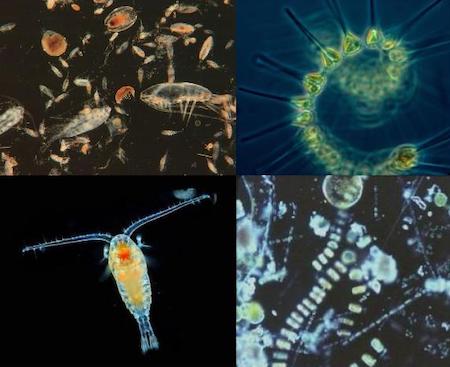
Tuesday Trivia Time! What are plankton? (Photo Credit: NOAA & NASA. Image description: collage of four photos showing small organisms of varying sizes with orange tint and green tint.)
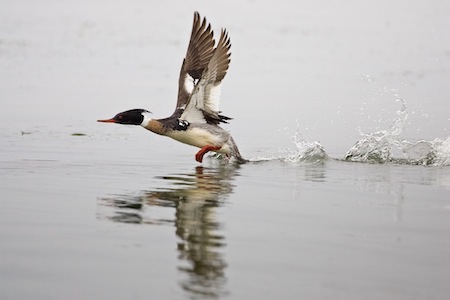
Happy Marine Life Monday! Red-breasted mergansers (Mergus serrator) are shaggy-headed diving ducks with some unique style and behaviors. They are sometimes called “sawbills” because their thin bills have small serrations which help them grip slippery fish. They eat 15-20 fish each day and can sometimes be spotted swimming with their eyes just below the water’s surface, as if they were snorkeling, as they keep an eye out for their next meal! (Photo Credit: Rinys Baak/USFWS. Image description: bird with wings raised running across the surface of the water.)
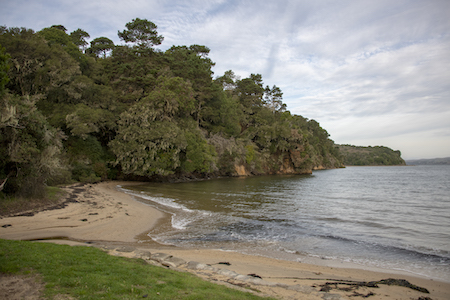
Scenic Saturday! What is your favorite scenic sanctuary spot to enjoy? Do you know where this beautiful photo was taken? (Photo Credit: Robert Schwemmer, NOAA. Image description: a sandy cove tucked among forested shoreline along the water.)
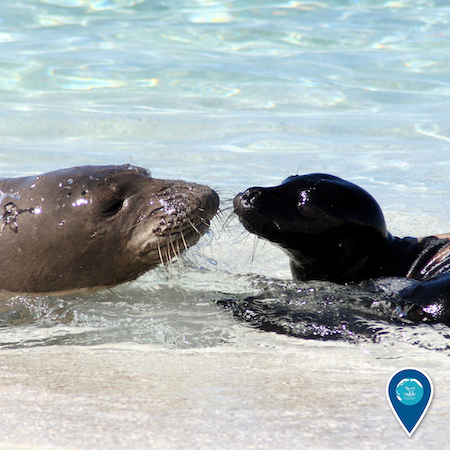
Create a caption! What might this mom and pup monk seal in Papahānaumokuākea Marine National Monument be saying to each other? (Photo Credit: NOAA. Image description: mom and pup monk seal nose to nose in shallow water.)
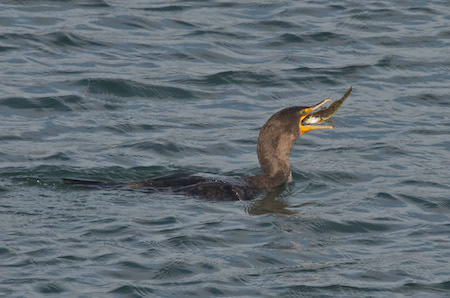
Welcome to Winged Wednesday! The waters of Greater Farallones National Marine Sanctuary are home to 13 breeding species of seabirds and we’re going to introduce you to all of them and their seabird ‘superpower’. Next up, the double-crested cormorant! If double-crested cormorants had a superpower it would be getting waterlogged! Does that not sound like a superpower? Get this: because they don’t have fully waterproof feathers, they sink faster and more efficiently when they dive, and are some of the deepest diving birds around! Their superpower keeps them from floating on the surface and gives them the ability to masterfully catch fish! To learn more about California seabirds and what Greater Farallones National Marine Sanctuary is doing to help seabirds thrive, visit http://farallones.noaa.gov/eco/seabird/ (Photo Credit: Peter Pearsall/USFWS. Image description: brownish black bird with a yellow beak sitting on the surface of the water with a large fish in its open beak.)
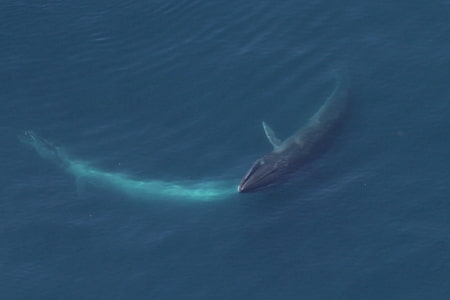
Tuesday Trivia Time! What is the lifespan of a sei whale? (Photo Credit: Christin Khan/NOAA Northeast Fisheries Science Center. Image description: a sei whale feeding underwater in a sideways position with a streak of white in front of it.)
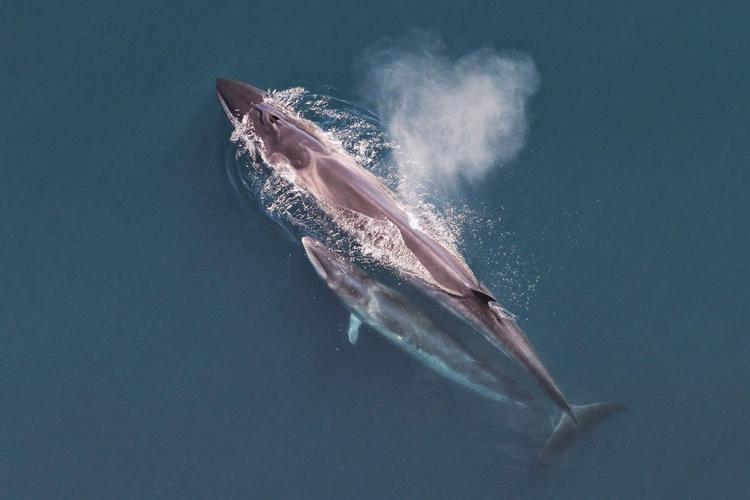
Happy Marine Life Monday! Sei whales (Balaenoptera borealis) have long, sleek bodies and can reach lengths of 40-60 feet. These streamlined whales are fast swimmers, reaching speeds of 34 miles per hour. While sei whales are found in subtropical, temperate, and subpolar waters around the world they have less predictable movement patterns than other species of whales making them hard to spot. In addition, these stealthy whales simply sink below the surface when starting a dive, instead of displaying the typical arched back and fluke that we see from many whale species. These baleen whales eat up to 2,000 pounds of food a day, feeding on copepods, krill, small fish, and squid. (Photo Credit: NOAA Fisheries. Image description: aerial view of adult and juvenile sei whales swimming side by side.)
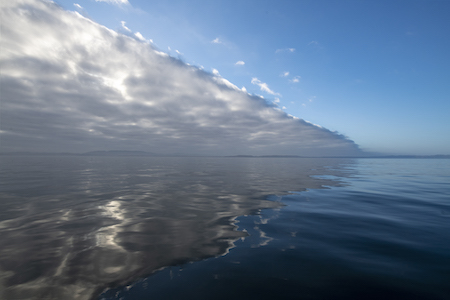
Scenic Saturday! What is your favorite scenic sanctuary spot to enjoy? Do you know where this beautiful photo was taken? (Photo Credit: Robert Schwemmer, NOAA. Image description: clouds filling half the sky and reflecting on the water.)
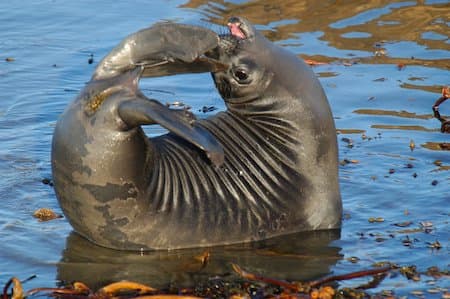
Create a caption! What might this elephant seal be thinking? (Photo Credit: NOAA. Image description: Young elephant seal doing a backbend on the beach so its tail and face are touching.)
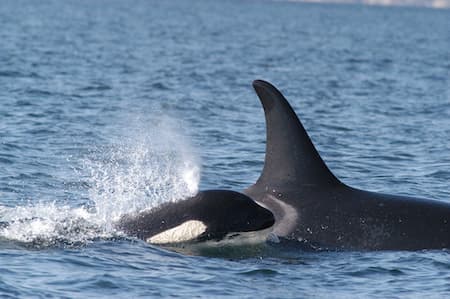
SLIPSTREAM: This killer whale calf sticks close to Mom, riding her wake to keep up. Fish-eating Southern Resident killer whales visit Greater Farallones National Marine Sanctuary in winter to forage. Back home in the Salish Sea 900 mi. away, chinook salmon has all but disappeared. Hope lies in the waters of Greater Farallones National Marine Sanctuary. (Photo Credit: NOAA. Image description: baby killer whale surfacing from water and spouting next to mom with dorsal fin sticking out of the water.)
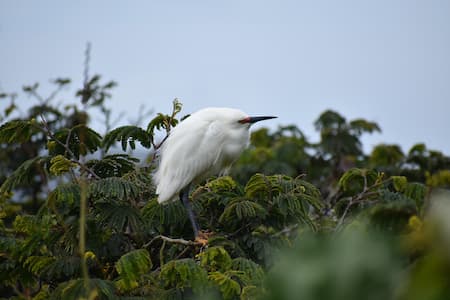
Tuesday Trivia Time! Two species we commonly spot in Greater Farallones National Marine Sanctuary are the snowy egret and the great egret. How do you tell the two apart? Which one is this? (Photo Credit: Sara Heintzelman, NOAA/GFNMS. Image description: white bird with a black beak and yellow feet perched in a treetop.)
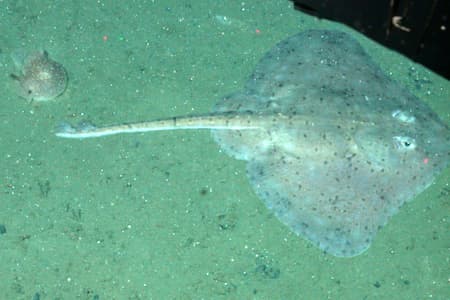
Happy Marine Life Monday! California skates (Raja inornata) are elasmobranchs, a group of fish with skeletons made of cartilage that includes sharks, rays, and skates. They are found from Canada to Baja California and spend most of their time in benthic (bottom) habitats at depths of 13m-1600m. They feed on small invertebrates, such as worms and shrimp, found on the seafloor or in the bottom sediment. They lay egg cases, nicknamed mermaid’s purses, for their oblong shape and unusual appearance. (Photo Credit: Kevin L. Stierhoff, NOAA, SWFSC. Image description: pale colored skate with speckles resting on seafloor.)

Scenic Saturday! What is your favorite scenic sanctuary spot to enjoy? Do you know where this beautiful photo was taken? (Photo Credit: Sara Heintzelman, NOAA/GFNMS. Image description: vibrant yellow and orange sunset in the sky and reflecting on water with a silhouetted hill and trees in the distance.)
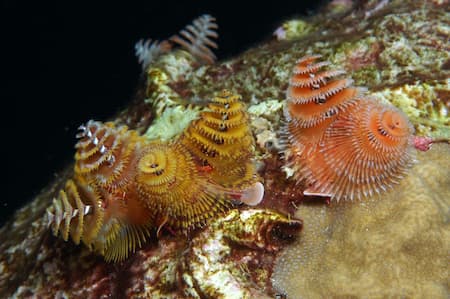
Create a caption! What might these Christmas tree worms be saying? (Photo Credit: G.P. Schmahl, NOAA. Image description: Colorful yellow and orange Christmas tree worms in clusters on a reef.)
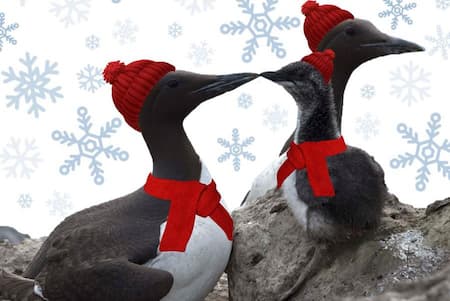
Welcome to Winged Wednesday! Happy Holidays from the seabirds of Greater Farallones National Marine Sanctuary! “Sea” you next year. To learn more about California seabirds and what Greater Farallones National Marine Sanctuary is doing to help seabirds thrive, visit http://farallones.noaa.gov/eco/seabird/ (Photo: Sarah Schoen, USGS. Image description: adult black and white murre touching beaks with murre chick with additional murre in the background, birds are wearing red hats and scarves.)
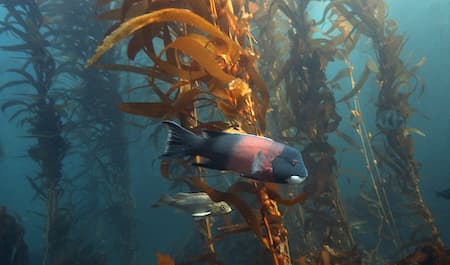
Tuesday Trivia Time! All California sheephead fish are born as females, how can this be? (Photo Credit: Robert Schwemmer, NOAA. Image description: a large black and red striped sheephead with a smaller tan fish in the background swim in a kelp forest underwater.)
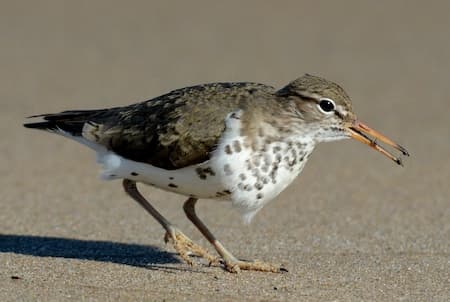
Happy Marine Life Monday! Spotted sandpipers (Actitis macularius) are small shorebirds with some distinct behaviors! They walk with a unique teeter from the time they hatch, bobbing their tails up and down almost constantly. Unlike most bird species, the females defend the territory and some are polyandrous (mating with multiple males during a season). Meanwhile, the males incubate the eggs and raise the young. (Photo Credit: Jim Hudgins, USFWS. Image description: small shorebird with a white chest, brown back and orange beak on a sandy beach.)
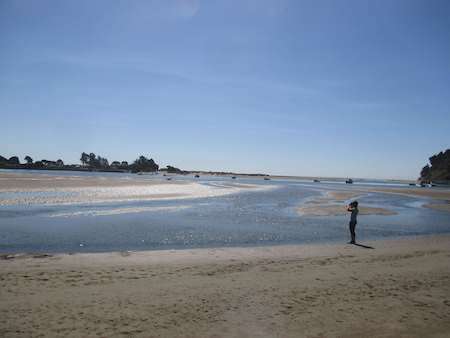
Scenic Saturday! What is your favorite scenic sanctuary spot to enjoy? Do you know where this beautiful photo was taken? (Photo Credit: Sara Heintzelman, NOAA/GFNMS. Image description: person standing at the water's edge on a sandy beach.)
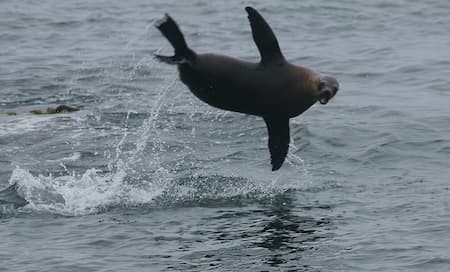
Create a caption! What do you think this California sea lion might have to say? (Photo Credit: Dru Devlin, NOAA. Image description: California sea lion jumping fully out of the water.)
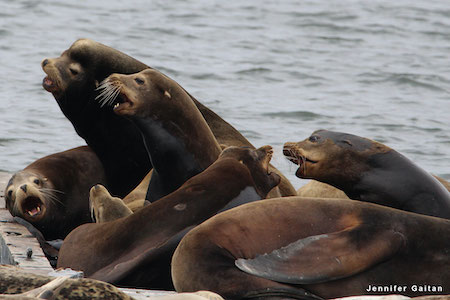
California seal lions-a-caroling! Perhaps this California sea lion septet is practicing for the holiday party talent show?! Guess which are the baritones; and which, the basso profundo? And what is their favorite vocal range? The BASS, of course! Find them thriving throughout their range and in Greater Farallones National Marine Sanctuary. (Photo Credit: Jennifer Gaitan, NOAA. Image description: group of California sea lions roaring on a dock.)
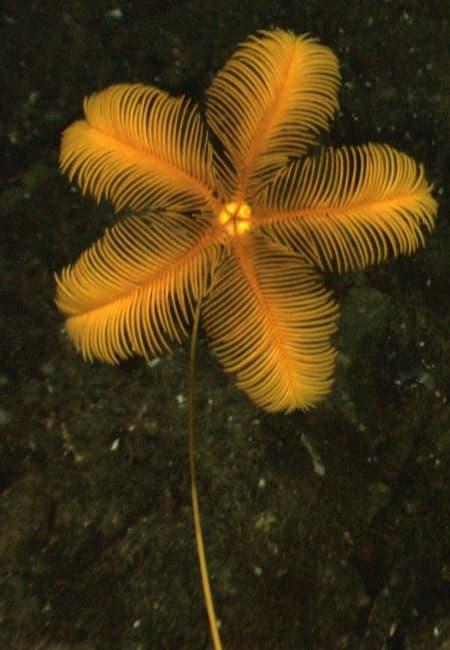
Tuesday Trivia Time! Plant or animal? (Photo Credit: NOAA Okeanos Explorer Program, INDEX-SATAL 2010. Image description: yellow sea lily with a stalk and 5 feathery branches with radial symmetry.)
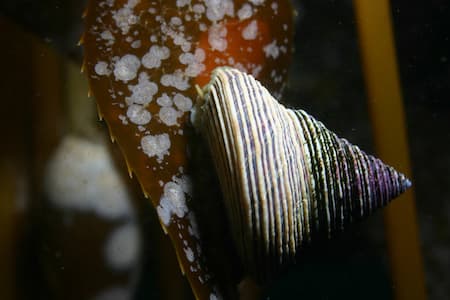
Happy Marine Life Monday! Channeled topsnails (Calliostoma canaliculatum) are small marine snails. When full grown, their shells are approximately .5 inch-1.5 inches across and tall. They are found in rocky areas or on kelp from Alaska to Baja California. They are omnivores that feed on algae (including kelp), bryozoans, and hydrozoa polyps (Photo Credit: Steve Lonhart, NOAA, MBNMS. Image description: white and purple conical snail on a piece of brown kelp.)
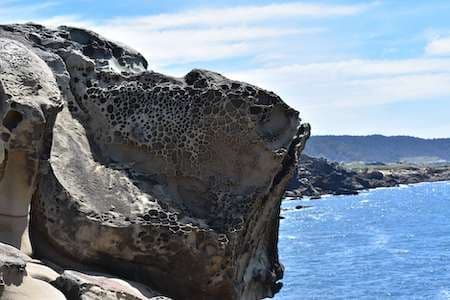
Scenic Saturday! What is your favorite scenic sanctuary spot to enjoy? Do you know where this beautiful photo was taken? Bonus points if you know what this cool rock formation is called! (Photo Credit: Sara Heintzelman, NOAA/GFNMS. Image description: rock with honeycomb pattern jutting out with ocean in the background.)

Create a caption! What might this flapjack octopus or rockfish have to say? (Photo Credit: OET, NOAA. Image description: rockfish and flapjack octopus huddled together next to a rock on the seafloor.)
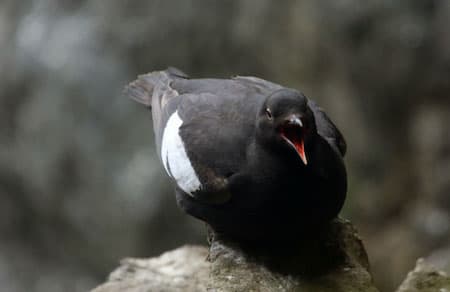
Welcome to Winged Wednesday! Pigeon guillemots put their sharp pointy beaks and claws to good use like a handy multi-tool. They cling to vertical rock faces, crack open mollusks, claw out burrows under rocks on offshore islands, and scrape sand and soil to form a small bed for their eggs. To learn more about California seabirds and what Greater Farallones National Marine Sanctuary is doing to help seabirds thrive, visit http://farallones.noaa.gov/eco/seabird/ (Photo: Peter Pearsall, USFWS. Image description: black bird with white patches and open beak standing on a rock.)
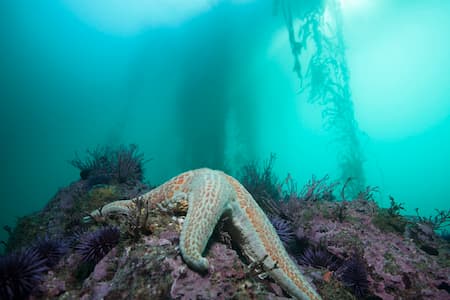
Tuesday Trivia Time! The leather star is known to have a unique smell, what does it smell like? (Photo Credit: Chad King, NOAA/MBNMS. Image description: blue and reddish sea star on a rock with purple urchins and kelp in the background underwater.)
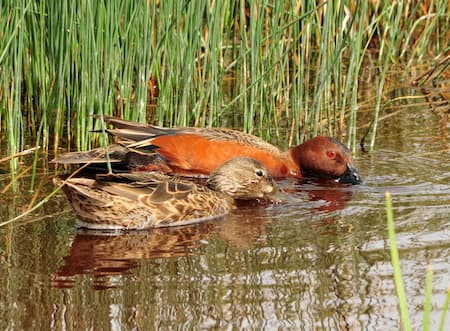
Happy Marine Life Monday! Cinnamon teal (Spatula cyanoptera) are most commonly seen in wetlands, dabbling at the surface for aquatic plants, insects, and zooplankton. Their non-breeding plumage is drab and makes them harder to spot; but by mid-winter, the males sport their striking cinnamon plumage. Unlike most ducks, cinnamon teal have separate breeding populations in North and South America. The female often places her nest among dead, matted marsh grasses so that it is hidden from all sides and from above; making it accessible only through tunnels. (Photo Credit: Tom Koerner, USFWS. Image description: two ducks dipping their beaks in the water with marsh plants behind them.)
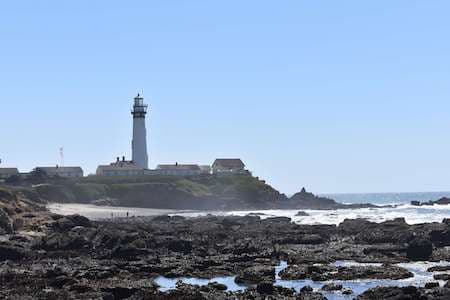
Scenic Saturday! What is your favorite scenic sanctuary spot to enjoy? Do you know where this beautiful photo was taken? (Photo Credit: Sara Heintzelman, NOAA/GFNMS. Image description: rocky tidepools with a lighthouse in the distance on a point.)
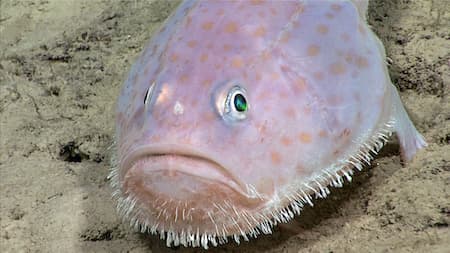
Create a caption! What do you think this toadfish is thinking?(Photo Credit: NOAA Office of Ocean Exploration and Research, Exploring Deep-sea Habitats off Puerto Rico and the U.S. Virgin Islands. Image description: close up of a toadfish sitting on the seafloor.)
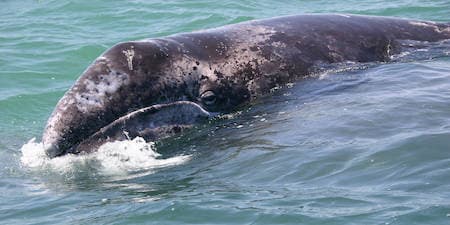
Around this time, most Arctic-feeding gray whales push through Alaska's Unimak Pass, headed south to breed. We're hopeful they will have fed sufficiently to build fatty energy stores to last through their fasting migration and breeding season. Polar ice melt has reduced their usual prey, but many are proving resilient. (Photo Credit: Marine Mammal Commission. Image description: gray whale head and back surfacing from the water.)
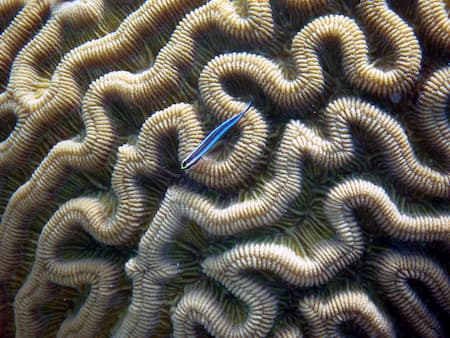
Tuesday Trivia Time! What is coral?
#CoralsWeek (Photo: NOAA CCMA Biogeography Team)

Happy Marine Life Monday! These colonial cup corals (Coenocyathus bowersi) are in the phylum cnidaria, which also includes anemones, jellies, and hard and soft corals. These corals do not have the zooxanthellae (symbiotic algae that photosynthesize and supply energy for the corals) that many corals have. Instead, they capture zooplankton to feed. #CoralsWeek (Photo: NOAA Southwest Fisheries Science Center, Advanced Survey Technologies Group)

Scenic Saturday! We are thankful for our national marine sanctuaries and the amazing ocean places they protect. What is your favorite scenic sanctuary spot to enjoy? Do you know where this beautiful photo was taken? (Photo Credit: Matt McIntosh, ONMS)
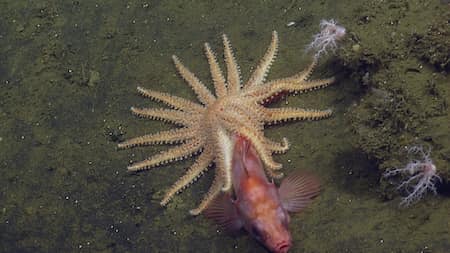
Create a caption! What would this sea star or rockfish have to say about this situation? (Photo Credit: OET/NOAA)
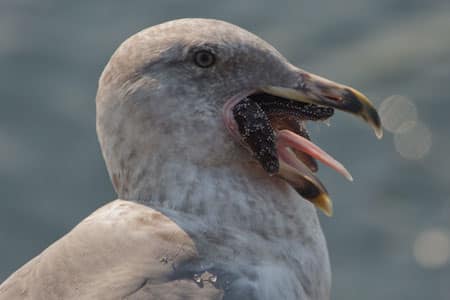
This Thanksgiving Winged Wednesday, let’s celebrate the gull! Gulls eat like it’s Thanksgiving every day of the year and they will eat just about anything. From gobbling live crabs, sea stars, and fish to opportunistic rodents, eggs, and even other birds; gulls snatch prey from air, water and land. They even unhinge their jaws to allow them to eat larger prey. To learn more about California seabirds and what Greater Farallones National Marine Sanctuary is doing to help seabirds thrive, visit http://farallones.noaa.gov/eco/seabird/ (Photo: Peter Pearsall USFWS)
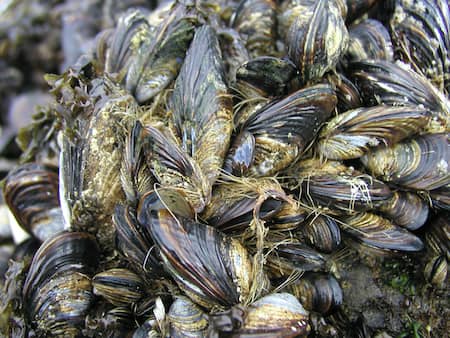
Tuesday Trivia Time! True or False: Mussels were part of early Thanksgiving menus? (Photo Credit: Steve Lonhart, NOAA/MBNMS)
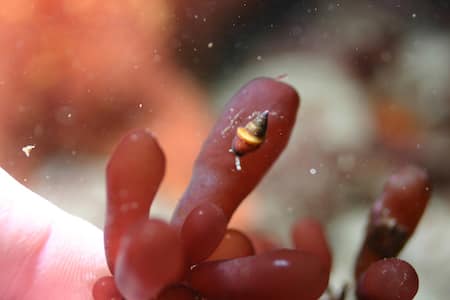
Happy Marine Life Monday! Carinate dove snails (Alia carinata) are very small marine snails; only reaching lengths of .25 to .5 inches when fully grown! They are found along the coast from Alaska to Baja California. They can vary widely in color, but carinate dove snails have smooth shells which helps differentiate them from some other types of dove snails that have fine vertical lines creating a more textured shell. These carnivores feed on worms, crustaceans, or other mollusks with its serrated radula. (Photo Credit: Steve Lonhart, NOAA/MBNMS)
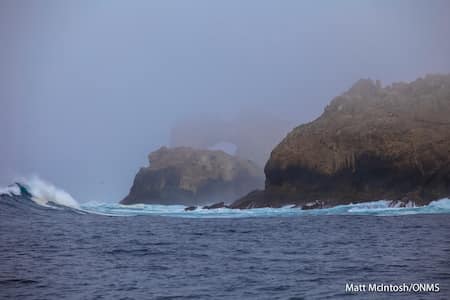
Scenic Saturday! What is your favorite scenic sanctuary spot to enjoy? Do you know where this beautiful photo was taken? (Photo Credit: Matt McIntosh, ONMS)
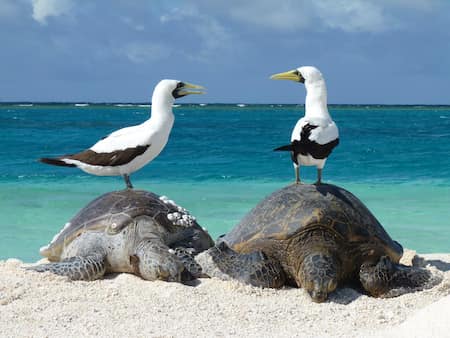
Create a caption! What are these masked boobies and green sea turtles in Papahānaumokuākea Marine National Monument saying? (Photo Credit: Mark Sullivan, NOAA)

Image from Virtual Humpback Whale Soirée this past weekend. (Photo Credit: Ed Lyman/NOAA Fisheries Permit #14682-38079)
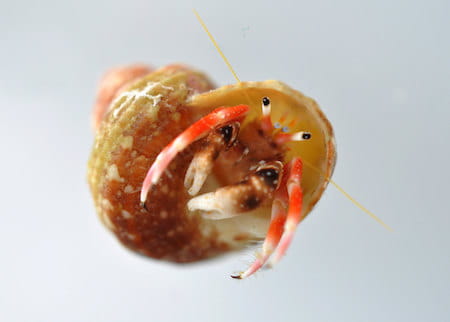
Tuesday Trivia Time! True or False: Do hermit crabs make their own shells? (Photo credit: NOAA)
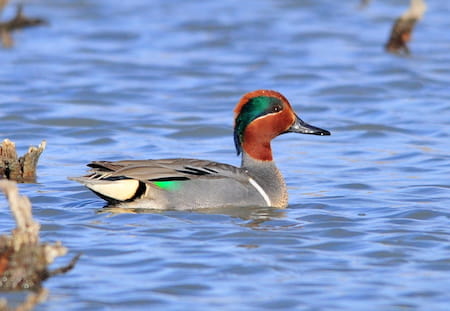
Happy Marine Life Monday! Green-winged teals (Anas crecca) are about the size of crow, which makes them the smallest dabbling ducks in North America. They are often seen with other dabbling duck species, but green-winged teals stand out because they are small, compact, and sit high on the water. They have a tiny comb-like structure along the inside of their bill that allows them to filter small food from the water and they mainly feed on aquatic invertebrates and seeds. (Photo Credit: Tom Koerner, USFWS)

Love whales? Love space? Love science? Join us tonight, November 14th at 7pm PST for an exciting event to delve into the research being done to understand how animal communication challenges our ideas of intelligence. Laurance Doyle, Ph.D, Research Scientist with SETI Institute, will share his studies of humpbacks to understand the communications that exist throughout Planet Earth and beyond. Full details: https://fb.me/e/8rd8ADBoc (Photo Credit: Ed Lyman/NOAA Fisheries Permit #14682-38079)
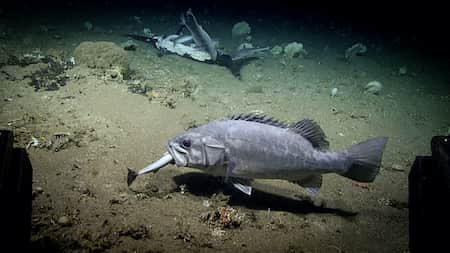
Create a caption! What would this grouper (or the shark it is eating) have to say?(Photo Credit: NOAA Office of Ocean Exploration and Research, Windows to the Deep 2019)
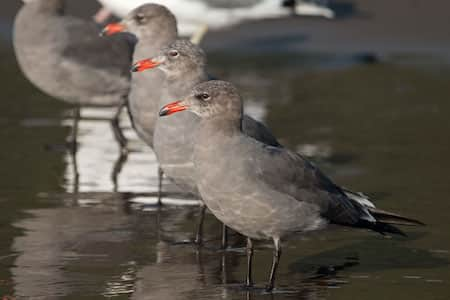
Welcome to Winged Wednesday! Got cold feet? You’ve got nothing on seabirds! Seabird feet can endure freezing temperatures due to some special adaptations. Their feet and legs are mostly tendons and bones, and don’t require the same amount of warmth as muscle. Also, their circulation system is organized in a special way where blood flow maximizes heat retention and minimizes energy use. To learn more about California seabirds and what Greater Farallones National Marine Sanctuary is doing to help seabirds thrive, visit http://farallones.noaa.gov/eco/seabird/ (Photo: Peter Pearsall, USFWS)
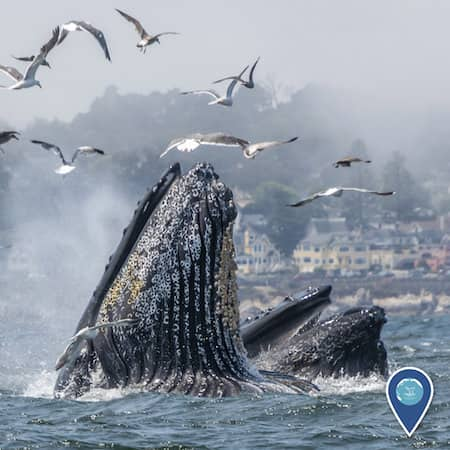
Tuesday Trivia Time! A humpback whale’s migration from summer feeding grounds to tropical mating and calving grounds is among the longest of any mammal. How far can their round-trip migration be? (Photo Credit: Douglas Croft)
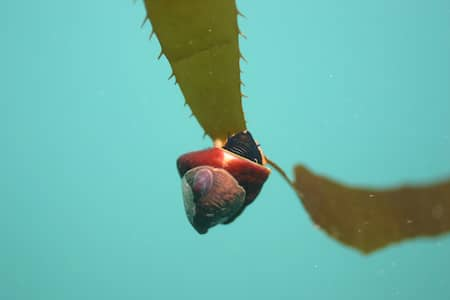
Happy Marine Life Monday! The brown turban snail (Tegula brunnea) has a reddish-brown conical shell that is often covered by encrusting algae (or hitchhikers such as the slipper snail seen on this one). It also has a distinctive black and orange foot, with a bright lime green line at the base of the shell. This herbivore feeds on algae and is often found on kelp, as seen here. Its empty shells are often repurposed as a home by hermit crabs; so if you see a brown turban snail scuttling quickly through the intertidal, chances are it isn’t a speedy snail at all, but a crab! (Photo Credit: Steve Lonhart, NOAA/MBNMS)
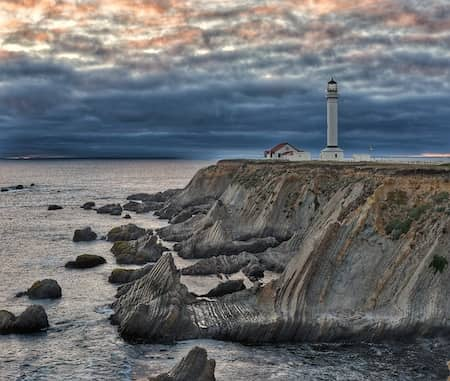
Explore your national marine sanctuaries with a virtual journey along Highway 1! Our next stop at the Point Arena Lighthouse near the northern limit of Greater Farallones National Marine Sanctuary, is our last stop on our virtual journey. The original lighthouse fell victim to the 1906 earthquake, but was re-built in 1908. Hike the bluff-top trails of Point Arena-Stornetta Lands overlooking the sanctuary. Take a guided tour to the top of the lighthouse for a spectacular 360-degree view. https://arcg.is/1DCbvi (Photo: Michael Beattie)
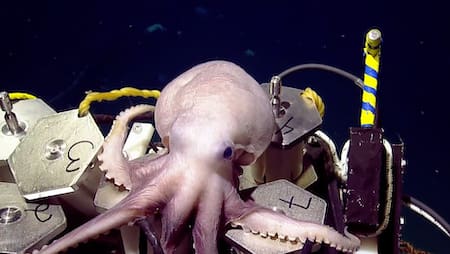
Create a caption for this octopus in NOAA’s Monterey Bay National Marine Sanctuary. (Photo Credit: OET/NOAA)

Humpback whales are among the most vocal whales in the world! These amazing mammals communicate through songs that can be heard thousands of miles away.
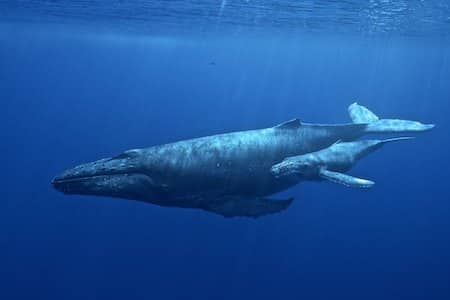
Tuesday Trivia Time! How do scientists identify individual humpback whales? (Photo Credit: Ed Lyman/NOAA Permit #14682)
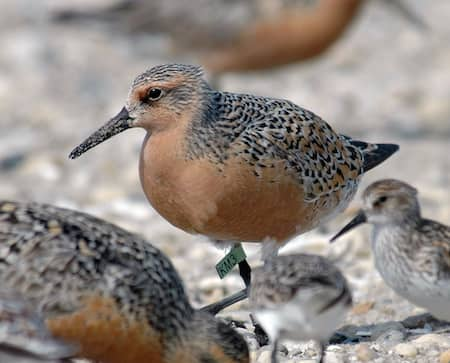
Happy Marine Life Monday! Red knots (Calidris canutus) are robin-sized sandpipers that can be spotted on sandy beaches and mudflats. They have bright terracotta coloring in summer and are gray and white the rest of the year. They use their bills to probe into the sand or mud for food, and while they can find food using their sense of sight, they also use their sense of touch to find invertebrates hiding below the surface. In fact, their bills have a specialized sensory organ that allows them to detect differences in pressure and locate clams or other invertebrates concealed in the sand or mud! (Photo: USFWS)

Explore your national marine sanctuaries with a virtual journey along Highway 1! Our next stop is Bowling Ball Beach at Schooner Gulch State Beach, famous for its round concretions strewn on the sand. These mineralized sandstone spheres were formed and emerged from Cenozoic mudstone over millions of years of creation and erosion. Visible only at minus tides, they form a natural “art installation” worth visiting. https://arcg.is/1KCmzK0 (Photo: Matt McIntosh, NOAA)
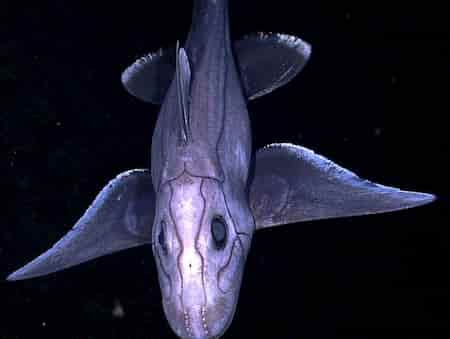
Create a caption for this deep sea chimaera! (Photo: NOAA Okeanos Explorer Program, INDEX-SATAL 2010)
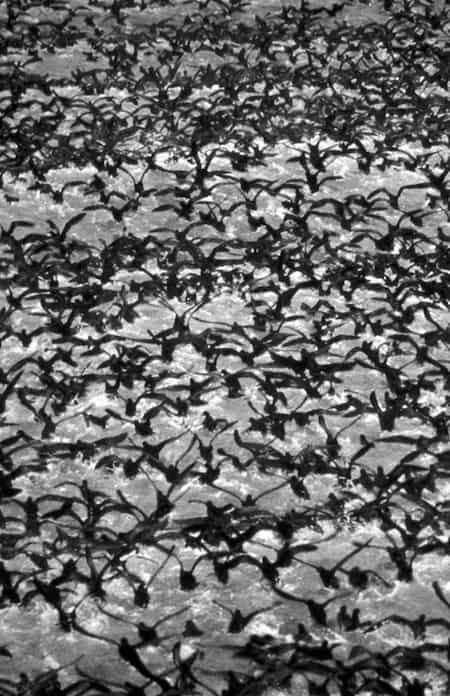
A spooky seabird story for your Halloween Winged Wednesday! If you see this photo and think of Alfred Hitchcock’s “The Birds”? You’re not wrong! On a dark August night in 1961 thousands of Sooty Shearwaters besieged the small town of Capitola, slamming into roofs, cutting power lines, even biting a resident. Sound familiar? “The Birds” was released in 1963! The full story is more 'whodunit' than horror. Turns out, plankton guts were full of a toxic algae that causes deadly domoic acid poisoning and odd behavior in seabirds. To learn more about California seabirds and what Greater Farallones National Marine Sanctuary is doing to help seabirds thrive, visit http://farallones.noaa.gov/eco/seabird/ (Photo: S. Morrell USFWS)
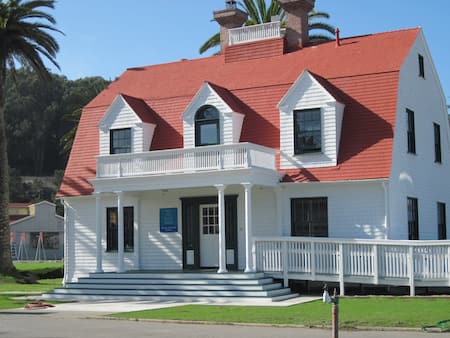
Our Ocean Climate Center and Program just turned 10! Over the last decade we have advanced climate understanding, science and adaptation in our region and beyond by publishing 9 reports, convening 7 working groups, holding 5 Ocean Climate Summits, and providing over 100 climate presentations and trainings all around the world! To learn more about Greater Farallones National Marine Sanctuary & Greater Farallones Association’s Ocean Climate Program, check out our story map! (Photo: NOAA)

Tuesday Trivia Time! Do spiders live in the ocean? (Photo: Image courtesy of the NOAA Office of Ocean Exploration and Research, 2017 Laulima O Ka Moana)
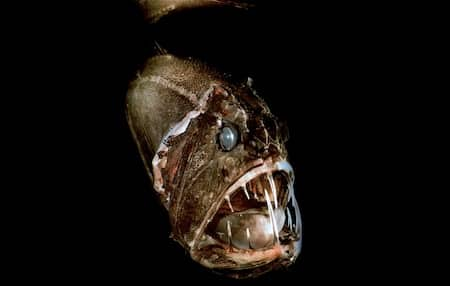
Happy Marine Life Monday! Are you still looking for Halloween inspiration? Look no further! The common fangtooth (Anoplogaster cornuta), is always dressed for Halloween. These fish are usually found at depths of 500-2,000 meters. They grow to lengths of about 7 inches and have a very distinct appearance with a large, bony head, a small eye, and mouth filled with sharp fangs! They feed on crustaceans when they are young and on other fish as they mature. In turn, they are preyed upon by larger fish such as albacore, tuna, and marlin. They sometimes swim solo, but are often found in small groups- talk about a spooky school! (Photo Credit: Jonathan Whitney, NOAA)
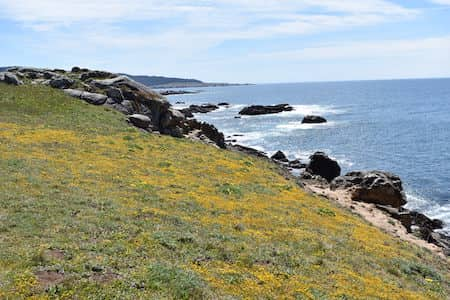
Explore your national marine sanctuaries with a virtual journey along Highway 1! Our next stop is Salt Point State Park. Along the park’s rugged coastline you will find 20 miles of hiking trails that take you past fields of wildflowers, coastal scrub, and breathtaking views. Gerstle Cove offers fantastic spots for camping, picnicking, hiking, and horseback riding. The marine reserve offers fishing and scuba diving. Be sure to check before you go for updates on fishing activities and regulations. Get Into Your Sanctuary (Photo: Sara Heintzelman, NOAA)
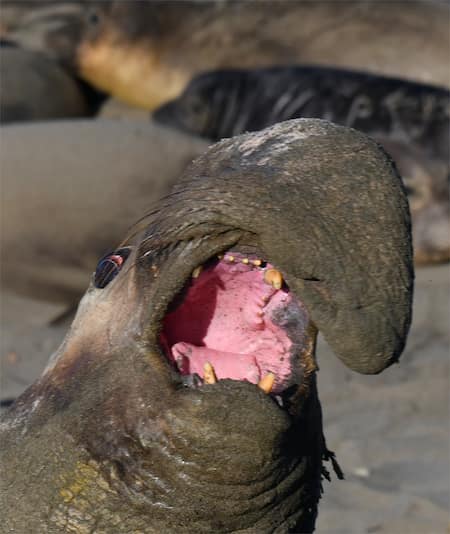
Create a caption for this northern elephant seal! (Photo Credit: Robert Schwemmer ONMS-NOAA)
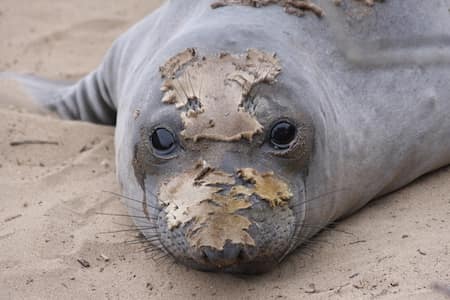
Fall marks a magical transition in our sanctuary. Winds weaken, waves subside, waters warm. The islands fall silent as post-breeding seabirds leave to forage at sea. Elephant seals haul out to grow new skin, and white sharks prowl the waters of Greater Farallones National Marine Sanctuary. (Photo: Frank Balthis, FWS)
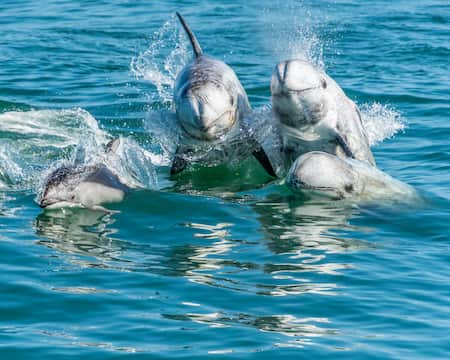
Tuesday Trivia Time! What is the difference between a whale and a dolphin? (Photo: Douglas Croft, taken under NOAA permit #20519)
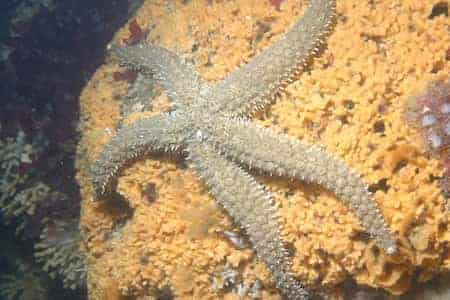
Happy Marine Life Monday! Velcro stars (Stylasterias forreri) are large sea stars that can grow to have a diameter of up to 39 inches. They are named velcro stars because they are sticky to the touch due to their pedicellariae (small pincer-shaped appendage on the surface of the star), which grip your skin when you touch them. The stars use these appendages for capturing food (including small fish!) as potential meals pass by and come in contact with the star. After grabbing a meal with their pedicellariae, the stars use their tube feet to pass the food to their mouths. They are also used for defense. Velcro stars will wrap their arms around an attacker and nip it thousands of times, often causing a retreat and allowing a successful escape for the star that was in a “sticky situation”! (Photo: Steve Lonhart, NOAA, MBNMS)
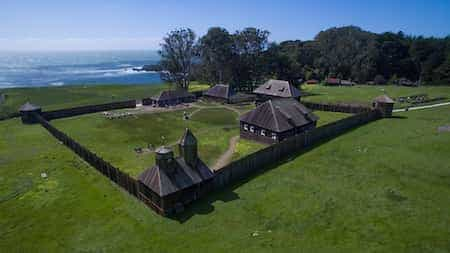
Explore your national marine sanctuaries with a virtual journey along Highway 1! Our next stop, overlooking the sanctuary, is the historic Fort Ross that reflects the Russian culture and architecture typical of this once-thriving 19th-century fur trade center and settlement. The Fort Ross Visitor Center displays tools and artifacts from earlier times. Ross Cove is the graveyard for the shipwreck Pomona and other ruins. https://arcg.is/11yvOb (Photo: Paul C. Miller)
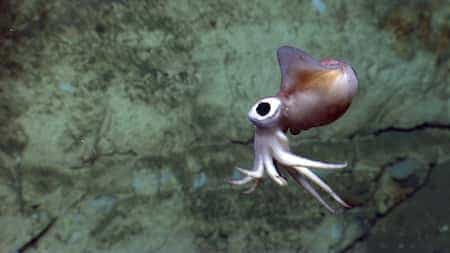
Create a caption for this bobtail squid! (Photo: NOAA Office of Ocean Exploration and Research, Northeast U.S. Canyons Expedition 2013)
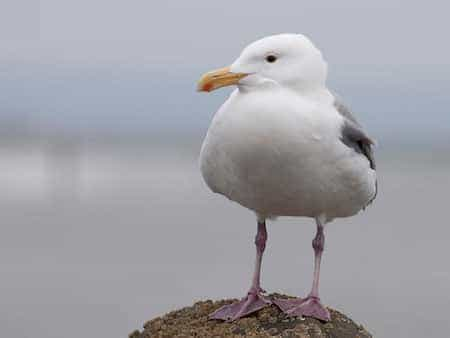
Welcome to Winged Wednesday! Did you know western gulls live up to 25 years and develop their well-known gray and white appearance when they’re four? ‘Spot’ them by looking for the red spot on their bill and their light pink legs. Know your gulls! To learn more about California seabirds and what Greater Farallones National Marine Sanctuary is doing to help seabirds thrive, visit http://farallones.noaa.gov/eco/seabird/ (Photo: USFWS)
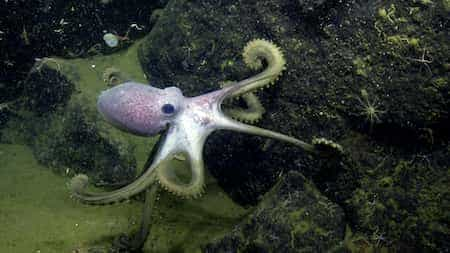
Tuesday Trivia Time! How can you tell if an octopus is a male or female? (Photo: OET/NOAA)
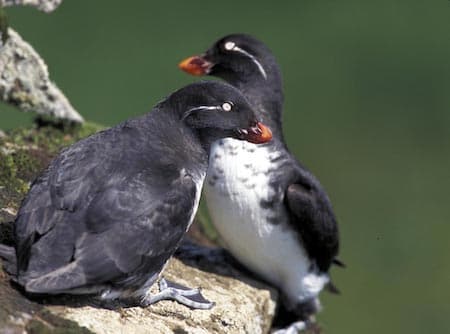
Happy Marine Life Monday! Parakeet auklets (Aethia psittacula) are distinct, small seabirds that sport black plumage on their back, white plumage on their belly, one white plume by their eye, and a bright orange bill. Their plumage does not change much between breeding and non-breeding seasons. They nest in rock crevices or burrows on the cliffs of offshore islands. Their food varies with season, but they mainly feed on invertebrates and small fish and are very adept at diving deep to catch a meal. (Photo Credit: Art Sowls, USFWS)
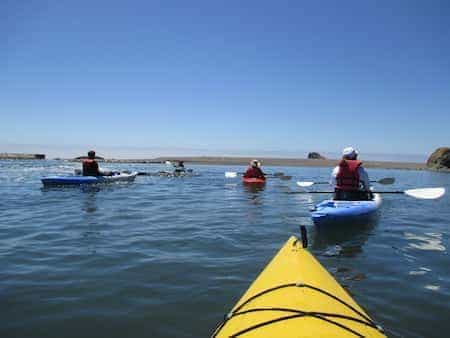
Explore your national marine sanctuaries with a virtual journey along Highway 1! Our next stop is the Russian River. Where Highway 1 crosses the Russian River just below Jenner, the river meets the mighty Pacific. This estuarine area is a popular destination for water sports and hiking. From the overlook, watch harbor seals bask on the sandbars Here. (Photo: Sara Heintzelman, NOAA)
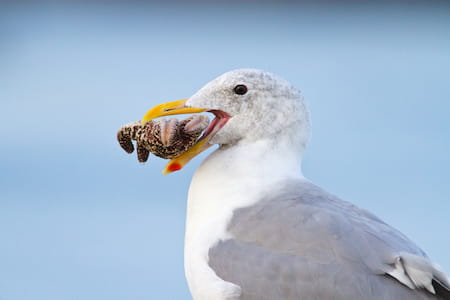
Create a caption! What do you think this gull or sea star in Olympic Coast National Marine Sanctuary would say if they could talk? (Photo: Enrique Patino/NOAA)
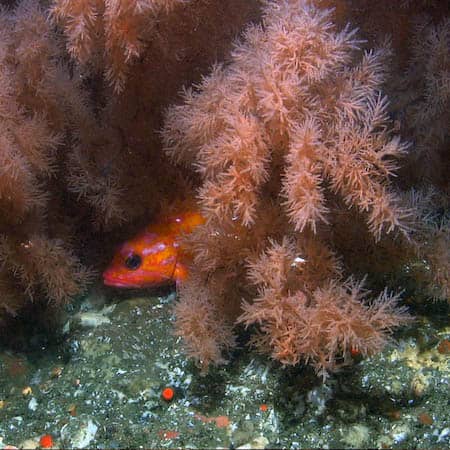
Tuesday Trivia Time! Deep sea corals live 150 feet below the ocean’s surface or deeper- some are known to live at depths greater than 10,000 feet! How do corals feed in these deep, dark, habitats? (Photo: NOAA)
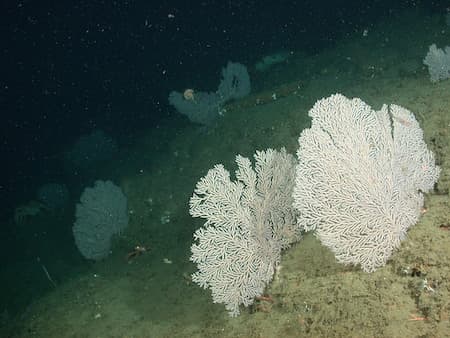
Happy Marine Life Monday! This long-spined tree coral (Plumarella longispina), is a type coral known as a gorgonian. These colonial animals are in the group Cnidaria which also includes jellies and sea anemones. There are 1,200 known gorgonian species worldwide, and while many are tropical, some are found in cold, deep waters. Keep an eye out for gorgonians and other amazing sea life from October 3-16 as the E/V Nautilus partners with Greater Farallones National Marine Sanctuary and Monterey Bay National Marine Sanctuary to explore canyons and seamounts in the sanctuaries. (Photo: NOAA, SWFSC)
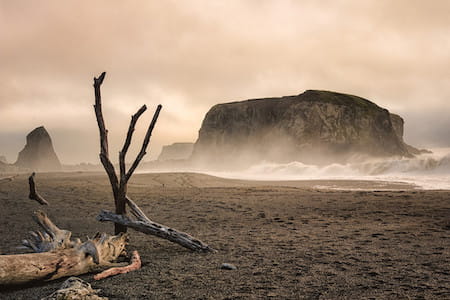
Explore your national marine sanctuaries with a virtual journey along Highway 1! Our next stop is scenic Goat Rock Beach, part of Sonoma Coast State Park. Known for its accessible sandy beaches and sea stacks, it's also known for dangerous currents and swimming is prohibited. You can view sea lions, seabirds, river otters, and harbor seals from the safety of the shore. Remember to stay at least 300 feet away, especially in pupping season from March through June. Get Into Your Sanctuary (Photo: Mark Zukowski)
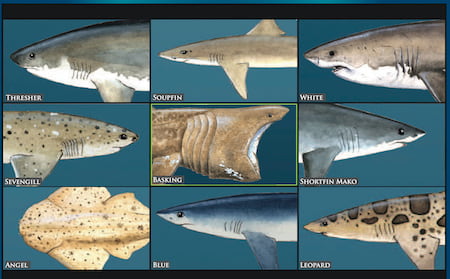
If you weren't able to tune in to Sharktoberfest™ this past weekend, don't worry! You can watch it here! Click to view the full Sharktoberfest™ event from fun kids activities to informative shark conservation discussions.https://youtu.be/d5WD6XnF0O8
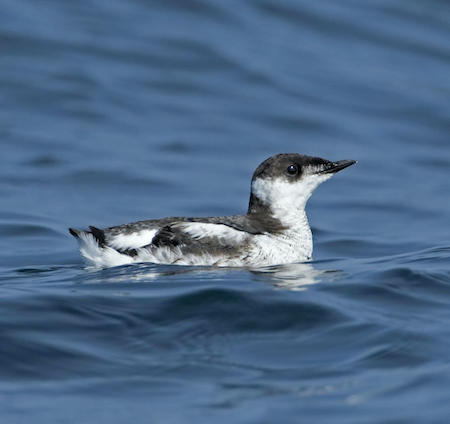
Welcome to Winged Wednesday! Marbled murrelets are endangered seabirds that feed only at night, but in the fall they can sometimes be spotted in the daytime in protected nearshore waters after nesting in the tops of first-growth fir trees in the coastal mountains during the summer. To learn more about California seabirds and what Greater Farallones National Marine Sanctuary is doing to help seabirds thrive, visit http://farallones.noaa.gov/eco/seabird/?fbclid=IwAR3fCRn3IJMTPZdIE1f9tzlIjCQSct9Gy07y--77GI7VcvcCxbu6rFRrquI (Photo: David Pereksta BOEM)
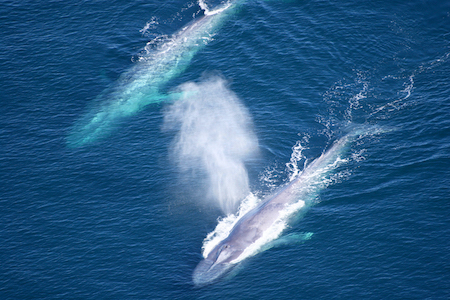
Tuesday Trivia Time! How long is a baby blue whale when it is born? (Photo: NOAA)

Happy Marine Life Monday! Ruddy turnstones (Arenaria interpres) are easy to pick out in a crowd with their bright orange legs and uniquely patterned head and chest. They breed in the arctic, but travel long distances during the non-breeding season for food at speeds of 27-47 mph! They can be spotted along the rocky shorelines and sandy beaches of Greater Farallones National Marine Sanctuary flipping over debris with their bill to uncover tasty insects and small crustaceans. (Photo Credit: Mike Carlo, USFWS)
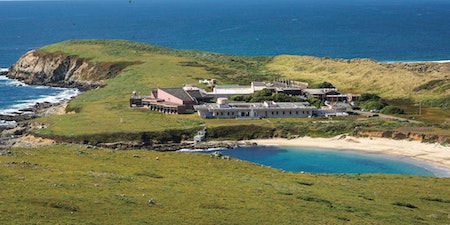
Love sharks? Join us TODAY for Virtual Sharktoberfest starting at 10am PDT! Streaming on YouTube Live: https://www.youtube.com/user/FarallonesAssoc/live
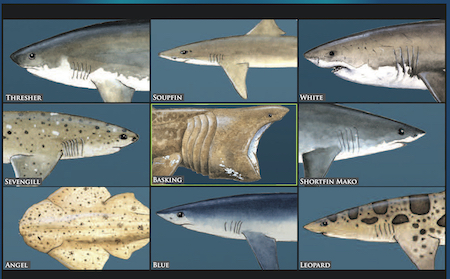
Virtual Sharktoberfest
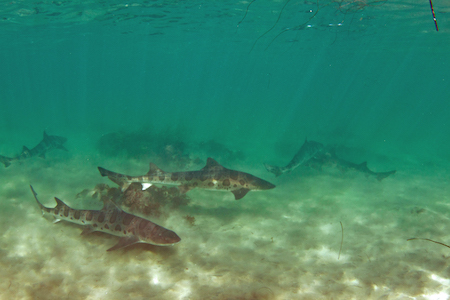
Virtual Sharktoberfest
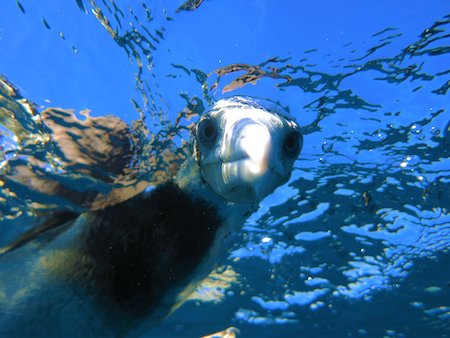
Create a caption! What do you think this bird in Papahānaumokuākea Marine National Monument is thinking? (Photo: Stephen Matadobra, NOAA)
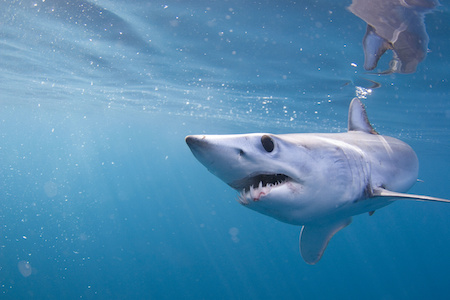
Tuesday Trivia Time! How many teeth does a shark have during its lifetime? (Photo: Walter Heim)
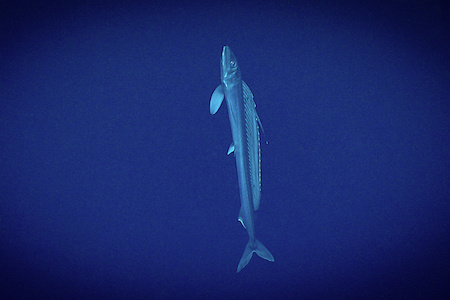
Happy Marine Life Monday! Lancetfish (Alepisaurus sp. which means “scaleless lizard”) are large, oceanic fish that reach lengths of more than 2 meters. While widely distributed, little is known about their biology. However, they have large mouths with 2-3 fang-like teeth accompanied by many smaller teeth, which would indicate that they are predatory. Their body shape and lack of muscle tone provide scientists with clues indicating that they are most likely ambush predators- surprising their prey rather than pursuing it! (Photo Credit: NOAA, Okeanos Explorer)

Explore your national marine sanctuaries with a virtual journey along Highway 1! Our next stop is the Bodega Bay Harbor which is a commercial and recreational fishing port. When in season you can find fresh crab, salmon, and halibut aplenty, or sample fresh fare at the local restaurants. Low tides expose broad mudflats teeming with food for hungry shorebirds. https://arcg.is/18HTeC (Photo: MojosCoast)
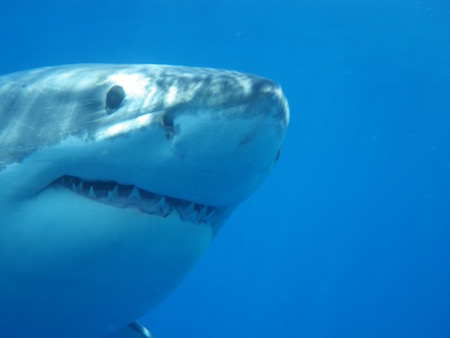
Virtual Sharktoberfest
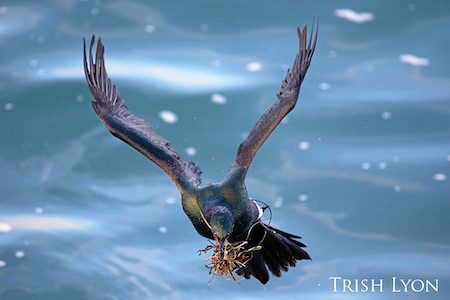
Welcome to Winged Wednesday! Pelagic cormorants nest on steep, remote cliffs along the coast of Greater Farallones National Marine Sanctuary. They build nests out of bits of seaweed, grass, and ocean debris, and create mounds up to six feet high! To learn more about California seabirds and what Greater Farallones National Marine Sanctuary is doing to help seabirds thrive, visit http://farallones.noaa.gov/eco/seabird/ (Photo: Trish Lyon, NOAA, MBNMS)

Tuesday Trivia Time! Which shark is the fastest swimmer? (Photo: Walter Heim)
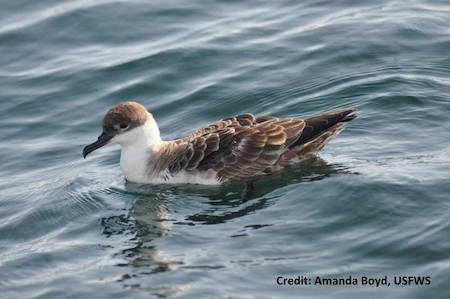
Happy Marine Life Monday! The greater shearwater (Puffinus gravis), and other shearwaters, have been named for their “shearing” flight pattern. They use few wingbeats and hold their wings stiff while dipping side to side, nearly shearing the surface of the water. The greater shearwater is larger than most shearwaters but smaller than most gulls. They are rarely seen from land, as they prefer to stay offshore where they feed on fish or squid. (Photo Credit: Amanda Boyd, USFWS)
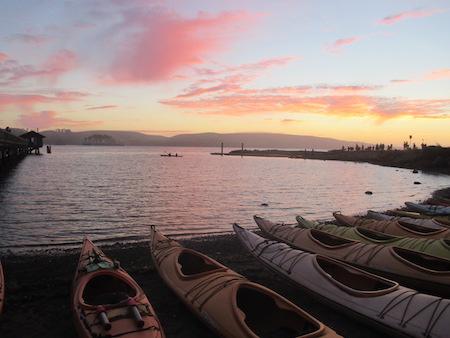
Explore your national marine sanctuaries with a virtual journey along Highway 1! Our next stop is the east shore of Tomales Bay, an inlet of Greater Farallones National Marine Sanctuary that stretches from Point Reyes Station north to Tomales Point. Enjoy outstanding boating, kayaking, swimming, and birding. At night, look for the eerie glow of bioluminescence in the rippling waves. https://arcg.is/zGieO (Photo: Sara Heintzelman, NOAA)

Create a caption! What do you think this tiger shark or albatross in Papahānaumokuākea Marine National Monument are thinking? (Photo: Mark Sullivan/NOAA)
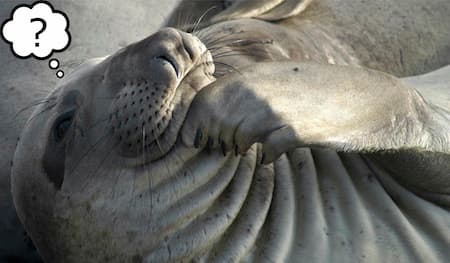
Tuesday Trivia Time! What is the longest creature in the ocean? (Photo: Robert Schwemmer, NOAA)

Happy Marine Life Monday! This gorgonian (Chromoplexaura marki) is a deep sea coral that has been found at depths of 9-200 meters off the coast of California and Oregon. There are 1,200 known gorgonian species worldwide, and while many are tropical, some like this one are found in the cold, deep waters of Greater Farallones National Marine Sanctuary. These colonial animals are in the group Cnidaria which also includes jellies and sea anemones. (Photo: NOAA)
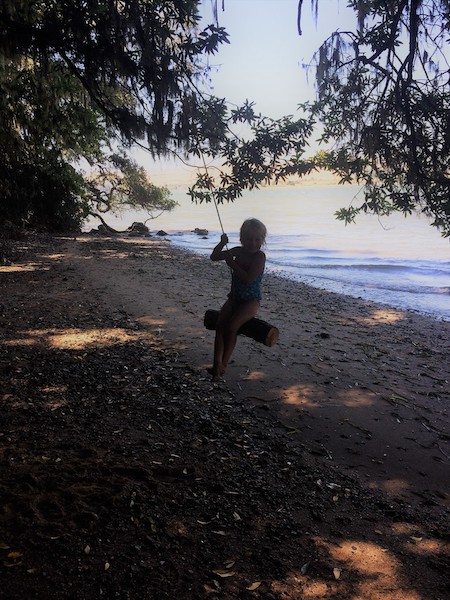
Explore your national marine sanctuaries with a virtual journey along Highway 1! Our next stop is the west shore of Tomales Bay. Visit Heart’s Desire and Shell beaches, sheltered by trees and the hillside, both are great for enjoying warm sunny beach days and enjoying lazy afternoons. https://arcg.is/0X9byv (Photo: Sara Heintzelman, NOAA)
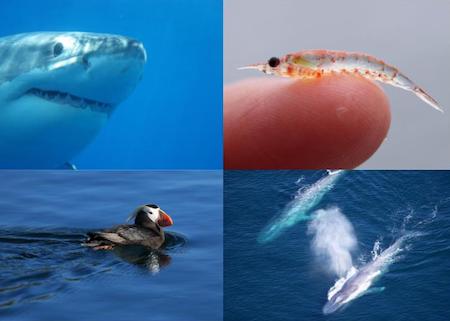
Sharks, birds, and whales- oh my! Happy National Wildlife Day. Greater Farallones National Marine Sanctuary is a globally significant, extraordinarily diverse, and productive marine ecosystem that supports abundant wildlife and valuable fisheries. It provides breeding and feeding grounds for at least twenty-five endangered or threatened species; thirty-six marine mammal species, including blue, gray, and humpback whales, harbor seals, elephant seals, Pacific white-sided dolphins, and one of the southernmost U.S. populations of threatened Steller sea lions; over a quarter-million breeding seabirds; and one of the most significant white shark populations on the planet. #WildSanctuaries (Photo Credits: Shark-Peter Winch, Krill- Sophie Webb/NOAA, Puffin-Peter Davis/USFWS, Whales-NOAA)
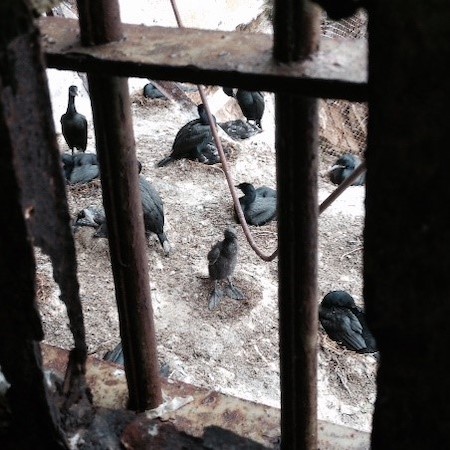
Welcome to Winged Wednesday! We want to let you in on one of Alcatraz's best kept secrets: hundreds of jailbirds escape from The Rock into the San Francisco Bay’s swirling, treacherous currents every day. Yet they come back alive. The island’s isolated, rocky crags now offer refuge to over five thousand nesting birds, including the only colonies of Brandt’s and pelagic cormorants inside the bay. Help them live the quiet life by staying 1,000 feet (3 football fields) from cliffs, offshore rocks and islands when you're out on the water. To learn more about California seabirds and what Greater Farallones National Marine Sanctuary is doing to help seabirds thrive, visit http://farallones.noaa.gov/eco/seabird/ (Photo Credit: Seabird Protection Network).

Tuesday Trivia Time! What is the fastest creature in the ocean? (Photo: Robert Schwemmer, NOAA)

Happy Marine Life Monday! Brown boobies (Sula leucogaster) nest in colonies on tropical islands. The males and females generally have a similar appearance (not to be confused with the fluffy chick pictured here!) and they both share incubation and chick-rearing duties. While they do not nest in the mainland United States, they are known to visit the waters off Florida and California and are sometimes spotted at the Farallon Islands in Greater Farallones National Marine Sanctuary! (Photo Credit: USFWS)
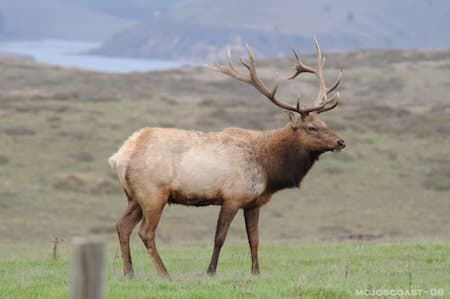
Explore your national marine sanctuaries with a virtual journey along Highway 1! Our next stop on the way to Tomales Point, the northernmost tip of Point Reyes National Seashore, is the Tule Elk Reserve. For your own safety, always observe elk from a distance. In the fall, listen for bugling male elk! https://arcg.is/1K8Kyj (Photo: MojosCoast)
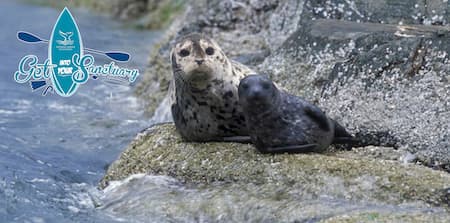
Connecting the dots! Harbor seals may be light with dark spots, or the reverse, like this mom and her pup. They’re curious when underwater, but shy on land; give them space! Love your sanctuary? Give it your best shot: Get Into Your Sanctuary Photo Contest! https://go.usa.gov/xQdMn (Photo Credit: Marine Mammal Commission)
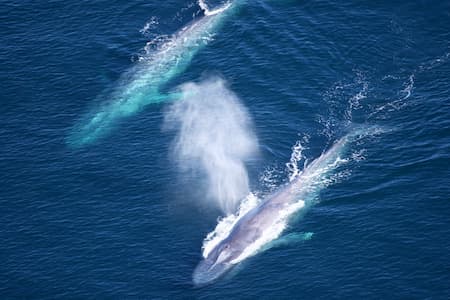
Tuesday Trivia Time! True or False: whales spray water out of their blowholes. (Photo: NOAA)
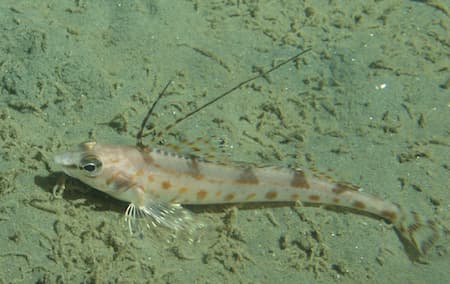
Happy Marine Life Monday! Longspine combfish (Zaniolepis latipinnis) are a type of greenling. They have rough, sandpaper-like skin and can grow to a maximum length of just under 12 inches. They are found in cold, marine, coastal waters from Canada to central Baja California, usually at depths of 115-820 feet. They dwell in the muddy bottom habitats of these waters where they feed on crustaceans. (Photo Credit: Linda Snook, NOAA/MBNMS)
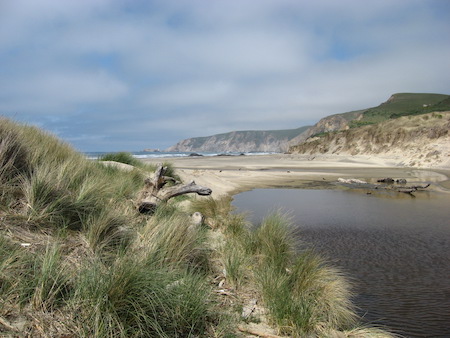
Explore your national marine sanctuaries with a virtual journey along Highway 1! Our next stop below the Point Reyes Lighthouse, is the magnificent 12-mile expanse of Great Beach. This is one of the largest, most remote beaches along the shores of Greater Farallones National Marine Sanctuary. Enjoy the peaceful solitude along the peninsula, ending at Pierce Point. https://arcg.is/1D81uL0 (Photo: NOAA)
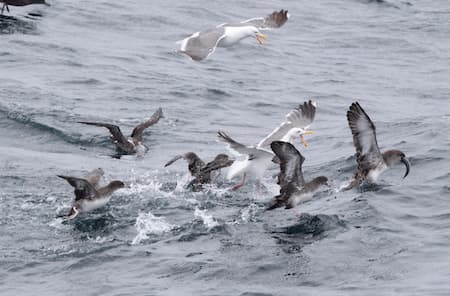
Welcome to Winged Wednesday! During their summer trips to the food-rich waters off the California coast, sooty shearwaters eat so much food their body weights can increase up to 40 percent! Sometimes they cause feeding frenzies, as seen here with a shearwater beating a western gull for a mackerel! Why are they so hungry? Sooty shearwaters need all the energy they can get to fly across the Pacific back to their nesting areas in New Zealand in October. To learn more about California seabirds and what Greater Farallones National Marine Sanctuary is doing to help seabirds thrive, visit http://farallones.noaa.gov/eco/seabird/ (Photo Credit: Sophie Webb, NOAA,SWFSC)
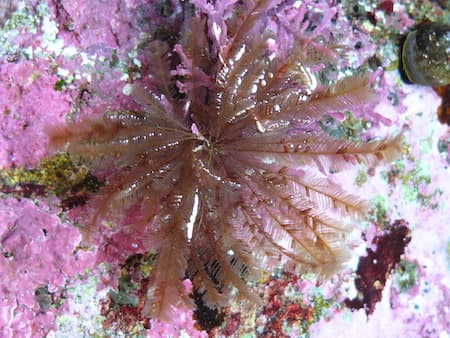
Tuesday Trivia Time! Plant or animal? (Photo: GFNMS/NOAA)
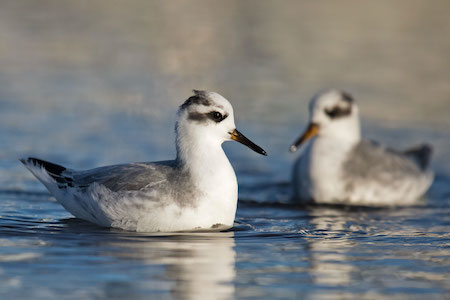
Happy Marine Life Monday! Red phalaropes (Phalaropus fulicarius) are a brilliant red during the breeding season, which they spend in the Arctic. Unlike most bird species, the females are more brightly colored than the males. During the non-breeding season, red phalaropes are a subdued gray and white. Like other phalaropes, they are known to spin on the water to create currents that will bring food, such as zooplankton, to the surface for them to feed on. They can also be spotted near large marine mammals, such as whales, seals, or walruses, that stir food up to the surface as they feed, providing leftovers for the phalaropes! (Photo Credit: Peter Pearsall, USFWS)
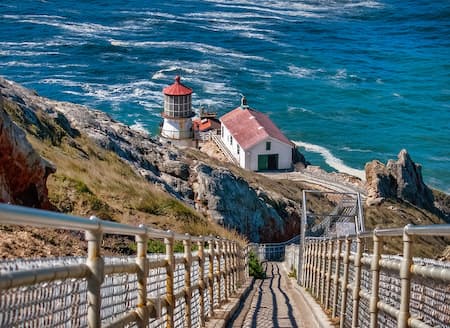
Explore your national marine sanctuaries with a virtual journey along Highway 1! Our next stop is the Point Reyes Lighthouse, built in 1870 to guide ships around the treacherous headlands. The Visitor Center and Ocean Exploration Center showcase the biologically diverse coastal and marine ecosystems of Greater Farallones and Cordell Bank national marine sanctuaries. https://arcg.is/u9mu11 (Photo: MojosCoast)

Will YOU jump at this opportunity to join the Greater Farallones National Marine Sanctuary Advisory Council? The Council is currently seeking applications for its Community-at-Large and Education Seats. Council members attend quarterly meetings (currently virtually) and advise the sanctuary superintendent on important management decisions for our local ocean environment and its community. Learn more and apply today! The deadline is Monday, August 17. https://farallones.noaa.gov/manage/sac_recruitment.html (Photo: Ed Lyman/NOAA, under NOAA permit #14682)
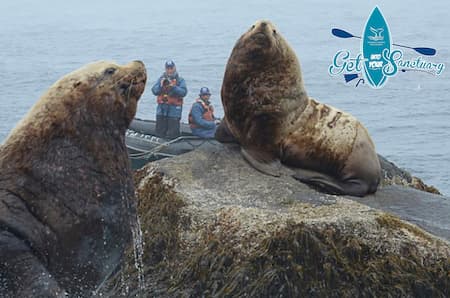
Ignore the paparazzi! Steller sea lion biologists investigate why some stocks are endangered, e.g., fisheries interactions. Love your sanctuary? Give it your best shot: Get Into Your Sanctuary Photo Contest! https://go.usa.gov/xQdMn?fbclid=IwAR2cKRW3LkfUMqhkLo217TnPxEBAFqCcwWWUAsMvv3mSPKDO0YPIjWbK6vg (Photo Credit: Gary Burkanov/NOAA)

Ignore the paparazzi! Steller sea lion biologists investigate why some stocks are endangered, e.g., fisheries interactions. Love your sanctuary? Give it your best shot: Get Into Your Sanctuary Photo Contest! https://go.usa.gov/xQdMn?fbclid=IwAR2cKRW3LkfUMqhkLo217TnPxEBAFqCcwWWUAsMvv3mSPKDO0YPIjWbK6vg (Photo Credit: Gary Burkanov/NOAA)
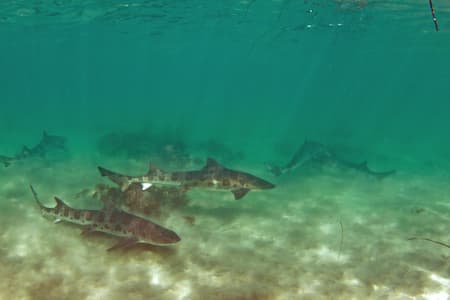
Tuesday Trivia Time! What is a group of sharks called? (Photo: Adam Obaza/NOAA)
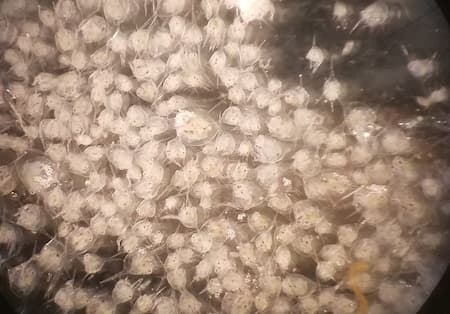
Happy Marine Life Monday! These little crabs are known as the grooved mussel crab or parasitic pea crab (Fabia subquadrata), and lead very interesting lives. After hatching from eggs and spending time in the water column as plankton during their larval stage (seen here), juveniles settle inside bivalves, such as mussels or clams. Their shells remain soft while living in the bivalve and harden when they reach adulthood and leave their bivalve homes. Females with eggs, and soft shells, return to a bivalve host. They are considered parasitic because they can damage their host’s gills and steal food from them. (Photo Credit: NOAA Fisheries)

Explore your national marine sanctuaries with a virtual journey along Highway 1! Our next stop is on the western side of Chimney Rock, where the rugged Point Reyes Headlands jut into the Pacific. Watch for migrating gray whales from winter to spring. Look down to spot sea lion haulouts. https://arcg.is/1eriLa

Welcome to Winged Wednesday! In August and September, keep an eye out for the world's champion long-distance migrating seabirds: sooty shearwaters! Vast flocks of sooty shearwaters navigate an astonishing 40,000 miles to feast in the bountiful offshore waters of Greater Farallones National Marine Sanctuary and Monterey Bay National Marine Sanctuary every year. Here they are pictured near the wharf in Capitola. To learn more about California seabirds and what Greater Farallones National Marine Sanctuary is doing to help seabirds thrive, visit http://farallones.noaa.gov/eco/seabird/ (Photo Credit: Jonathan Felis USGS)

Tuesday Trivia Time! What marine mammal does NOT have a layer of blubber to keep it warm? Hint: it is not the marine mammal shown here! (Photo: Robert Schwemmer, NOAA)
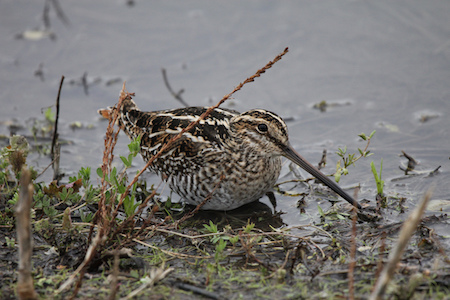
Happy Marine Life Monday! Wilson’s snipes (Gallinago delicata) are found in wet, marshy habitats. They are stocky birds, in part due to their very strong pectoral muscles that make up a quarter of their body weight and allow them to fly up to 60mph! Their eyes are set far back on their head, giving them amazing rear-view vision (and making it very difficult for predators to sneak up on them). They literally almost have eyes on the back of their heads! (Photo Credit: Jason Crotty, USFWS)

Have you always wanted to visit the Farallon Islands? Afraid of getting sea sick?
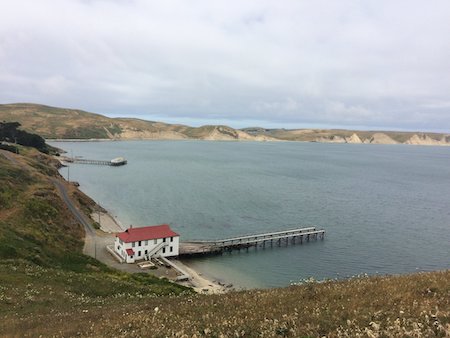
Explore your national marine sanctuaries with a virtual journey along Highway 1! Our next stop is Drakes Bay. Sir Francis Drake first made landfall here in the 16th century, met by indigenous Coast Miwoks. Drakes Bay gives safe harbor to migrating wildlife like seabirds and shorebirds. In the spring, gray whale mothers and their newborn calves travel near shore. From December to March, glimpse elephant seals via the Chimney Rock Trail and the elephant seal overlook. https://arcg.is/TqTLm (Photo: Sara Heintzelman, NOAA)

Have you always wanted to visit the Farallon Islands? Afraid of getting sea sick?
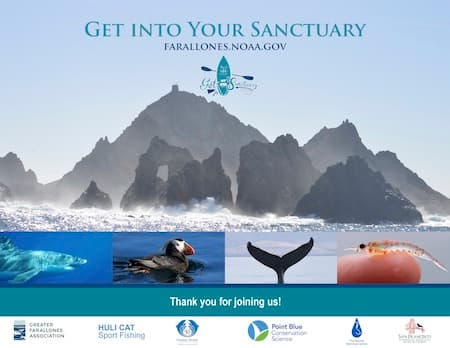
Have you always wanted to visit the Farallon Islands? Afraid of getting sea sick?
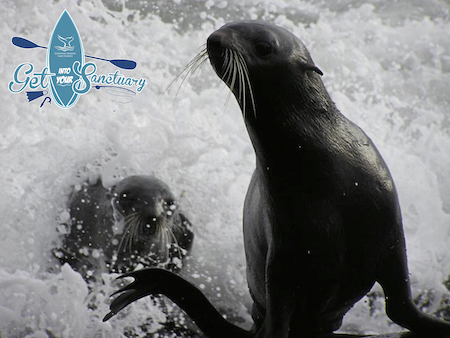
Whiskers! Pinniped "vibrissae" can act like a fish's lateral line, sensing vibrations to track fish trails, even avoid predators. Love your sanctuary? Give it your best shot: Get Into Your Sanctuary Photo Contest! https://go.usa.gov/xQdMn?fbclid=IwAR2cKRW3LkfUMqhkLo217TnPxEBAFqCcwWWUAsMvv3mSPKDO0YPIjWbK6vg (Photo Credit: NMML, NOAA)
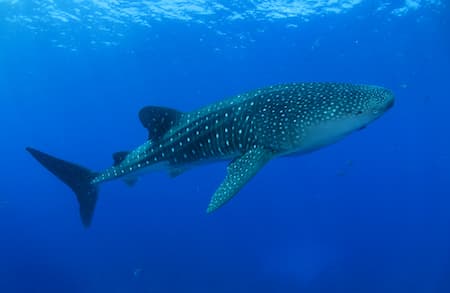
Tuesday Trivia Time! What is the biggest fish in the ocean? (Image: Pixaby)
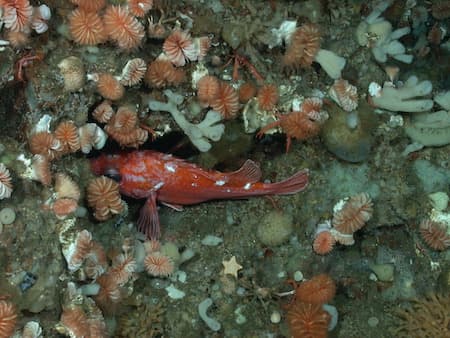
Happy Marine Life Monday! Cockscomb cup corals (Desmophyllum dianthus) have a wide distribution and can be found in many of our ocean waters. They do not have the symbiotic zooxanthellae that many other corals have, and instead filter feed small animals and particles from the water. They are usually found 200-2,500 meters deep and attach themselves to hard surfaces such as rock walls, boulders, or even the shells of other animals (such as a mussel) in areas with good currents that provide a steady stream of food in the passing water. (Photo: NOAA, SWFSC)
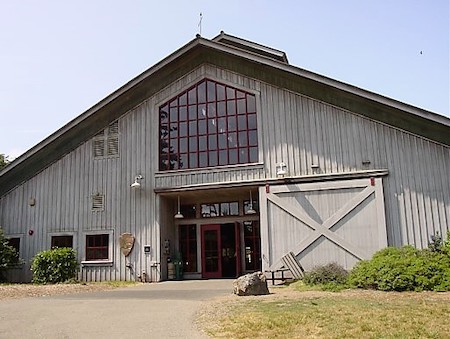
Explore your national marine sanctuaries with a virtual journey along Highway 1! Our next stop is the Bear Valley Visitor center. Atop the San Andreas Fault, this is your gateway to Point Reyes National Seashore. Exhibits highlight local plants and animals, national marine sanctuaries like Greater Farallones and offshore Cordell Bank. Learn about indigenous people’s culture and history, as well as the history of European exploration in the area. https://arcg.is/0DPiXX (Photo: NPS)
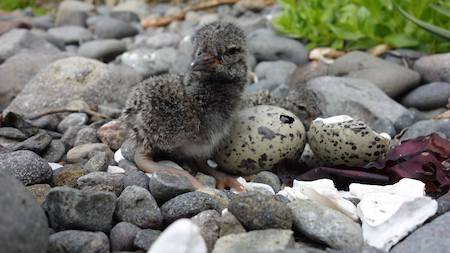
Welcome to Winged Wednesday! Did you know that some seabirds go to summer school? Black oystercatcher chicks fledge in July, but stay with their parents all summer learning life skills and hunting techniques like poking and pulling meaty chunks of mollusks from tidal areas. To learn more about California seabirds and what Greater Farallones National Marine Sanctuary is doing to help seabirds thrive, visit http://farallones.noaa.gov/eco/seabird/ (Photo: Mikaela Howie, USFWS)
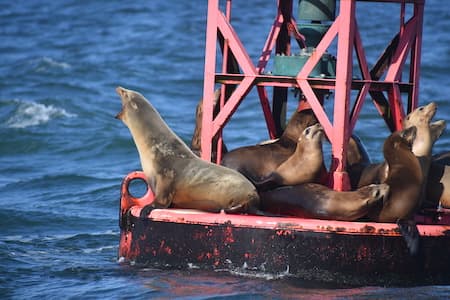
Tuesday Trivia Time! How do you tell a seal and sea lion apart? What type of animals are pictured here? (Photo Credit: Sara Heintzelman, NOAA, GFNMS)
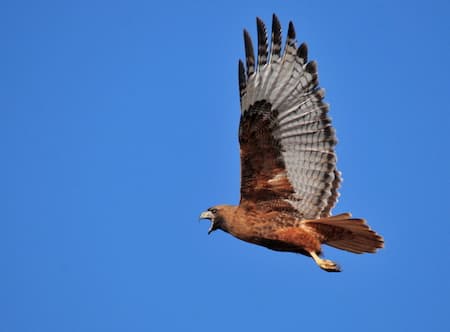
Happy Marine Life Monday! Red-tailed hawks (Buteo jamaicensis) are one of the most common hawks in North America. Despite their large size and a wingspan of about 4 feet, they are truly designed for life in the sky and only weigh about 3 pounds! They put on amazing aerial displays while courting a mate; and they feed primarily on small mammals such as mice, voles, and squirrels. (Photo Credit: Tom Koerner, USFWS)
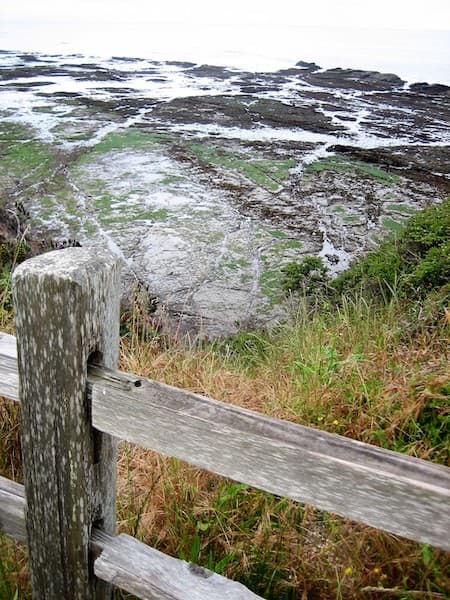
Explore your national marine sanctuaries with a virtual journey along Highway 1! Our next stop is Duxbury Reef, one of the largest shale reefs in North America. It’s home to a large diversity of marine invertebrates such as sea snails, sea stars, anemones, crabs, and octopuses. Check the tides before you go: a zero-foot or minus tide is best. https://arcg.is/1uOTXr (Photo: Rebecca Johnson)

Last one in’s a ...! Steller sea lions opt for more beach time as killer whales patrol. Find Stellers all across the North Pacific. Love your sanctuary? Give it your best shot: Get Into Your Sanctuary Photo Contest! https://go.usa.gov/xQdMn?fbclid=IwAR2cKRW3LkfUMqhkLo217TnPxEBAFqCcwWWUAsMvv3mSPKDO0YPIjWbK6vg (Photo Credit: NMML, NOAA)
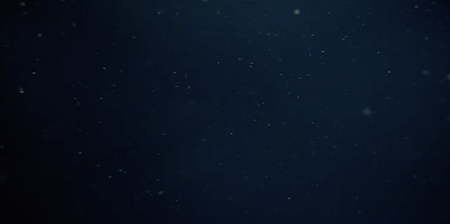
Tuesday Trivia Time! Snow in July!? Yes, when it’s marine snow, but what exactly is marine snow? (Credit: NOAA/UAF/Oceaneering)

Happy Marine Life Monday! This red gorgonian (Leptogorgia chilensis) is a soft coral, sometimes known as a sea whip or sea fan. Their branches can reach a height of almost 14 inches and approximately 11 inches wide.They are slow growing and easily damaged during storms or when anything disturbs their seafloor habitat. Unlike some corals that have a symbiotic zooxanthellae that keep them nourished, these gorgonians rely on filter feeding zooplankton and other small food from the water flowing past them. (Photo Credit: NOAA, SWFSC)
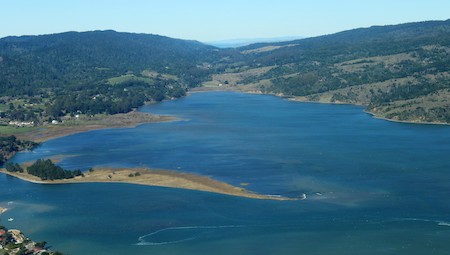
Explore your national marine sanctuaries with a virtual journey along Highway 1! Our next stop is Bolinas Lagoon. Part of the Pacific Flyway, this 1,100 acre tidal estuary is a shallow inlet of Greater Farallones National Marine Sanctuary. It boasts a profusion of birds and invertebrates. While kayaking and wildlife viewing in the estuary, keep an eye out for harbor seals! Remember to practice responsible ocean etiquette: never approach marine mammals and always give them 300 feet of space. https://arcg.is/1XO8bD (Photo: Lighthawk and Bob Wilson)
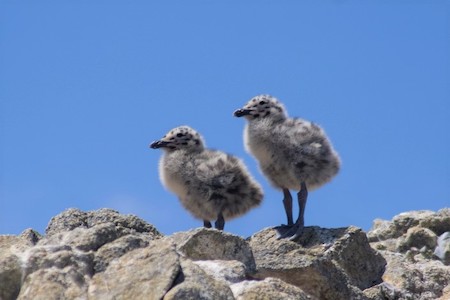
Welcome to Winged Wednesday! This month, Western gull chicks will fledge from their nests. After spending 6 weeks growing and feeding in the care of their parents, they’ll be fending for themselves by the end of July. Help a gull out this summer by letting them hunt for small surface fish, instead of eating human food leftover from your picnic! To learn more about California seabirds and what Greater Farallones National Marine Sanctuary is doing to help seabirds thrive, visit http://farallones.noaa.gov/eco/seabird/ (Photo: Ron LeValley)

Tuesday Trivia Time! Pressure underwater increases dramatically as you go deeper, at a depth of 100 meters, the pressure will be approximately 10 atmospheres or 10 times greater than the pressure at sea level. How do ocean animals handle the pressure? (Photo: NOAA Office of Ocean Exploration and Research)
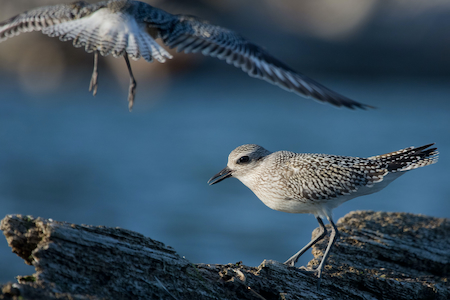
Happy Marine Life Monday! Black-bellied plovers (Pluvialis squatarola) are the largest of the North American plovers and the only one with a hind toe- although the toe is very small and hard to spot! They are quick to sound alarm calls, often warning all species of shorebirds along a beach or mudflat of danger. Their overcautious behavior kept them safe and relatively common when many other shorebirds were hunted to near extinction. They mainly feed on insects, worms, crustaceans, or bivalves that they pull from the sandy or muddy shoreline. (Photo Credit: Peter Pearsall, USFWS)

Explore your national marine sanctuaries with a virtual journey along Highway 1! Our next stop with over three miles of glistening white sandy beach is Stinson Beach. This picturesque seaside town also has great upland hiking trails, making for a great day trip or weekend getaway. Whales can be seen from shore year-round. https://arcg.is/KPvbP0 (Photo: Sara Heintzelman, NOAA)
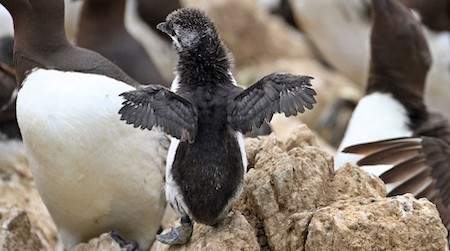
Welcome to Winged Wednesday! It’s an exciting time on the coast -- seabird chicks are fledging from their nests. This month, common murre chicks will take a big leap of faith--right off the edge of the cliff! At the Farallon Islands, their jump can be up to 150 feet high--the equivalent of a human jumping off a ledge 1.5 times the height of the Eiffel tower! To learn more about California seabirds and what Greater Farallones National Marine Sanctuary is doing to help seabirds thrive, visit http://farallones.noaa.gov/eco/seabird/ (Photo: RJ Roush)
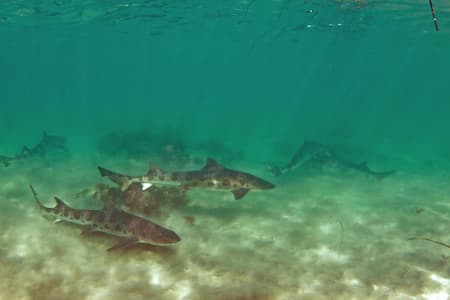
Tuesday Trivia Time! Do sharks have bones? (Image: Adam Obaza, NOAA)
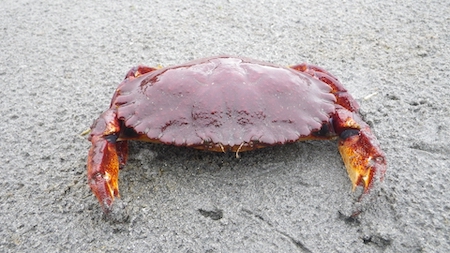
Happy Marine Life Monday! Red rock crabs (Cancer productus) have uniform brick-red coloring and broad, rounded ‘teeth’ around the edge of their shells (or carapaces). Unlike the adults, juveniles vary greatly in appearance- some are striped, some are white, and others are spotted! Red rock crabs are carnivores, preying on barnacles, other smaller crabs, or dead fish and they in turn are one of the favorite foods of the giant Pacific Octopus. (Photo Credit: David Ayers, USGS)
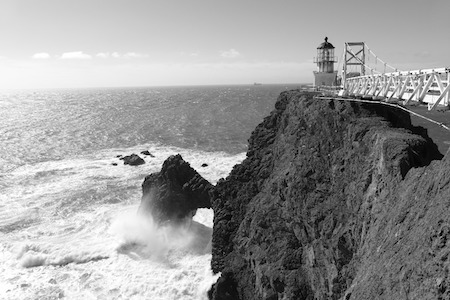
Explore your national marine sanctuaries with a virtual journey along Highway 1! Our next stop is the Point Bonita Lighthouse. Built in 1855, as the Gold Rush drew 300,000 people to the area, most aboard ships. A half-mile walk will lead you through a wild landscape shaped by volcanic basalt and across a suspension bridge. Limited hours of operation. Check the schedule before you go! https://arcg.is/080mnu (Photo: Eleonora Patricola via Unsplash)
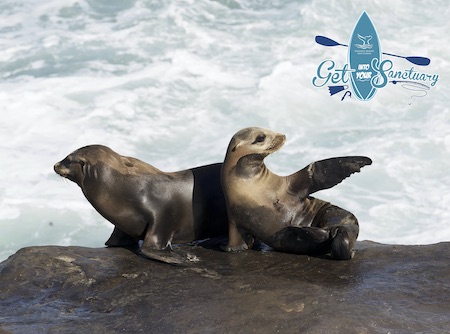
But the GPS says ... Young sea lions debate their way. Males disperse north, leaving prey near rookeries for females and pups. Love your sanctuary? Give it your best shot: Get Into Your Sanctuary Photo Contest! (Photo Credit: NMML, NOAA)
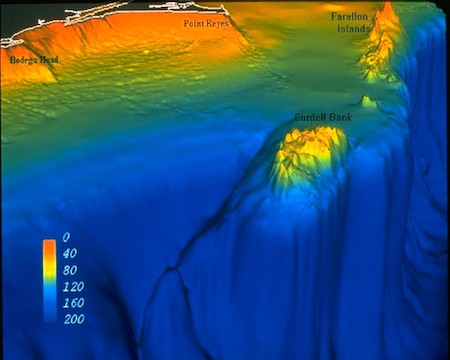
Tuesday Trivia Time! How deep is the ocean? (Image: NOAA)
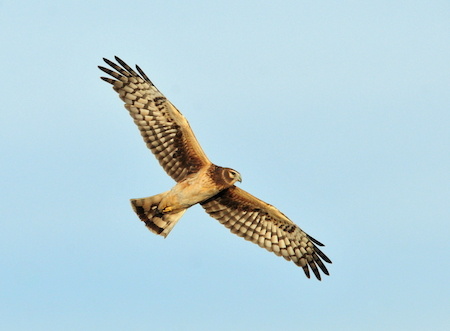
Happy Marine Life Monday! Northern harriers (Circus hudsonius) are slim, long-tailed hawks with an owl-like face. In addition to their owl-like faces, they rely on their hearing like owls (as well as vision) to help them locate prey. You are most likely to spot Northern harriers flying low and slowly over wetlands or grasslands with their wings in a distinct v-shape searching for small mammals, reptiles, amphibians, and even other birds to prey on. (Photo Credit: Tom Koerner, USFWS)
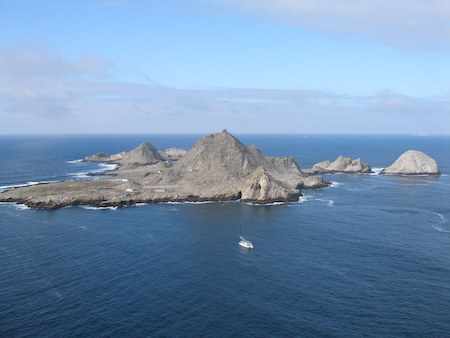
Explore your national marine sanctuaries with a virtual journey along Highway 1! Our next stop is San Francisco’s most exclusive neighborhood- a rocky island group 27 miles offshore: the Farallon National Wildlife Refuge. During the breeding season over 300,000 seabirds nest on the islands, which are the largest seabird rookery in the contiguous United States. The islands are home to tufted puffins, auklets, and murres, and to marine mammals like seals and sea lions, along with a healthy white shark population. A naturalist-led boat trip around the islands can make for an unforgettable day. To protect marine life, there is no public access on the islands. https://arcg.is/1z11ni (Photo: NOAA)

Welcome to Winged Wednesday! Small plane pilots do their part to protect marine wildlife in NOAA’s Greater Farallones National Marine Sanctuary and NOAA’s Monterey Bay National Marine Sanctuary. Pilot Gretchen Kelly, manager of the Half Moon Bay and San Carlos airports, partners with the Seabird Protection Network to encourage pilots to adopt seabird safe flying practices. Through Gretchen’s leadership, Seabird Protection Network staff have had the opportunity to brief pilots flying at air shows, and build community support among aviators for stewardship of the California coast. In the photo below, Gretchen takes the Seabird Protection Network Pledge that says, "I fly at or above 1,000 feet AGL (above ground level) for safety and wildlife. It’s a good practice!" To learn more about California seabirds and what Greater Farallones National Marine Sanctuary is doing to help seabirds thrive, visit http://farallones.noaa.gov/eco/seabird/ (Photo: Seabird Protection Network)
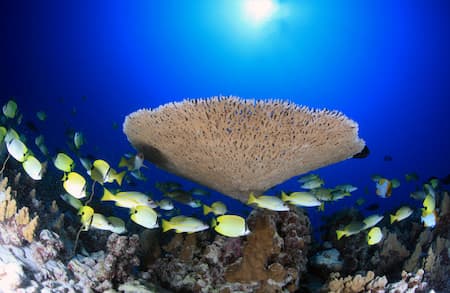
Tuesday Trivia Time! Do all corals live in warm water? (Photo Credit: Greg McFall/NOAA)
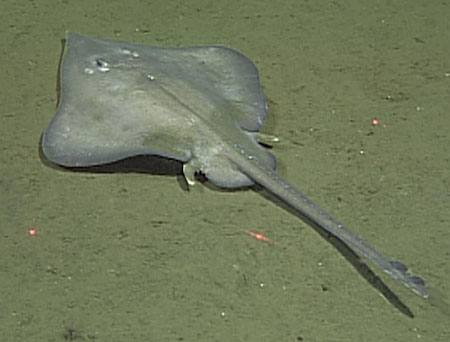
Happy Marine Life Monday! Deepsea skates (Bathyraja abyssicola) are named for the greek word abyssos meaning "bottomless" and can be found at depths as much as 10,000 feet! Their coloring can range from grayish purple to a darker brown or even black and some are spotted. Deepsea skates lay egg cases in sand or mud. Their egg cases are approximately 4 inches long and have pointed horns in the corners. They feed on worms, shrimp, crabs, and fish. (Photo Credit: NOAA/MBARI)
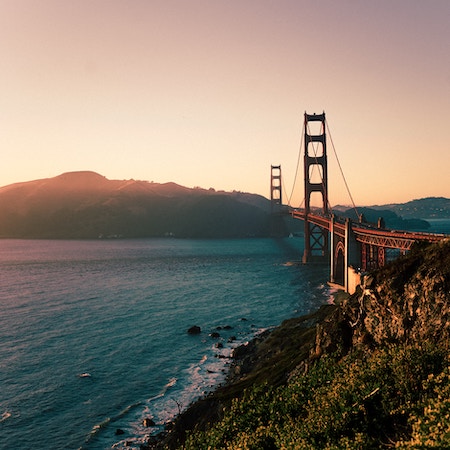
Explore your national marine sanctuaries with a virtual journey along Highway 1! Our next stop is the iconic Golden Gate Bridge. Fog permitting, enjoy sweeping panoramic views of the mighty Pacific Ocean, Marin Headlands, and the city of San Francisco. Look down to spot seals, porpoises, and dolphins year-round. During spring and summer months, you might see whales too! https://arcg.is/1a1KrK (Photo: Meric Dagli via Unsplash)

Yoga on the beach! This young sea lion basks in the sun to regain body heat lost in our cool Pacific waters, and to normalize blood gases after deep or prolonged dives. Love your sanctuary? Give it your best shot: Get Into Your Sanctuary Photo Contest! https://go.usa.gov/xQdMn?fbclid=IwAR2cKRW3LkfUMqhkLo217TnPxEBAFqCcwWWUAsMvv3mSPKDO0YPIjWbK6vg (Photo Credit: Tony Orr, NMML, NOAA)
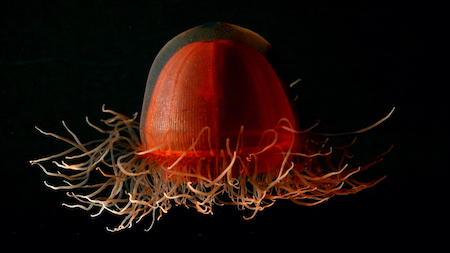
Tuesday Trivia Time! Why are so many deep-sea animals red in color? (Image courtesy of Kevin Raskoff, California State University, Monterey Bay, NOAA Office of Exploration)

Happy Marine Life Monday! Gorgonian corals, such as this Acanthogorgia sp., are a type of soft coral. These colonial animals are found in a variety of shapes ranging from fan-like structures, to feathery forms, and even whip-like shapes. They provide habitat for many other species such as fish and invertebrates as you can see here with this gorgonian’s galatheid crab and crinoid residents! (Photo Credit: NOAA Southwest Fisheries Science Center, Advanced Survey Technologies Group)
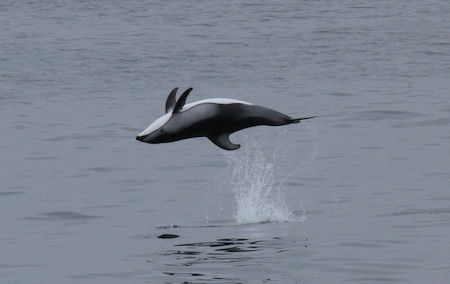
Yipee! It’s World Oceans Day! How are you going to celebrate and help protect our amazing blue planet? (Photo: Sage Tezak, NOAA)

Explore your national marine sanctuaries with a virtual journey along Highway 1! Our next stop set in the historic Coast Guard lifesaving station near the Golden Gate Bridge, is the Greater Farallones National Marine Sanctuary Visitor Center which offers life-size white shark and elephant seal replicas, aquariums, and naturalists who will introduce you to our local marine life. Step outside to Crissy Field or the beach to complete your perfect indoor-outdoor day. https://arcg.is/H0br0 (Photo: Will Elders, NPS)
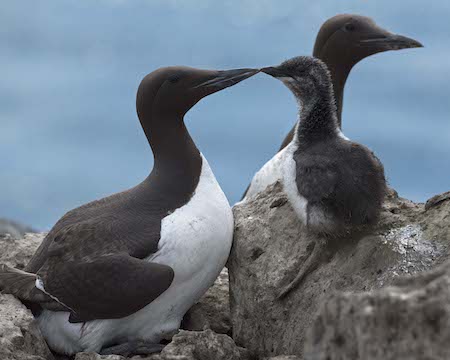
Welcome to Winged Wednesday! Look at this fluffball common murre chick! During nesting season, the most sensitive time of year, seabird parents are extra-sensitive to disruption. Giving seabirds and coastal wildlife a wide berth (1,000 feet), allows you to stay safe and give animals the space they need to rest and raise their young. To learn more about California seabirds and what Greater Farallones National Marine Sanctuary is doing to help seabirds thrive, visit http://farallones.noaa.gov/eco/seabird/ (Photo: Sarah Schoen, USGS)
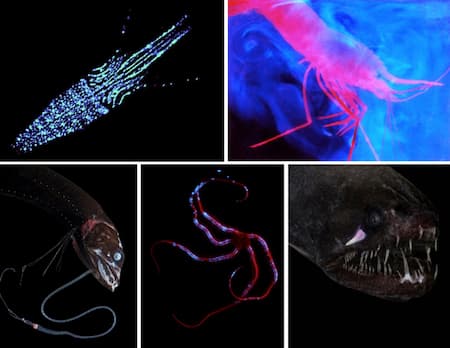
Tuesday Trivia Time! What are some of the functions of bioluminesence for ocean creatures? (Photo: NOAA OER, Bioluminescence and Vision on the Deep Seafloor 2015 expedition)
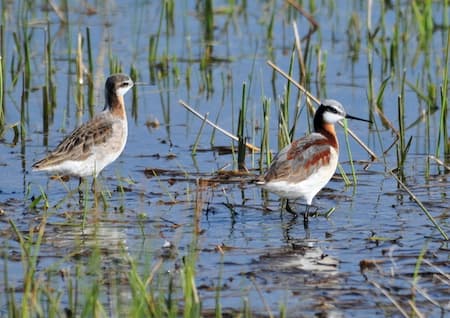
Happy Marine Life Monday! Wilson’s phalaropes (Phalaropus tricolor) are small shorebirds, about the size of a robin, with long legs and thin straight bills. They demonstrate a distinct behavior of spinning around on the surface of the water to create whirlpools that bring their food (small invertebrates such as shrimp) to the surface where they can more easily feast! Unlike most bird species, the females are more colorful than males and they are the ones who court and defend the males. After laying her eggs (which is almost always a clutch of 4 eggs), the female leaves and finds another mate while the male stays and cares for the eggs. (Photo: Tom Koerner, USFWS)

Explore your national marine sanctuaries with a virtual journey along Highway 1! Our next stop is the beautiful, crescent-shaped Linda Mar Beach that offers great boogie boarding, surfing, and quiet strolls. Its gentle, rolling waves and broad sandy beach welcome surfers of all skill levels. You might even spot a bottlenose dolphin! https://arcg.is/1bTCuy (Photo: Monika Krach, NOAA)
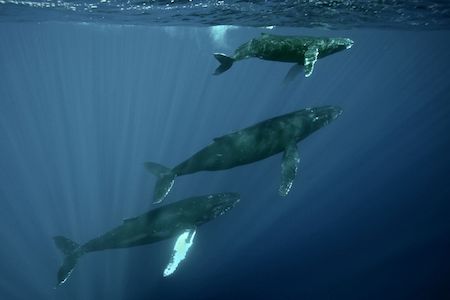
Three is a crowd? Well, not with these humpbacks! Baleen whales don't form tight societies like toothed whales, but may form triads. Sometimes it's for romance; sometimes, for food or play; sometimes companionship. (Photo Credit: Ed Lyman, NOAA)
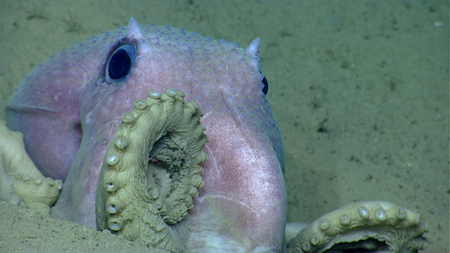
Tuesday Trivia Time! How many brains does an octopus have? (Photo: NOAA Office of Ocean Exploration and Research, Northeast U.S. Canyons Expedition 2013.)
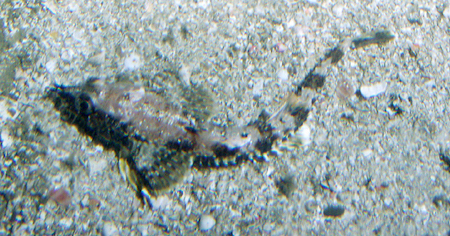
Happy Marine Life Monday! Northern spearnose poachers (Agonopsis vulsa) are small, bottom-dwelling fish found in cold waters. They are known for their elongated bodies and large pectoral fins which allow them to move quickly in short bursts. They generally feed on marine worms and small crustaceans, and as seen here, are excellent at camouflaging in their environments! (Photo: Bob Lea, CDFW)
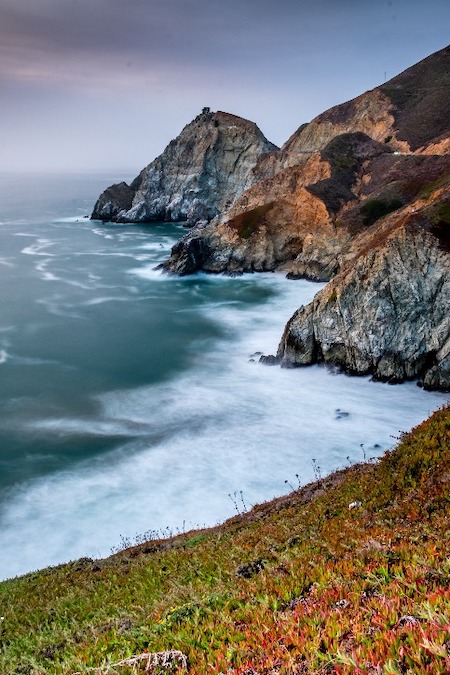
Explore your national marine sanctuaries with a virtual journey along Highway 1! Our next stop is Devil’s Slide Trail. This 1.3 mile paved foot-and-bike trail is part of the California Coastal Trail. In late winter and spring, watch for whale blows and revel in the springtime wildflowers. Spotting scopes offer close-up views of roosting seabirds. https://arcg.is/GSzue (Photo: Madhu Shesharam via Unsplash)
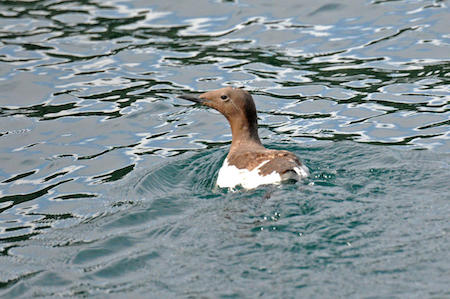
Welcome to Winged Wednesday! Common murres use their wings not only for flight, but to swim and dive. In fact, they are more comfortable “flying” underwater in search of fish than they are in the air! To learn more about California seabirds and what Greater Farallones National Marine Sanctuary is doing to help seabirds thrive, visit http://farallones.noaa.gov/eco/seabird/ (Photo: Sarah Schoen, USGS)
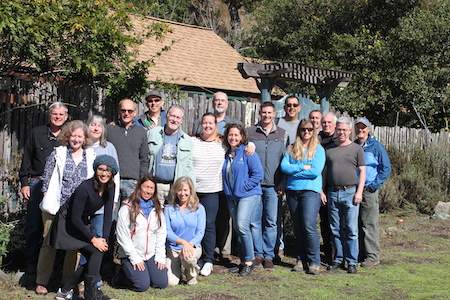
The meeting on May 21st included updates from Greater Farallones, Cordell Bank, and Monterey Bay national marine sanctuary superintendents, a presentation on incorporating the Council's recommendations on recreation and tourism promotion in GFNMS, a presentation on the sanctuary's response to Council Tomales Bay native oyster recommendations, and a public comment period. View the agenda and details on how to access the virtual meeting: https://farallones.noaa.gov/manage/sac_meetings.html

Tuesday Trivia Time! While this baby leatherback turtle may be small, the leatherback is the largest turtle in the world. How much can an adult leatherback weigh? (Photo: NOAA)
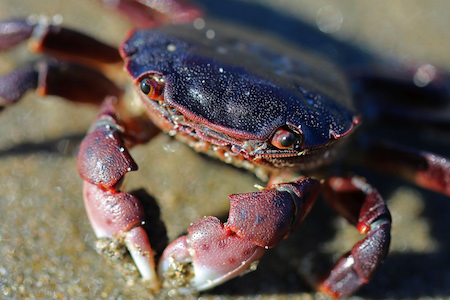
Happy Marine Life Monday! Purple shore crabs (Hemigrapsus nudus) are found in the intertidal from Alaska to Baja California. They feed mainly on green algae, like sea lettuce, but will also scavenge dead animals. These small crabs have a carapace (or shell) that reaches a width of about 2.2 inches. Their bodies are generally a dark purple and they have spotted white tipped-claws that distinguish them from the similar looking lined-shore crab (who lack these spots). (Photo: Peter Pearsall, USFWS)
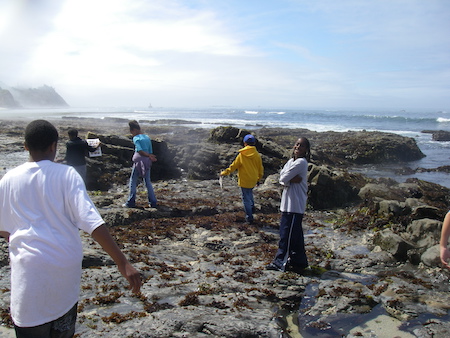
Explore your national marine sanctuaries with a virtual journey along Highway 1! Our next stop is Fitzgerald Marine Reserve, one of the most spectacular, accessible, and protected tidepool sites along the Northern California coast. Search for sculpins, sea urchins, bat stars, snails, and the elusive octopus. https://arcg.is/00nCCv (Photo: Anna Sparer, NOAA)
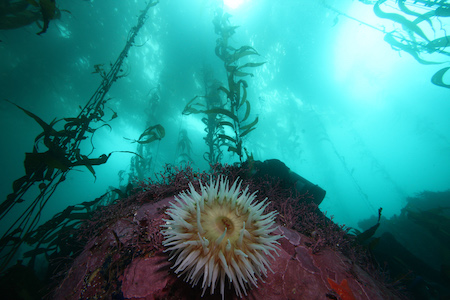
Bursting with life! Enthroned atop a rich carpet of sponge, a giant Pacific anemone exults in the sunlit waters. The sea waves its supple kelp wands, performing feats of bright magic. (Photo Credit: Chad King, NOAA, MBNMS)
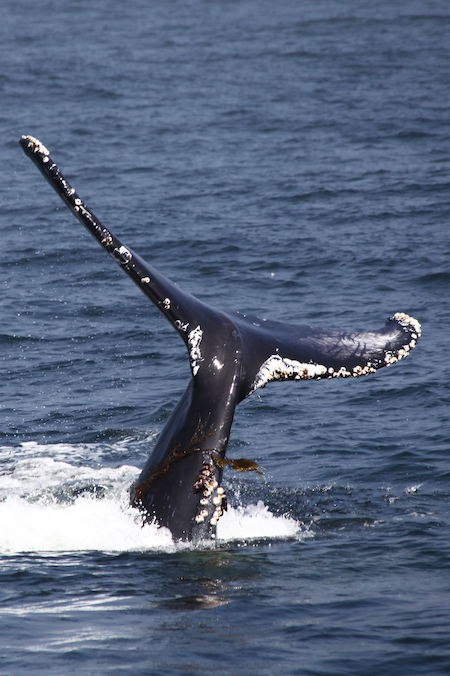
Tuesday Trivia Time! Barnacles can be found stuck on boats, piers, other marine animals, and even stuck on each other; but how do they stick? (Photo: Chad King, NOAA)

Happy Marine Life Monday! Male ruddy ducks (Oxyura jamaicensis) in breeding plumage are hard to miss with their bright blue bills, white patches, and chestnut bodies. While they are fast fliers, they are not good at maneuvering in flight and prefer to swim and dive to escape predators which include hawks, owls, and raccoons. Ruddy ducks are very aggressive toward each other and toward other species, especially during breeding season. They aren’t the only aggressive birds though, and are known to be the targets of attacks by grebes who implement an underwater strike, referred to as submarining! (Photo: Tom Koerner, USFWS)
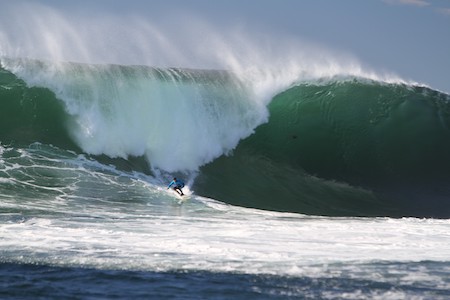
Explore your national marine sanctuaries with a virtual journey along Highway 1! Our next stop is the world-famous Maverick’s big wave surfing mecca just outside Pillar Point Harbor. Big Pacific storm waves frequently crest at 25 feet, but can reach 60 feet: this area is not for the inexperienced surfer. Enjoy the roar of the pounding surf from the safety of shore, and never turn your back to the ocean! https://arcg.is/0GzGWv (Photo: Mark Hofmann)
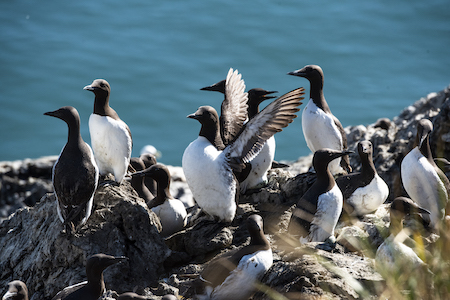
Welcome to Winged Wednesday! The extraordinarily productive waters of Greater Farallones National Marine Sanctuary support an incredible array of seabirds. Right now, over 250,000 common murres have gathered on the Farallon Islands for breeding season. To learn more about California seabirds and what Greater Farallones National Marine Sanctuary is doing to help seabirds thrive, visit http://farallones.noaa.gov/eco/seabird/ (Photo: Sarah Schoen, USGS)

Tuesday Trivia Time! What is the unique strategy that owl limpets (Lottia gigantea) use to maintain their food supply? (Photo: Steve Lonhart, NOAA, MBNMS)
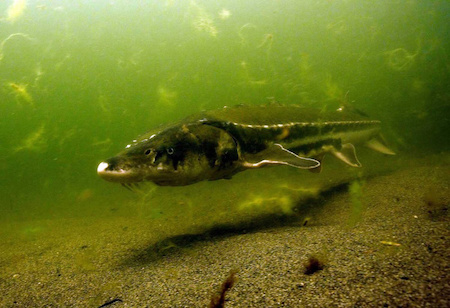
Happy Marine Life Monday! Green sturgeon (Acipenser medirostris) are long-lived, slow-growing fish that have a lifespan of 60-70 years! They weigh up to 350lbs and can grow to lengths of 6.5 feet. They do not have teeth, but use their long flexible ‘lips’ (protrusible jaw) to shape their mouths into a vacuum-like form to suck up food. They are anadromous (spending part of their life in freshwater and part of it in saltwater), but unlike many other anadromous fish that spawn once and die, green sturgeons can spawn several times throughout their lives. (Photo: Thomas Dunklin, NOAA Fisheries)

Explore your national marine sanctuaries with a virtual journey along Highway 1! Our next stop is Pillar Point Harbor near Half Moon Bay. Buy fresh seafood (Dungeness crab, salmon, and other fish) straight off the boat at this bustling commercial, sportfishing, and recreational port. Local vendors offer kayak and paddleboard rentals, and many charter fishing and whale watching trips depart from this harbor. https://arcg.is/1ime8L (Photo: MojosCoast)
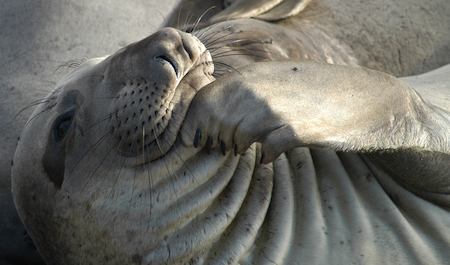
No more free lunches! In April most elephant seal pups head out to sea. It coincides with maximum available food in the ocean. Untutored in foraging know-how, pups use a hit-or-miss approach, living off stored fat while honing their skills in Greater Farallones National Marine Sanctuary. (Photo Credit: Robert Schwemmer, NOAA)
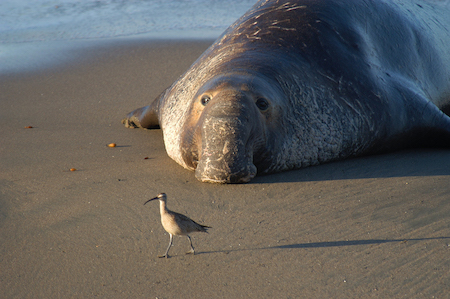
Tuesday Trivia Time! How much does a northern elephant seal bull weigh? (Photo: Robert Schwemmer/NOAA)
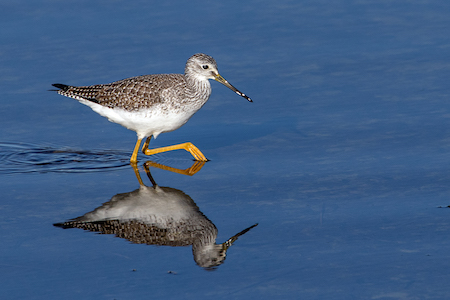
Happy Marine Life Monday! Greater yellowlegs (Tringa melanoleuca) are high-stepping shorebirds typically found in mudflats and wetlands and are sometimes referred to as “marshpipers.” They wade deep into the water to feed on aquatic invertebrates and the occasional small fish. While they spend most of their time in wetlands, they will perch atop trees to keep a lookout for predators in their breeding grounds. (Photo: Mark Carlo, USFWS)

Explore your national marine sanctuaries with a virtual journey along Highway 1! Our next stop is the Pescadero Marsh Natural Preserve where you can explore coastal dunes, bluffs, and salt and freshwater habitats. Abundant wildlife thrives year-round, and the marsh is a major spring and fall stopover for many bird species. When visiting, you may see great blue herons, egrets, and ducks. Visit the nearby town of Pescadero for wonderful baked goods, their famous artichoke soup, and artisan-crafted furniture. https://arcg.is/0GzGWv (Photo: Carol Preston, NOAA)
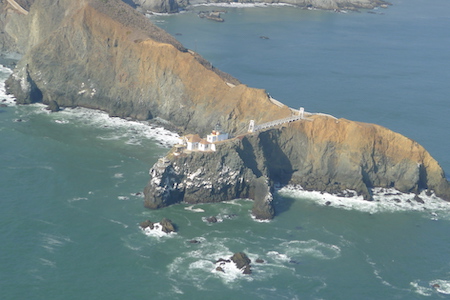
Welcome to Winged Wednesday! Spot white splatters on your car, and you know immediately that birds have paid a visit. Picture that, multiplied by a few hundred (or thousand!) seabirds, and you can easily spot evidence of whole colonies from afar. Think you know your guano? Name this white rock! To learn more about California seabirds and what Greater Farallones National Marine Sanctuary is doing to help seabirds thrive, visit: http://farallones.noaa.gov/eco/seabird/ (Photo: Seabird Protection Network)

Tuesday Trivia Time! How much can giant kelp (Macrocystis pyrifera) grow in a single day? (Photo: Steve Lonhart, NOAA, MBNMS)
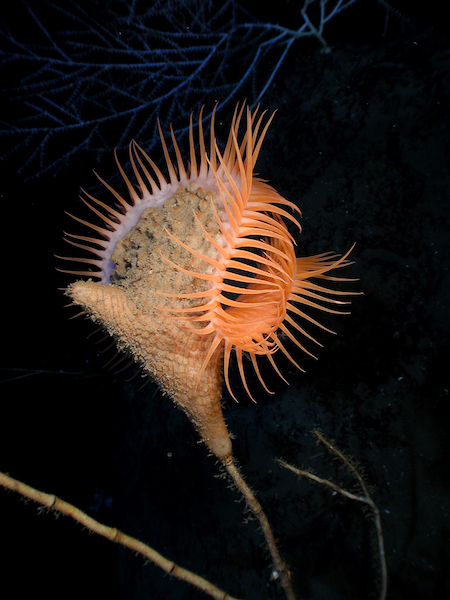
Happy Marine Life Monday! Venus-flytrap anemones (Actinoscyphia aurelia) are a deep sea species that can be found to depths of 1900 meters! While they have a close resemblance to the venus-flytrap plants that you find on land, these strange sea creatures are not plants- they are animals! Like other anemones, they wait for food to drift by and will orient themselves to face into the current to maximize their chances of catching food. When prey comes close enough, the anemones have stinging cells (called nematocysts) that help stun the prey. (Photo: Aquapix and Expedition to the Deep Slope 2007, NOAA, OE)
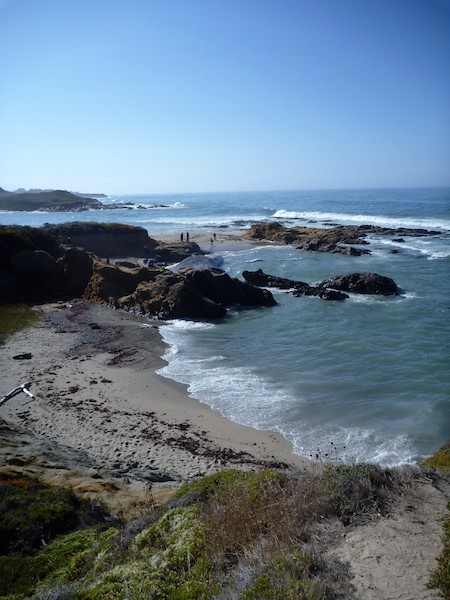
Explore your national marine sanctuaries with a virtual journey along Highway 1! Our next stop is Bean Hollow State Beach, where low tides invite you to investigate tidepools where anemones, crabs, snails, and sculpins thrive. At the park’s north end, beautiful tafoni rock formations created by salty air hitting sandstone honeycomb the cliffs. A walk along the bluff-top trail offers great views of harbor seals and other marine life. https://arcg.is/0GzGWv (Photo: Jeff Northam)

THIS SEA LION AIN'T LYIN': Don't mess with this big boy! Sea lions are gregarious, but bulls may command space to assert seniority in crowded rookeries. Hours later, he may cuddle up with a group of young'uns - "Invitation only." (Photo Credit: SWFSC, PRD, NOAA)
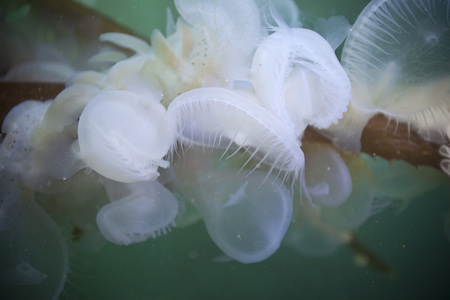
Tuesday Trivia Time! The lion’s mane nudibranch (Melibe leonina) is known for a distinct smell, do you know what it smells like? (Photo Credit: Chad King, NOAA, MBNMS)
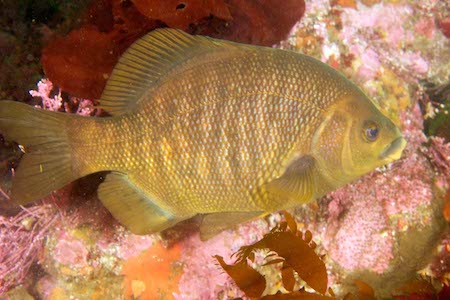
Happy Marine Life Monday! Black perch (Embiotoca jacksoni) are primarily found living in kelp beds or rocky reef habitats. They are one of 23 species in the surfperch family; perches are well known for bearing live young instead of laying eggs like so many other fish. Black perch reach lengths of up to ~15 inches and are thought to have a lifespan of at least 9 years. They seem to be able to adjust their color depending on the environment they are living in- they have been observed to have lighter coloring when living in sandy habitats, while having darker coloring when living among kelp. (Photo: Pete Naylor, REEF)
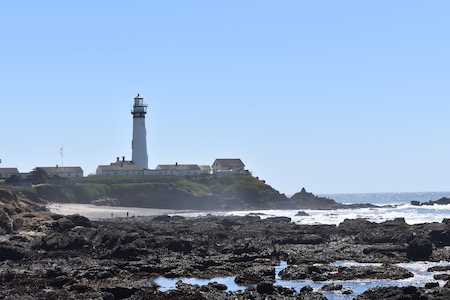
Explore your national marine sanctuaries with a virtual journey along Highway 1! Next stop is the Pigeon Point Light, located within Pigeon Point Light Station State Historic Park. It stands 115 feet high- one of the tallest lighthouses in the United States. Its beacon guides mariners around the treacherous reef. The Fog Signal building exhibits information about shipwrecks and lighthouse keepers, with artwork, artifacts, and stories. https://arcg.is/1mfXSq (Photo: Sara Heintzelman/NOAA)
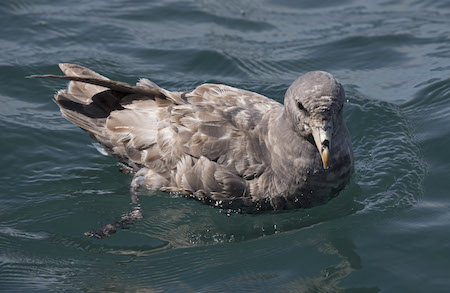
Welcome to Winged Wednesday! Northern fulmars sure know how to get their space. At a young age they learn to projectile vomit an oily stomach stink-bomb when an unwanted predator comes too close. To learn more about California seabirds and what Greater Farallones National Marine Sanctuary is doing to help seabirds thrive, visit http://farallones.noaa.gov/eco/seabird/ (Photo: Sarah Schoen, USGS)
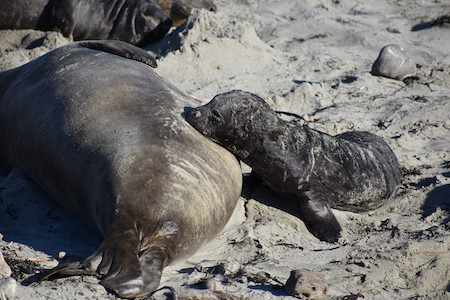
Tuesday Trivia Time! When northern elephant seal pups are born, they weigh about 75 lbs. Their mom nurses them for 25-28 days before leaving them on their own and returning to the ocean. How much do the pups weigh when their mom weans them? (Photo Credit: Sara Heintzelman/NOAA)
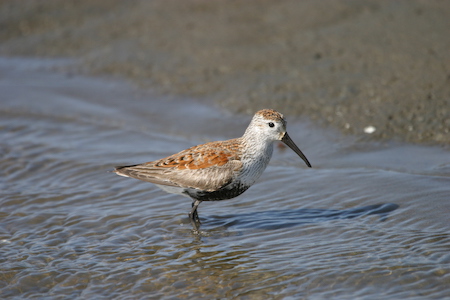
Happy Marine Life Monday! Dunlins (Calidris alpina) are medium-sized sandpipers that nest in the arctic and subarctic tundra but you can spot them during the winter months along the shores of our national marine sanctuaries. They feed primarily on small invertebrates found in mud, soil, or sand. There is a striking difference between their breeding and non-breeding plumage. In non-breeding plumage they are a dull brownish gray, while in breeding plumage they have a black belly, red/brown cap on their head, and a bright copper-brown back. (Photo: USFWS)
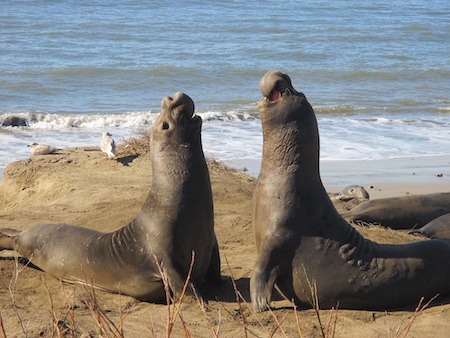
Explore your national marine sanctuaries with a virtual journey along Highway 1! Your first stop is Año Nuevo State Park in NOAA’s Monterey Bay National Marine Sanctuary and home to one of the world’s largest mainland breeding colonies of northern elephant seals. Remember to practice responsible ocean etiquette: never approach marine mammals and always give them 300 feet of space. https://arcg.is/1ffqOC (Photo: Sara Heintzelman/NOAA)
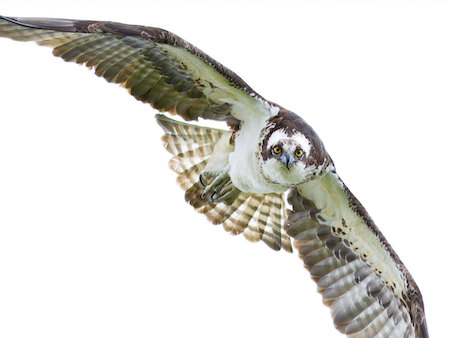
MAD MAX-ine: Interlopers may incur the wrath of Mad Maxine if seen as threats to her osprey chicks. If her beak doesn't deter uninvited guests, her talons will! Steer clear of nesting birds. (Photo: NOAA)
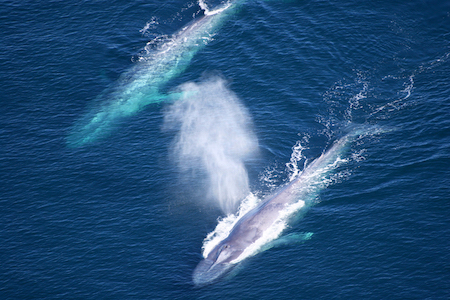
Tuesday Trivia Time! Blue whales are the largest animal to ever live on our planet, however they feed on tiny krill! How much krill do these huge whales need to eat each day? (Photo: NOAA)
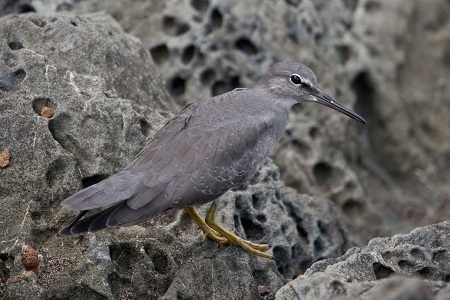
Happy Marine Life Monday! Wandering tattlers (Tringa incana) are most often spotted along the rocky shores of the sanctuary. These somewhat elusive birds are usually solitary. Easily alarmed, they have earned the name tattler from the shrill alarm call they sound whenever they feel threatened. In flight, they have a distinct squarish tail that is solid gray. They also have a unique low flight pattern and can be spotted shooting up in the air weaving and zigzagging. This may be a strategy used to deter predators and make themselves more difficult to capture. (Photo Credit: Peter Pearsall, USFWS)
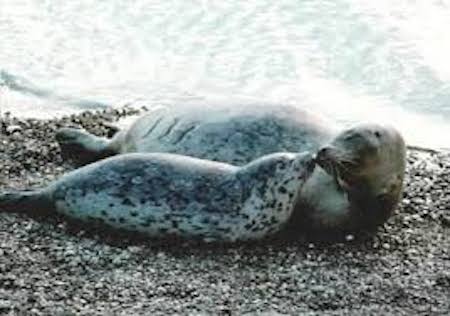
LONG-DISTANCE ROMANCE: It's harbor seal pupping time in Greater Farallones National Marine Sanctuary! See a seal pup on the beach? Mom could be feeding nearby. Love seals from afar (150ft.) & keep pets on-leash; disturbance can be fatal. Respecting distance helps them survive! (Photo Credit: Wash. Dept. Fish & Wildlife)
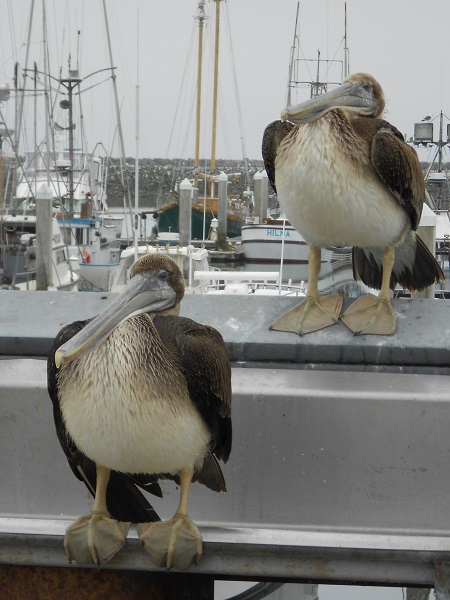
Welcome to Winged Wednesday! You can help reduce the risk of entangling pelicans on the coast by preventing their exposure to fishing line. Fishing lines can be placed in designated line-recycling bins found in most harbors on the coast. No bins near you? Take the line home and cut it into short 1-3 inch segments before disposing of it. To learn more about California seabirds and what Greater Farallones National Marine Sanctuary is doing to help seabirds thrive, visit http://farallones.noaa.gov/eco/seabird/ (Photo: Seabird Protection Network)
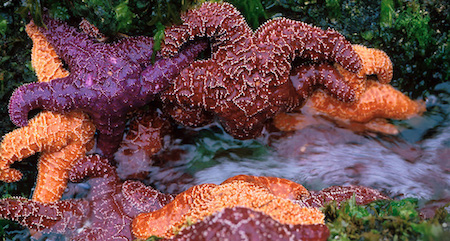
Tuesday Trivia Time! Are starfish really fish? (Photo: NOAA)
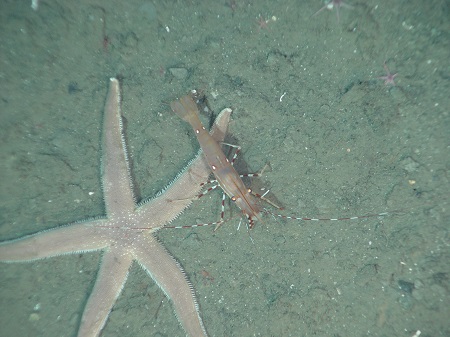
Happy Marine Life Monday! The body of the sand star (Luidia Foliolata) is made up of a small disc with long arms and can grow to have a diameter of 16 inches. It is found on soft sandy or muddy seabeds to depths of 2,000 feet. Its tube feet do not have suckers at the end, unlike many species of sea stars, and while it can move quickly across soft habitats, it loses traction on steep rocks. Sand stars generally feed on mollusks, worms, and sea cucumbers. (Ed Bowlby, NOAA/OCNMS)
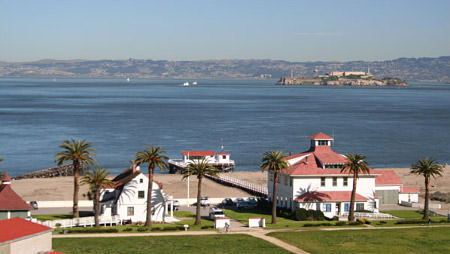
The Greater Farallones National Marine Sanctuary Visitor Center at Crissy Field is Closed. For the health and safety of our guests, volunteers, and employees, and as a precautionary measure to limit the spread of COVID-19, the Visitor Center WILL BE CLOSED UNTIL FURTHER NOTICE. We will continue to reassess the situation. We understand this closure is an inconvenience for visitors, and we apologize. Our top priority is the health of our guests who come to learn about the National Marine Sanctuary System, as well as the staff and volunteers who support our visitor centers.
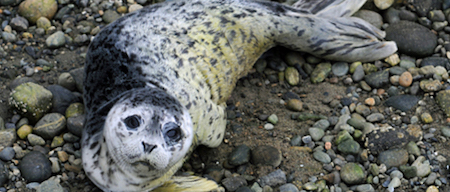
Harbor seal pups are a-poppin' on our shores! Healthy oceans sustain and satisfy small seals and even giant whales! We protect the seals, habitats, and ecosystem balance in Greater Farallones National Marine Sanctuary. (Photo: P. Davis, USFWS)
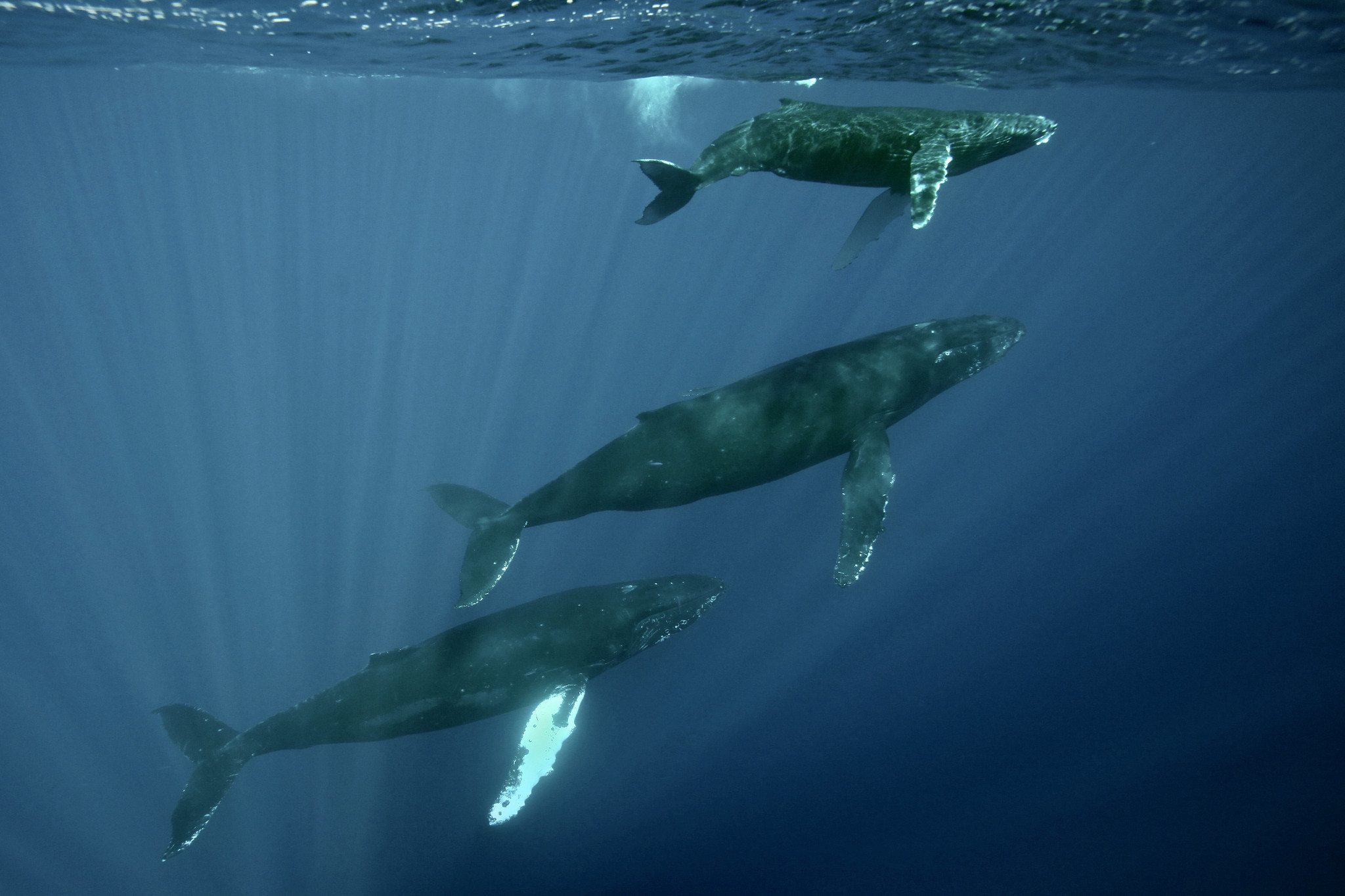
For the health and safety of our guests, volunteers, and employees, and as a precautionary measure to limit the spread of coronavirus (COVID-19), The Humpback Soirée is cancelled and will be rescheduled at a later date. We understand this is an inconvenience, and we apologize. Our top priority is the health of our guests who come to learn about the National Marine Sanctuary wildlife, as well as the staff and volunteers who support our programs. Stay well. (Photo: Ed Lyman/NOAA Fisheries Permit #14682-38079)
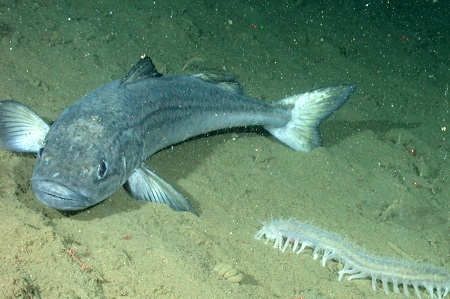
Happy Marine Life Monday! Sablefish (Anoplopoma fimbria) are deep sea fish found at depths of 300-2,700 meters. Their eggs develop in deep water and rise to the surface after they hatch. Adults reach lengths of about 3 feet and they can live to be more than 90 years old! Sablefish are opportunistic feeders that prey on other fish, squid, and jellies.They are often mistaken for cod, and in some cases are called black or blue cod although they are an unrelated species. (Photo Credit: Kevin L Stierhoff, NOAA/SWFSC)
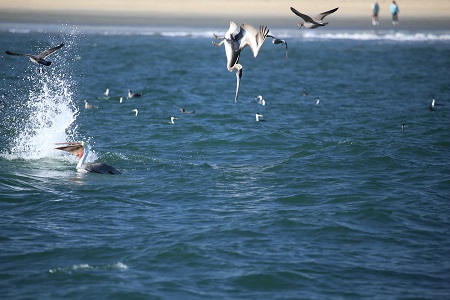
Welcome to Winged Wednesday! Brown pelicans patrol the coast, zeroing in on fishy prey. Once identified, they circle high, bank left, and nose dive straight into the water at a whopping 40 miles an hour. Don't get between a brown pelican and its next seafood snack! To learn more about California seabirds and what Greater Farallones National Marine Sanctuary is doing to help seabirds thrive, visit http://farallones.noaa.gov/eco/seabird/ (Photo: NOAA R/V Fairweather)
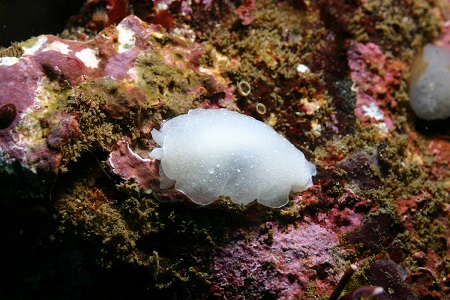
Happy Marine Life Monday! The California side-gill slug (Berthella californica) can be found from Alaska to Baja California. It has a distinct translucent white color with opaque white spots and it has a thin, white internal shell that extends about half the length of its body. It can reach lengths of up to 3 inches but usually is less than 1 inch long. (Photo Credit: Steve Lonhart, NOAA, MBNMS)
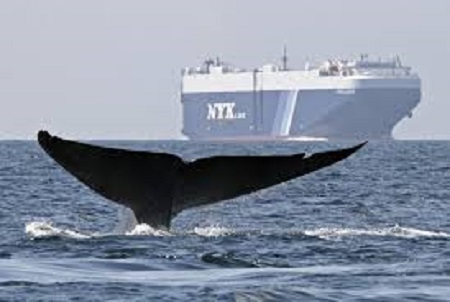
SANCTUARIES & SHIPPERS PROTECT ENDANGERED WHALES: Greater Farallones & Cordell Bank national marine sanctuaries, shipping firms & the state of CA are partnering to prevent whale deaths from collisions. Whale survival gains momentum when ships slow down in Greater Farallones National Marine Sanctuary! For more information: https://farallones.noaa.gov/eco/vesselstrikes/ (Photo: John Calambokidis)
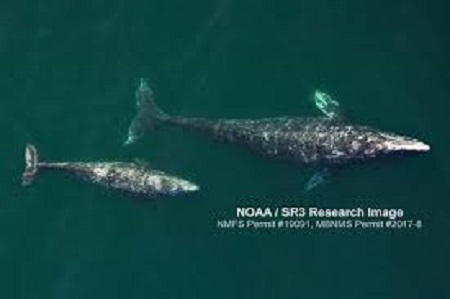
GRAY WHALE ALERT: Since FEB 19 a "skinny" gray whale has stayed in SF Bay vs. heading back out to the open-ocean in Greater Farallones National Marine Sanctuary. Biologists are tracking it, fearing a repeat of 2019’s Unexplained Mortality Event. Climate change impacts are being investigated. See https://go.usa.gov/xdwCb (Photo: NOAA)
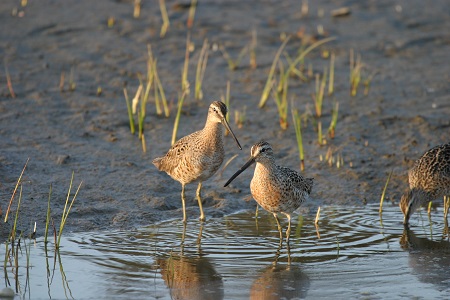
Happy Marine Life Monday! Long-billed dowitchers (Limnodromus scolopaceus) are medium-sized shorebirds with long bills (the females have longer bills than the males). Their bills have tactile receptors that allow them to feel their prey as they dig in the mud or sand for insects or invertebrates and they twitter at each other while feeding! Both males and females incubate the eggs, but only the males take care of the young after they hatch. (Photo Credit: David Ledig, USFWS)
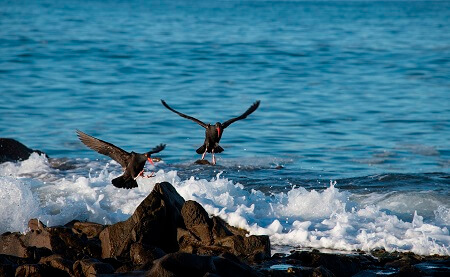
Welcome to Winged Wednesday! Black oystercatchers are commonly spotted on the rocky shorelines of Greater Farallones National Marine Sanctuary. At low tide, you can spot them in pairs foraging for limpets and mussels and prying them open with sharp jabs of their bill tips. To learn more about California seabirds and what Greater Farallones National Marine Sanctuary is doing to help seabirds thrive, visit farallones.noaa.gov/eco/seabird (Photo: Robert Schwemmer, NOAA, CINMS)
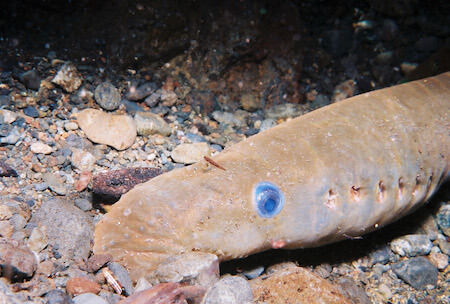
Happy Marine Life Monday! Pacific lamprey (Entosphenus tridentatus) are primitive fish with an eel-like body, round sucker-like mouth, and no scales. They are anadromous like salmon, meaning that they start life in freshwater, go on to spend most of their life in the ocean, and then migrate back to freshwater to breed. It is thought that they return to freshwater and may spend up to a year there before spawning, during which time they shrink in size by 20%! Adults are parasitic and feed on other fish, they in turn are preyed upon by sharks and marine mammals, such as sea lions. (Photo Credit: Roger Tabor, USFWS)
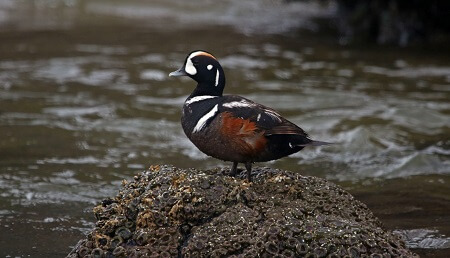
Happy Marine Life Monday! The harlequin duck (Histrionicus histrionicus) is aptly named for the males’ spectacular plumage which is almost costume-like. The females are brown with a distinct white spot behind their eyes. Harlequin ducks make an un-duck-like squeak which has led to the nickname “sea mouse”. They winter along the rocky coastal shoreline where they feed on small fish and invertebrates. (Photo: Peter Pearsall, USFWS)
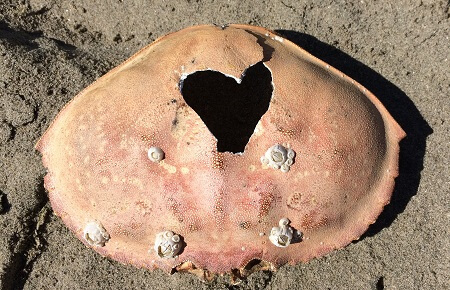
Happy Valentine's Day! Even on days when you're feeling "crabby", you might just spot a heart to brighten your day.(Photo: Sara Heintzelman, GFNMS,NOAA)
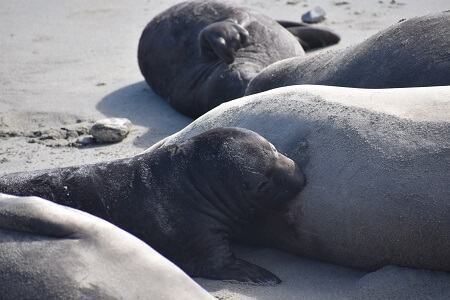
Sanctuary Explorations participants watched males battle for prime beach real estate and the right to mate, while females nursed their newborn pups at Año Nuevo State Park this past weekend. Elephant seal pups nurse for about 28 days before mom returns to the ocean to feed and leaves the pup on its own. During that short time they grow from 75 lbs to about 250 lbs thanks to super rich milk that can be up to 55% fat and has the consistency of mayonnaise! Learn more about the Sanctuary Explorations program and how to get out into your sanctuary to explore: farallones.noaa.gov/visit/exploration-program (Photo: Sara Heintzelman, GFNMS, NOAA)

Welcome to Winged Wednesday! Brandt’s Cormorants show off their dance moves to attract a mate. They point their wings back and head up to show off vivid blue throat patches. Make like a cormorant this Valentine’s Day and wave your wings in the air like you just don’t care! To learn more about California seabirds and what Greater Farallones National Marine Sanctuary is doing to help seabirds thrive, visit farallones.noaa.gov/eco/seabird (Photo: Roy Lowe USFWS)
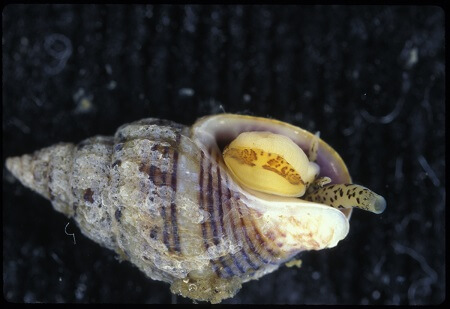
Happy Marine Life Monday! The variegated amphissa (Amphissa versicolor) is a small sea snail that can be found in the mid-intertidal zone along the Eastern Pacific. They are carnivores and feed on other intertidal inhabitants. The variegated amphissa has distinct ridges on its shell that run at an angle to its vertical axis; this helps distinguish it from the similar looking (but larger) wrinkled amphissa whose ridges run parallel. (Photo Credit: Steve Lonhart, NOAA, MBNMS)
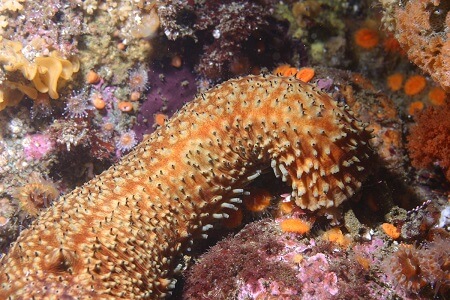
A WARTY SEA CUCUMBER's homely name belies its value in Asian cuisine. They dine on detritus, and recycle nutrients into the ocean. Overfishing has decimated some stocks, but California biologists are helping them recover. Look for these bumpy beasties in Greater Farallones National Marine Sanctuary. (Photo Credit: Steve Lonhart, NOAA)
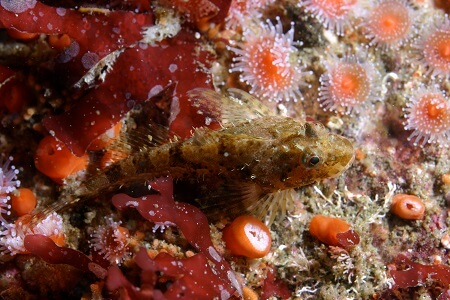
Happy Marine Life Monday! Scalyhead sculpins (Artedius harringtoni) are small fish, the males reach lengths of about 4 inches. They can be found in rocky intertidal and subtidal habitats from Alaska to southern California. They are masters of camouflage and can be identified from other sculpins by the orange lining on their gills and orange or red lines running through their eyes. The males guard unhatched eggs and are very territorial. (Photo Credit: Steve Lonhart, NOAA, MBNMS)
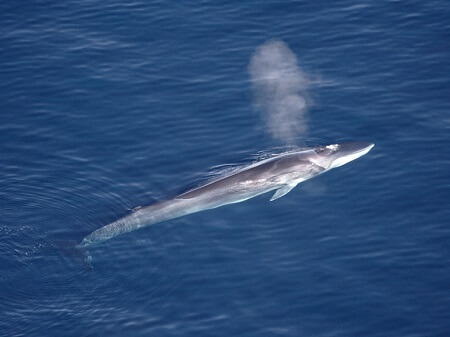
FIN-tastic! Using DNA analysis, biologists ID'd North Pacific fin whales, Balaena physeter velifera, as a unique subspecies, apart from their Atlantic and southern cousins. Velifera means "sail-bearing," a tribute to the large dorsal fin of this noble cetacean. You can see them in Greater Farallones National Marine Sanctuary. (Photo: Paula Olson, NOAA)
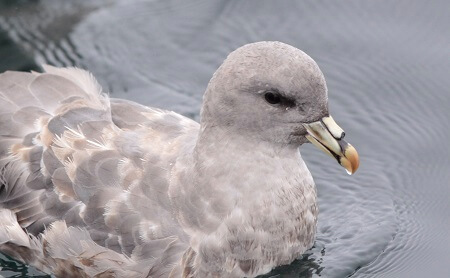
Welcome to Winged Wednesday! Northern Fulmars live entirely at sea and drink a lot of seawater when they’re feeding. How do they deal with all that salt? They have a special gland above their nasal passage that excretes a concentrated saline solution. To learn more about California seabirds and what Greater Farallones National Marine Sanctuary is doing to help seabirds thrive, visit farallones.noaa.gov/eco/seabird (Photo: Kaitlin Thoresen, NPS)
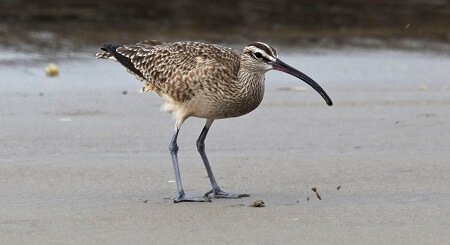
Happy Marine Life Monday! Whimbrels (Numenius phaeopus) are members of the sandpiper family. They have a distinct head pattern of dark and light brown stripes and a 3 inch long, down curved bill that is well designed to probe into the mud or sand for invertebrates. They have good ‘table manners’ and will frequently rinse off muddy prey before eating it and tear their food into smaller pieces. After feasting on delectable delights in the sanctuary during winter months, whimbrels head north to their breeding grounds in the subarctic tundras. (Photo Credit: Peter Pearsall, USFWS)
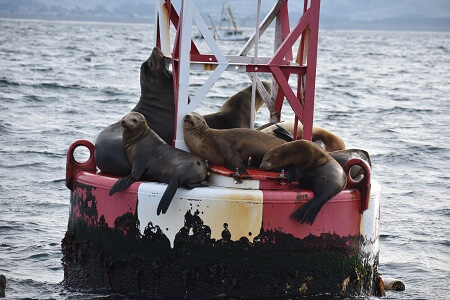
These California sea lions might have been having a sleepy Saturday snooze, but Sanctuary Explorations participants headed out to sea on a gray whale & wildlife viewing adventure! Learn more about the Sanctuary Explorations program and how to get out into your sanctuary to explore: farallones.noaa.gov/visit/exploration-program (Photo Credit: Sara Heintzelman, NOAA)
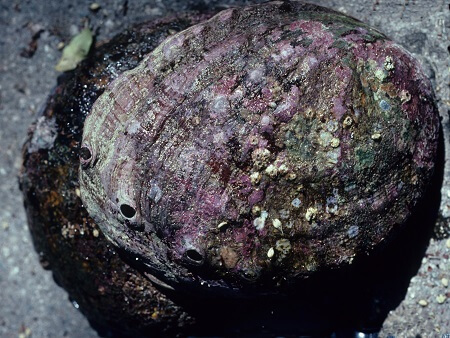
Happy Marine Life Monday! The red abalone (Haliotis rufescens) can be found in the low intertidal to depths of 180 meters! It is the largest abalone in North America and is a favorite food of both sea otters and humans. The abalone’s diet influences its shell color- if it eats brown or green algae, its shell will appear greenish or white. However, if it eats red algae, its shell will appear red or brownish! Distinct bands of color in the abalone’s shell can reflect seasonal or other changes in its diet as it grows. The red abalone truly demonstrates that you are what you eat! (Photo Credit: Dr. Dwayne Meadows, NOAA, NMFS, OPR)
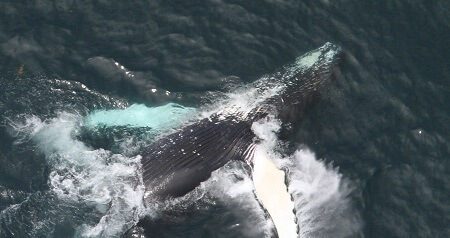
SLAP-HAPPY HUMPIES: Aussie scientists found evidence that, in addition to vocalizing, humpbacks use slapping sounds to communicate: thunderous full-body breaches to reach distant (>4km) whales, while pec- and tail slaps suffice for nearer neighbors. Ask any humpback in Greater Farallones National Marine Sanctuary. (Photo Credit: Jennifer Gatzke, NOAA Fisheries)
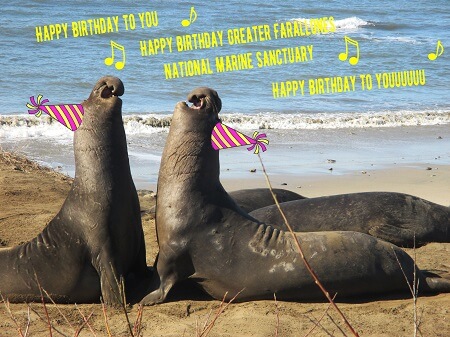
Greater Farallones National Marine Sanctuary was designated on January 16, 1981!
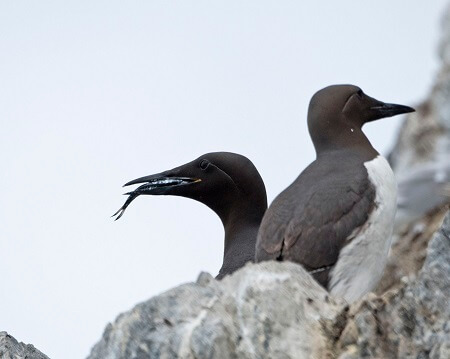
Welcome to Winged Wednesday! Thousands of Common Murres have the same resolution for 2019: fatten up. Spring is right around the corner and flab is fab, considering all the energy they'll need during breeding season. So, the hunt is on, and it's a race to the bottom of the sea for an all out fish-fest! To learn more about California seabirds and what Greater Farallones National Marine Sanctuary is doing to help seabirds thrive, visit farallones.noaa.gov/eco/seabird (Photo: Sarah Schoen, USGS)

Happy Marine Life Monday! The broad skate (Amblyraja badia) is a deep water species that is usually found at depths of 1,100-2,300 meters, but has been observed at a depth of 3,167 meters by a remotely operated vehicle (ROV)! This elusive, deep water skate is believed to be oviparous (meaning that it lays eggs) and it feeds on cephalopods (such as squid), crustaceans, and small bony fish. (Photo Credit: NOAA/MBARI)
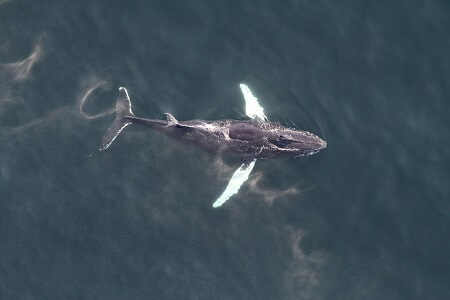
SHOCK ‘N JAW: To concentrate fish schools, humpbacks flash their bright-white pectoral fins to startle them into tight “baitballs,” then use their fins to swish the fish into their gaping maws, a move termed, “pectoral herding.” Now, what if whales had opposable thumbs?!! (Photo Credit: Kelly Slivka, NOAA Fisheries)
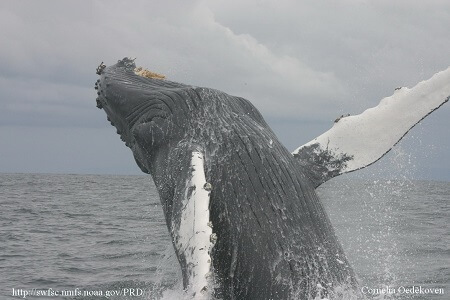
E.T. WHALE? The Search for Extraterrestrial Intelligence/SETI Inst., with NASA and the National Science Foundation, are using complex humpback whale song as an intelligence proxy for any ET life signals they may receive. (Think they taped our humpbacks here @GFNMS?) (Photo Credit: Cornelia Oedekoven, NOAA, SWFSC, CSCAPE)
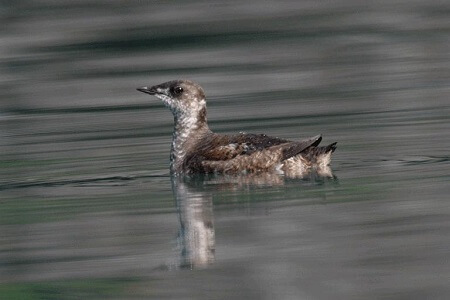
Happy Marine Life Monday! Marbled Murrelets (Brachyramphus marmoratus) are small seabirds that also rely on the forest- they nest in mossy old-growth trees along the coast and are usually found in trees that are 200+ years old! Their survival depends heavily on conservation of coastal old-growth forests. When at sea, they feed on small fish and zooplankton which they dive for and capture while using their wings to “fly” underwater to pursue prey. (Photo: USFWS)
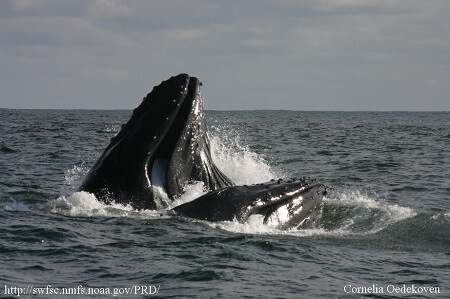
WILY WHALES: Scientists have discovered that humpback whales hunt fish schools by stealth, keeping their big mouths shut–literally–until they lunge at the very last minute, to avoid spooking them. In our sanctuary’s food-rich waters, a humpback can eat a ton each day in Greater Farallones National Marine Sanctuary. (Photo Credit: Cornelia Oedekoven, NOAA, SWFSC, CSCAPE)
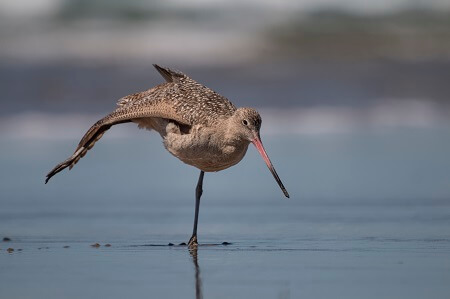
Welcome to Winged Wednesday! This Marbled Godwit’s New Years resolution: More Yoga! To learn more about California seabirds and what Greater Farallones National Marine Sanctuary is doing to help seabirds thrive, visit farallones.noaa.gov/eco/seabird (Photo: Peter Pearsall, USFWS)
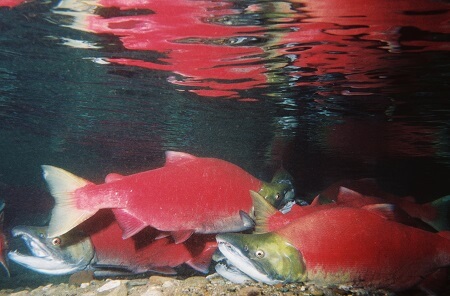
Happy Marine Life Monday! 2019 was the International Year of the Salmon, so it is only fitting to end the year featuring the sockeye salmon (Oncorhynchus nerka)! Sockeye are one of the smaller Pacific salmon species, usually reaching lengths of 1.5-2.5 feet and weighing 4-15 pounds. Most are anadromous-meaning that they hatch in freshwater streams, but head to sea as they mature, and finally return to freshwater streams to spawn. As they return to their freshwater spawning grounds, their heads turn green, their bodies turn bright red, and the males develop a humped back and hooked jaws! (Photo: Roger Tabor, USFWS)
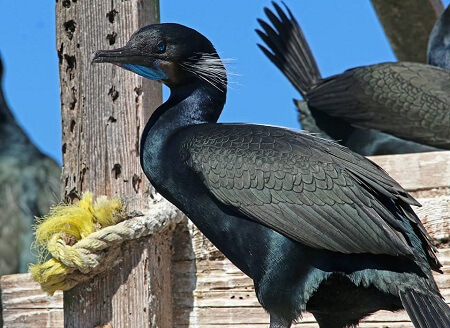
BIG BIRD! Greater Farallones National Marine Sanctuary boasts one of the world's largest Brandt's Cormorant populations. Of our three local cormorants, here’s how to ID it: think B for BIGGEST, B for its Bulbous head, B for its Bowling pin shape when standing upright, & its Blue throat patch when breeding! (Photo: NOAA)
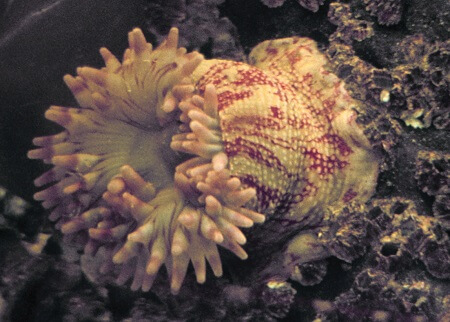
Happy Marine Life Monday! The Christmas anemone (Urticina crassicornis) is found in the low intertidal and subtidal and is aptly named with its olive green and red coloring! These anemones can grow to have a diameter of 3 inches, a height of 5 inches and their tentacles form a crown that can be 10 inches wide. The Christmas anemone is a carnivore, feeding on small fish or invertebrates that they stun with their tentacles and they can live for 60-80 years. (Photo Credit: NOAA's Estuarine Research Reserve Collection)

HOLY HAGFISH! Who wouldn't pale at this fellow's face? Its prodigious slime-slinging, & habit of eating prey alive from the inside out', are unendearing. They're harvested as 'eelskin' so don't look now, but you might have one in your pocket. Handsome is as handsome does. (Photo: NOAA)
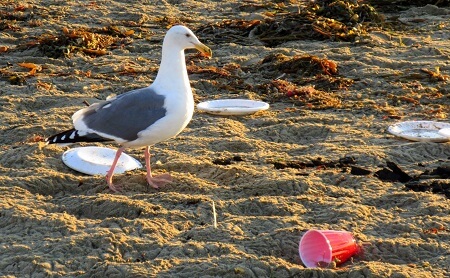
Welcome to Winged Wednesday! Wild animals like seabirds need nature's diet to remain healthy, safe, and free. The best way to help wildlife and seabirds when you’re on the coast is to avoid feeding them, whether on purpose, or by leaving behind food trash. Help keep wildlife wild! To learn more about California seabirds and what Greater Farallones National Marine Sanctuary is doing to help seabirds thrive, visit farallones.noaa.gov/eco/seabird (Photo: Seabird Protection Network)
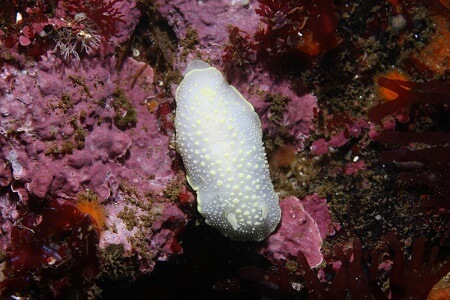
Happy Marine Life Monday! The yellow-edged cadlina (Cadlina luteomarginata) is a colorful dorid nudibranch (or sea slug) that can be found in the intertidal zone down to depths of about 20 meters along the west coast from Alaska to Mexico. This little mollusk is about the length of a quarter (25mm-40mm) and is a white oval shape with a distinct yellow border. It feeds on sponges and can often be found grazing on its favorite meal! (Photo: Steve Lonhart, NOAA/MBNMS)
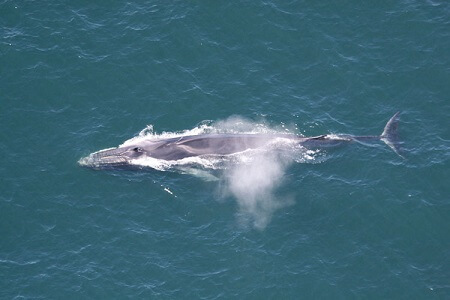
FLASHER! The fin whale's white lower jaw may help it round up fish into bait balls. Its dark, chevron-marked mantle and streamlined body are diagnostic. Second only to blues on the whale size scale, these swift, slender cetes feed on fish and krill. They, plus blues and humpbacks, make up the endangered Big Three in Greater Farallones National Marine Sanctuary. (Photo Credit: NOAA)
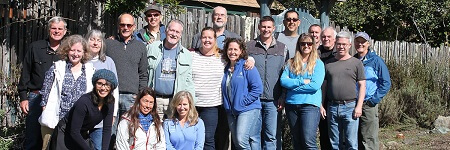
The Greater Farallones National Marine Sanctuary Advisory Council is recruiting! Do you work in ocean conservation? Interested in information exchange on issues affecting the health of the sanctuary? Apply to join our Sanctuary Advisory Council! The Council advises the sanctuary superintendent on priority issues and connects local communities with the sanctuary, and is currently recruiting for the Conservation Seat. Learn more and apply: farallones.noaa.gov/manage/sac_recruitment
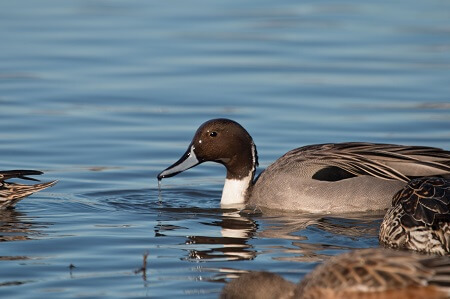
Happy Marine Life Monday! Northern Pintails (Anas acuta) are large ducks found in freshwater and saltwater wetlands. The females are mottled brown while the males have a distinct white neck and dark brown head. They are omnivores, feeding on seeds, worms, aquatic insects, and grains. They breed in the Great Plains, Canada, and Alaska and begin to nest as soon as the ice starts to thaw. Pintails migrate at night and can travel at speeds up to 48mph! (Photo Credit: Peter Pearsall, USFWS)
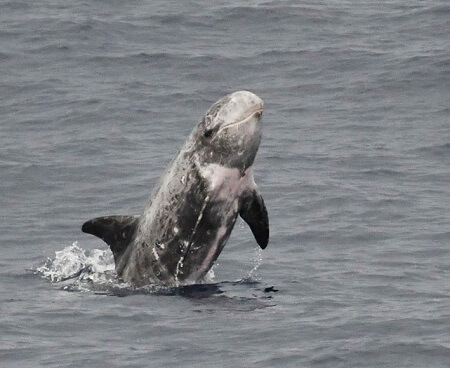
GRAY MATTER: Risso's dolphins, aka Grampus griseus, are deep-diving, squid-slurping cetaceans, famed for acrobatic pirouettes, somersaults, and tail-slaps. Bulbous heads with no beaks, and tall fins are their ™s. Born gray, then paling with age, they acquire heavy scarring from boisterous life in the fast lane in Greater Farallones National Marine Sanctuary. (Photo Credit: NOAA)
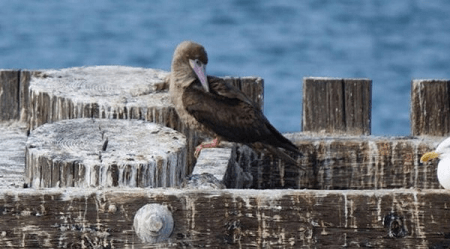
Welcome to Winged Wednesday! Last month among the Western Gulls and cormorants often perched on the breakwater just offshore of the Greater Farallones National Marine Sanctuary Visitor Center, we spotted a flash of red feet and a pale blue bill. It turns out a Red-footed Booby, typically found in the tropics, has made the historic pier its temporary home! To learn more about California seabirds and what Greater Farallones National Marine Sanctuary is doing to help seabirds thrive, visit http://farallones.noaa.gov/eco/seabird (Photo: Pete Winch, GFNMS)
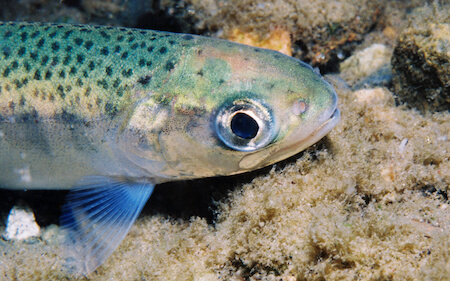
Happy Marine Life Monday! Steelhead or rainbow trout (Oncorhynchus mykiss) all start their lives in fast-moving, freshwater streams that have lots of oxygen. While rainbow and steelhead trout are the same species, some stay in freshwater for their whole lifespan (rainbow trout), while others (steelhead trout) migrate out to sea and spend a good portion of their lives in saltwater before returning to freshwater streams to spawn. The oceangoing steelhead trout tend to be larger than the rainbow trout and have weighed in at 55 pounds vs. the typical 8-11 pounds for the rainbow! (Photo: Roger Tabor, USFWS)
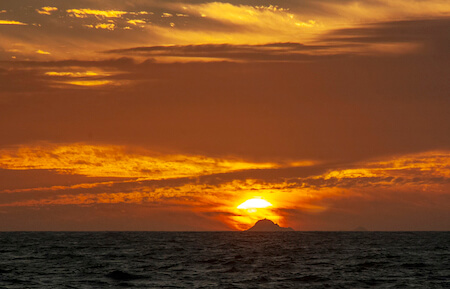
We are thankful for our amazing ocean and all of its inhabitants and we are thankful for all of you for helping us protect the wildlife, habitats, and cultural resources of one of the most diverse and bountiful marine environments in the world. (Photo: Robert Schwemmer/NOAA)

MEET YOUR TOUR GUIDE: This giant Pacific octopus would love to introduce you to our sanctuary, also a CA Marine Protected Area: some places warrant state and federal protection. Take a virtual “stroll” and discover who's out and about near Southeast Farallon Island in Greater Farallones National Marine Sanctuary. But avoid White Shark Way: the neighbors can be crotchety! https://youtu.be/iGtM-Cw3Cm4 (Photo: NOAA)
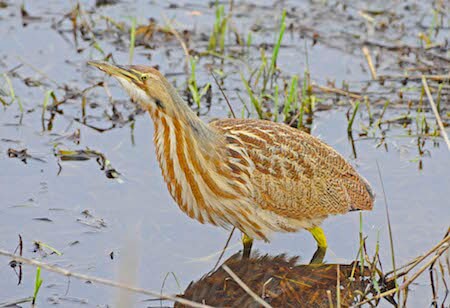
Happy Marine Life Monday! The American Bittern (Botaurus lentiginosus) is a medium-sized heron with a brown and white streaky pattern. When alarmed, they stretch out their neck and point their beak straight up toward the sky, helping them blend into the reeds of the marshes where they are commonly found. Their camouflage also makes them stealthy predators, going unnoticed by prey (such as fish, frogs, or insects) until it is too late for their unsuspecting meal. (Photo: Sallie Gentry, USFWS)
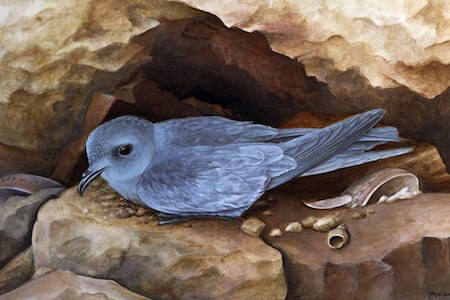
PETREL B&B: Half the world’s Ashy Storm-petrels feed and nest in island burrows at the Farallones. These vulnerable avians’ small breeding range (Cape Mendocino to the Coronados Islands, Mexico) highlights Greater Farallones National Marine Sanctuary’s importance species-wide. They run daintily across the surface, picking up krill, larval fish & squid. (Image: NPS)
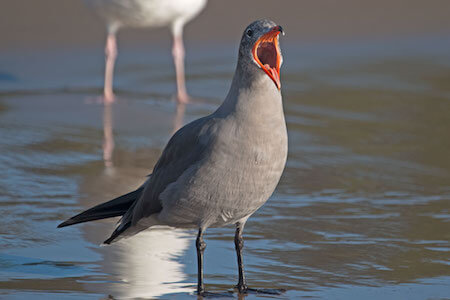
Welcome to Winged Wednesday! Don’t know your gulls? Start with the beginner-level Heerman’s Gull. They are the only white-headed, gray-bodied gull found on the west coast of North America! To learn more about California seabirds and what Greater Farallones National Marine Sanctuary is doing to help seabirds thrive, visit http://farallones.noaa.gov/eco/seabird (Photo: Peter Pearsall USFWS)

Happy Marine Life Monday! The Nanaimo horned dorid (Acanthodoris nanaimoensis) is a nudibranch, a shell-less sea slug. The word nudibranch means “naked gills” and this group of mollusks is commonly divided into two groups: the dorids and the aeolids. Dorids, such as the Nanaimo horned dorid, have a distinct gill plume as seen here. In contrast, aeolids have cerata, structures used for respiration and defense, spread across their back. (Photo Credit: Steve Lonhart, NOAA/MBNMS)

BLUE WHALE BLUES: Nearshore sightings of Balaenoptera musculus are scarce this year, as these giant "foodies" indulge their near-exclusive krill diet far offshore. Despite their picky pecking, GFNMS works to remove threats. (Photo Credit: Dan Shapiro, NOAA/GFNMS)
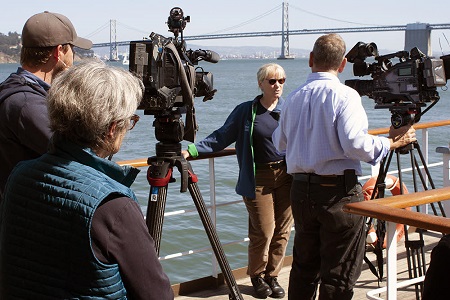
FRAMED! Greater Farallones Research Coordinator Jan Roletto, in the frame with network news, outlines October's Deep Sea Corals cruise off the Redwood Coast to identify especially rich, vulnerable marine habitats thousands of feet deep in Greater Farallones National Marine Sanctuary. (Photo Credit: Justin Holl, NOAA/GFNMS)
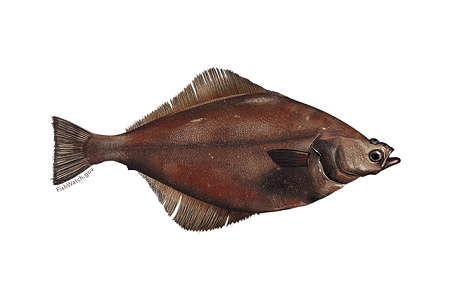
Happy Marine Life Monday! Arrowtooth flounders (Atheresthes stomias) are large, brownish colored flatfish that grow slowly but can live up to 27 years. The males reach lengths of about 2 feet and females can reach lengths of about 3 feet. Arrowtooth flounders are right-eyed flounders. Like other flatfish, they start life with one eye on either side of their head and as they develop, one eye migrates over to the other side of their head resulting in both eyes on one side (in this case the right side). RIGHT ON! (Image: NOAA)
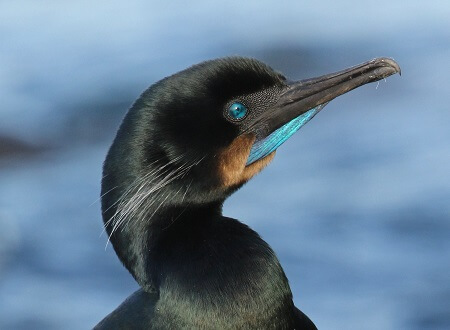
THIS "OLE BLUE-EYES" doesn't croon sentimental love songs; a deep, guttural "oink" is the Brandt's Cormorant's (Phalacrocorax penicillatus) entire vocal repertoire. But in breeding season it sports a seductive, brilliant electric blue gular (throat) patch. See him in Greater Farallones National Marine Sanctuary! (Photo Credit: David Ledig, BLM)
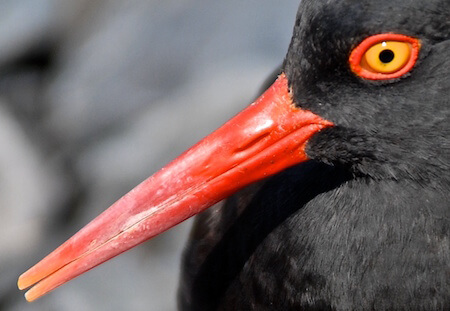
Welcome to Winged Wednesday! Calling all seabird enthusiasts! Can you identify this seabird from its distinctive beak and eye alone? To learn more about California seabirds and what Greater Farallones National Marine Sanctuary is doing to help seabirds thrive, visit http://farallones.noaa.gov/eco/seabird (Photo: Kaitlin Thoresen NPS)
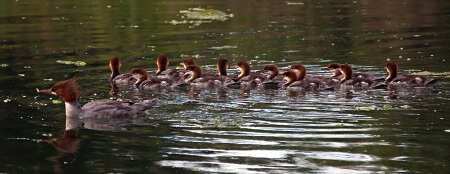
Happy Marine Life Monday! Common Mergansers (Mergus merganser) are among the largest of ducks but are more elongated than some other duck species and not as stocky. They are clumsy on land and if startled, they will run in a very upright position similar to penguins to escape. They lay a clutch of 9-12 eggs each year and will sometimes place their eggs in the nests of other birds (known as egg dumping)! (Photo: Peter Pearsall, USFWS)
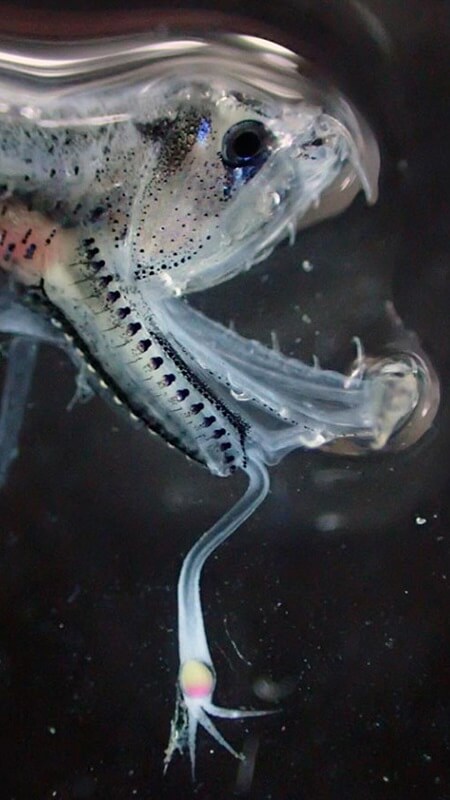
FIRE-BREATHING DRAGONS don't do well underwater: their fires fizzle, their scales rust. But dragonfish (Stomiiadae) use fearsome-looking (but weak) jaws to capture large prey. Technique over brute force! (Photo Credit: NOAA OER)
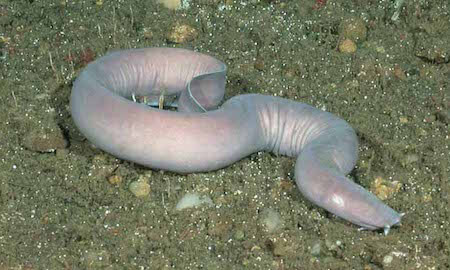
Happy Marine Life Monday! Pacific hagfish (Eptatretus stoutii) eat both live and dead prey, although they can go for months without any food at all. They can absorb nutrients through their skin and will burrow into dead animals for a passive meal. Hagfish produce slime as a defense- another fish will end up with a mouthful of slime instead of a meal while the hagfish ‘slips’ away! (Photo Credit: Dave Murfin, NOAA)
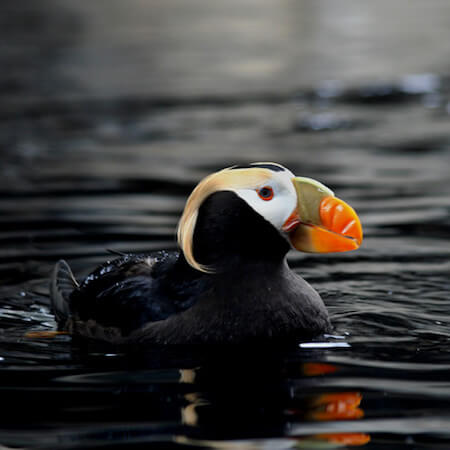
Welcome to Winged Wednesday! The Tufted Puffin is Halloween ready, are you? Get inspiration from its striking white robber's mask, candy-corn bill, and streaming Goldilocks head-plumes! To learn more about California seabirds and what Greater Farallones National Marine Sanctuary is doing to help seabirds thrive, visit http://farallones.noaa.gov/eco/seabird (Photo: NOAA)
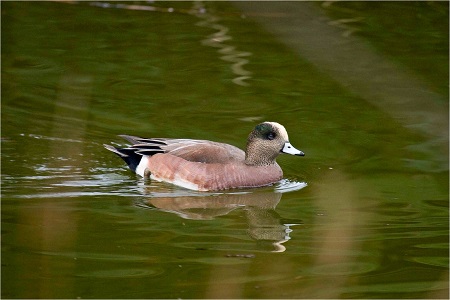
Happy Marine Life Monday! American Widgeons (Mareca americana) are dapper dabbling ducks. They are sometimes known as ‘baldplate’, a nickname earned due to the light stripe of feathers on their heads. American Widgeons primarily feed on plants, both in the water and on land, and their short bills are well adapted to pluck plants from fields. During their breeding season they eat more insects than other times of the year. (Photo Credit: Roy Lowe, USFWS)
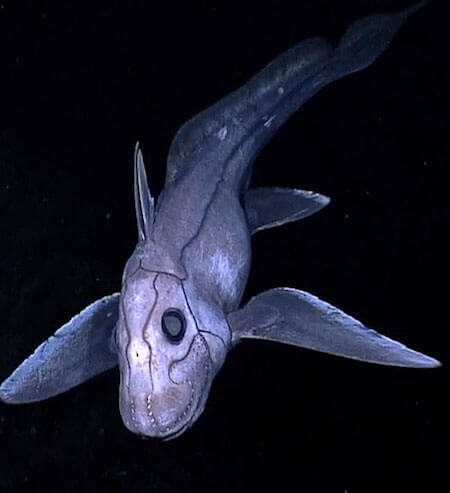
I'M READY FOR MY CLOSEUP. The pores on this chimaera's rostrum (snout) detect electrical signals from potential prey. Distant relatives of sharks, they live at depths devoid of light - to 8,500 ft., so other senses replace vision. (Photo Credit: NOAA-OER)

SOME DAYS YOU EAT THE BEAR ... and some days the bear eats you. This wreckfish (a Smart Seafood Choice) just ruined this poor shark's day. Karmically speaking, what goes around comes around, even in the ocean food web. (Photo Credit: NOAA-OER)
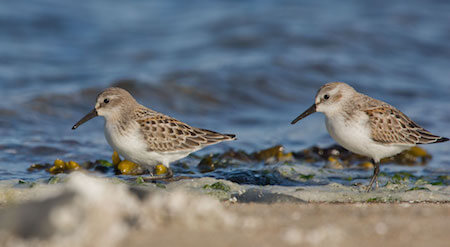
Happy Marine Life Monday! The Western Sandpiper (Calidris mauri) is the smallest of the sandpipers found in our area. They probe into mud or shallow water with their bill to feed on insects, crustaceans, mollusks, and worms. While they have a small breeding range limited to western Alaska, they are one of the most abundant shorebirds in North America and can be spotted in huge flocks along the shores of Greater Farallones National Marine Sanctuary. (Photo Credit: Peter Pearsall, USFWS)
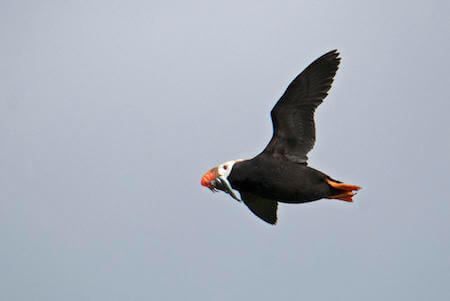
Welcome to Winged Wednesday! A Tufted Puffin can hold up to 10 fish in its beak at a time. But it can’t catch them all at once. Tufted Puffins have a specialized raspy tongue that grips onto fish while it opens its beak to catch more. Talk about efficient hunting! To learn more about California seabirds and what Greater Farallones National Marine Sanctuary is doing to help seabirds thrive, visit http://farallones.noaa.gov/eco/seabird/ (Photo: Sarah Schoen, USGS)
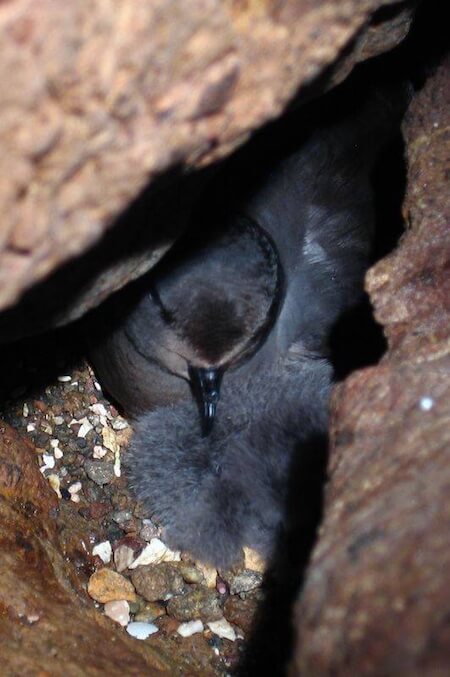
Happy Marine Life Monday! Ashy storm-petrels (Oceanodroma homochroa) are small seabirds, reaching lengths of about 8 inches and only weighing 1.3 oz! The global population is estimated to be about 10,000 individuals which breed on 17 islands in the northeast Pacific. About half of the world’s population nests on the Farallon Islands. While ashy storm-petrels only spend the breeding season with their mate, they do return to the same nesting site and same mate year after year. (Photo Credit: NPS)
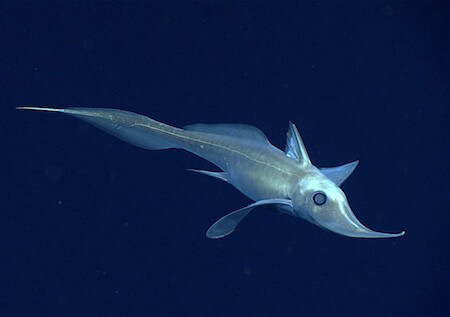
SLEEK, SVELTE & SLIGHTLY SHARKY: Chimaeras are distant cousins to sharks, AKA ghost sharks or spookfish. Their mild expressions belie their venomous dorsal spines, so don't touch next time you're diving to 8,500 ft. depths. (Photo Credit: NOAA-OER)
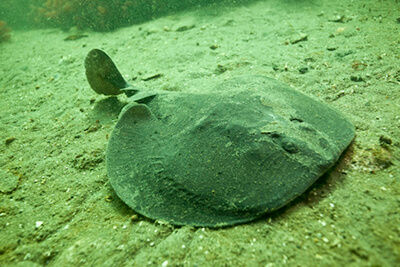
Happy Marine Life Monday! Pacific electric rays (Tetronarce californica) actively feed on other fish such as herring and halibut at night. They stun their prey with an electric current which has been measured at 50 volts! This species is ovoviviparous, meaning that the mother produces eggs, but they stay within her body while they develop. After hatching inside the mother, the pups then appear to have a live birth. Pacific electric rays may have litters with up to 17 pups! (Photo Credit: Chad King, NOAA/MBNMS)
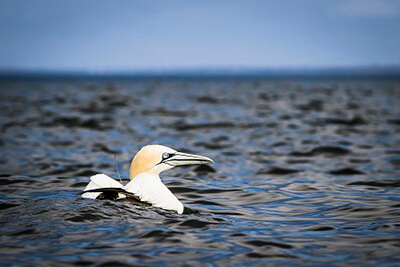
Welcome to Winged Wednesday! How did a North Atlantic seabird end up living in Half Moon Bay? It's likely the three thousand mile journey was an accident. Northern Gannets search for mackerel and herring in parts of the Arctic Ocean where there’s no ice. One winter with less ice probably led a single Northern Gannet so far it ended up crossing into the Pacific Ocean. Have you spotted our favorite lonely Gannet in our sanctuary waters? Learn more about California seabirds and what Greater Farallones National Marine Sanctuary is doing to help seabirds thrive. (Photo: Jonathan Fiely USGS)
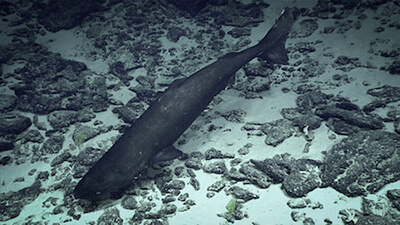
Happy Marine Life Monday! Pacific sleeper sharks (Somniosus pacificus) generally grow to lengths of about 14 feet, but is thought that they possibly reach lengths of up to 23 feet! Their large mouths act as vacuums to suck prey in, and their sharp teeth then chop up prey too big to swallow whole. They feed on giant pacific octopus, squid, fish, shrimp, and even snails. There is some evidence that they may consume marine mammals. While they are difficult to age, they are suspected to be a long lived species. (Photo: NOAA Office of Ocean Exploration and Research)

Happy Marine Life Monday! Salmon sharks (Lamna ditropis) can grow to be 10 feet
long, but most are in the 6-8 foot range. They can maintain core body and stomach
temperatures that are higher than the surrounding water temperature; other species such
as white sharks, threshers, and makos can do this as well but it is rare among fish as a
whole.
(Photo: Washington Department of Fish and Wildlife)
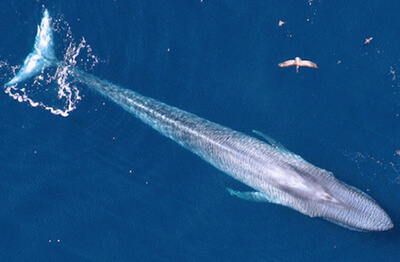
THE SCOOP ON WHALE POOP: Since whales must surface to breathe, they produce "flocculent plumes" of poop in the photic (sunlit) layer, fertilizing algae & nourishing the entire food web. Where higher densities of whales occur, bigger fisheries do, too. Marine Miracle-Gro in Greater Farallones National Marine Sanctuary! (Photo Credit: NOAA Fisheries)
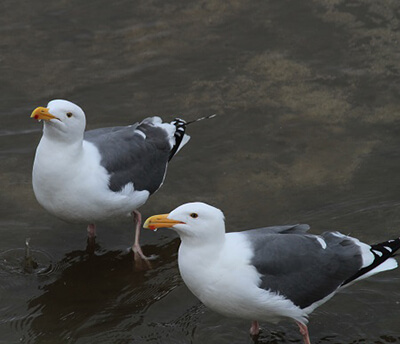
Welcome to Winged Wednesday! Do you know your gulls? To spot an adult Western Gull look for pink legs and the red dot on its lower bill. It takes four years for them to develop this appearance, slowly transforming from the mottled brown plumage of juveniles. Learn more about California seabirds and what Greater Farallones National Marine Sanctuary is doing to help seabirds thrive. (Photo: Sage Tezak GFNMS)
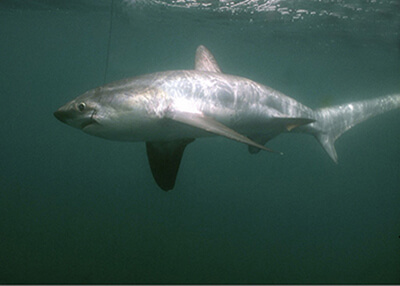
Happy Marine Life Monday! Common thresher sharks (Alopias vulpinus) are slow growing but can reach lengths of up to 18 feet and may live for up to 50 years. Females have a 9 month gestation period and then give birth to 2-4 live pups. They feed on small fish, such as anchovies or sardines, which they swat with their long tail to stun before preying on them!(Photo Credit: Walter Heim, NOAA, SWFSC)
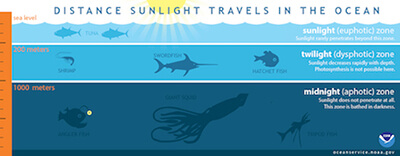
THE PHOTIC ZONE. Not a sci-fi 5th dimension, it's the ocean's upper layer where light reaches and ~90% of marine life lives. Algae run riot in a photosynthetic frenzy, fertilized by organic matter. Fish, invertebrates, birds and mammals enjoy a little “light refreshment". Image: NOAA
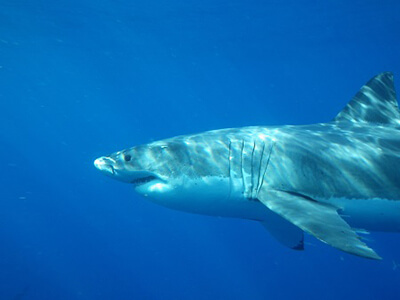
SHARKY SURPRISE! Years ago scientists found white sharks visit San Francisco Bay when whites' e-tags 'pinged' salmon tag receivers! Recently, a hooked white took fishermen for a "Nantucket sleighride": whites just want to have fun in Greater Farallones National Marine Sanctuary! (Photo Credit: Peter Winch, NOAA/GFNMS)
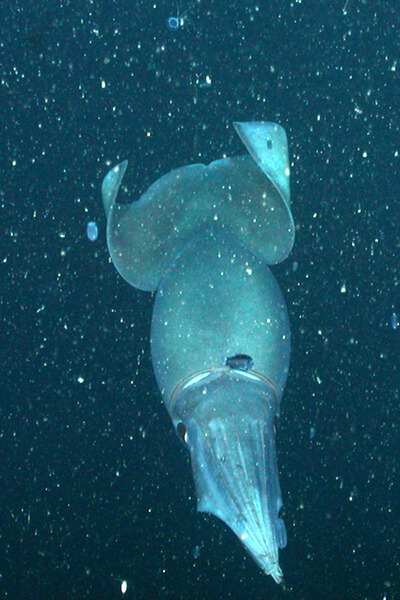
Happy Marine Life Monday! Humboldt squid (Dosidicus gigas) can reach lengths of about 6 feet and weigh up to 100 pounds! However, these very large and fast growing animals are short lived, rarely living more than one year. Their skin contains chromatophores, structures that allow the squid to change its coloring and patterns. If they are alarmed, they may flash warning colors and patterns and use their jet-propulsion system to swim away from danger at speeds up to 15mph! (Photo: Kevin L. Stierhoff, NOAA/SWFSC)
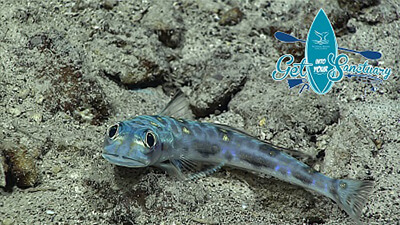
Don't look so worried! You still have the weekend to enter the Get Into Your Sanctuary Photo Contest! All entries due by September 2! (Photo Credit: NOAA Office of Ocean Exploration and Research, 2017 American Samoa)
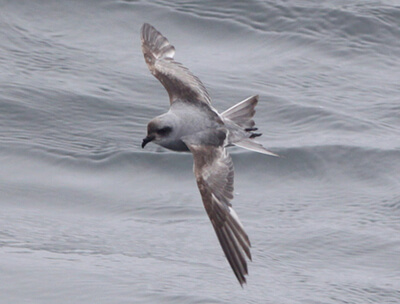
Happy Marine Life Monday! Fork-tailed storm-petrels (Oceanodroma furcata) are small seabirds reaching lengths of about 8 inches and only weighing 2-3 ounces! They are the only silvery- gray member of their family, while other storm-petrels have mainly black plumage. They lay a single egg which is approximately 20% of the female’s body weight; this is one of the largest egg to body weight ratios of any bird. (Photo Credit: Sophie Webb, NOAA/SWFSC)
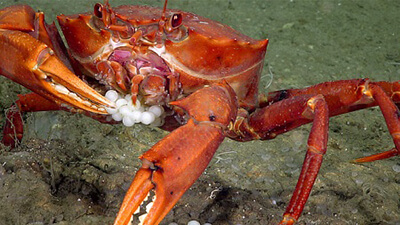
DEEP, DAINTY DINER: NOAA scientists off the Southeastern United States found this chaceon crab at 3,018 ft. scarfing down a nestful of (sculpin?) eggs. Amphipods -smaller crab cousins- swarmed over its mouth parts: a caviar cleanup crew. All tidy now? (Photo Credit: NOAA Office of Exploration)

Happy Marine Life Monday! Coralline sculpins (Artedius corallinus) are common residents in tidepools along the coast from Washington to Baja California. Although common, these small fish are hard to spot, their camouflage is amazing and they virtually disappear among their surroundings. During a high tide, coralline sculpins will venture out of their home pools to hunt for food, but will return back to their pool as the tide goes out again! (Photo Credit: Chad King, NOAA/MBNMS)
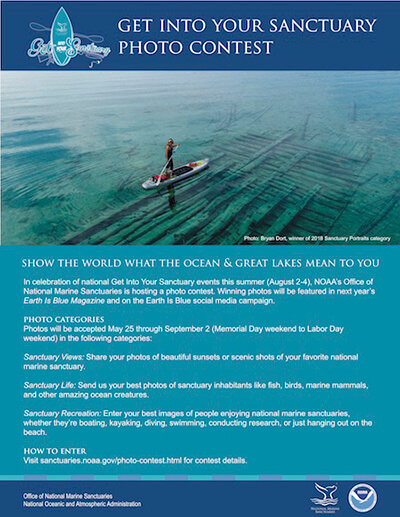
It isn’t too late to enter the annual Get Into your Sanctuary photo contest! Enter your photos by September 2 in any of the three categories (sanctuary views, sanctuary life, and sanctuary recreation), and your photo could be featured on Earth Is Blue Magazine!
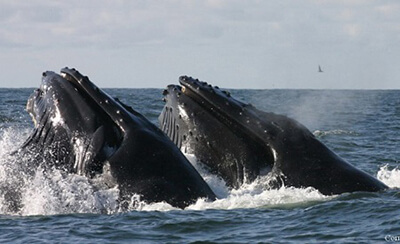
SEAFOOD BUFFET! On AUG 8 biologists saw 28 humpbacks at SE Farallon Isl.; AUG 11, 35 whales spotted! The joint is jumpin'! Moving gradually north, they stop in our sanctuaries to feast on anchovies and krill. Bon Appetit, big guys! (Photo Credit: Cornelia Oedekoven/NOAA)
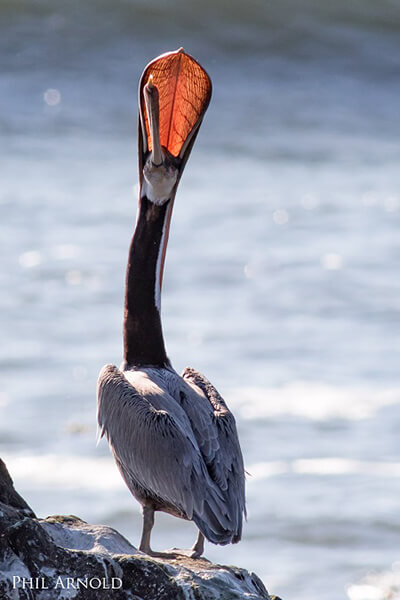
Welcome to Winged Wednesday! Here’s a scoop for you: Brown Pelicans are awesome at eating. They spot fish underwater while flying 50 feet above the surface. Then, when they plunge into the water the extremely flexible gular pouch on their bill expands to scoop up fish and up to three gallons of water like a fishing net. With a flick of their head, the water drains out and the pelican swallows the fish whole. Learn more about California seabirds and what Greater Farallones National Marine Sanctuary is doing to help seabirds thrive. (Photo: Phil Arnold, MBNMS)
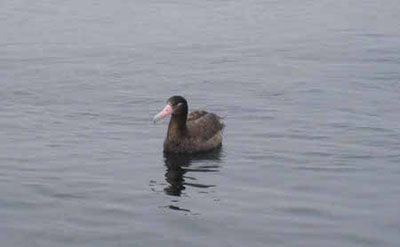
Happy Marine Life Monday! Short-tailed albatross (Phoebastria albatrus) are larger than the Laysan & black-footed albatrosses and have a uniquely pink bill! They are long-lived, slow to mature, and were hunted for their feathers to near extinction. Listed under the U.S. Endangered Species Act in 2000, their population is slowly increasing again. These pelagic birds feed on squid, fish, shrimp, and other crustaceans. (Photo Credit: Lisa Etherington, NOAA/CBNMS)
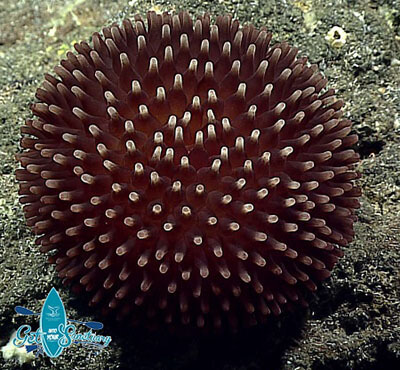
WHAT IN THE WORLD IS IT?
a. A pom pom anemone
b. A dryer ball
c. The koosh ball you lost when you were 8
Can you do better? Enter the Get Into Your Sanctuary Photo Contest!
(Photo: NOAA Okeanos Explorer Program, 2016 Deepwater Exploration of the Marianas, Leg
3)
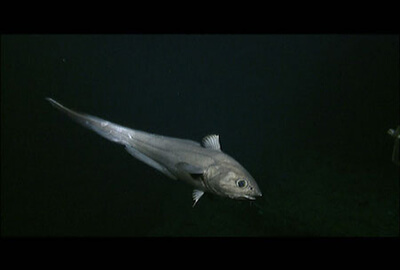
Happy Marine Life Monday! Giant grenadiers (Albatrossia pectoralis) are very abundant in the northern part of the Pacific Ocean and can be found in deep waters off the west coast from Alaska down to Baja California. They can reach lengths of nearly 7 feet and are found at depths from 450-11,500 feet! Their main prey is squid, including the elusive vampire squid. (Photo Credit: NOAA/MBARI)
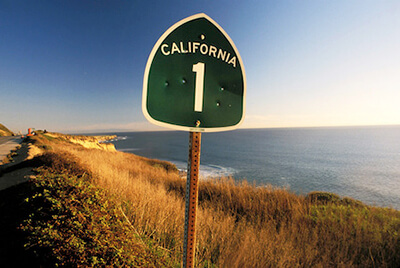
Get into Your Sanctuary Weekend is here! How are you celebrating? If you are still looking for an exciting adventure in your sanctuary, check out Greater Farallones Get Into Your Sanctuary Storymap!
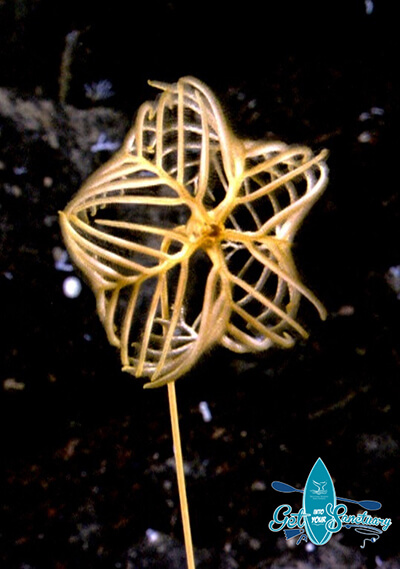
WHAT IN THE WORLD IS IT?
a. A pinwheel
b. A sea lily crinoid
c. A sea palm
Can you do better? Enter the Get Into Your Sanctuary Photo Contest!
(Photo: NOAA Okeanos Explorer Program, INDEX-SATAL 2010)

Celebrate Greater Farallones National Marine Sanctuary with our Get Into Your Sanctuary Partner Fitzgerald Marine Reserve - Friends of FMR on Sunday August 4! Stop by Fitzgerald Marine Reserve from 9am-3pm, check out the harbor seals through spotting scopes and learn about these incredible marine mammals. Explore the amazing intertidal habitat at the edge of the sea where animals and algae survive under ever changing conditions. Fitzgerald Marine Reserve Sealsitters (Photo Credit: Steve Lonhart / NOAA MBNMS)
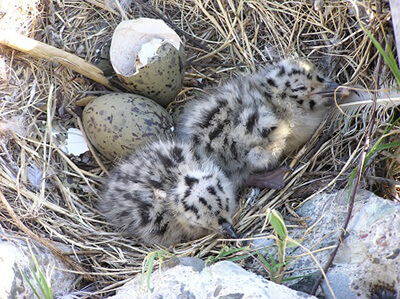
Welcome to Winged Wednesday! How are eggshells strong enough to protect chicks, yet weak enough for them to break when it’s time to hatch? Perfect design. Eggshells slowly thin over the incubation period and embryos grow stronger by absorbing the extra calcium right into their own bones. They also grow an “egg tooth” at the end of their bill to help them break through or ‘pip’ the shell when they’re ready to hatch. The egg tooth falls off several days after hatching. Learn more about California seabirds and what Greater Farallones National Marine Sanctuary is doing to help seabirds thrive. (Photo: Susan Euing, USFWS)
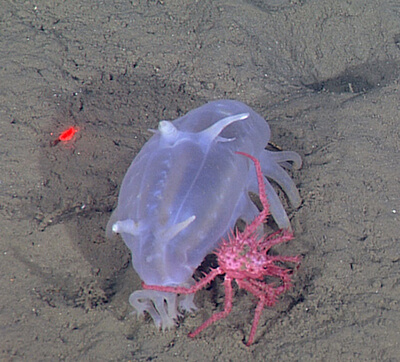
Happy Marine Life Monday! Sea pigs (Scotoplanes globosa) are a species of sea cucumber; and are a translucent white color with 5-7 pairs of limbs extending from their body that help them move across the sea floor. These deep sea creatures are frequently spotted with a crab (from the family Lithodidae), as seen here. They are deposit feeders, eating food that has fallen to the depths of the ocean. (Photo: NOAA/MBARI)
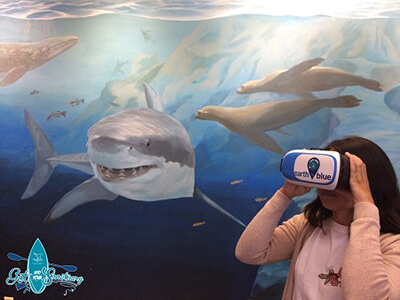
Dive into your sanctuaries! Stop by the Greater Farallones Visitor Center to take a virtual reality dive into the sanctuaries. August 2,3,&4, 10am-4pm. Free! No reservation required. Immerse yourself in the ocean and your national marine sanctuaries without getting wet! These virtual reality voyages use 360-degree images to highlight the amazing habitats, animals, and cultural resources you can find in each national marine sanctuary.

Join our Get Into Your Sanctuary Partner Oceanic Society on a whale watching trip in Greater Farallones National Marine Sanctuary during the Get Into Your Sanctuary celebration August 2-4! Travel under the Golden Gate Bridge and 27 miles out to the Farallon Islands. In these nutrient rich waters you can search for humpback and blue whales, seabirds such as the Tufted Puffin and Common Murre, seals, sea lions, jellies and more! (Photo Credit: Sophie Webb, NOAA, SWFSC)
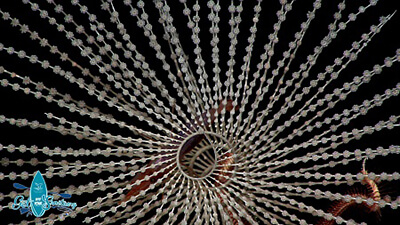
WHAT IN THE WORLD IS IT?
a. Iridogorgia coral
b. The underside of a christmas tree worm
c. A spiral-shaped egg case
Can you do better? Enter the Get Into Your Sanctuary Photo Contest!
(Photo: NOAA Office of Ocean Exploration and Research, 2015 Hohonu Moana)
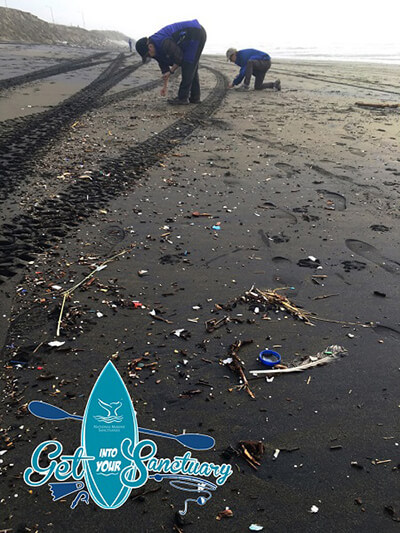
Beachcombing (and picking up any trash you find while you're at it) is a great way to "Get into Your Sanctuary"! What is the most unusual thing you've found on a beach in Greater Farallones National Marine Sanctuary? (Photo Credit: Kate Bimrose, NOAA/GFNMS)
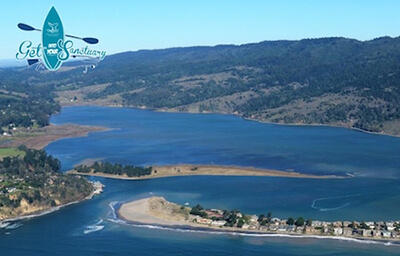
Looking for a way to celebrate Get into Your Sanctuary and to make it an even more amazing place? Roll up your sleeves and help restore Kent Island in Bolinas Lagoon to its natural beauty by removing non-native plants on Friday, August 2! (Photo: Bob Wilson)
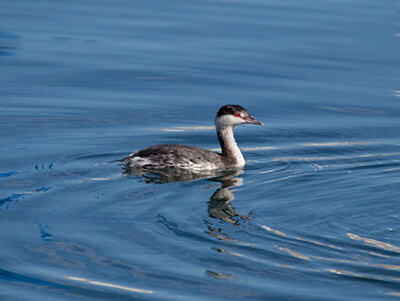
Happy Marine Life Monday! The Horned Grebe (Podiceps auritus) gets its name because it develops patches of yellow feathers behind its eyes during the breeding season that resemble horns. The Horned Grebe is a small grebe, but slightly larger than the Eared Grebe and the Pied-billed Grebe; reaching lengths of 10-12 inches with a wingspan of 18 inches. During the winter months they will sometimes feed in flocks, but are mostly seen as solitary animals. (Photo: Steve Lonhart, NOAA/MBNMS)
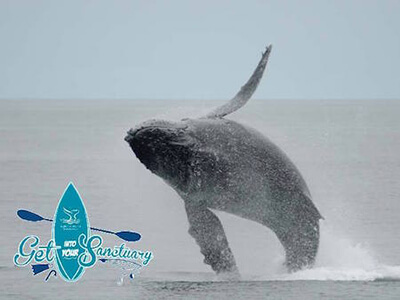
Join our Get Into Your Sanctuary Partner San Francisco Whale Tours on a whale watching trip in Greater Farallones National Marine Sanctuary during the Get Into Your Sanctuary celebration August 2-4! Travel under the Golden Gate Bridge and 27 miles out to the Farallon Islands. In these nutrient rich waters you can search for humpback and blue whales, seabirds such as the Tufted Puffin and Common Murre, seals, sea lions, jellies and more! (Photo Credit: Shannon Lyday, NOAA)
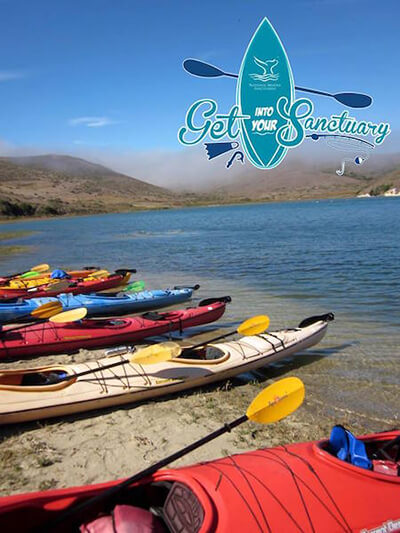
Experience Greater Farallones National Marine Sanctuary firsthand by paddling with our Get into Your Sanctuary Partner Point Reyes Outdoors August 2, 3, or 4! They offer a variety of opportunities for you to see the amazing views and marine life within our sanctuary. (Photo Credit: Sara Heintzelman, NOAA, GFNMS)
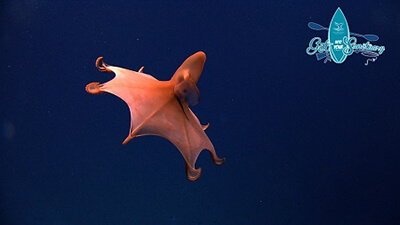
WHAT IN THE WORLD IS IT?
a. A giant pacific octopus
b. A dumbo octopus
c. A vampire squid
Can you do better? Enter the Get Into Your Sanctuary Photo Contest
(Photo: NOAA OKEANOS EXPLORER Program, Oceano Profundo 2015; Exploring Puerto Rico's
Seamounts, Trenches, and Troughs)
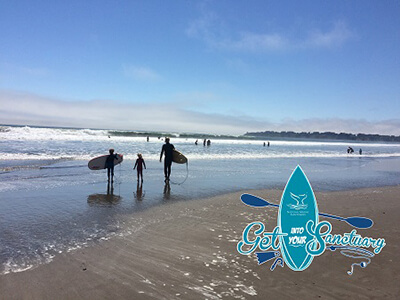
Surfing is a fun way to "Get into Your Sanctuary"! There are many good surf spots in Greater Farallones National Marine Sanctuary, but always check ocean conditions before you go! (Photo Credit: Sara Heintzelman, NOAA/GFNMS)
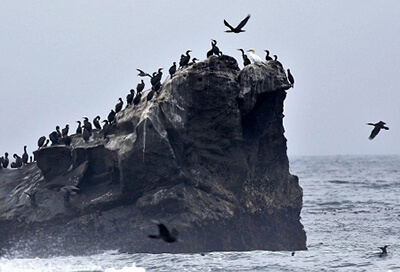
Welcome to Winged Wednesday! The first Northern Gannet spotted in the entire Pacific Ocean is still the only one on our coast. Since 2012 this single avian 'bachelor' from the North Atlantic has caused quite a flutter; mingling and fruitlessly searching for a mate among the resident seabirds of the Farallones, Alcatraz, and Half Moon Bay. Can you spot the lonely gannet among the cormorants in this photo of Pillar Point Rock? Learn more about California seabirds and what Greater Farallones National Marine Sanctuary is doing to help seabirds thrive. (Photo: Jack Sutton, GFNMS/NOAA)
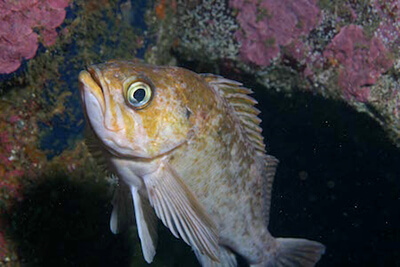
Happy Marine Life Monday! Kelp rockfish (Sebastes atrovirens) are generally tan or pinkish brown with darker mottling but they can change their color and markings to better blend in with their surroundings. They feed on small crabs, shrimps, amphipods, isopods, squids, and some fishes, including juvenile rockfishes. (Photo: Steve Lonhart, NOAA/MBNMS)
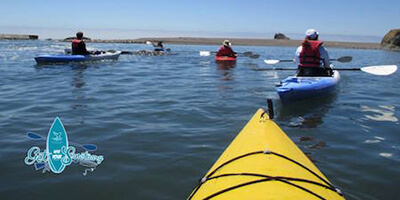
Experience Greater Farallones National Marine Sanctuary firsthand by paddling with our Get into Your Sanctuary Partner Water Treks Ecotours August 2, 3, or 4! They offer a variety of opportunities for you to see the amazing views and marine life within our sanctuary. (Photo Credit: Sara Heintzelman, NOAA, GFNMS)
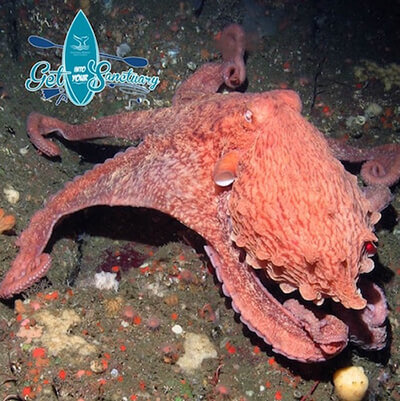
Celebrate Get into Your Sanctuary with the whole family! (Photo: NOAA)
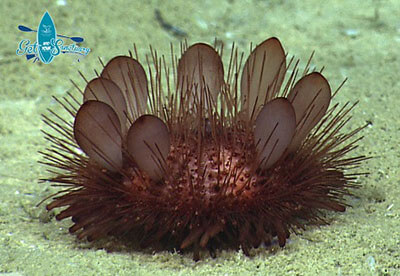
WHAT IN THE WORLD IS IT?
a. A pancake urchin
b. A pincushion
c. A sea urchin trying to eat grapes
Can you do better? Enter the Get Into Your Sanctuary Photo Contest!
(Photo: NOAA OKEANOS EXPLORER Program, Oceano Profundo 2015; Exploring Puerto Rico's
Seamounts, Trenches, and Troughs)
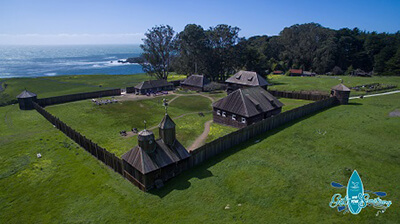
"Get into Your Sanctuary" by exploring the rich maritime heritage of Greater Farallones National Marine Sanctuary! Learn about the harrowing shipwrecks that have taken place and travel back in time as you discover the cultural history along our coast at places like Fort Ross Historic Park. (Photo Credit: Paul C. Miller)
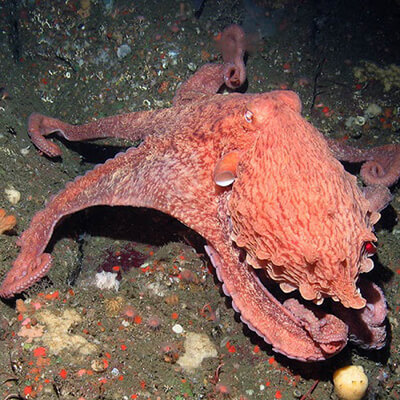
SEEING RED! The giant Pacific octopus may be ruddily resplendent in the shallows, but at depths where no sun penetrates, it's nearly invisible. It’s 90% muscle, but can squeeze through tiny openings. Copper-rich blue blood helps bind O2 at high-pressure depths. (Photo Credit: NOAA)
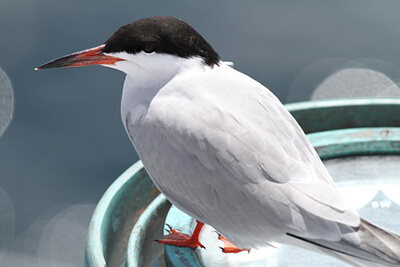
Happy Marine Life Monday! Common Terns (Sterna hirundo) are the most widespread tern found in North America. They are pale gray with a black cap and have an orange bill tipped with black, along with bright orange legs. Common Terns are vocal and often found in groups, making them easy to spot. Like other terns, they are graceful fliers and can be spotted skimming over the water’s surface looking for food. They usually eat fish but will also feast on crustaceans, squid or insects. (Photo Credit: NOAA Fisheries)
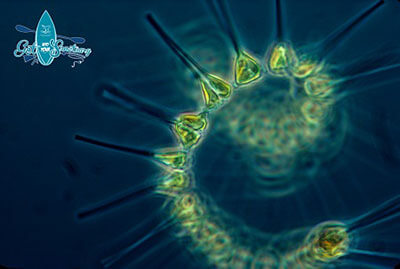
WHAT IN THE WORLD IS IT?
a. A remnant of 4th of July fireworks
b. A spiral galaxy
c. Phytoplankton
Can you do better? Enter the Get Into Your Sanctuary Photo Contest!
(Photo: NOAA MESA Project)
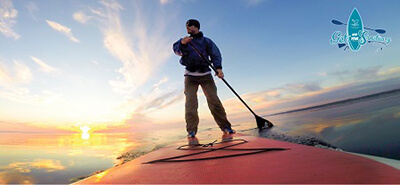
Paddleboarding is a fun way to "Get into Your Sanctuary"! There are great spots to paddle in Greater Farallones National Marine Sanctuary- from esteros and bays to the open ocean. Always check the tides and weather conditions before you go! (Photo Credit: Jeff Gray, NOAA)
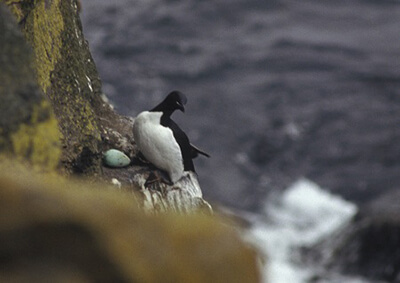
Welcome to Winged Wednesday!
Common Murres quite literally live life on the edge. They perch on bare rock ledges
while precariously balancing newly laid eggs for a whole month! Thousands of Common
Murres are incubating bright blue eggs along our coast right now and they’re egg-stra
sensitive to disruption. Keeping 1,000 feet (3 football fields) distance can help make
sure they incubate their eggs in peace. Learn more about California seabirds and what Greater Farallones National
Marine Sanctuary is doing to help seabirds thrive. (Photo: Allen Shimada NOAA NMFS)
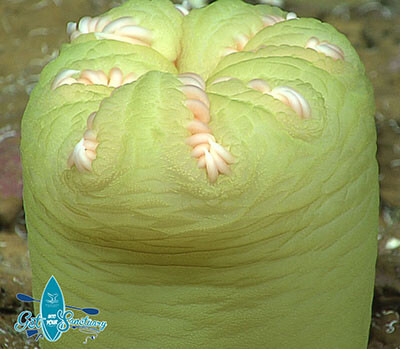
WHAT IN THE WORLD IS IT?
a. An actinernidae anemone
b. A sponge
c. A lemon cream dessert
Can you do better? Enter the Get Into Your Sanctuary Photo Contest!
(Photo: NOAA Okeanos Explorer Program, 2016 Deepwater Exploration of the Marianas, Leg
3)
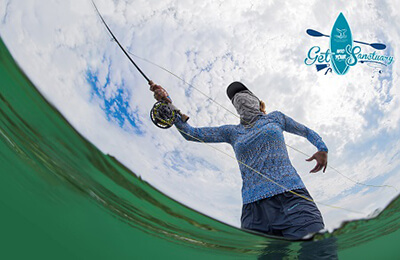
Fishing is another way to "Get into Your Sanctuary"! What is the most unusual thing you have caught while fishing in Greater Farallones National Marine Sanctuary? Learn more about fishing in your national marine sanctuaries. (Photo Credit: Matt McIntosh, NOAA)

LIVING A LIE? Black Oystercatchers don't catch oysters! They favor mussels, limpets, chitons, crabs, worms and barnacles. They are monogamous: each year, same place + same mate - it's a date! Handsome, faithful, and they love the coast, just like us! Spot them on rocky shores. (Photo Credit: NOAA)
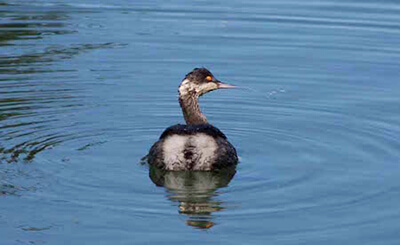
Happy Marine Life Monday! The eared grebe (Podiceps nigricollis) is a small stocky grebe with red eyes, black legs, and black feet. Instead of webbed feet, they have lobed toes like other grebes and coots. The eared grebe is flightless for 9-10 months a year which is the longest flightless period for any bird that can fly! (Photo Credit: Steve Lonhart, NOAA/MBNMS)

WHAT IN THE WORLD IS IT?
a. A rocket launching
b. Blown glass artwork
c. A siphonophore
Can you do better? Enter the Get Into Your Sanctuary Photo Contest!
(Photo: Hidden Ocean Expedition 2005 NOAA/OAR/OER)
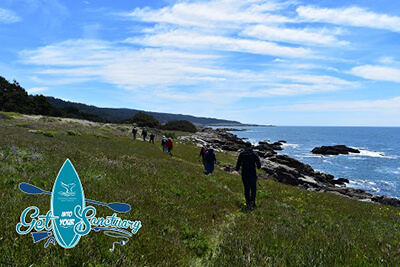
Hiking along the coast is a great way to "Get into Your Sanctuary"! What is your favorite hiking spot near Greater Farallones National Marine Sanctuary? (Photo Credit: Sara Heintzelman,NOAA/GFNMS)
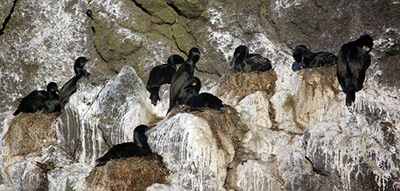
Welcome to Winged Wednesday! Seabirds’ nutrient-packed waste, or guano, is rich in nitrogen and phosphorus due to their fish-filled diets. Seabird guano is a powerful fertilizer to natural ecosystems and an important transfer of nutrients from oceans to land. Thank goodness for guano! Learn more about California seabirds and what Greater Farallones National Marine Sanctuary is doing to help seabirds thrive. (Photo: Peter Pearsall USFWS)
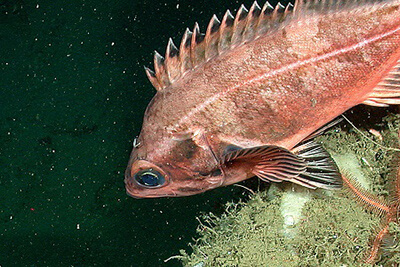
Happy Marine Life Monday! The bank rockfish (Sebastes rufus) is a slow growing, long-lived fish that lives off the west coast of North America. They can be found in habitats with hard bottoms or over banks and ledges down to depths of a few hundred meters! Bank rockfish are viviparous, meaning they give birth to live young rather than laying eggs. (Photo Credit: Kevin L. Stierhoff / NOAA SWFSC)
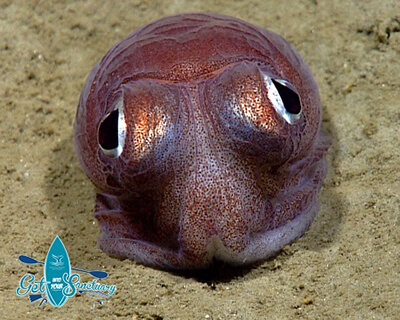
WHAT IN THE WORLD IS IT?
a. Diatom
b. Sunflower star larva
c. A jellyfish spinning its tentacles
Can you do better? Enter the Get Into Your Sanctuary Photo Contest!
(Photo: Courtesy of Dr. John R. Dolan, Laboratoire d'Oceanographique de Villefranche;
Observatoire Oceanologique de Villefrance-sur-Mer)
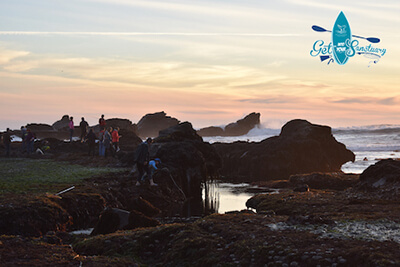
“Get into Your Sanctuary” by exploring the amazing intertidal habitat at the edge of the sea! Search for chitons, anemones, sea stars, sea urchins, nudibranchs and the many other creatures that can be found in tidepools. Don’t forget to check the tides and practice good ocean etiquette. (Photo Credit: Sara Heintzelman, GFNMS/NOAA)
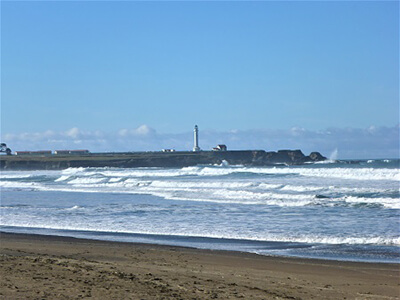
Beach Watch-Beach 803: Manchester State Beach is the northernmost beach in the Beach Watch range and is located in southern Mendocino County. Bordered by the Garcia River mouth, this section of the beach is called P'da Hau (from pda, river, and ha, mouth) in native Pomo language. The river and its creeks are habitat for Coho Salmon (Oncorhynchus kisutch) and Steelhead Trout (Oncorhynchus mykiss). A walk on the section between Alder Creek and the Garcia River will reveal a treasure trove of driftwood, kelp, sea glass, and shells, as it’s a beach with high deposition (remember- no collecting). In autumn, this is an excellent place to see migrating waterfowl taking refuge in the watersheds. Learn more about Beach Watch. (Photo credit: Beach Watch/GFNMS/NOAA)
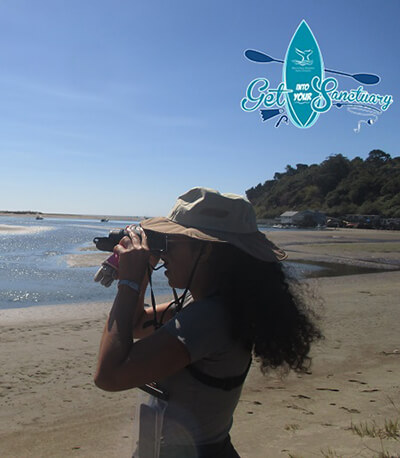
Birding is just one of many ways to "Get into Your Sanctuary" and enjoy Greater Farallones National Marine Sanctuary! What is the most interesting bird you've spotted? (Photo Credit: Sara Heintzelman, NOAA/GFNMS)

Welcome to Winged Wednesday! When tens of thousands of common murres nest tightly side by side, how does a parent keep track of its own egg? Female murres lay a nearly identical egg, year after year and parents recognize the exact color of blue and pattern of speckles. Pretty egg-cellent! Learn more about California seabirds and what Greater Farallones National Marine Sanctuary is doing to help seabirds thrive.(Photo: Brandon Saito USFWS)
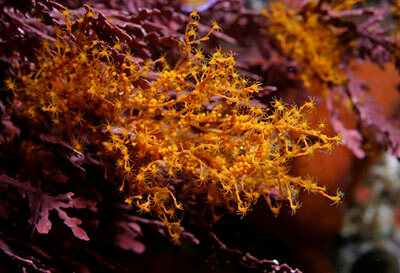
Happy Marine Life Monday! The orange hydroid (Garveia annulata) may look like seaweed, but it is actually a colony of animals! Each colony is either male or female and reaches a height of about 6 inches. They can be found attached to hard surfaces from the intertidal zone, down to depths of nearly 400 feet. (Photo Credit: Steve Lonhart, NOAA/MBNMS)
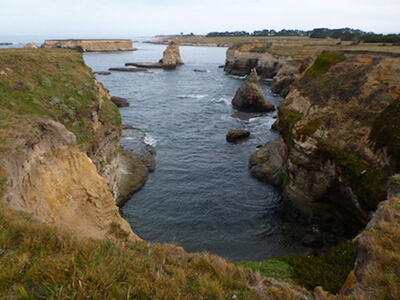
Beach Watch-Beach 806: Located in the Point Arena Stornetta Public Lands, part of the California Coastal National Monument, and part of Sea Lion Cove State Marine Conservation Area- Sea Lion Cove hosts breathtaking natural beauty. Rocks and islands make up the unique coastal geography, and red abalone (Haliotis rufescens) use this important and protected ocean habitat as a nursery. From the miles of bluff trails you can see whales spouting off shore and you can spot California sea lions (Zalophus californianus) and nesting Pelagic Cormorants (Phalacrocorax pelagicus). Be sure to take in the views, or tour, of the historic Point Arena Lighthouse while in the area! Learn more about Beach Watch.(Photo credit: Beach Watch/GFNMS/NOAA)
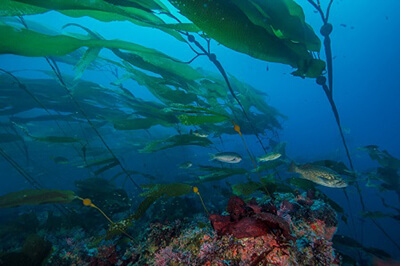
VANISHED! Ecosystem changes are causing our bull kelp forests to disappear. These rich biological communities need our help! Greater Farallones National Marine Sanctuary and Greater Farallones Association are leading efforts to restore kelp forests with our partners. (Photo Credit: NPS)
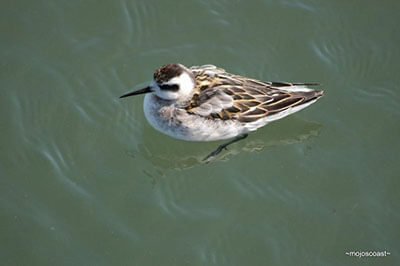
Happy Marine Life Monday! Small but mighty, the red-necked phalarope (Phalaropus lobatus) is one of the world’s smallest seabirds with a wingspan of just 14-15 inches. It can be spotted in Greater Farallones National Marine Sanctuary during the spring and fall as it migrates between the Arctic and South America. Phalaropes spin like tops on the surface of the water, creating their own currents that bring prey up to the surface; they then grab their food with the tip of their bills. (Photo Credit: Mojoscoast)
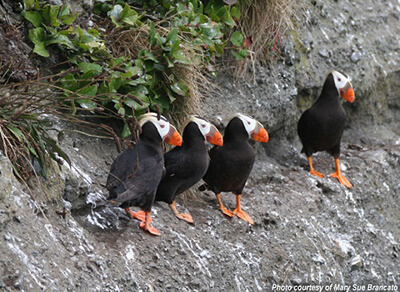
Welcome to Winged Wednesday! Tufted puffins may be nicknamed the ‘parrots of the sea,’ but these striking seabirds are just as at home on land. During spring and summer they nest in dense colonies on inaccessible cliffs and offshore rocks using the sharp nails on their feet to cling onto the edge.Learn more about California seabirds and what Greater Farallones National Marine Sanctuary is doing to help seabirds thrive. (Photo: Mary Sue Brancato NOAAOCNMS)
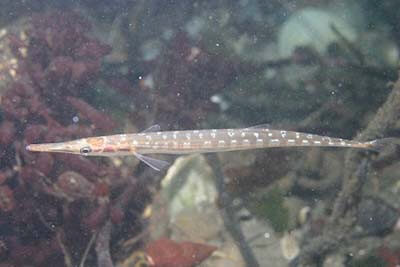
Happy Marine Life Monday! Tube-snouts (Aulorhynchus flavidus) are small, elongated fish that can be found from Alaska to Baja California. They can usually be spotted in schools near the water’s surface over kelp beds, eelgrass, rocky reefs, or sandy-bottom habitats. They feed on small crustaceans and fish larvae. After the females lay eggs, the male tube-snout guards the nest while the eggs develop. (Photo Credit: Steve Lonhart, NOAA/MBNMS)
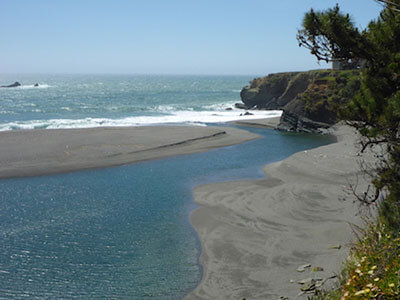
Beach Watch-Beach 822: Located just within the Mendocino County line in Gualala Point Regional Park, is Gualala River Beach. If you travel by foot or kayak along the river from the sea, you will pass you through sand dunes to a saltwater marsh, and further into a redwood grove. The Bluff Trail, will take you along the sea and river cliffside, for beautiful views and an opportunity to take in Gualala’s art and scenery. Learn more about Beach Watch. (Photo credit: Beach Watch/GFNMS/NOAA)
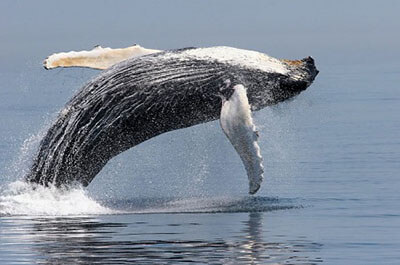
HUMPBACKS ARE HERE! The arrival of humpbacks @GFNMS to feed has begun! Shrimp-like krill and baitfish are on the menu for these leapsome Leviathans. Best seen on a naturalist-led Whale Watch (small boats not advised). Always stay at least 300 feet away, for both your well-beings! (Photo Credit: NMFS)
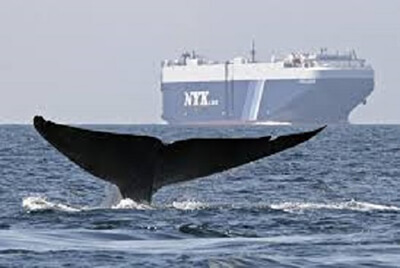
SHIPS & WHALES AHOY! Shippers are now slowing their fleets near the Golden Gate to avoid hitting whales. While not yet at 100% cooperation, the numbers are steadily increasing. (Photo Credit: John Calambokidis, Cascadia Research Collective)
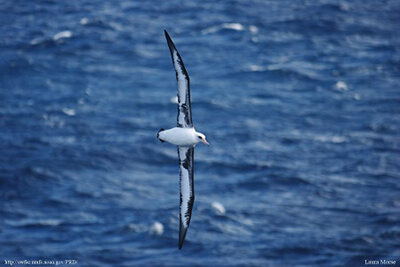
Happy Marine Life Monday! It’s easy to soar into Monday if you have a nearly 7 foot wingspan like the Laysan Albatross (Phoebastria immutabilis). These large seabirds travel thousands of miles from their breeding grounds in Hawai'i's Papahānaumokuākea Marine National Monument to visit the food-rich waters of Greater Farallones National Marine Sanctuary. While they may glide gracefully through the sky, albatrosses have to run across the sandy beach or surface of the water flapping madly to become airborne. (Photo Credit: Laura Morse, NOAA)
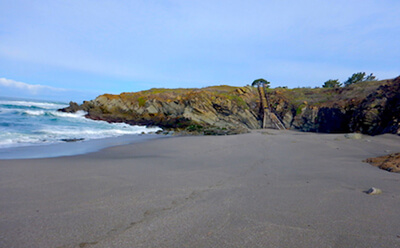
Beach Watch-Beach 827: Using The Sea Ranch Public Access Trail, you travel through a Monterey cypress grove and down a wooden staircase to reach Walk-on-Beach. There is a small cove at either end of the beach, and both are great for exploring during low tides. The bluff-top trail leads all the way to Gualala Point Regional Park. It’s a great time of year for a walk, as this trail has some of the best views of the springtime California Gray Whale (Eschrichtius robustus) northward migration. Learn more about Beach Watch. (Photo credit: Beach Watch/GFNMS/NOAA)

Welcome to Winged Wednesday! Cassin’s auklets are one stealthy seabird. They travel to their underground burrows on offshore rocks under the cover of darkness to incubate a single egg or feed a chick and then leave their nest before dawn breaks. Learn more about California seabirds and what Greater Farallones National Marine Sanctuary is doing to help seabirds thrive. (Photo: NOAA Montrose Settlements Restoration Program)
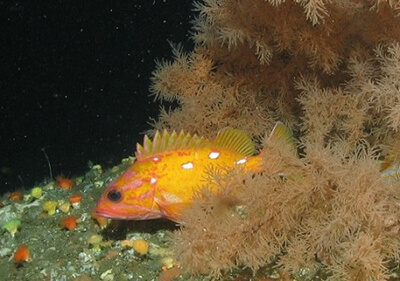
Happy Marine Life Monday! The rosy rockfish (Sebastes rosaceus) reaches lengths of about 11 inches and can be found along the coast of California down to Baja. While these fish are brightly colored to our eye, red light does not reach into the deep ocean waters. At depths of 90-120 feet where rosy rockfishes are generally found, they will not appear red but will look dark and blend in with their surroundings. Life is ‘rosier’ for these fish when they aren’t spotted by predators with their cool color camouflage trick! (Photo Credit: NOAA/GFNMS)
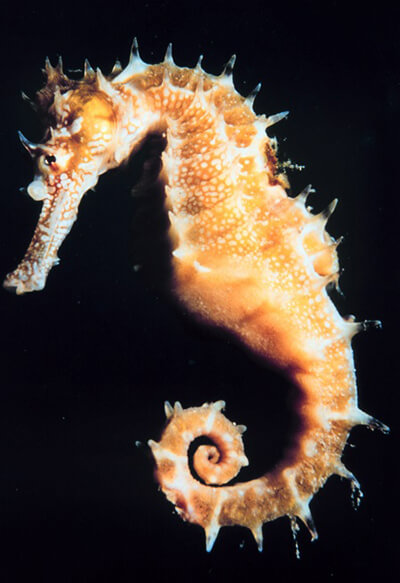
HOLD YOUR HORSES! Stop and admire these steeds of the sea. Mated pairs dance when they meet, swim tails-linked; and males incubate and bear the young. Not a traditional family setup! (Photo Credit: NOAA)
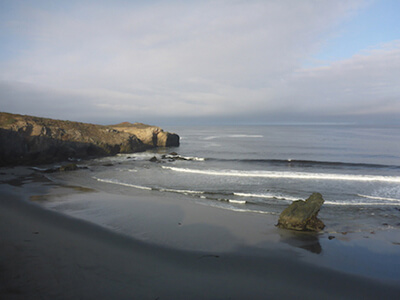
Beach Watch-Beach 837: Located in the private Sea Ranch community, Black Point Beach has a public access trail and cool wooden staircase leading down to the beach which is picturesque with sand darkened by the nearby cliffs. This is also a great place to glimpse migrating whales from the coastal bluff trails just above the beach. Learn more about Beach Watch. (Photo credit: Beach Watch/GFNMS/NOAA)
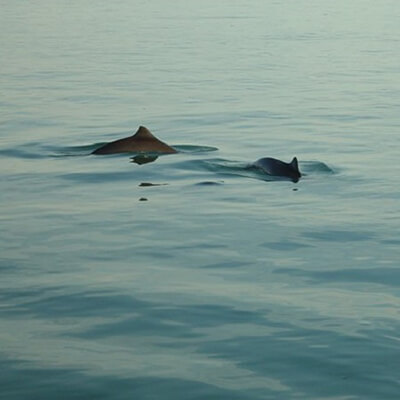
BAY OF PIGS has a happy connotation now. Chunky, diminutive harbor porpoises have reclaimed SF Bay! Their nickname, "puffing pigs," is from their abrupt "chuff" sound when exhaling. (Photo Credit: NPS)
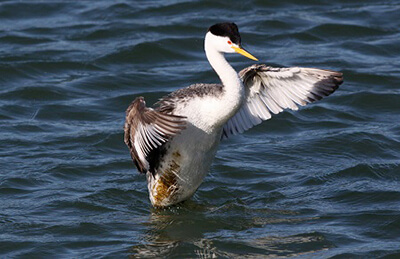
Happy Marine Life Monday! The Clark's Grebe (Aechmophorus clarkii) has a black cap that stops just above its eye. This distinguishes it from the Western Grebe which has a very similar appearance but has a black cap that extends below its eye. Grebes are the only birds to spend their entire lifecycle on the water; most birds come to shore to nest but grebes build floating nests and carry their young chicks on their backs! (Photo Credit: Sophie Webb, NOAA/SWFSC)
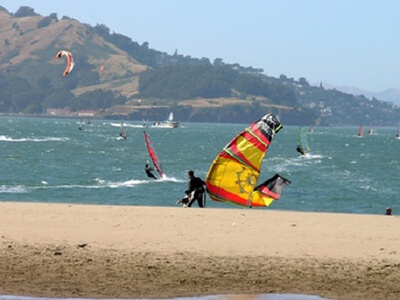
GO FLY A KITE! Strong spring winds are here, so when kiteboarding or windsurfing watch out for sea lions, seals, porpoise - even whales! Don't let a day on the bay become a kitemare. (Photo Credit: NPS)
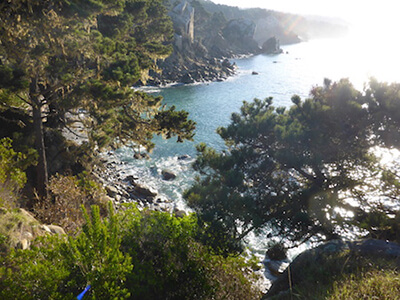
Beach Watch-Beach 845: Located in Salt Point State Park, Fisk Mill Cove is one of our perfect picnic beaches. It can be a harried walk down to the beach itself and it requires a low tide, but the Sentinel Rock viewing platform offers a beautiful view and picnic area. A short walk across a trail takes you to the bluff at Stump Beach, where you can see the first nesting Pigeon Guillemots (Cepphus columba) this time of year. Across the road, is the Kruse Rhododendron Reserve, which also makes for a beautiful spring walk while the trees are blooming coastside. Learn more about Beach Watch (Photo credit: Beach Watch/GFNMS/NOAA)
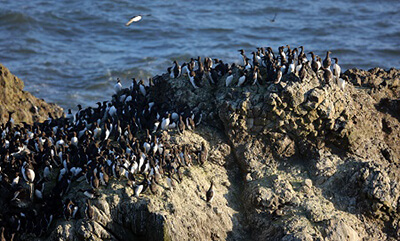
Welcome to Winged Wednesday! Common murres aren’t big on personal space. They pack together so tightly on the flat surfaces of rocks and cliffs that up to 20 pairs can incubate in one square meter! Learn more about California seabirds and what Greater Farallones National Marine Sanctuary is doing to help seabirds thrive. (Photo: Peter Pearsall USFWS)
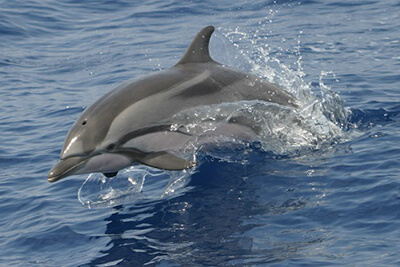
Happy Marine Life Monday! Striped dolphins (Stenella coeruleoalba) are abundant and widespread worldwide and are most commonly found in deep, tropical to temperate waters. Striped dolphins can reach lengths of 9 feet, weigh up to 350 pounds and have a lifespan of about 58 years. They are usually found in groups of 25-100 individuals but have occasionally been seen in much larger groups of hundreds to even thousands! (Photo Credit: NOAA)
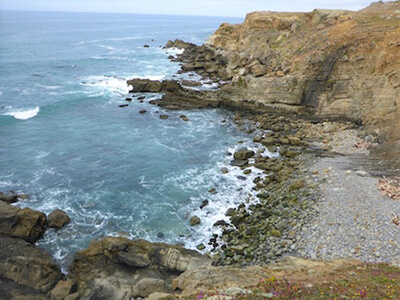
Beach Watch-Beach 855: Clam Beach is a scenic cove, located within Fort Ross State Historic Park, and makes for an adventurous stop during a day trip along the north coast. Accessible only at low tide, bring binoculars, as this is a great place to view Steller’s Sea Lions (Eumetopias jubatus), northern migrants that can be seen here at the southern end of their range. As part of the underwater park at Fort Ross, this is also a great place for diving and exploring the reef. Learn more about Beach Watch (Photo credit: Beach Watch/GFNMS/NOAA)
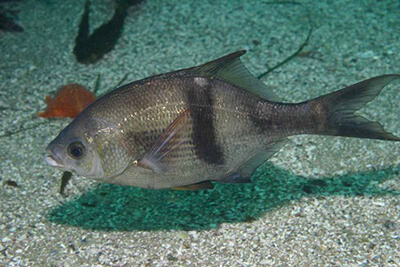
Happy Marine Life Monday! The pile surfperch (Rhacochilus vacca) can be found in the water along rocky shores and is frequently spotted in kelp forests or near underwater structures, such as pier pilings, from Alaska down to Baja California. It reaches lengths of up to 17 inches and has a deeply forked tail fin. Like other perch, pile surfperch are viviparous and the females carry the developing young instead of laying eggs. (Photo Credit: Steve Lonhart, NOAA/MBNMS)
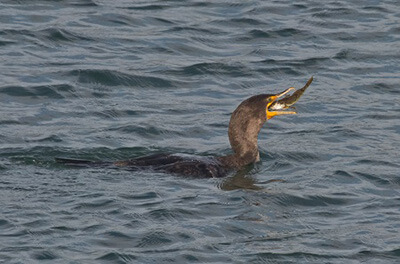
Welcome to Winged Wednesday! Down the hatch! Double-crested cormorants dive down to catch fish underwater in their bills but wait to swallow until they’re on the surface. Once there, they flip the fish into the air and swallow it head first. Learn more about California seabirds and what Greater Farallones National Marine Sanctuary is doing to help seabirds thrive. (Photo Credit: Peter Pearsall USFWS)

Happy Marine Life Monday! The Pacific loon (Gavia pacifica) cannot take flight from land and needs a stretch of open water 100-150 feet long to use as a runway to get airborne! This medium sized loon has a bold black and white checkered pattern on its back. Unlike the common loon, the head and neck of the Pacific loon are colored an ashy-gray. Trivia challenge: what color are the head and neck of the common loon? (Photo Credit: Steve Lonhart, NOAA/MBNMS)
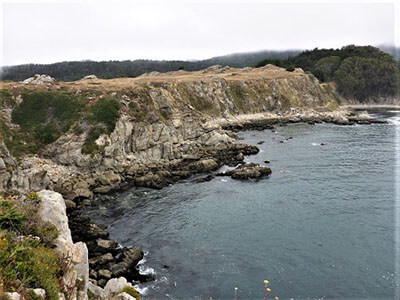
Beach Watch-Beach 856: Located in Fort Ross State Historic Park, Fort Ross Cove is a Beach Watch survey segment and an underwater park! The underwater park offers scenic diving, spearfishing, and underwater photography. For divers, this is a great place to explore the wreck of the S.S. Pomona, which struck a submerged rock and ran aground in 1908. After exploring underwater, be sure to check out Fort Ross State Historic Park grounds and museum - which offers cultural history of the Kashaya Pomo, along with the Russian and Spanish settlements. Learn more about Beach Watch (Photo credit: Beach Watch/GFNMS/NOAA)
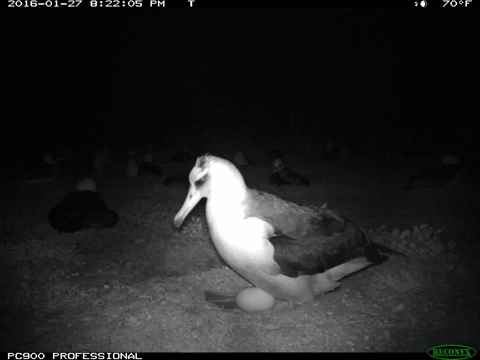
BAD MOUSEKEEPING: Invasive mice are eating albatrosses alive at remote Midway Island. Mice kill many hundreds of these Farallones-foraging birds yearly, adults and chicks, at Midway; elsewhere, too. US Fish & Wildlife are working to eradicate them. Photo: Midway, USFWS
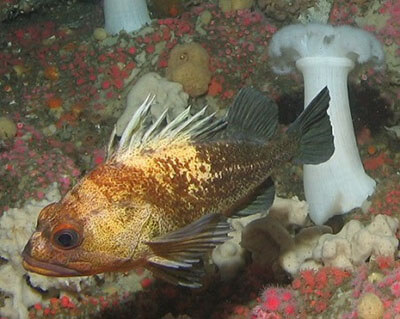
Happy Marine Life Monday! Quillback rockfish (Sebastes maliger) are a mottled orange-brown color that helps them blend in with their surroundings. They reach a maximum length of about 2 feet and, like other rockfish, are generally found near the seafloor or hiding in rocks and crevices. The quillback rockfish is named for the sharp, venomous spines along their back which protect them from predators. They are not very toxic to humans but can still cause pain. If you come across one, give them some space- NO JOKE! (Photo Credit: NOAA/GFNMS)
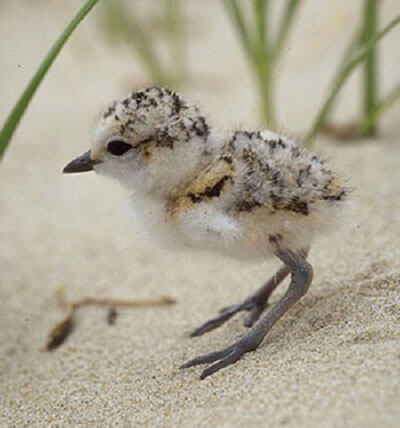
Snowy Plover chicks are helpless without their parents' (and our!) protection. This spring, be wildlife-aware, show you care. Grab your binoculars, visit our sanctuary shores, and keep a lookout for these sweet new lives. Give them plenty of space and respect no-go zones. Photo Credit: OHV-Parks-CA-gov
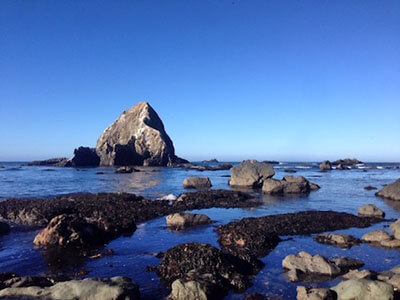
Beach Watch-Beach 861: Known locally as ‘Driftwood Beach’, North Jenner Beach is an incredible place to see the convergence of two ecosystems: the Russian River watershed and the Pacific Ocean. The beach accumulates driftwood and the nearby ocean has increased nutrients from the outflow of the river. This is a boon for animals such as gulls and migrating shorebirds, as well as gumboot chitons (Cryptochiton stelleri) and sea stars (Pisaster), who feast on the tiny invertebrates that make the beach and intertidal zone their home in this nutrient-rich environment. During spring, harbor seals (Phoca vitulina) use the protective berms of the river to give birth to pups! Remember to stay back, do not approach, and give the seals at least 300 ft of space. Learn more about Beach Watch (Photo credit: Beach Watch/GFNMS/NOAA)

Welcome to Winged Wednesday! Black oystercatchers build nests by digging a shallow hole in the ground called a scrape. They then fling bits of rocks and shells into it with a flip of their heads. The eggs incubate for 24-29 days. Check out that camouflage! Learn more about California seabirds and what Greater Farallones National Marine Sanctuary is doing to help seabirds thrive. (Photo: Steve Lonhart, NOAA MBNMS)
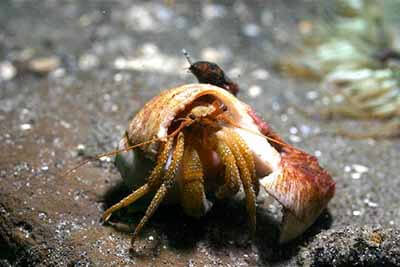
Happy Marine Life Monday! The grainyhand hermit crab (Pagurus granosimanus), like other hermit crabs, does not make its own shell, but inhabits discarded snail shells. The grainyhand hermit crab can be distinguished from other types of local hermit crabs by the distinct white or blue raised dots seen on their legs along with unbanded red or orange antennae. (Photo Credit: Steve Lonhart, NOAA/MBNMS)
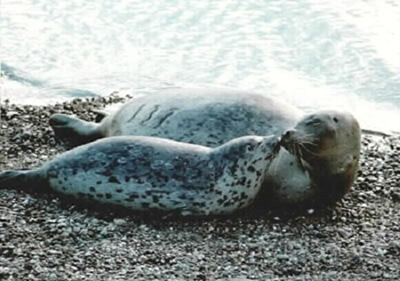
PUPULATION DYNAMICS: 1. Mom bears winsome pup, they sniff & call: their bond, in a busy, noisy rookery. 2. Mom forages between nursing times. 3. Pup learns to fish, gains "weaner" status; congrats! 4. Mom departs & life goes on. Remember, stay more than 300 ft. from seals (if they notice you, you’re too close), keep dogs away! Photo Credit: WDFW
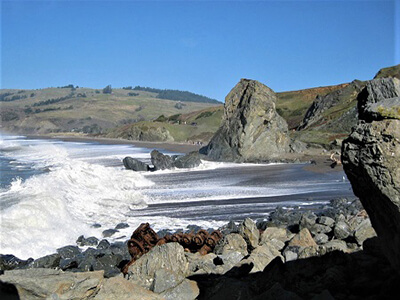
Beach Watch-Beach 862: Goat Rock Beach and Russian River Spit
Named for early-20th century goat herders who grazed their flocks nearby, Goat Rock
beach is a fun and fascinating place to stop in Sonoma County. The marine geology has
created incredible rock formations and marine terracing at the shoreline and on the
bluffs. Bordered by the Russian River at the north end of the beach, there is a harbor
seal (Phoca vitulina) haul out. This is the best time of year to spot pupping seals but
be sure to give at least 300 feet of distance and stay out of any roped off areas to
protect the seals and their sensitive estuary habitat! Learn more about Beach Watch (Photo credit:
Beach Watch/GFNMS/NOAA)
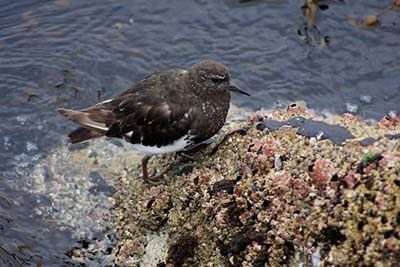
Happy Marine Life Monday! The black turnstone (Arenaria melanocephala) is a stocky shorebird and about the size of a robin. While well camouflaged on the rocky shore, they display a dramatic black-and-white pattern when in flight. Turnstones use their short, strong bills to turn over rocks and seaweed in search of invertebrates to eat and are also able to pry prey, such as barnacles and limpets, off of rocks. (Photo Credit: Steve Lonhart, NOAA/MBNMS)
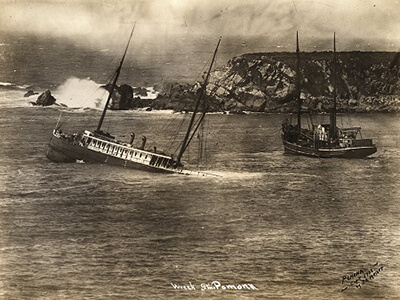
One of the most accessible shipwrecks in sanctuary waters is the 225-foot long steamship Pomona, which sank in 1908 and now lies in 27 to 40 feet of water in Fort Ross Cove. Built in San Francisco in 1888 for the Oregon Improvement Company, Pomona was a state-of-the-art passenger steamship. Soon after entering service, Pomona earned the nickname, “the Pride of the Coastal Fleet.” In 1891, the Pacific Steamship Company purchased Pomona to run on the San Francisco-Vancouver route, and retrofitted it to carry more cargo. On the evening of March 17, 1908, disaster struck. Pomona was steaming north near the mouth of the Russian River off Sonoma County, nearer to the coastline than normal so that rough weather farther out would not make passengers uncomfortable. At 6:15pm, the ship hit a submerged rock. Captain Charles Swansen judged the ship to be three-quarters of a mile offshore and rapidly taking on water. In an attempt to save the cargo and his passenger’s lives, Captain Swansen steered the ship towards Fort Ross Cove where he planned to beach the ship on one of the few sandy shorelines in the area. Unable to reach the shore after grounding on a second rock inside the cove, he gave the order to abandon ship. There was no loss of life, and salvage efforts managed to save most of its cargo. (Excerpted from Scuba Diver article, 2017) Photo Credit: SF Maritime National Historic Park
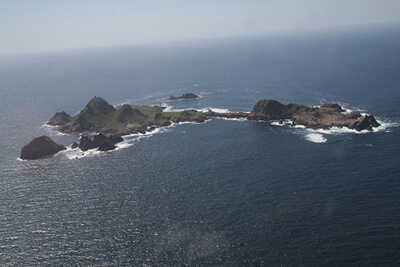
Welcome to Winged Wednesday! Did you know the Farallon Islands are home to over 250,000 seabirds? That’s more than anywhere else in the contiguous United States! Large colonies can nest here together because each species likes a different habitat along the rocky shore. Can anyone name a seabird species that lives on the islands? Learn more about California seabirds and what Greater Farallones National Marine Sanctuary is doing to help seabirds thrive. (Photo: Sage Tezak, GFNMS)
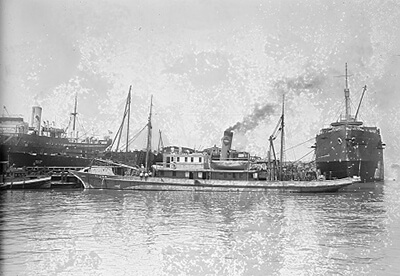
On this day in 1920, the former luxury steam yacht Ituna sank in the Gulf of the Farallones outside the Golden Gate. The 34-year-old Ituna was en route from San Francisco to Reedsport, Oregon when a gale hit, causing the iron hull seams to split open. While 12 of its 14 crew members escaped, two went down with the vessel when it sank in a matter of minutes. The Office of National Marine Sanctuaries and its partners have used remotely operated and autonomous underwater vehicles (ROVs, AUVs) to collect high-definition video footage, still images and side scan sonar data on this historic ship. Credit: SF Maritime National Historic Park

Happy Marine Life Monday! The rainbow perch (Hypsurus caryi) can be found from Mendocino, California down to Baja California, Mexico. They commonly live in rocky shore habitats or near the edges of kelp beds but tend to stay out of the surf, unlike some other perch species. The females are viviparous, meaning that they carry their developing young and give birth, rather than laying eggs! (Photo Credit: Chad King, NOAA/MBNMS)
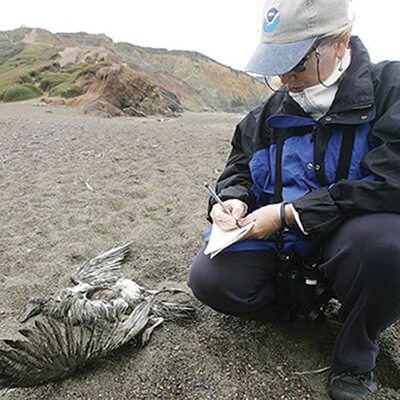
Saturday, March 9, marks the premiere of "Beach Watch", an award-winning documentary featuring NOAA/Greater Farallones National Marine Sanctuary's Beach Watch coastal monitoring program at the International Ocean Film Festival in San Francisco. Come see Beach Watch on the big screen!
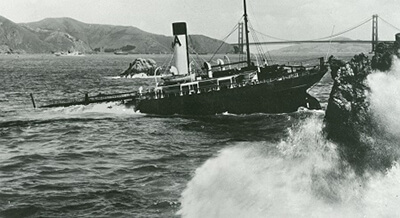
On March 6, 1937, just 15 years after its sister ship sank due to a collision in the same area, TV Frank H. Buck sank at Lands End near San Francisco Bay. The vessel was hit head-on by the luxury passenger vessel SS President Coolidge . Frank H. Buck’s bow was low in the water and began leaking oil into the Pacific as its crew rushed to their lifeboats. Thanks to the help from the Coast Guard and the San Francisco Police Department, all hands were saved. Learn more about shipwrecks. Credit: Robert Schwemmer
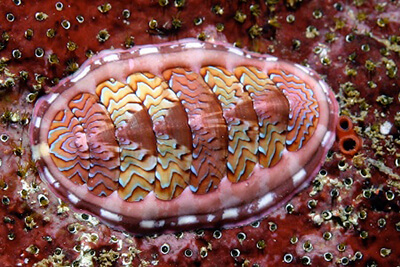
Happy Marine Life Monday! Loki’s chiton, also known as the flame lined chiton, (Tonicella lokii) has a distinct zig zag pattern on its shell-plates and radiating bands on its girdle (the muscular tissue surrounding its body) that differentiates it from the closely related Tonicella lineata. Chitons are snail-like mollusks, with soft bodies, a strong foot and they always have eight overlapping shell plates, whether they are teeny tiny or full grown. (Photo Credit: Steve Lonhart, NOAA/MBNMS)
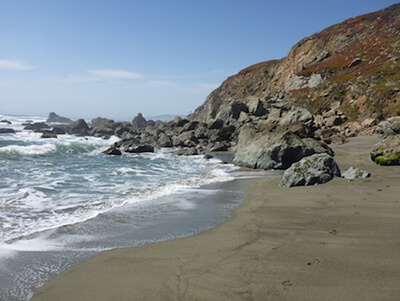
Beach Watch-Beach 873: Miwok Beach
Named for the areas original occupants, the Coastal Miwok, this tiny beach is just a
jump over Salmon Creek. While it’s very difficult to access at high tide, it regularly
draws less of a human crowd than its larger neighboring beach. As a result, it is a
haven for shy shorebirds such as Surfbirds (Aphriza virgata) and Black Oystercatchers
(Haematopus bachmani).
Learn more about Beach Watch (Photo credit: Beach
Watch/GFNMS/NOAA).
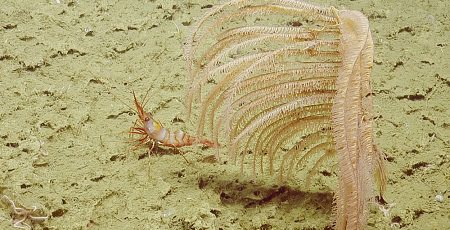
MUDLICIOUS! The seafloor provides food & habitat for animals like corals, sponges, and invertebrates that larger sea life rely on. Greater Farallones National Marine Sanctuary remote-samples its silt and specimens to learn about these relationships. Check out this speacial underwater habitat.
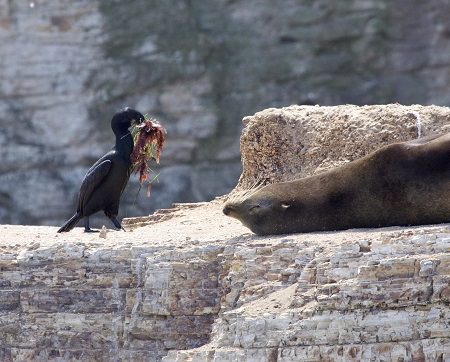
Welcome to Winged Wednesday! This Brandt’s cormorant isn’t offering seaweed to a sleeping sea lion, it’s building a nest! Rocky coasts are important resting and breeding areas for many year-round residents that live side by side. In fact, there are very few places with higher densities of large animals on earth! Learn more about California seabirds and what Greater Farallones National Marine Sanctuary is doing to help seabirds thrive. (Photo: Bruce Lyon, CA State Parks)
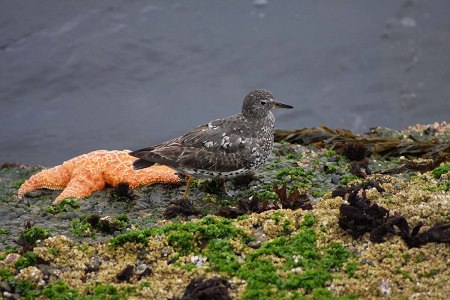
Happy Marine Life Monday! The surfbird (Aphriza virgata) winters along the west coasts of both North and South America, a range that is longer and narrower than any other North American breeding bird! During these winter months, it is usually found just above the tide line in the surf or spray zone. Its short blunt bill, golden orange at the base and black at the tip, functions as an effective tool to pry food off the rocks. (Photo Credit: Steve Lonhart, NOAA/MBNMS)
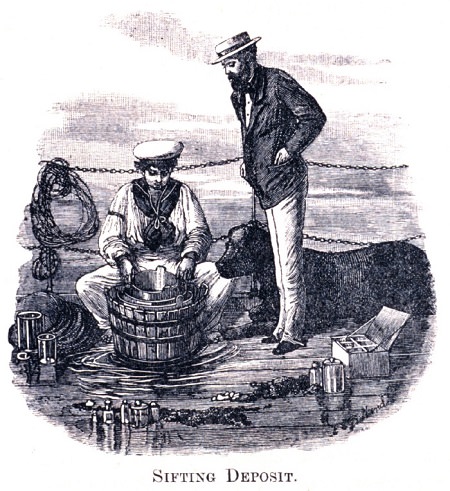
TRULY, MADLY, DEEPLY: Daring, adventurous early explorers sailed the open sea and probed its fathomless depths, discovering bizarre sea life without hi-tech tools. Their example set the course that Greater Farallones National Marine Sanctuary's scientists still follow, with Farallones’ ACCESS and deep sea cruises. (Image Credit: NOAA Photo Library)
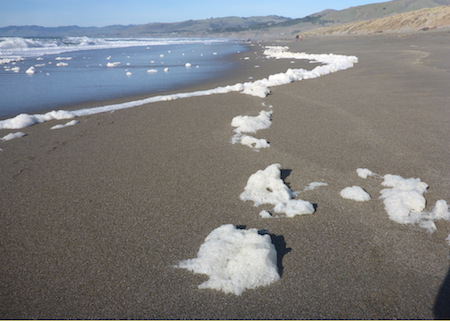
Beach Watch-Beach 100: Located directly in the Salmon Creek watershed, North Salmon Creek beach is a beautiful spot to spend any easy day on the north coast. A parking lot provides convenient beach access to the wide swaths of sand and surf- and there is definitely surf! A NorCal favorite surf spot, you’ll find locals braving the cold and the swells. Beachside, this is a great place to soak up sun and northern views of the craggy rocks of the Sonoma Coast. This is also a fantastic place to brush up on your gull ID creekside! Learn more about Beach Watch. (Photo credit: Beach Watch/GFNMS/NOAA)
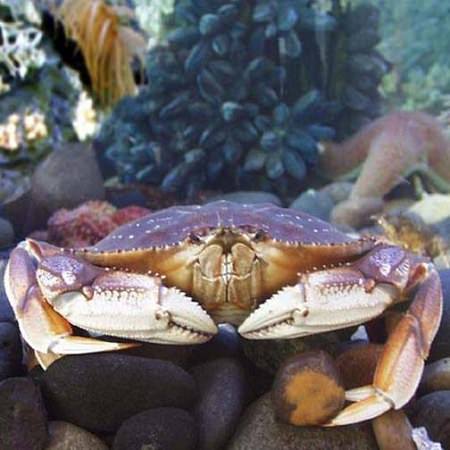
CRUSTY OLD CRABS are tenderly delicious, once you get past the shell. Dungeness crabs are a local holiday tradition, one of the state's major fisheries, and are sustainably harvested. NOAA is working with fisherfolk to reduce incidental whale entanglement in crab gear. (Photo Credit: NOAA)

Happy Marine Life Monday! The stripefin ronquil (Rathbunella alleni) is a bottom dwelling fish found in the North Pacific. This long, thin fish reaches lengths of about 6 inches and is commonly found in shallow coastal waters (although it can range to deeper water as well). The male guards the eggs until they hatch into larval fish and join the other plankton of the ocean as they develop and try to survive to adulthood! (Photo Credit: Steve Lonhart, NOAA/MBNMS)
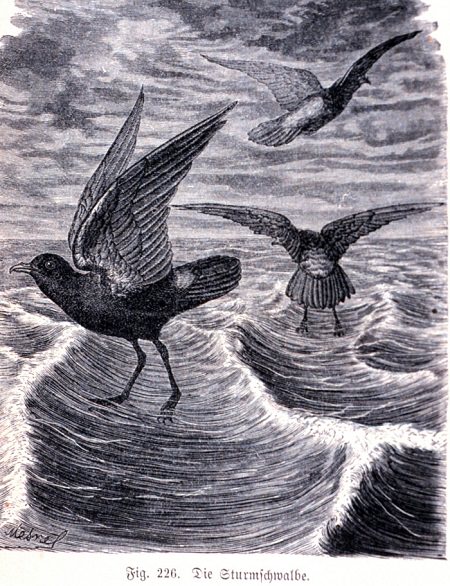
STORMY WEATHER: Ancients thought the storm-petrel boded ill. But this cool seabird seems to walk on water, like its namesake, St. Peter! Wings folded back into a V while flying low into the wind, it extends its pattering feet to the surface for stability, and “dips” for its prey. (Image Credit: NOAA Photo Library)
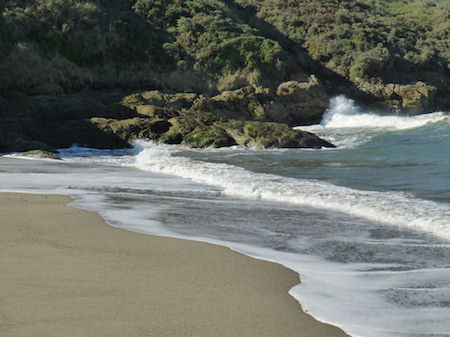
Beach Watch-Beach 101:There are stretches of beach that are beyond where most beachcombers are willing to go, and South Salmon Creek is one of them. Bound by Horseshoe Cove and Bodega Head State Marine Conservation Area (a California Marine Protected Area), is stretch of beach in the Salmon Creek watershed that is great for solitude. This time of year, you’re likely to see wintering snowy plovers and lots of sea foam churned up from winter storms, creating a whimsical, snow-like coating on the beach. Accessed from the beach dunes, it’s a great place to spot northern harriers searching for a meal. Learn more about Beach Watch.(Photo credit: Beach Watch/GFNMS/NOAA)
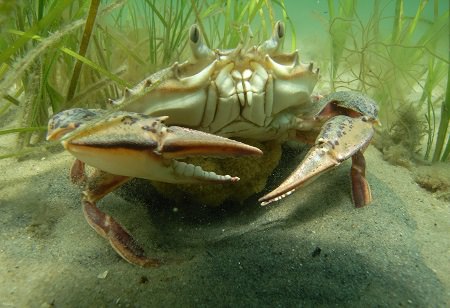
SWEPT AWAY IN A TENDER EMBRACE: In winter/spring, male Dungeness crabs carry receptive females in a pre-mating embrace for several days. The males then mate with the freshly molted, soft-shelled females, who produce golden jewel-like eggs. Sweet! (Photo Credit: NOAA)
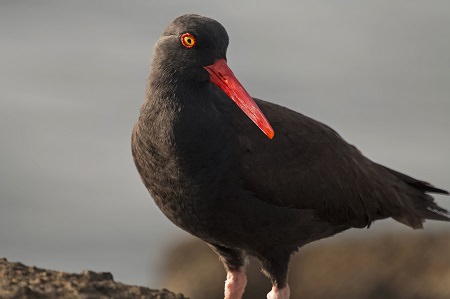
Welcome to Winged Wednesday! Black oystercatchers don’t usually catch oysters. Instead they spend their time using that striking red bill to pry open and eat mussels and limpets along our rocky shorelines. Maybe they should be called mussel-catchers! Learn more about California seabirds and what Greater Farallones National Marine Sanctuary is doing to help seabirds thrive. (Photo: Peter Pearsall USFWS)
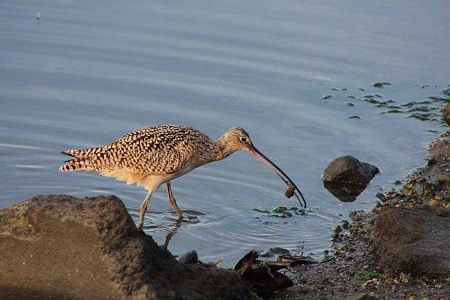
Happy Marine Life Monday! The Long-billed Curlew (Numenius americanus) is North America’s largest shorebird reaching lengths of 20-26 inches. It has a distinct bill that is extremely long (up to 8.5 inches!), thin, and down-curved. This unique bill is great for capturing the shrimp and crabs living in deep burrows along the shore. The Long-billed Curlew is able to fly as fast as 50 miles per hour, making a quick migration in only about 2 days from their grassland breeding grounds to their wintering grounds, which include the shores of Greater Farallones National Marine Sanctuary. (Photo Credit: Steve Lonhart, NOAA/MBNMS)
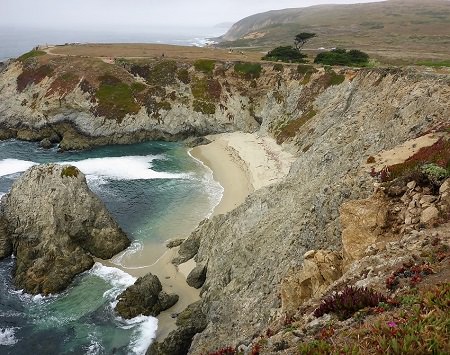
Beach Watch-Beach 103: Jutting out into the Pacific Ocean, Bodega Head in Sonoma County is the perfect spot to visit right now. From January through April, migrating gray whales (Eschrichtius robustus) hug the shoreline on their way to and from their breeding grounds in Mexico - and the rocky bluffs and cliffs of Bodega Head is a perfect vantage point to catch a glimpse of them. Volunteer docents from sanctuary partner, Stewards of the Coast and Redwoods, are out on Bodega Head with scopes and binoculars, answering questions about the whales and their ocean home. Enjoy views of Tomales Point and the open ocean as you hike the 1.5 mile loop trail. Beach watch surveyors often spot uncommon bird sightings on this survey, including Rock Sandpipers (Calidris ptilocnemis). Learn more about Beach Watch. (Photo credit: Beach Watch/GFNMS/NOAA)
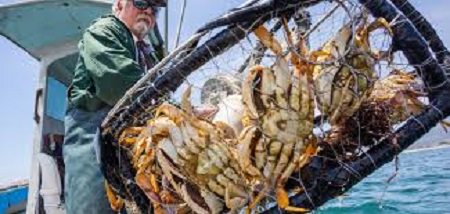
BRAVE SOULS: Crabbers risk dangerous winter sea conditions and highly variable harvests, from biotoxins and cyclic changes, even in our bountiful sanctuary. Still, they bring these succulent beauties to our table. Learn more about our Fisherman in the Classroom Program. (Photo Credit: NOAA Fisheries)
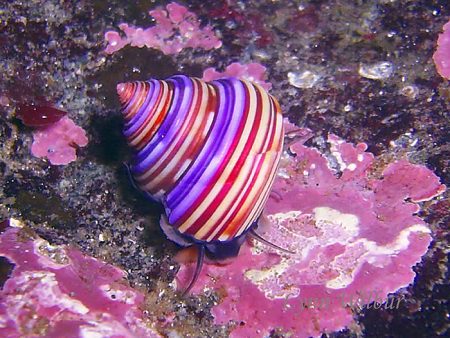
Happy Marine Life Monday! The blue top snail (Calliostonum ligatum) can be found in the intertidal and shallow subtidal zones from Alaska down to San Diego, California. The blue top snail reacts to potential predators by increasing its speed to 10cm/minute- fast for a snail! Best wishes for a new year filled with adventures and fun, learning and exploring your national marine sanctuaries and the creatures in them! (Photo Credit: Lynn Wilbur)
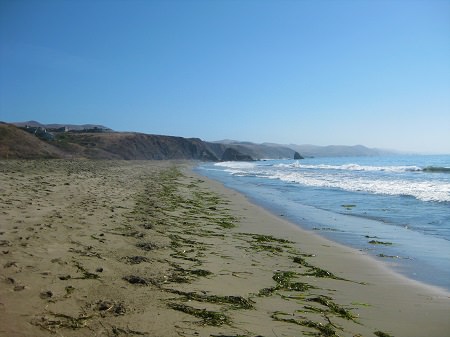
Beach Watch-Beach 106: If you’re looking for a spot for a holiday beach walk, look no further- Doran Beach was made for walking. Doran beach is the spit creating the northern boundary of Bodega Harbor, and is a great place to watch fishing boats come and go. Flat, smooth, and sandy, it’s sheltered in Bodega Bay. California sea lions (Zalophus californianus) and bottlenose dolphins (Tursiops truncatus) can often be seen in the surf. While out exploring the spit, be sure to stop at the Rich Stallcup birding platform on the way in to check out seasonal waterfowl and shorebirds in the tidal flats and lagoon. Learn more about Beach Watch. (Photo credit: Beach Watch/GFNMS/NOAA)
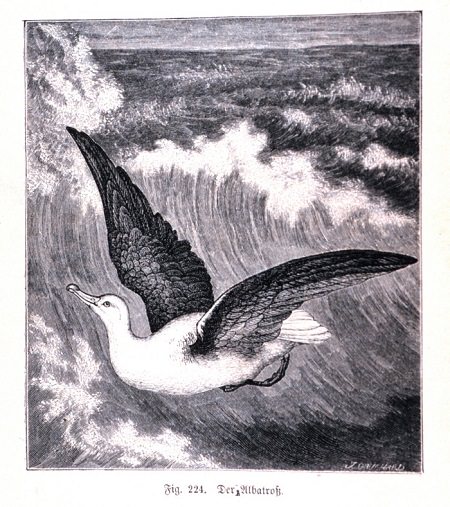
TO ANCIENT MARINERS albatrosses were good luck. Sadly, to 19th & early 20th C. milliners, they made stylish hats too. In 1886 the yearly kill for N. American hats reached 5M. Today Greater Farallones National Marine Sanctuary is an important feeding ground for three species of these protected, recovering seabirds. (Image Credit: NOAA Photo Library)
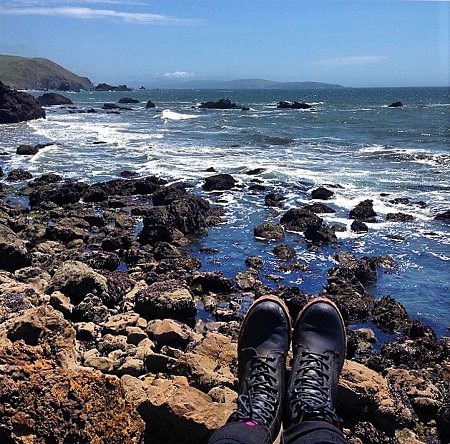
Beach Watch-Beach 107: Tucked into Bodega Bay, and accessed through a ravine canyon trail, Pinnacle Gulch has curiosities in every cove. At low tide, one is able hop between rocky points and outcrops, with discoveries around each corner. The small cove beaches range from steep and sandy to agate pebbles and reef tidepools. Use caution, as the tide can rise quickly against the steep hillsides. If you’re lucky enough to be there at low tide, you’re likely to see ochre sea stars (Pisaster ochraceus) and bat stars (Patiria miniata). Pinnacle Gulch is also a great place to see surfbirds (Aphriza virgata), a hard-to-ID shorebird that can be elusive on the outer coast. A short hike on the trail to the beach reveals migrating warblers in the early spring, along with the first of the wildflowers, including Douglas iris (Iris douglasiana), sticky monkey-flower (Mimulus aurantiacus), and Indian paintbrush (Castilleja affinis). Learn more about Beach Watch. (Photo credit: Beach Watch/GFNMS/NOAA)
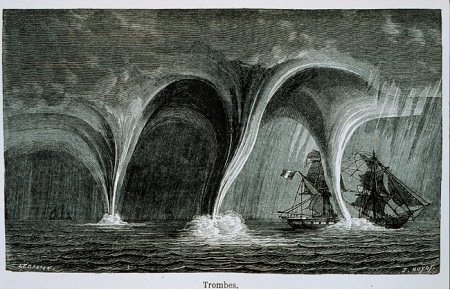
ROUGH DAY AT SEA. Greater Farallones' sea conditions can be "lively" but our science team is up to the challenge! See cruise partnership projects. (Image Credit: NOAA Photo Library)
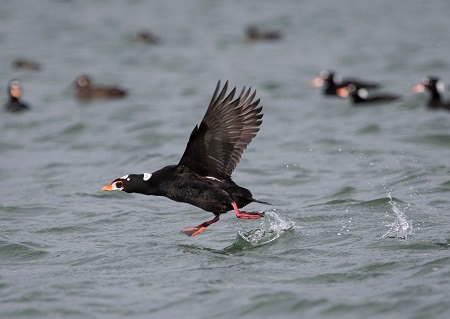
Welcome to Winged Wednesday! Surfs up! 🏄💦 Human surfers chase the big swells that arrive on our coast every winter, and seabird surfers are right beside them. Surf Scoters can be spotted along the California coast diving through breaking surf in search of mollusks, mussels, and small fish to eat. Learn more about California seabirds and what Greater Farallones National Marine Sanctuary is doing to help seabirds thrive. (Photo: Peter Pearsall USFWS)

Happy Marine Life Monday! This week’s creature is not sand- even though that might be all you see! Speckled sanddabs (Citharichthys stigmaeus) are masters of camouflage and can virtually disappear by changing both their color and pattern to blend in with their surroundings. These flatfish feed on crustaceans, worms, clams and small fish; while doing their best to avoid their own predators. Can you spot the sanddab in this picture? (Photo Credit: Steve Lonhart, NOAA/MBNMS)
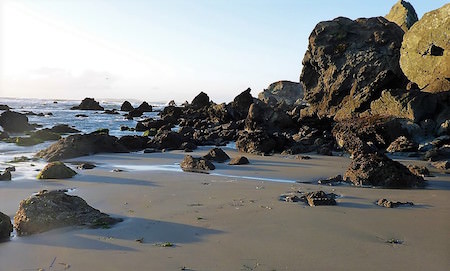
Beach Watch-Beach 110: At the tippy top of the Marin coast, just peeking out of Tomales Bay, is Dillon Beach. With less protection from Tomales Point, it grabs bigger waves, making it a reliable surf spot. For the non-surfers, it’s a wonderful place for a walk with views across the bay and out to the open sea. Walking in the late evening you may see some small, silvery fish called grunion (Leuresthes tenuis). On moonlit summer nights, the grunion will come out of the water and onto the sandy beach to spawn. Once uncommon north of Monterey Bay, they are now regulars in our northern ecosystem. Learn more about Beach Watch. (Photo credit: Beach Watch/GFNMS/NOAA)
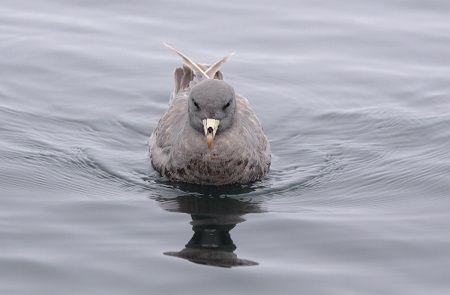
Welcome to Winged Wednesday! Fun fact: You do NOT want to make a Northern Fulmar angry. They can projectile vomit stomach oil up to 6 feet to defend themselves against predators. Not only does it smell awful, it can make other birds lose their waterproof coating. Learn more about California seabirds and what Greater Farallones National Marine Sanctuary is doing to help seabirds thrive. (Photo: Sophie Webb, NOAA/ SWFSC)
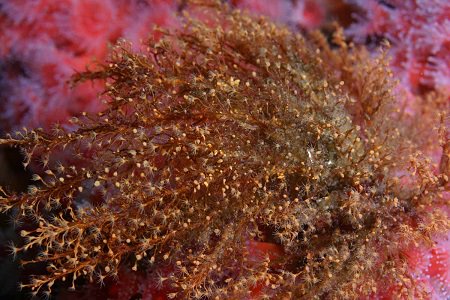
Happy Marine Life Monday! The California brown hydroid (Eudendrium californicum) may look like seaweed, but this intertidal inhabitant is actually an animal! Each of the polyps has a specialized job- some are responsible for reproducing while others are responsible for collecting food. (Photo Credit: Steve Lonhart, NOAA/MBNMS)

Beach Watch-Beach 701: In the northeastern corner of Tomales Bay, around the bend from the main fishing beach, is Brazil Beach. In a partnership with Lawson’s Landing, surveyors walk this beach where tidal wetlands meet an ocean bay seascape in its finest form. They count Virginia rails (Rallus limicola) and Wilson’s snipe (Gallinago delicata) in the reeds and migrating songbirds which inhabit the coastal scrub dunescape. In the winter, the expanse of bay from point to mainland can be filled with migrating brant (Branta bernicla), dunlin (Calidris alpina) and least sandpipers (Calidris minutilla). This special pocket of coast is an important spot for birds and pinnipeds, with abundant invertebrates found in the diverse salt marsh, shallow bay, and dune habitats. It also makes for a beautiful, quiet walk - save for the bird calls. Learn more about Beach Watch. (Photo credit: Gwendolyn Toney, Beach Watch/GFNMS/NOAA)
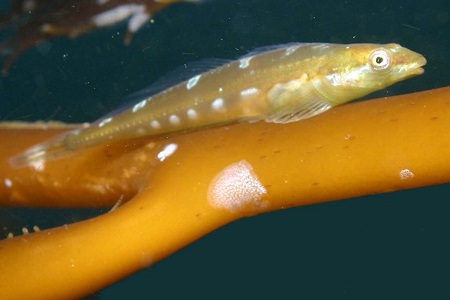
Happy Marine Life Monday! The Manacled sculpin (Synchirus gilli) is a small fish, reaching lengths of about 2.8 inches, that can be found in bays, tidepools and kelp forests from Alaska down to southern California. The Manacled sculpin, like other sculpins, can be difficult to spot as they are masters of camouflage! (Photo Credit: Steve Lonhart, NOAA/MBNMS)
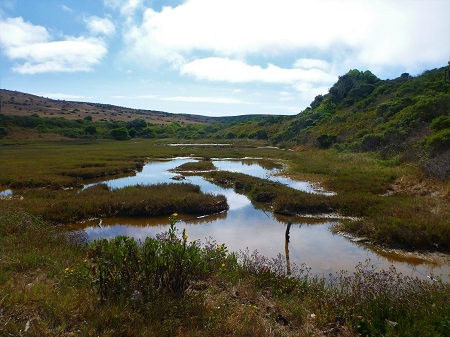
Beach Watch-Beach 706: Tomasini Creek Ranch Beach, in Tomales Bay, is one of our ‘secret beaches’ - not because it’s private, but because it’s tucked away in its own little corner of the bay with very little visitation. Accessed through Millerton Point in Tomales Bay State Park- a low tide is required, as well as willingness to wade through shallow creeks and bay inlets. But if you have an adventurous spirit and don’t mind the challenging access, your effort pays off- especially this time of year, when Tomales Bay is full of wintering waterfowl, such as Greater Scaup (Aythya marila) Ruddy Duck (Oxyura jamaicensis) and American Wigeon (Anas americana). The abundance of invertebrates and small fish bring in leopard sharks that congregate in the shallows, as well as flocks of shorebirds. Learn more about Beach Watch. (Photo credit: Beach Watch/GFNMS/NOAA)
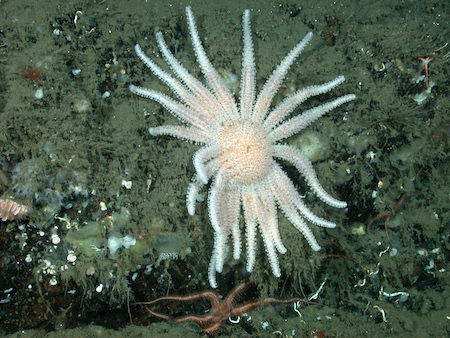
Happy Marine Life Monday! The deep-sea sunstar (Rathbunaster californicus) is a large star (it can grow to be a foot across) with 8-22 arms. While mainly an opportunistic predator and scavenger like most stars, ROV (remotely operated vehicles) footage has shown these stars catching mobile prey such as euphausids (small crustaceans such as krill) or small fish swimming by. Most stars prey on more stationary food or at least slower moving food! (Photo Credit: Kevin L. Stierhoff, NOAA/SWFSC)
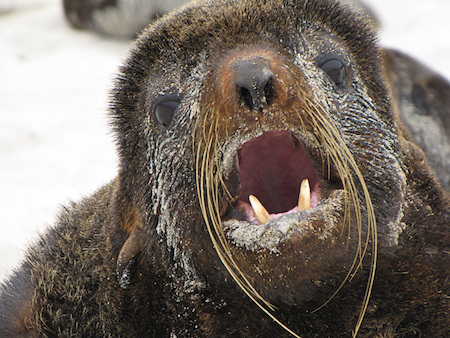
LOVE YOUR FURS, DARLING! In November, pregnant northern fur seals leave their Bering Sea breeding grounds, heading south along their Continental Shelf edge "marine superhighway," to areas off our west coast to feed, including Greater Farallones National Marine Sanctuary waters. (Photo Credit: Tony Orr, NOAA)
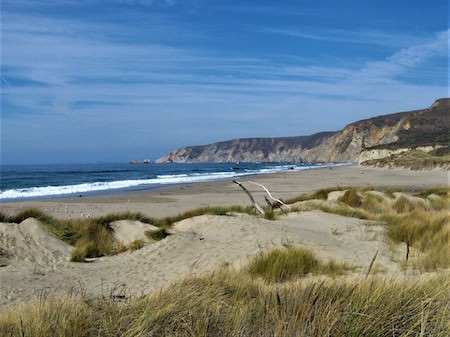
Beach Watch-Beach 114: Our third, and northernmost, survey of the Point Reyes beaches is from Kehoe Creek to Abbott’s Lagoon. A very dynamic section of coast, our surveyors have encountered everything from wrecks of Vellela vellela, to coyotes (Canis latrans) and North American river otters (Lontra canadensis). Just past the lagoon, nesting peregrine falcons (Falco peregrinus) make quick work of unsuspecting birds near shore, such as California gulls (Larus californicus) and eared grebes (Podiceps nigricollis). Occasionally, they fly offshore to the Farallon Islands, capturing species such as tufted puffins (Fratercula cirrhata) for their nestlings. This time of year, under cover of night, northern fulmars (Fulmarus glacialis) fill the air as they disperse to their pelagic wintering areas just offshore. Learn more about Beach Watch. (Photo credit: Beach Watch/GFNMS/NOAA)
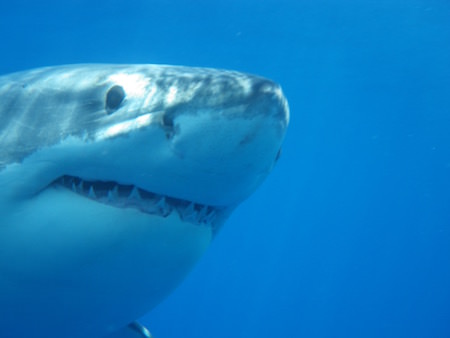
FANGS-GIVING FEAST! Right now, white sharks are raiding our bountiful Farallones pantry, partaking of blubberlicious seal meals! We thank them for their role in balancing our ecosystem, and for their sheer majesty. @GFNMS (Photo Credit: Peter Winch, NOAA/GFNMS)
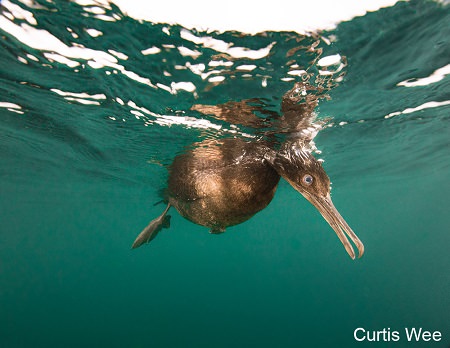
Welcome to Winged Wednesday! Cormorants are known for their superb swimming and fishing skills. Their feathers have less oil than many birds which reduces their buoyancy and aids in diving. Their webbed feet help them dart through the water to chase prey. Unlike many seabirds, cormorants are easy to see from land so keep an eye out on the shoreline for diving cormorants. Learn more about California seabirds and what Greater Farallones National Marine Sanctuary is doing to help seabirds thrive. (Photo: Curtis Wee, NOAA)
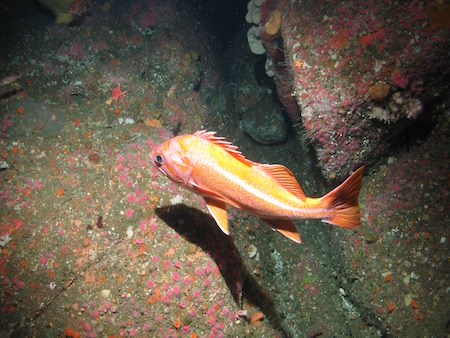
Happy Marine Life Monday! Canary rockfish (Sebastes pinniger) have a distinct white line running laterally along their bodies and white edges on their bottom fins. They are usually densely speckled with orange or yellow against a light cream color. They can reach lengths of about 30 inches and are known to live up to 84 years! (Photo Credit: NOAA/GFNMS)
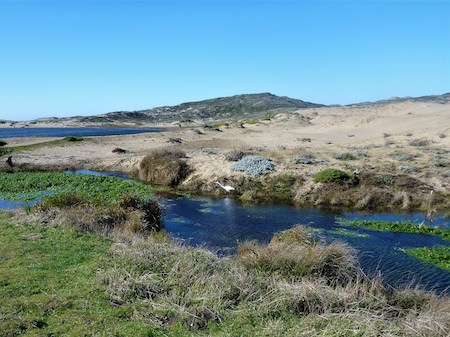
Beach Watch-Beach 115: We continue our survey along Great Beach in the Point Reyes National Seashore, the only National Seashore on the West Coast! This central portion (Point Reyes B) of the beach is made up of large dunes, coastal scrub, prairie habitat and a steep sandy beach that drops into large waves. Point Reyes is known as a ‘vagrant trap’, meaning birds migrating on the Pacific Flyway along the coast and coast ranges get ‘trapped’ here because of the peninsula jutting out into the water. Usually they just stay a couple of days to rest and refuel; but occasionally with overcast skies and unfavorable southeast winds (both unpreferred for migration) very uncommon birds will stick around. What this means beachside is an increase in odd sightings of not-so-common shorebirds such as the Pacific Golden Plover (Pluvialis fulva), Baird’s Sandpiper (Calidris bairdii), and the Lesser Sand-Plover (Charadrius mongolus). Considered the foggiest and windiest location on the west coast, Point Reyes beaches are great places to spot wildlife taking cover while waiting for more savory conditions. Learn more about Beach Watch. (Photo credit: Beach Watch/GFNMS/NOAA)
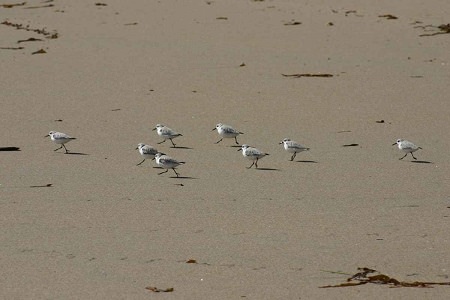
Happy Marine Life Monday! Sanderlings (Calidris alba) are a common sight along Pacific coast beaches most months of the year. However, in the summer months, they can be found in the arctic for their breeding season. These small, pale sandpipers are usually seen in flocks near the water’s edge- chasing receding waves to search for an invertebrate snack in the wet sand before running back up the beach to avoid getting wet as the waves roll in! (Photo Credit: Steve Lonhart, NOAA/MBNMS)
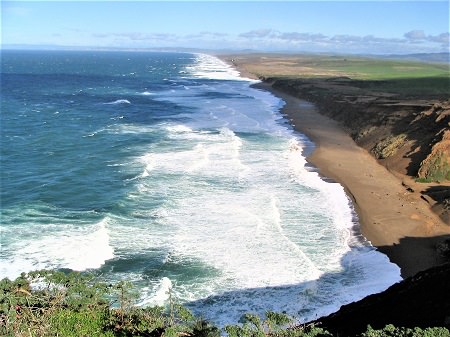
Beach Watch-Beach 116: The Great Beach in Point Reyes National Seashore is so great, in fact, that Beach Watch needs to survey it in three sections in order to capture the scope of it’s mightiness! It encompasses 17km of wild ocean shore and heavy surf pounding against the wide, sandy dunes. All three sections of the Great Beach are among our longest, and toughest surveys. Our surveyors have to be hardy and expect to be out there all day, sometimes with high winds and salt spray. Despite the challenging conditions, it is one of our most beautiful beaches. After a storm, the sand is compacted and easier for a walk and you can spot incredible cloud and wave displays. Old glass fishing floats occasionally wash up after a storm as well. Wildlife comes out to feed, and on this southern section (Point Reyes C - Southern Section), the small bright blue Velella velella, drift in when the wind is right, covering the dunes - and earning their name: By-the-Wind Sailors. Learn more about Beach Watch. (Photo credit: Beach Watch/GFNMS/NOAA)
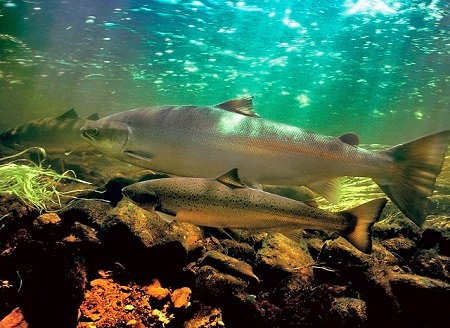
SHINING STEWARDS: Salmon 'walk the walk,' connecting upland streams and the sea. They bring nutrients from the ocean back up into rivers, watersheds and the wildlife community. The next generation returns the favor, in an elaborate circuit - or circle - of life. (Photo Credit: NOAA)
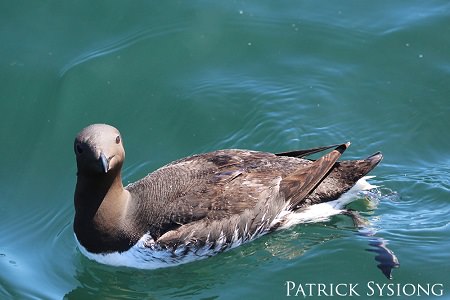
Welcome to Winged Wednesday! Did you know: Common Murres are black and white like penguins 🐧 but they can fly. ✈️ They swim to great depths 🏊 just to catch a single fish! 🐟 They’re about the size of a football 🏈 and they can live up to 27 years!👴 Learn more about California seabirds and what Greater Farallones National Marine Sanctuary is doing to help seabirds thrive. (Photo: Patrick Sysiong NOAA GFNMS)
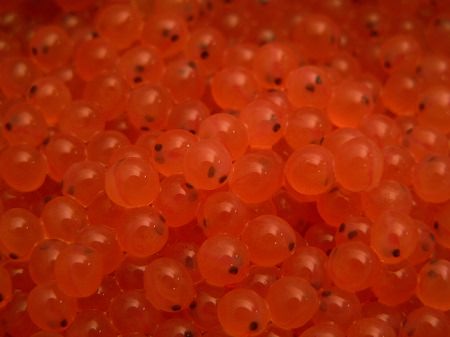
SEEING REDD: Salmon redds are the egg nests females lay in the gravelly beds of rivers. The eggs over-winter, to hatch in spring as alevins. These hide in the gravel, then "fledge" as fry to a free-swimming life, and the sea. Credit: NMFS/NOAA
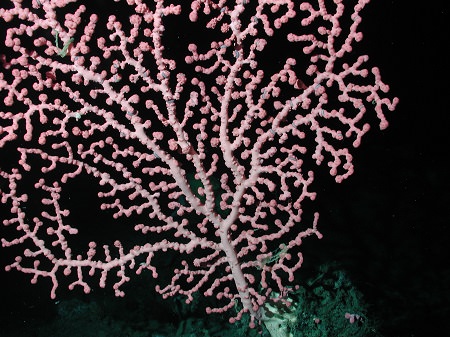
Happy Marine Life Monday! Bubblegum corals (Paragorgia arborea) are a deep-sea, cold-water coral and are generally found at depths of 650-4,200 feet! Bubblegum corals are colonies made up of tiny polyps, each containing 8 tentacles. They feed by catching plankton passing by with their tentacles and prefer areas with strong currents to keep a steady food supply flowing by! Unlike many creatures that anchor themselves to rocks, these corals anchor themselves into mud or sand. Photo Credit: NOAA/MBARI

"TIS A WONDROUS THING ... a spawning salmon tail-flicking gravel, portending good and hearty and delicious things to come, before exiting Life. You may wait years for its promise to fulfill, but then ... ah then!” - Anony. Credit: NMFS/NOAA
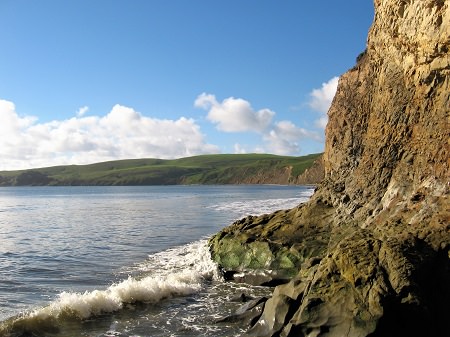
Beach Watch-Beach 203: Drakes Beach West is a popular spot for a sandy walk and gentle wading, but one of the most abundant beachgoers here is the northern elephant seal (Mirounga angustirostris)! The large males, with distinctive ‘elephant’ trunks, start hauling out in late autumn to claim territory. In winter, females haul out on these sandy shores, protected by white sandstone cliffs, to give birth, feed and wean their pups. The number of seals on Drakes Beach has increased over the past few years, and occasionally the beach will be closed off to protect seals and people. Should that be the case, a walk up the path to the overlook will provide dramatic views of the estero and outer Point Reyes, and glimpses of Tule Elk (Cervus canadensis nannodes) among the coastal scrub and prairie. Learn more about Beach Watch. (Photo credit: Beach Watch/GFNMS/NOAA)
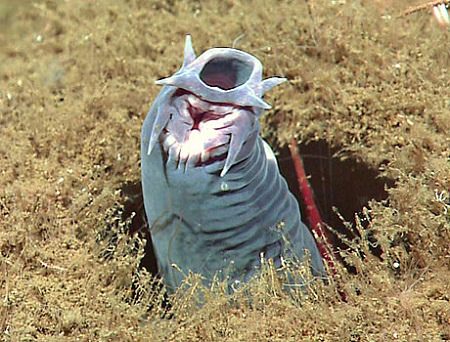
HAGFISH are at their loveliest on Halloween, when they emerge from their primal mud-baths to scout for dead and dying creatures to feed on. With ancestry dating back 330 million years, don't dare diss them! Sweet dreams on Halloween! Photo Credit: NOAA Okeanos Explorer Program
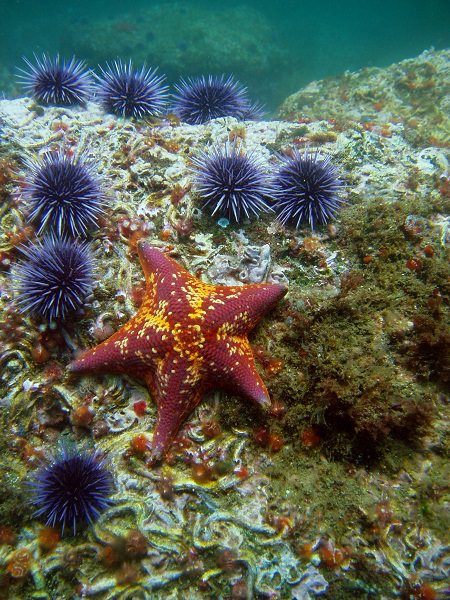
BAT STARS OOZE digestive juices over their victims and digest them where they lie! They may not fly through the night, but are formidable predators of voracious purple urchins that devastate kelp forests; another Caped Crusader! (Photo Credit: Claire Fackler, NOAA)

SWEET SURVIVAL! In spring, a salmon "alevin," its egg sac attached, hatches. These larvae can't swim freely and risk predation; even suffocation, if there's insufficient oxygen-laden sweetwater flowing over their gills. (Photo Credit: U.S. Forest Service)
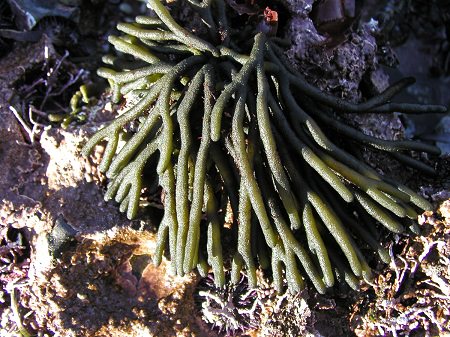
Happy Marine Life Monday! Spooky species aren’t just found in the deep sea, this spongy seaweed is dead man’s fingers (Codium fragile). It can be found in the mid to low intertidal attached to rocky surfaces. While native on the West Coast, dead man’s fingers was introduced to New England, where it is a problem for the shellfish industry. The seaweed attaches to the hard surfaces of the shellfish and once it grows large enough it can actually float away, carrying the shellfish along! (Photo Credit: Steve Lonhart, NOAA/MBNMS)
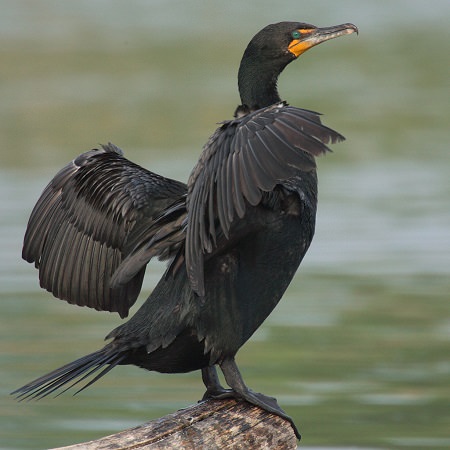
Double-crested Cormorants are big seabirds with quirky crooked necks. Found almost always in sight of land, they'll dry their soggy feathers, wings outstretched; docks and rocks are favored hangouts. Great divers, they "fly" in hot pursuit of fish and are abundant in Greater Farallones National Marine Sanctuary! (Photo Credit: USFWS)
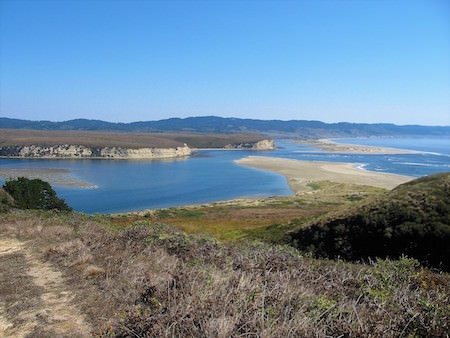
Beach Watch-Beach 204: A designated Marine Wilderness Area, Drakes Estero (and it’s adjacent Beach Watch survey beach, Drakes Beach East) is a haven for wildlife. In the 7,847 acres it encompasses, only one road passes through its upper reaches, leaving the estero largely undisturbed. Brant geese (Branta bernicla) stop on their migration from Alaska to feed on the healthy eelgrass (Zostera marina) beds, while harbor seal pups (Phoca vitulina) dine on the vast quantities of mysid shrimp (Mysida). Beachside, it’s a great place for swimming and wading nearshore - but be vigilant, great white sharks (Carcharodon carcharias) have been spotted here! After swimming and beach strolling, check out the Kenneth C. Patrick Visitor Center, right near the beach, for a cultural and natural history lesson about the bay and estero. Learn more about Beach Watch. (Photo credit: Beach Watch/GFNMS/NOAA)
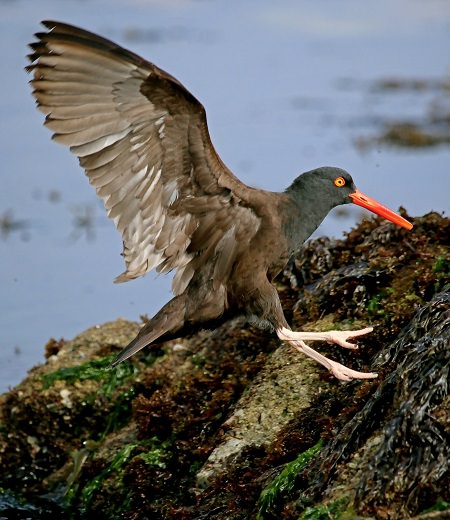
Welcome to Winged Wednesday! With its pumpkin-colored beak and dark-as-night wings, the Black Oystercatcher knows how to celebrate the season! 🎃🦇 Learn more about California seabirds and what Greater Farallones National Marine Sanctuary is doing to help seabirds thrive. (Photo: David Ledig, BLM)
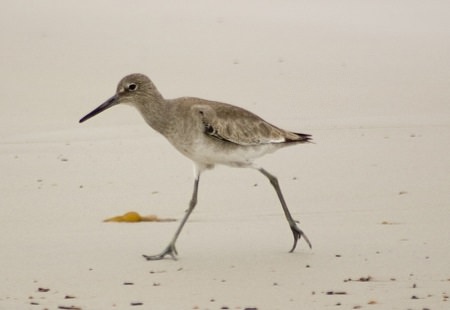
Happy Marine Life Monday! Willets (Catoptrophorus semipalmatus) are a large sandpiper that have distinct white wing patches, known as flash marks that are only seen when in flight. If a predator approaches a single Willet, the whole flock will take flight and the surprising display of the white flash marks startles the predator and aids the birds with their escape! Willets can be spotted foraging on mudflats, beaches, or in shallow water, probing or picking up food with their 2.5 inch long, sturdy bill. (Photo Credit: Chad King, NOAA/MBNMS)
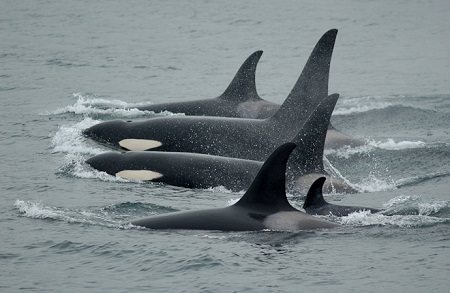
Greater Farallones National Marine Sanctuary hosts all three North Pacific killer whale: Bigg's/transients, Southern Residents, and offshores. One species, but three different lifestyles! The latter two eat fish, but Bigg's eat other marine mammals. Kids stay with Mom all their lives - and it isn’t a “millennial” thing! (Photo Credit: NOAA)
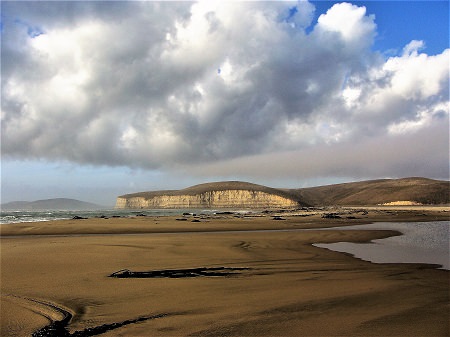
Beach Watch-Beach 205: While very similar to it’s eastern neighbor, Limantour spit (Beach 206), Western Limantour has treasures of its own. In the upwelling shadow of Drake’s Bay, the beach is impacted by counter-clockwise bay currents, which deposit interesting wrack and oddities on the beach, such as sea stars (Pisaster and Patiria miniata) and Nuttall’s cockles (Clinocardium nutalli). There are beautiful places to hike and see wetland waterbirds adjacent to Limantour estero. In the spring, this is a popular spot for California gray whales (Eschrichtius robustus) to bring their calves as the head along shore. Learn more about Beach Watch. (Photo credit: Beach Watch/GFNMS/NOAA)
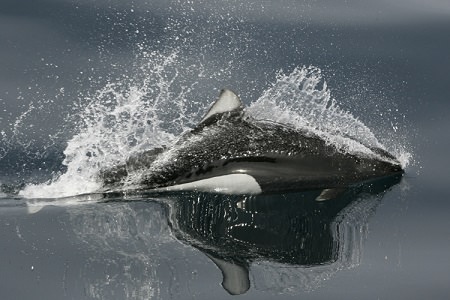
Baby killer whales? NO! These diminutive speedsters with the cool black-and-white paint jobs are Dall's porpoises. They reach speeds up to 35mph, surfacing in whitewater bursts, raising "rooster-tails" in their wake. See them in Greater Farallones National Marine Sanctuary! (Photo Credit: Sally Mizroch,NOAA/NWFSC)
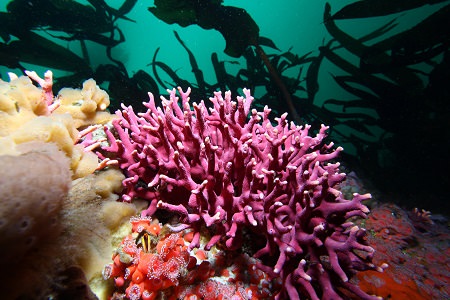
Happy Marine Life Monday! California hydrocorals (Stylaster californicus) have hard calcareous skeletons with very small polyps embedded in their skeletal pores. They can be found attached to rocky substrates at depths of 4-110 meters. These hydrocorals thrive in high current areas where plenty of plankton passes by and is available for meals- now that’s fast food! (Photo Credit: Chad King / NOAA MBNMS)
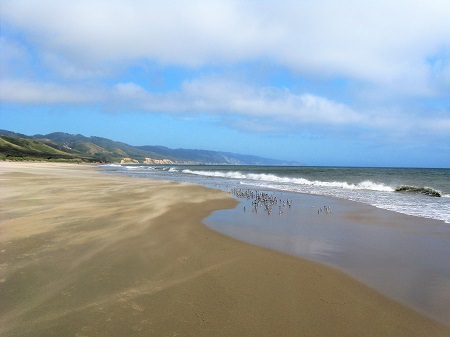
Beach Watch-Beach 206: California Quail (Callipepla californica) on the beach may sound like an unusual sight, but on the eastern spit of Estero de Limantour, it’s just another day on the marsh. The sandy outer-spit of Limantour Beach (Eastern portion) shelters inner swells, producing a thriving Pacific estuary. A visit to this special place that serves as a nursery for Dungeness Crab (Metacarcinus magister), a haul out for Harbor Seals (Phoca vitulina) and a feeding area for shorebirds, Leopard Sharks (Triakis semifasciata) and Bat Rays (Myliobatis californica), is an incredible way to spend a day in Point Reyes National Seashore. On the beach-spit side, the calm waves and wide sandy beach make this an excellent wading and walking spot within the tide line. Learn more about Beach Watch. (Photo credit: Beach Watch/GFNMS/NOAA)
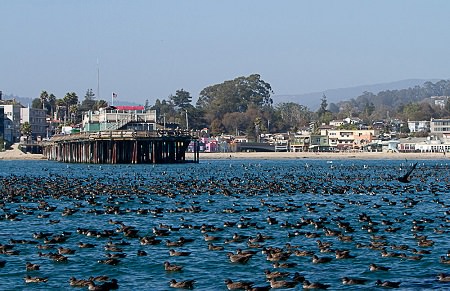
Welcome to Winged Wednesday! It’s National Seafood Month and seabirds are the ultimate seafood connoisseurs. Millions of sooty shearwaters travel tens of thousands of miles for the fishy feasts found in California's bountiful offshore waters. They forage close to shore, as seen here at Capitola Wharf in our neighboring sanctuary, NOAA’s Monterey Bay National Marine Sanctuary. Keep an eye out on the coast! Learn more about California seabirds and what Greater Farallones National Marine Sanctuary is doing to help seabirds thrive.(Photo: Jonathan Felis, USGS)
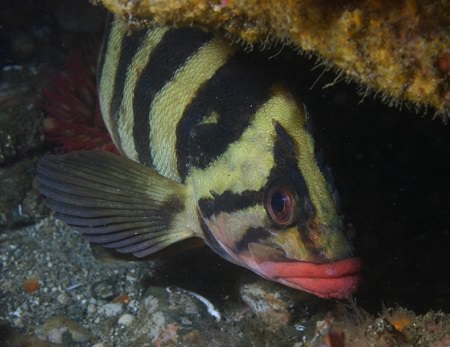
Happy Marine Life Monday! All dressed up and ready to go-we can all find a little Monday morning motivation from this fish! Adult treefish (Sebastes serriceps) are unique looking with distinctive bright red lips in addition to bars of black and yellow. They can be found from San Francisco south to Baja, California and are usually observed in benthic habitats, hiding in crevices or among rocky outcrops while protecting a territory. (Photo Credit: Steve Lonhart, NOAA/MBNMS)
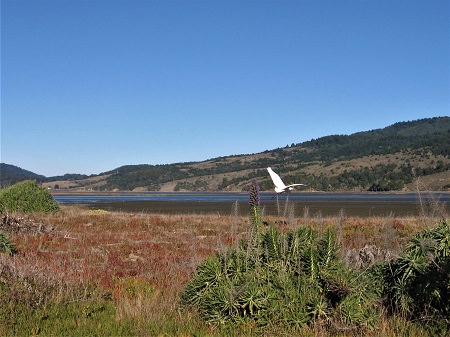
Beach Watch-Beach 601: Part of Greater Farallones National Marine Sanctuary, a Ramsar Convention Wetlands of International Significance, and an Audubon Wetlands of Special Importance, Bolinas Lagoon is a true haven for many animals to rest and feed on long migrations or after time out at sea. But it doesn’t take a special piece of paper to recognize this- a simple walk around the lagoon will reveal the beauty of this important habitat. Harbor Seals (Phoca vitulina) use it as an important haul-out to rest after foraging at sea; the shallow water and abundance of invertebrates make this a significant stop on the Pacific Flyway, where at times, 35,000 shorebirds are seen during Spring and Autumn migrations. The lagoon hosts Black Rails (Laterallus jamaicensis), California Red-legged frogs (Rana draytonii); and in Spring, nesting Great Blue Herons (Ardea herodias) and Snowy Egrets (Egretta thula) in the Coast Redwoods (Sequoia sempervirens) and Douglas Firs (Pseudotsuga menziesii). Because of the sensitive ecology of the habitat, please don’t disturb the resting or feeding animals, they have long journeys ahead and behind them! Learn more about Beach Watch. (Photo credit: Beach Watch/GFNMS/NOAA)
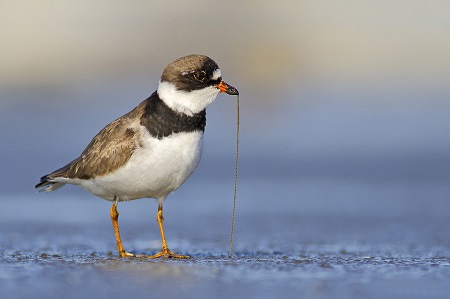
Happy Marine Life Monday! The Semipalmated Plover (Charadrius semipalmatus) breeds in the Arctic but can be spotted along the California coast in the fall as it migrates to Baja, and again in the spring when it returns north. The term "semipalmated" refers to its partly webbed feet. These small shorebirds forage for food on beaches, tidal flats and fields where they search for insects, crustaceans and worms (as seen here) to eat!(Photo Credit: Enrique Patino, NOAA Fisheries West Coast)
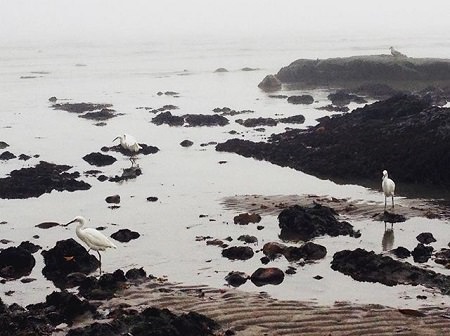
Beach Watch-Beach 213:Separated from most of North America (with an atmosphere that indeed feels that way), Bolinas Beach and adjoining Duxbury Reef sit on the the Pacific Plate on the opposite side of the San Andreas Fault. This survey is one of our longest and most rewarding- from a narrow sandy lagoon beach to a rocky reef based shoreline- volunteers dodge the tides and have documented feeding Osprey (Pandion haliaetus). Low tides that drain the lagoon and reef feed resident Snowy Egrets (Egretta thula). Duxbury is one of the largest shale reefs in North America, and a minus tide will reveal Aggregating Anemones (Anthopleura elegantissima) and various nudibranchs (Nudibranchia). As a truly isolated and quiet piece of coast, it’s important to remember to respect the landscape, atmosphere, wildlife, and people who live there. Learn more about Beach Watch. (Photo credit: Beach Watch/GFNMS/NOAA)

Welcome to Winged Wednesday! The Common Murre is a 14” tall cousin of the puffin that can live up to 27 years. As many as 20 pairs of Common Murres may occupy one square meter to incubate their eggs! Learn more about California seabirds and what Greater Farallones National Marine Sanctuary is doing to help seabirds thrive. (Photo: Roy Lowery USFWS)
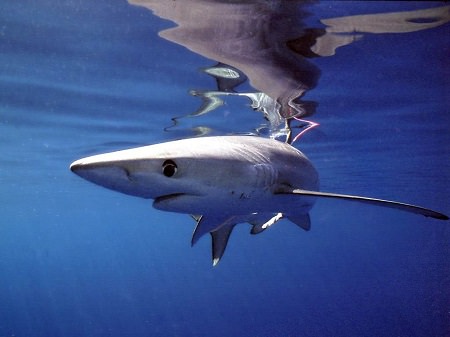
There are at least sixteen known species of sharks in the sanctuary! Do you know what type of shark this is? Photo Credit: Walter Heim, NOAA/SWFSC

Happy Marine Life Monday! The longnose skate (Raja rhina) is a bottomfish and can be found from Alaska down to Baja California. The name, rhina, is derived from the word “rhinos”-greek for nose and this skate was named for its very long and pointed snout. The longnose skate dwells on the seafloor and is well camouflaged to hide both from predators and to better surprise its own prey (small fish and invertebrates).(Photo Credit: NOAA/CBNMS)
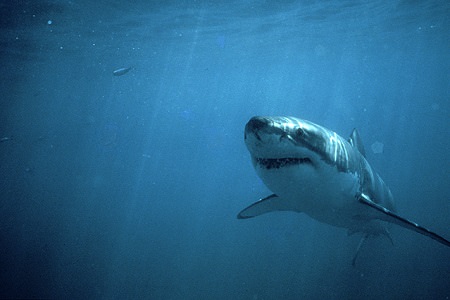
Did you know that White Sharks (Carcharodon carcharias) can reach lengths of 21.5 feet! Find out more about sharks at Sharktoberfest, Saturday September 29th, 11am-4pm! (Photo Credit: Steven K. Webster/Monterey Bay Aquarium)
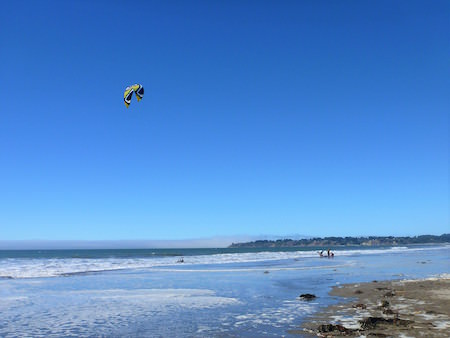
Beach Watch-Beach 214:Images of umbrellas and lifeguard stands don’t typically come to mind when thinking of our wild Northern California beaches, but Stinson beach in Marin County, part of the Greater Farallones National Marine Sanctuary, lives up to that idyllic image. White sands, warm weather (sometimes), and the Pacific partly bordered by headlands; make this a picturesque place for a classic beach day. Look twice before you lay down your blanket, as Threatened Western Snowy Plovers (Charadrius nivosus nivosus), like to roost in the soft sand during the wintertime. Learn more about Beach Watch (Photo credit: Beach Watch/GFNMS/NOAA)
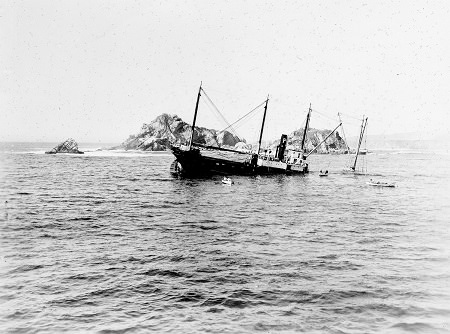
On September 20, 1938, the SS Dorothy Wintermote sank in deep water off Gualala Point after it was refloated and an attempt was made to take the freighter under tow. Three days earlier the steamship, with a crew of 29, left San Francisco for Portland, Oregon, likely with plans to return with a cargo of lumber. Captain O. J. Olsen encountered fog off the coast and gave orders for the vessel’s speed to be reduced. He was about to take soundings to determine water depth when the ship struck bottom off Fish Rock, 11 miles south of Point Arena. Fish Rock had claimed many vessels over the years. The U.S. Coast Guard cutter Shoshone responded to the S.O.S. sent by the stranded freighter’s radio operator, and picked up survivors in the lifeboats. The captain told the Oakland Tribune, “I never really knew before what coastguardsmen put up with and I now realize that I had never really been at sea until they took me ashore through a rough sea at Arena Cove. I even didn’t get my feet wet.” Captain Olsen was the last man to leave the ship before the Dorothy Wintermote sank. Credit: San Francisco Maritime Historical Park
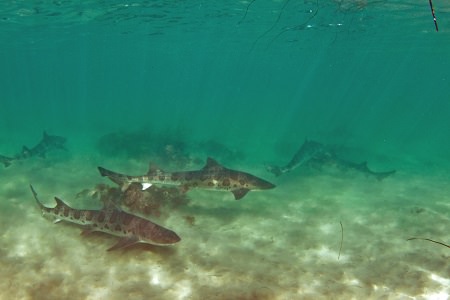
Leopard sharks have a gray body, white belly and black spots when they are young and living in shallow waters, but as they grow older these spots can fade. Who says a leopard can't change its spots? (Photo Credit: Adam Obaza/NOAA)
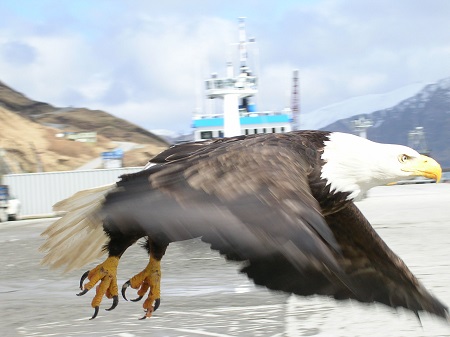
Happy Marine Life Monday! The Bald Eagle (Haliaeetus leucocephalus) is one of the largest birds in North America, with a wingspan of about 6.5 feet! This large bird of prey feeds on other birds, reptiles, amphibians, invertebrates, and small mammals. One of their feeding strategies is to steal a meal from another animal. They have been known to harass other birds of prey until they drop their food or even to snatch food right from their talons! Sanctuary Explorations participants were lucky enough to see a Bald Eagle on our last excursion in Greater Farallones National Marine Sanctuary! (Photo Credit: Crew and Officers of NOAA ship Miller Freeman)

Sharktoberfest is coming! Save the Date! (Photo Credit: Peter Winch)
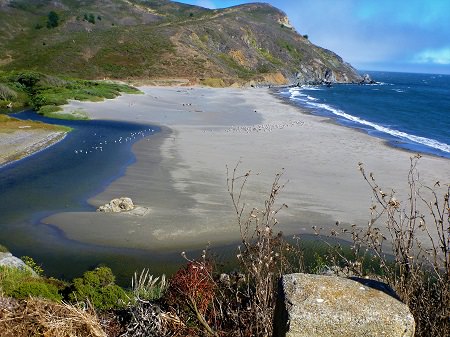
Beach Watch-Beach 219: Muir Beach is a little gem of many habitats. In autumn, follow the bridge across the restored marsh, and you may see Monarch Butterflies (Danaus plexippus) roosting on migration. In winter, follow the Coastal Trail up a bluff of scrub vegetation to Muir Beach Overlook, and get sweeping views of the Pacific and catch migrating California Gray Whales (Eschrichtius robustus). This beach is the outlet for Redwood Creek, which runs down Mount Tamalpais, through Muir Woods, and out to sea at Muir Beach. This creek hosts species of incredible biodiversity, including many California threatened species; including Coho Salmon (Oncorhynchus kisutch), Steelhead Trout (Oncorhynchus mykiss irideus) and the California Red-Legged Frog (Rana draytonii). Foggy mornings are best for seeing wildlife, and avoiding the crowds. Learn more about Beach Watch. (Photo credit: Beach Watch/GFNMS/NOAA
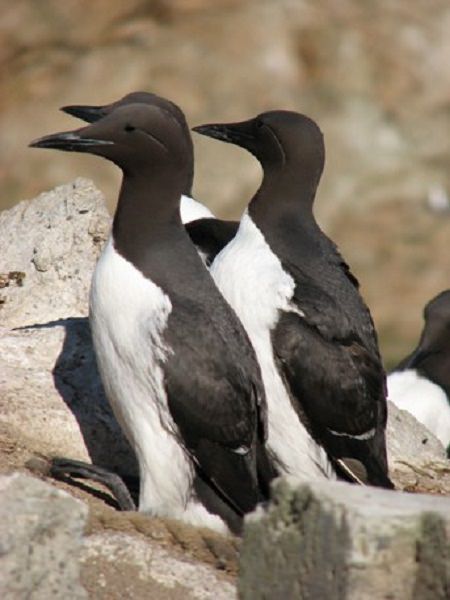
Welcome to Winged Wednesday! Common Murres may have tuxedo colors and upright posture but they’re not related to penguins. 🐧 They’re actually members of the Alcidae family that includes the puffin and there’s one big difference: They can fly! Learn more about California seabirds and what Greater Farallones National Marine Sanctuary is doing to help seabirds thrive. (Photo: USFWS)
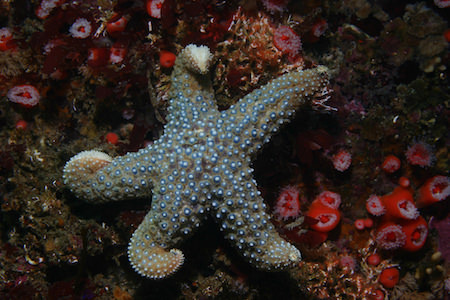
Happy Marine Life Monday! The giant spined star (Pisaster giganteus) is not actually giant in size. It gets its name from its pronounced, large spines which are a distinct white surrounded by a ring of blue or purple. Like other echinoderms, this star possesses a water vascular system. These water-filled tubes aid in respiration, food capture and locomotion via tube feet! (Photo Credit: Steve Lonhart, NOAA/MBNMS)
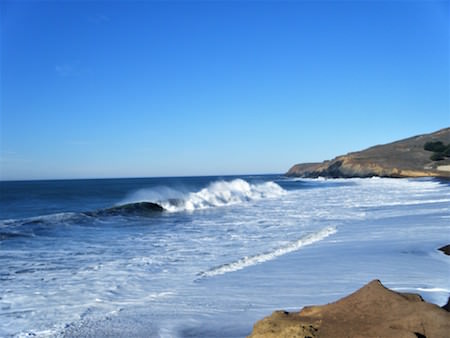
Beach Watch-Beach 223:Rodeo Beach, located in the Marin Headlands, is a unique and exhilarating California beach in many regards. Geologically, it’s comprised of pillow basalt and radiolarian chert, resulting in a unique mineral composition that creates stones of carnelian, jade, black agate, and jasper (rock collecting is prohibited on Rodeo Beach). This beach is also home to the endangered Tidewater Goby (Eucyclogobius newberryi), a small fish which burrows in the sediment of Rodeo Lagoon. The lagoon is an excellent location for birdwatching and if you walk south along the coastal trail, you can also check out the birds on Bird Island just offshore (now is the perfect time - as the famous Marin Headlands raptor migration is underway). Beachside, The Marine Mammal Center (a Sanctuary partner), often releases rehabilitated California Sea Lions (Zalophus californianus) into the sea. Learn more about Beach Watch (Photo credit: Beach Watch/GFNMS/NOAA)
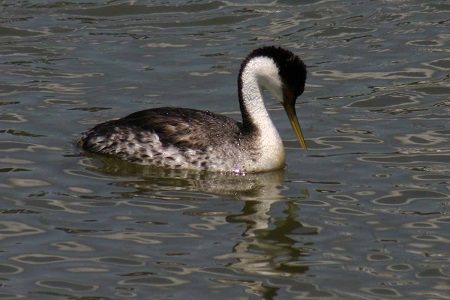
Happy Marine Life Monday! The Western Grebe (Aechmophorus occidentalis) is well known for its elaborate courtship displays; they rear up on the water and rush towards each other with their long necks extended. After choosing a mate, they build a floating nest hidden among plants emerging from the shallow waters in marshes. After their chicks hatch, they ride on the backs of the parents! (Photo Credit: Steve Lonhart, NOAA/MBNMS)
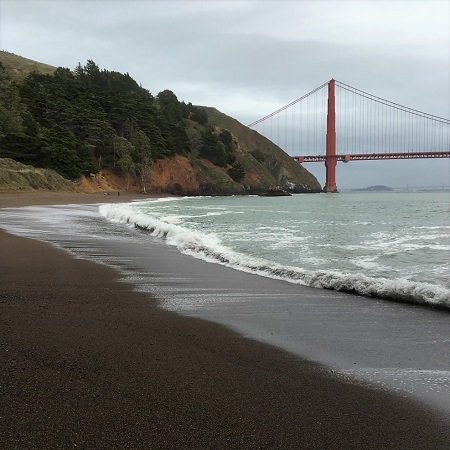
Beach Watch-Beach 230:Heading north across the Golden Gate, you reach the Kirby Cove beach survey. Coarse sand and a remote cove sheltered by craggy headlands makes this an ideal spot for viewing wildlife and ships passing in and out of Golden Gate Straights. Brandt’s Cormorants (Phalacrocorax penicillatus) flying to and from Alcatraz Island are a common sight, along with nesting Pigeon Guillemots (Cepphus columba). It’s easy to feel like you are really out at sea on this beach as you watch the ebb and flow of the tides and fog. Learn more about Beach Watch. (Photo credit: Beach Watch/GFNMS/NOAA)
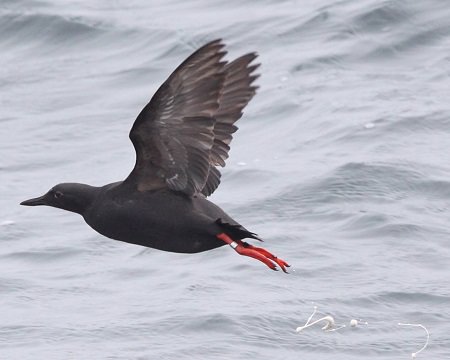
Welcome to Winged Wednesday! Look closely! Seabirds’ guano is nothing to pooh-pooh! Birds’ fish-packed meals turn into nutrient-packed fertilizer on land that is sometimes regarded as “white gold.” Learn more about California seabirds and what Greater Farallones National Marine Sanctuary is doing to help seabirds thrive. (Photo: Sophie Webb NOAA SWFSC)
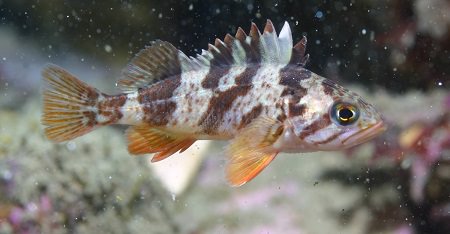
Happy Marine Life Monday! The calico rockfish (Sebastes dallii) can be found from San Francisco, California down to Baja California, Mexico. They have a distinctive mark that looks like a "Y" and is a dark brown or red color. This marking begins below the first dorsal fin and extends up onto it. “Y” are you looking at me? (Photo Credit: Steve Lonhart, NOAA/MBNMS)
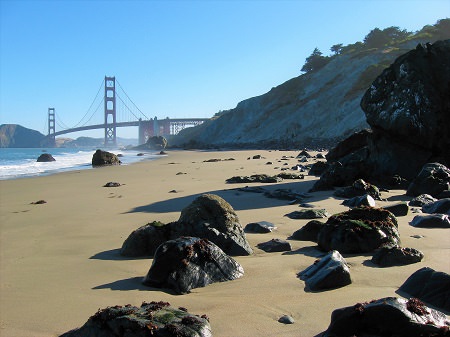
Beach Watch-Beach 302: Baker Beach is arguably one of the most iconic beaches on the West Coast - mostly because of the dramatic view of the Golden Gate Bridge. Come for the bridge and beachwalking sand, and stay for the whales! Humpback Whales (Megaptera novaeangliae), California Gray Whales (Eschrichtius robustus), Harbor Porpoise (Phocoena phocoena), and Bottlenose Dolphins (Tursiops tursiops) have been seen in increasing numbers over the past few years. While walking, you may notice rare native wildflowers in the dunes, such as Marin Dwarf Flax (Hesperolinon congestum) and Dune Gilia (Gilia capitata ssp.chamissonis) . The serpentine cliffs create an ideal environment for these special plants to thrive. Learn more about Beach Watch. (Photo credit: Beach Watch/GFNMS/NOAA)
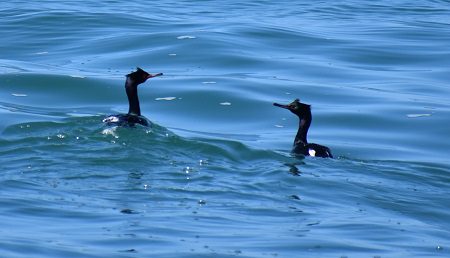
Happy Marine Life Monday! The Pelagic Cormorant (Phalacrocorax pelagicus) appears most delicate and is the smallest of the 3 cormorants found in Greater Farallones National Marine Sanctuary- can you name the other 2? (Hint: the other 2 species of cormorants have been featured in past Marine Life Mondays!) When in breeding plumage, the Pelagic Cormorant has a distinct white patch on its flank (as seen in this photo). (Photo Credit: Sara Heintzelman, NOAA/GFNMS)
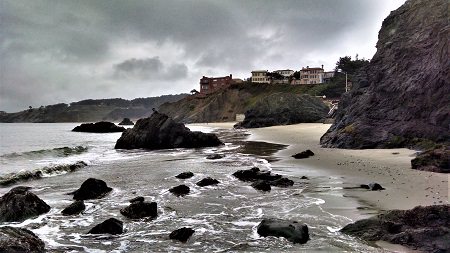
Beach Watch-Beach 304: China Beach is a quaint cove in San Francisco with a storied past. The marker at the trailhead leading down to the beach steps states: “Since gold rush times, this cove was used as a campsite by many of the Chinese fishermen who worked in and around San Francisco Bay. Their efforts to supply the needs of a young city helped establish one of the area's most important industries and traditions.” The surf at China Beach is calmer than Ocean Beach or Baker Beach, making it popular with swimmers, but pay attention to surf warnings and rip currents. If you do decide take a dip, you may briefly see the elusive Harbor Porpoise (Phocoena phocoena), whose numbers have been increasing in the area after a long absence. Learn more about Beach Watch. (Photo credit: Beach Watch/GFNMS/NOAA)
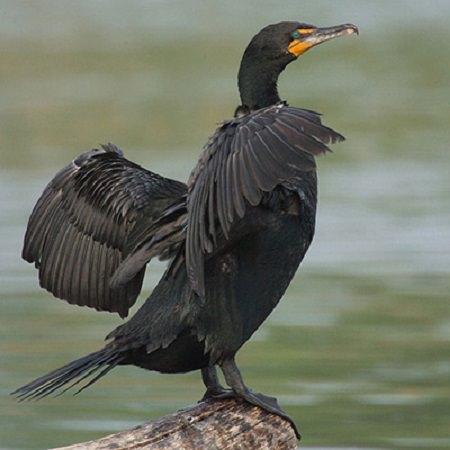
Welcome to Winged Wednesday! Seabirds enjoy summer sunshine--but they’re not trying to get a tan! Cormorants bask in the sun to dry their wings because their feathers are not waterproof and have less oil which reduces their buoyancy. This feature makes them excellent swimmers and divers and perfectly suited to hunt underwater for fish. Learn more about California seabirds and what Greater Farallones National Marine Sanctuary is doing to help seabirds thrive. (Photo: USFWS)
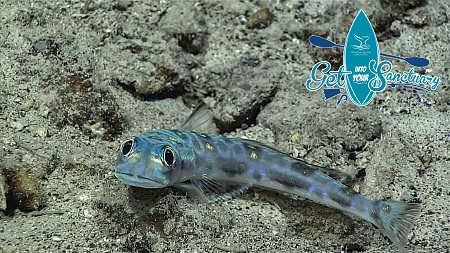
Don't look so worried! You have until tomorrow to enter the Get Into Your Sanctuary Photo Contest! (Photo Credit: NOAA Office of Ocean Exploration and Research, 2017 American Samoa)
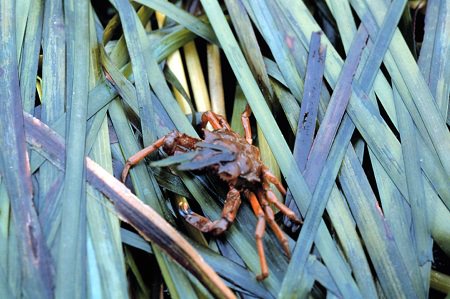
Happy Marine Life Monday! The graceful kelp crab (Pugettia gracilis) can be found along rocky shorelines and in eelgrass beds from Alaska down to Monterey, California. Its carapace, or shell, can reach lengths of about 2 inches and has distinct rows of small hooks. It can attach algae, eelgrass or even other organisms onto these carapace hooks for camouflage! (Photo Credit: NOAA/NERR)
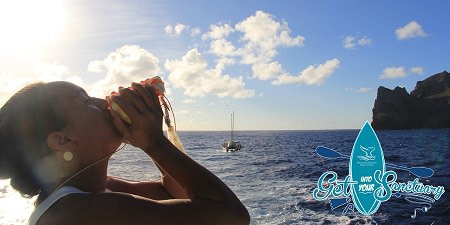
Sanctuary Saturday: Located in the Northwestern Hawaiian Islands, Papahānaumokuākea Marine National Monument is of great importance to Native Hawaiians. Significant cultural sites are found on the islands of Nihoa and Mokumanamana. Though the monument is closed to the general public, you can learn about the culture and nature it protects at the Mokupāpapa Discovery Center. (Photo: Jamie Makasobe)
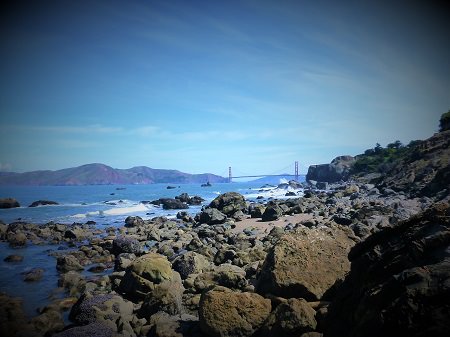
Beach Watch-Beach 306: The Lands End survey is technically considered an urban beach, located in San Francisco, but it’s one of the best places in the city to escape to some wild coastline. Some other wild visitors you might see are Pigeon Guillemots (Cepphus columba) which nest on Hermit Rock, just off the beach. This is also the rock preferred by the occasional Parakeet Auklet (Aethia psittacula), a rare visitor to the area. A rugged coastal trail extends down to the beach through the cypress and willow forest, offering great views of wildlife migrating in and out of the bay, including the occasional Humpback Whale (Megaptera novaeangliae)! Learn more about Beach Watch. (Photo credit: Beach Watch/GFNMS/NOAA)
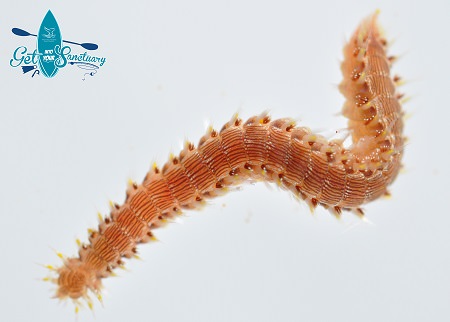
WHAT IN THE WORLD IS IT? Can you do better? Enter the Get Into Your Sanctuary Photo Contest! (Photo Credit: NOAA/NMFS/PIFSC/ARMS)
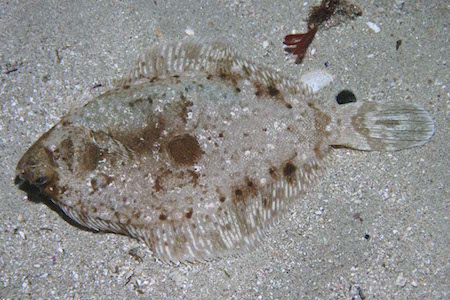
Happy Marine Life Monday! The C-O Turbot, also called the C-O sole (Pleuronichthys coenosus) gets its name from the distinct markings on its caudal (tail) fin which resemble the letter C and the letter O. This flatfish is a master of camouflage and lies in wait, on sandy or muddy sea floors, to ambush its prey. Now you see me, now you don't! (Photo Credit: Steve Lonhart / NOAA MBNMS)
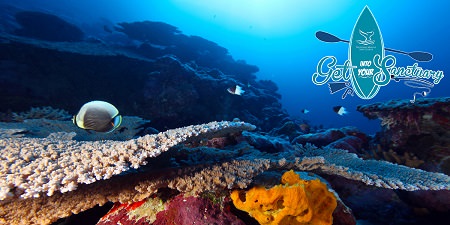
Sanctuary Saturday: Travel to an undersea paradise in National Marine Sanctuary of American Samoa! This remote sanctuary protects an enormous variety of coral and other marine species. The quarter-mile Fagatele Bay alone is home to nearly 170 species of coral! Learn about visiting. (Photo: Greg McFall/NOAA)
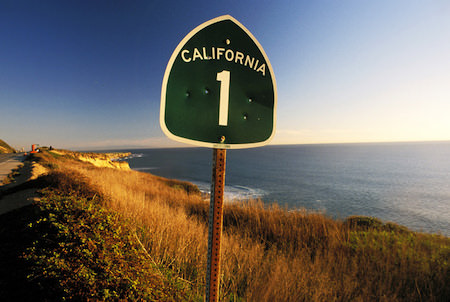
Get into Your Sanctuary Weekend is here! How are you celebrating? If you are still looking for an exciting adventure in your sanctuary, check out the new Get Into Your Sanctuary Storymap!
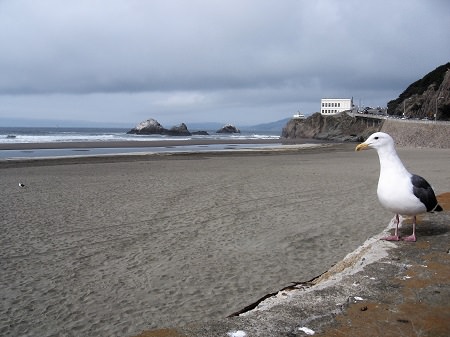
Beach Watch-Beach 308:The northernmost section of Ocean Beach is it’s own survey. Adjacent to Golden Gate Park and popular for beach bonfires, this beach is a scenic and nostalgic part of the city. A walkway built in the early 1900s follows the seawall along the beach, providing views of the Pacific and roosting cormorants on the nearby rocks. This urban beach is the perfect place to enjoy mild weather in August and September, and watch giant flocks of Sooty Shearwaters (Ardenna grisea) as they migrate thousands of miles to their nesting grounds in New Zealand. Learn more about Beach Watch. (Photo credit: Beach Watch/GFNMS/NOAA)

Dive into your sanctuaries! Stop by the Greater Farallones Visitor Center to take a virtual reality dive into the sanctuaries. August 4 & 5, 10am-4pm. Free! No reservation required. Immerse yourself in the ocean and your national marine sanctuaries without getting wet! These virtual reality voyages use 360-degree images to highlight the amazing habitats, animals, and cultural resources you can find in each national marine sanctuary. Learn more about all of our Get Into Your Sanctuary activities.

Welcome to Winged Wednesday!What is this adorable puffball? A Pigeon Guillemot chick! After being fed by both parents for a little over a month these chicks leave the nest and flutter out to sea. Just a few weeks later, they are expert flyers. Learn more about California seabirds and what Greater Farallones National Marine Sanctuary is doing to help seabirds thrive. (Photo: Alcatraz NPS)
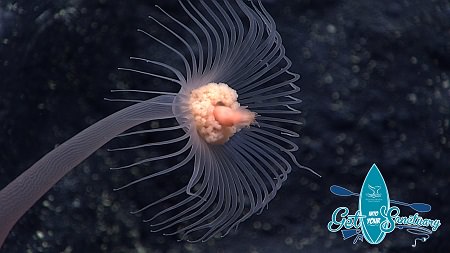
7/31/18 - WHAT IN THE WORLD IS IT? Can you do better? Enter the Get Into Your Sanctuary Photo Contest! go.usa.gov/xQdMn (Photo Credit: NOAA Office of Ocean Exploration and Research, 2015 Hohonu Moana)
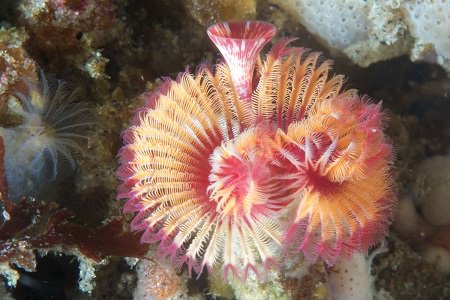
7/30/18 - Happy Marine Life Monday! The feather-duster worm (Serpula columbiana) lives inside a calcareous tube that it builds by secreting calcium from a pair of glands. It can be found in the intertidal down to depths of 100 meters. This worm filter feeds by extending its feather-like structures which are clearly seen here! (Photo Credit: Pete Naylor, REEF)
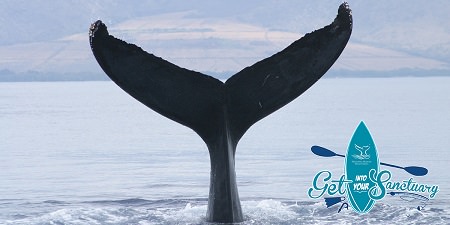
7/28/18 - Sanctuary Saturday: Whale, whale, whale...looks like the perfect time to start planning your whale watching adventure in Hawaiian Islands Humpback Whale National Marine Sanctuary! Every winter, thousands of humpback whales make their way to these warm waters around the Hawaiian Islands to mate, give birth, and care for their newborn calves. Learn about whale watching opportunities in the sanctuary at hawaiihumpbackwhale.noaa.gov/explore/whale_watching.html. (Photo: NOAA)

7/27/18 - Beach Watch-Beach 309:Ocean Beach, the central portion of which is it's own Beach Watch segment, is a wild beach with an urban backing. Fog and frigid seas from oceanic upwelling creates a dreamy landscape for chilly summer beach walks, shark and skate egg cases are often found in the beach wrack, along with over-wintering Threatened Western Snowy Plovers (Charadrius nivosus). With a wide expanse of the Pacific out to the horizon, it's one of the best surf spots in Northern California, but unless you know what you're doing, don't go in the water - the rips are extremely dangerous. To learn more about Beach Watch: farallones.noaa.gov/science/beachwatch.html (Photo credit: Beach Watch/GFNMS/NOAA)
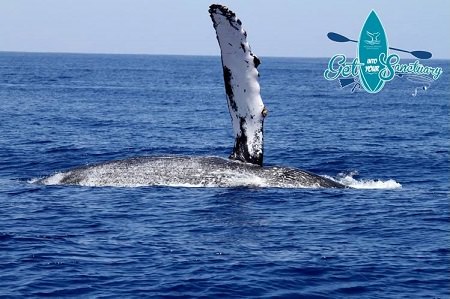
7/26/18 - Raise a hand (or fin!) if you want to go whale watching! Plan a "Get Into Your Sanctuary" whale watching adventure in Greater Farallones National Marine Sanctuary on August 4th or 5th. For more information: http://farallones.noaa.gov/education/specialevents.html (Photo Credit: Ed Lyman/NOAA Permit #15240)
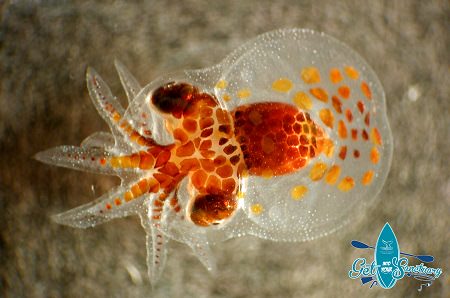
7/24/18 - WHAT IN THE WORLD IS IT? Can you do better? Enter the Get Into Your Sanctuary Photo Contest! go.usa.gov/xQdMn (Photo Credit: Matt Wilson/Jay Clark, NOAA NMFS AFSC)
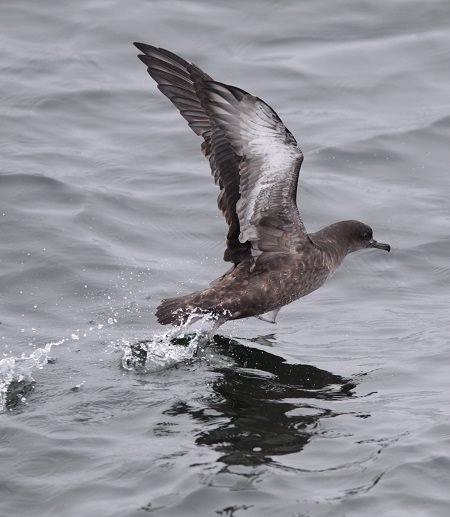
7/23/18 - Happy Marine Life Monday! The Sooty Shearwater (Puffinus griseus) is found in all the world's oceans, but is only known to breed in the Southern Hemisphere.This pelagic (living in the open sea) bird only comes ashore to breed. It forages with two strategies: 1. shallow dives from the ocean surface or 2. plunging dives from flight. During these plunging dives shearwaters have been known to dive more than 200 feet deep! (Photo Credit: Sophie Webb, NOAA/SWFSC)
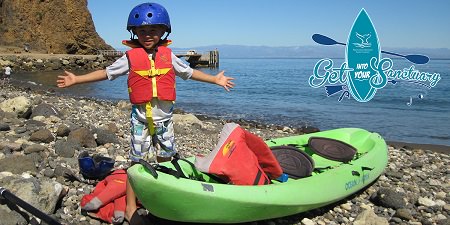
7/21/18 - Sanctuary Saturday: Get ready for adventure! From kayaking to wildlife watching, Channel Islands National Marine Sanctuary has something for everyone, from young to old. Learn how to get there and what to do at channelislands.noaa.gov/visit/. (Photo: Claire Fackler/NOAA)
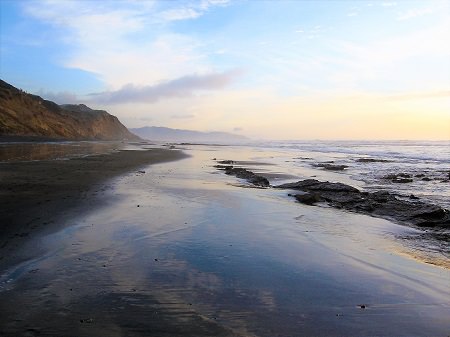
7/20/18 - Beach Watch-Beach 311: Thornton Beach North is better known to land-lubbers as Fort Funston, a beautiful cliff-backed beach with native dune vegetation which is popular with dog walkers. It's the San Francisco peninsula's largest remaining dune field. The sandstone cliffs to which these dunes contribute are critical habitat for Bank Swallows (Riparia riparia), and this is one of their last two remaining coastal nesting sites (the other is Año Nuevo, also a Beach Watch segment). Native plant enthusiasts will be treated to Seaside Buckwheat (Erigonum latifolum) and Chamisso Bush Lupine (Lupinus chamissonis) on the steep walk down the sand steps. To learn more about Beach Watch: farallones.noaa.gov/science/beachwatch.html (Photo credit: Beach Watch/GFNMS/NOAA)
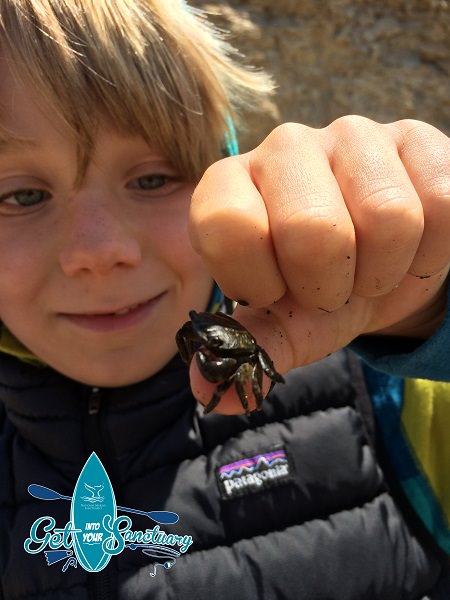
7/19/18 - Don't feel crabby, we still have spaces available in the Crab Family workshops on Saturday August 4th! 10:00-11:30am or 1:00-2:30pm. Attention all creative crustaceans! It's Get Into Your Sanctuary Day so prepare your claws and carapaces for a family event devoted entirely to crabs! Learn about crab anatomy with our crab dress-up costume. Look and touch real live shore crabs and sand crabs. Use crab traps to fish for rock and Dungeness crabs off of our classroom pier. (Photo Credit: Sara Heintzelman, NOAA/GFNMS)
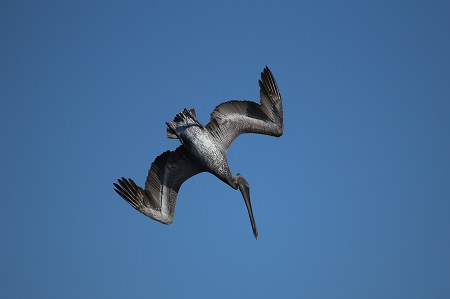
7/18/18 - Welcome to Winged Wednesday! Coming in for a landing! Have you spotted any Brown Pelicans diving for food off the coast this month? They're passing through the Bay Area on their northward migration from Southern California and Mexico and following the anchovies and sardines as they go. To learn more about California seabirds and what Greater Farallones National Marine Sanctuary is doing to help seabirds thrive, visit http://farallones.noaa.gov/eco/seabird/ (Photo: NOAA Ship Fairweather)
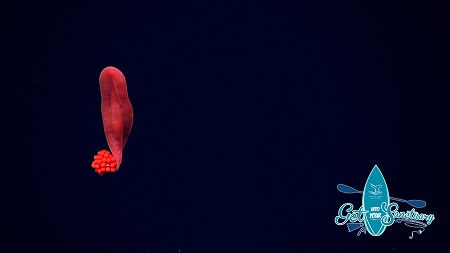
7/17/18 - WHAT IN THE WORLD IS IT? Can you do better? Enter the Get Into Your Sanctuary Photo Contest! go.usa.gov/xQdMn (Photo Credit: NOAA Office of Ocean Exploration and Research, 2015 Hohonu Moana)
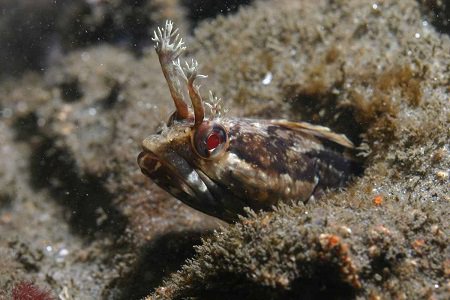
7/16/18 - Happy Marine Life Monday! The one-spot fringehead (Neoclinus uninotatus) is a very territorial fish that is usually found hiding inside rocky crevices or even man-made items; such as bottles or tires that have ended up in the ocean. Females lay eggs, at which time the male takes over and guards them until they hatch!
(Photo Credit: Steve Lonhart, NOAA/MBNMS)

7/14/18 - Sanctuary Saturday: Orca-strate some adventure this summer with a visit to Monterey Bay National Marine Sanctuary! Known as the Serengeti of the Sea, this West Coast national marine sanctuary is home to a dazzling array of wildlife. Here, you'll find 36 species of marine mammals, more than 180 species of birds, 525 species of fish, and more! Explore things to do and places to go at montereybay.noaa.gov/visitor/explore.html. (Photo: Douglas Croft)

7/13/18 - Beach Watch-Beach 315:
You can spot fishermen pull in salmon and striped bass, along with a variety of other
ocean species such as surfperch and jacksmelt at the Pacifica Municipal Pier at Sharp
Park. On the beach, early risers may see large flocks of Brown Pelicans (Pelecanus
occidentalis) doing their share of fishing as well. In the mood for a hike? Continue
south to Mori Point where several trails lead from the beach up to the ridge at the
summit, offering wonderful views of the area.
To learn more about Beach Watch: farallones.noaa.gov/science/beachwatch.html (Photo credit: Beach Watch/GFNMS/NOAA)
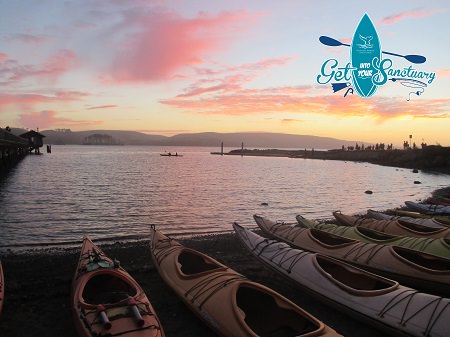
7/12/18 - Kayaks are a great way to explore your national marine sanctuaries! Plan a “Get Into Your Sanctuary” Day paddle adventure in Greater Farallones National Marine Sanctuary. For more information:sanctuaries.noaa.gov/visit/giys.html (Photo Credit: Sara Heintzelman, NOAA/GFNMS)
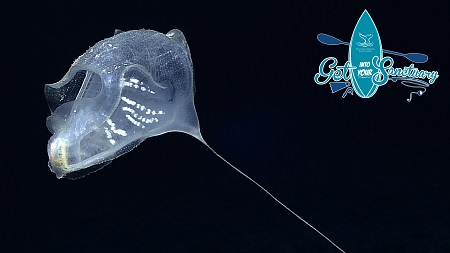
7/10/18 - WHAT IN THE WORLD IS IT? Can you do better? Enter the Get Into Your Sanctuary Photo Contest! go.usa.gov/xQdMn (Photo Credit: NOAA Office of Ocean Exploration and Research, 2015 Hohonu Moana)
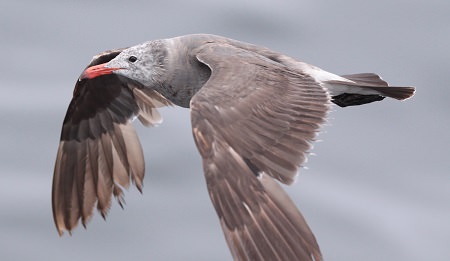
7/9/18 - Happy Marine Life Monday! The Heermann's Gull (Larus heermanni) is a medium sized and can be differentiated from other gulls by its bright red bill and dark coloration. It can be seen harassing other birds to make them drop food, especially the Brown Pelican. There are several names for a group of gulls: a flotilla, gullery, screech, scavenging, or squabble of gulls. Which is your favorite? (Photo Credit: Sophie Webb, NOAA/SWFSC)
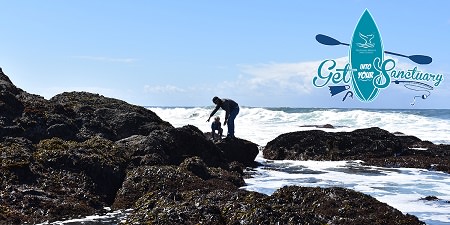
7/7/18 - Sanctuary Saturday: This week we explore our own backyard- what marvels will you discover in the tidepools of Greater Farallones National Marine Sanctuary? The rocky coasts of Northern California are home to all sorts of critters, from sea stars to hermit crabs. They're the perfect place to introduce a young ocean enthusiast to the sea! Learn about visiting the sanctuary at farallones.noaa.gov/visit/. (Photo: Sara Heintzelman/NOAA)
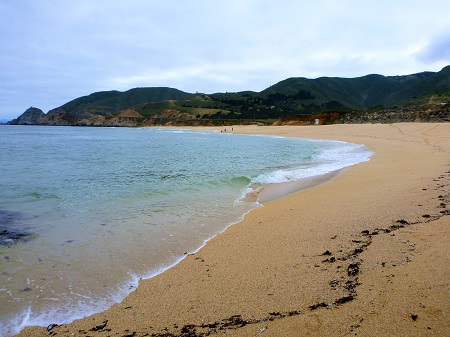
7/6/18 - Beach Watch-Beach 327: Looking for a uncrowded surf break? Montara State Beach is your spot! Located in Monterey Bay National Marine Sanctuary on the San Mateo coast, Montara is a scenic spot for intermediate surfers looking to get away from the more crowded beaches. Non-surfers can enjoy a hike at Montara mountain (also known as McNee Ranch) with trails leading up from the beach.The mountain is a northern spur of the Santa Cruz Mountains and features the only undisturbed Coastal Mountain Habitat found over 100 miles of coastline. Hikers are rewarded with views of Point Montara lighthouse, tucked into the hills. To learn more about Beach Watch: farallones.noaa.gov/science/beachwatch.html (Photo credit: Beach Watch/GFNMS/NOAA)
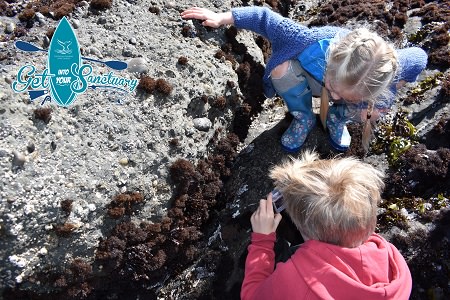
7/5/18 - "Get into Your Sanctuary" by exploring the amazing intertidal habitat at the edge of the sea! Search for chitons, anemones, sea stars, sea urchins, nudibranchs and the many other creatures that can be found in tidepools. Don't forget to check the tides and practice good ocean etiquette: sanctuaries.noaa.gov/protect/oceanetiquette.html (Photo Credit: Sara Heintzelman, GFNMS/NOAA)
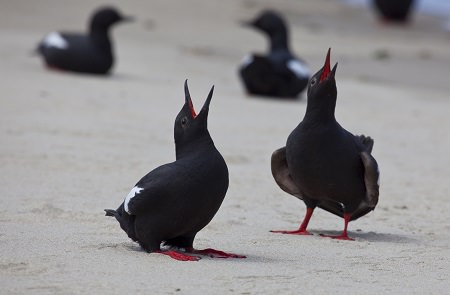
7/4/18 - Welcome to Winged Wednesday! Happy Fourth of July from these two Pigeon Guillemots! To learn more about California seabirds and what Greater Farallones National Marine Sanctuary is doing to help seabirds thrive, visit http://farallones.noaa.gov/eco/seabird/ (Photo: Roy Lowe, USFWS)

7/3/18 - WHAT IN THE WORLD IS IT? Can you do better? Enter the Get Into Your Sanctuary Photo Contest! go.usa.gov/xQdMn (Photo Credit: NOAA Okeanos Explorer Program, 2016 Deepwater Exploration of the Marianas, Leg 3)
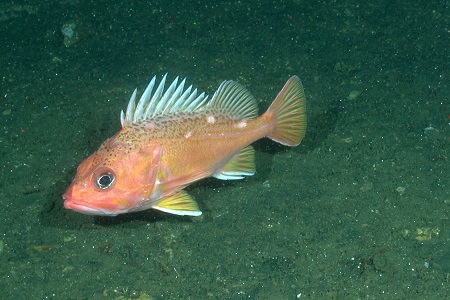
7/2/18 - Happy Marine Life Monday! Greenspotted rockfish (Sebastes chlorostictus) have a yellow pink coloring with distinct green spots over the back and top of their heads. They can be found from Washington to Baja in rocky reef habitats at depths ranging from 160 to 660 feet. (Photo Credit: Kevin L. Stierhoff, NOAA/SWFSC)
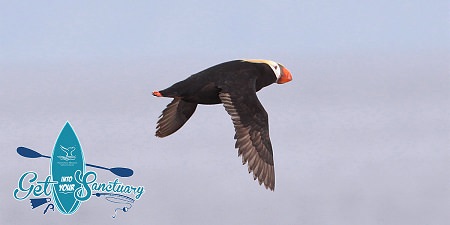
6/30/18 - Sanctuary Saturday: This week we travel to birdwatcher's paradise- Cordell Bank National Marine Sanctuary. Food-rich waters make it a major feeding destination for thousands of local and highly migratory seabirds. Nearly 70 bird species have been observed in the sanctuary, including birds like this tufted puffin! Learn about visiting this California sanctuary at cordellbank.noaa.gov/visit/. (Photo: Sophie Webb/NOAA)
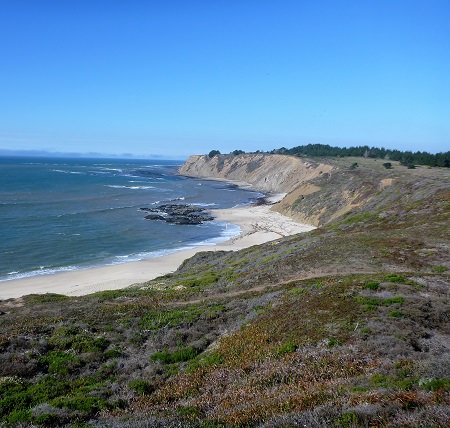
6/29/18 - Beach Watch- Beach 334, 333, 332, 331: If you're in search of a great spot for tidepooling, search no further. This string of Beach Watch segments in NOAA's Monterey Bay National Marine Sanctuary is Fitzgerald Marine Reserve. Best visited at a +1.0 tide or lower, the reserve is a special place where you can see different ocean biomes. Look closely and watch patiently; the longer you spend in one spot, the more you begin to see. Spot intertidal critters including chitons, anemones, sea stars, sea urchins, and nudibranchs- just to name a few! To learn more about Beach Watch. (Photo credit: Beach Watch/GFNMS/NOAA)

6/28/18 - With 36 marine mammal species, over a quarter-million breeding seabirds, and extraordinarily diverse and productive marine ecosystems that support marine life- wildlife viewing is a great way to "Get into Your Sanctuary" in Greater Farallones National Marine Sanctuary. Check out our guidelines on good ocean etiquette before you go. (Photo Credit: Sara Heintzelman, GFNMS/NOAA)
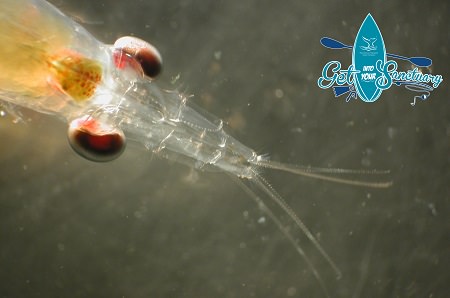
6/26/18 - WHAT IN THE WORLD IS IT? Can you do better? Enter the Get Into Your Sanctuary Photo Contest! go.usa.gov/xQdMn (Photo Credit: Matt Wilson/Jay Clark, NOAA NMFS AFSC)
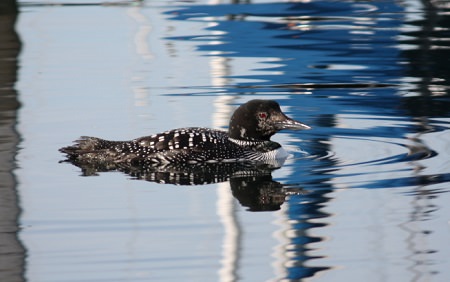
6/25/18 - Happy Marine Life Monday! The Common Loon (Gavia immer) is well known for its eerie call and males have a distinct black-and-white checkered pattern on their back during the summer breeding season. Designed for a life on the water (they only come ashore to mate and incubate eggs), its legs are placed far back on its body- efficient for swimming, but leading to awkward movement on land! (Photo Credit: Steve Choy, NOAA/MBNMS)
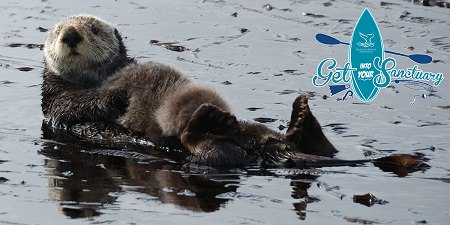
6/23/18 - Sanctuary Saturday: Looking for the chance to view some otterly adorable wildlife? You otter visit Olympic Coast National Marine Sanctuary! Wildlife watching opportunities abound in this sanctuary, both from shore and on sea. Twenty-nine species of marine mammals visit sanctuary waters, and more than a million seabirds, waterfowl, and shorebirds travel through the sanctuary during annual migrations. Learn how to visit this jewel of the Pacific Northwest at olympiccoast.noaa.gov/visitor/. (Photo: NOAA)
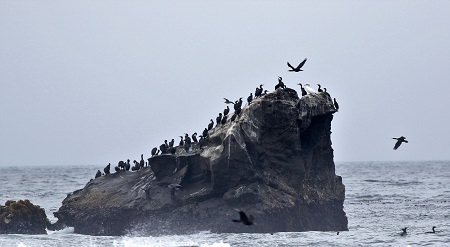
6/22/18 - Beach Watch- Beach 335: Pillar Point beach, in the northern Monterey Bay National Marine Sanctuary, is home of the famous Mavericks big wave surfing contest. While the waves break further from shore, there is lots of fun to be had closer in! Pillar Point marsh is just east of the beach and is a great place for spotting herons and rails. If you're lucky, you might just catch a glimpse of the Northern Gannet (Morus bassanus), an anomalous east-coast migrant. This rare bird has taken up residence on the north-central California coast, and is occasionally seen at the harbor and nearshore rocks. To learn more about Beach Watch. (Photo credit: Jack Sutton, Beach Watch/GFNMS/NOAA)

6/21/18 - "Get into Your Sanctuary" by exploring the many habitats of Greater Farallones National Marine Sanctuary! You never know what treasures you might find on your adventures. (Photo Credit: Sara Heintzelman, GFNMS/NOAA)
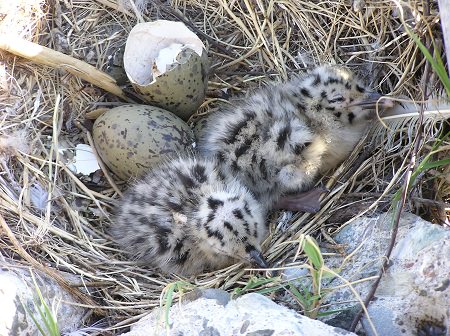
6/20/18 - Welcome to Winged Wednesday! It's baby bird season! Speckled California Gull chicks hatch from splotchy eggs like these ones. Spots and speckles aren't just for style, they help camouflage eggs and chicks from predators. To learn more about California seabirds and what Greater Farallones National Marine Sanctuary is doing to help seabirds thrive. (Photo: Susan Euing USFWS)
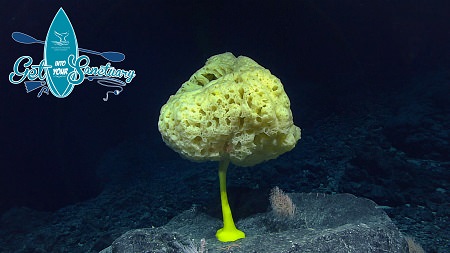
6/19/18 - WHAT IN THE WORLD IS IT? Can you do better? Enter the Get Into Your Sanctuary Photo Contest! go.usa.gov/xQdMn (Photo Credit: NOAA Office of Ocean Exploration and Research)
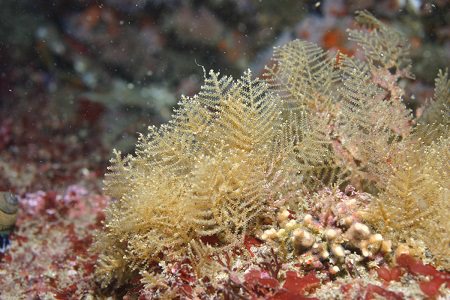
6/18/18 - Happy Marine Life Monday! Fern hydroids (Abietinaria sp.) may look like a small plant, but they are actually an animal! These cnidarians are related to anemones, jellies and corals; and like the other members of their phylum, hydroids have specialized cells (cnidocytes) that help them catch prey. (Photo Credit: Steve Lonhart, NOAA/MBNMS)
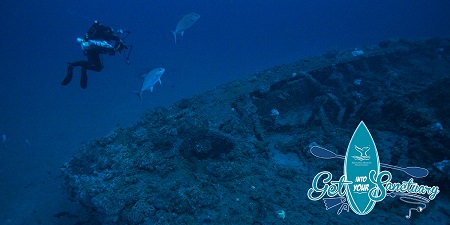
6/16/18 - Sanctuary Saturday: This week we travel back in time to experience the rich history of Monitor National Marine Sanctuary! This sanctuary was the first national marine sanctuary ever designated in the United States, and protects the historic Civil War-era ironclad USS Monitor. Monitor can be visited by experienced technical divers with a (free!) permit. Looking for a recreational dive? Sanctuary archaeologists have surveyed many wrecks in the Graveyard of the Atlantic that are easily diveable by recreational divers. Check out http://monitor.noaa.gov/shipwrecks to learn more! (Photo: NOAA)
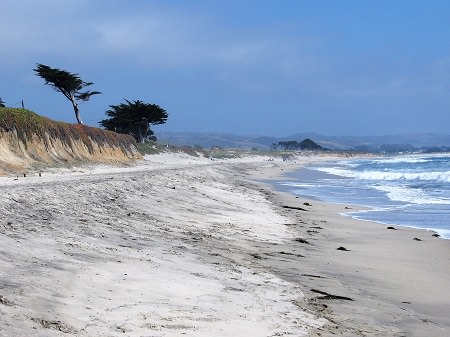
6/15/18 - Beach Watch- Beach 403: Naples Beach, part of Half Moon Bay State Beach and located in the northern portion of Monterey Bay National Marine Sanctuary, gets its name from the creek that flows through it to the sea. When the winter tides are low and sand erosion is at its peak, historic pier pilings reveal themselves up the beach. They are from the pier of Amesport Landing, which was a whaling port from the days of close-to shore, rowboat whaling. As you follow the pilings, you're likely to see Harbor Seals (Phoca vitulina) and Surf Scoters (Melanitta perspicillata) ducking in and out of the waves. To learn more about Beach Watch. (Photo credit: Beach Watch/GFNMS/NOAA)
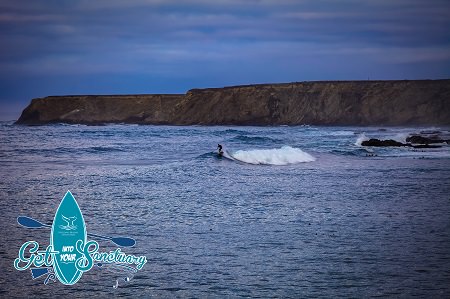
6/14/18 - Paddleboarding is a fun way to "Get into Your Sanctuary"! There are great spots to paddle in Greater Farallones National Marine Sanctuary- from esteros and bays to the open ocean. Always check the tides and weather conditions before you go! (Photo Credit: Matt McIntosh, NOAA)
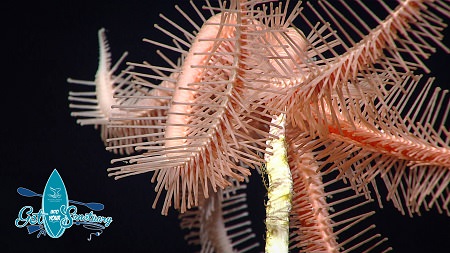
6/12/18 - WHAT IN THE WORLD IS IT? Can you do better? Enter the Get Into Your Sanctuary Photo Contest! go.usa.gov/xQdMn (Photo Credit: NOAA Office of Ocean Exploration and Research, 2017 Laulima O Ka Moana)
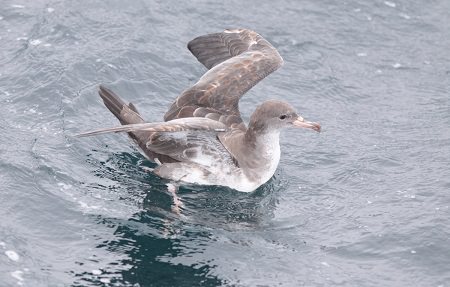
6/11/18 - Happy Marine Life Monday! The Pink-footed Shearwater (Puffinus creatopus) is the largest of the shearwaters seen off the Pacific coast. They are named for the pale pink color of their feet and at the base of their bills. They breed on 3 islands off the coast of Chile and can be spotted in Greater Farallones National Marine Sanctuary, where they come to feed, during summer months. (Photo Credit: Sophie Webb, NOAA/SWFSC)
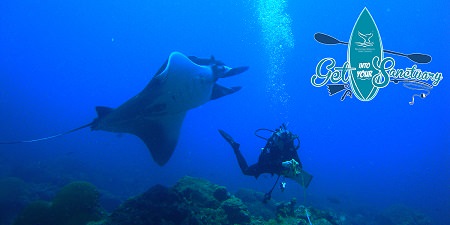
6/9/18 - Sanctuary Saturday: This week we travel to NOAA's Flower Garden Banks National Marine Sanctuary, where your adventure is manta be! You might not think that thriving coral reefs live just off the coast of Texas, but they do -- this sanctuary protects some of the healthiest coral reefs in the world. Learn how to visit this underwater marvel at flowergarden.noaa.gov/visiting/visit.html. (Photo: NOAA)
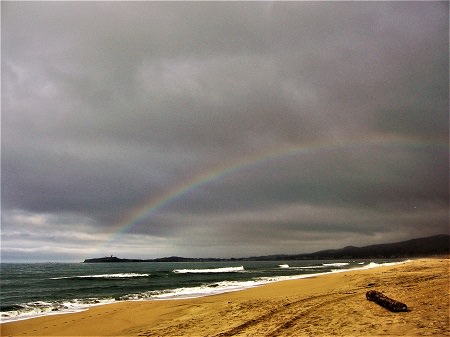
6/8/18 - Beach Watch- Beach 405: Francis Beach is part of Half Moon Bay State Beach in San Mateo County and is the most frequently visited beach in Half Moon Bay! With year-round lifeguards, a visitor center, picnic tables, and camping, it's a great spot for beginning surfers and families. Located in the northern portion of Monterey Bay National Marine Sanctuary, the beach is also a nesting area for the Threatened Western Snowy Plover. At Francis State Beach, plovers are protected in fenced areas along the bluffs to keep the nesting areas free from human and animal activity to allow for successful breeding. Be sure to share the dunes with the plovers when visiting, and give them a wide berth. To learn more about Beach Watch. (Photo credit: Beach Watch/GFNMS/NOAA)
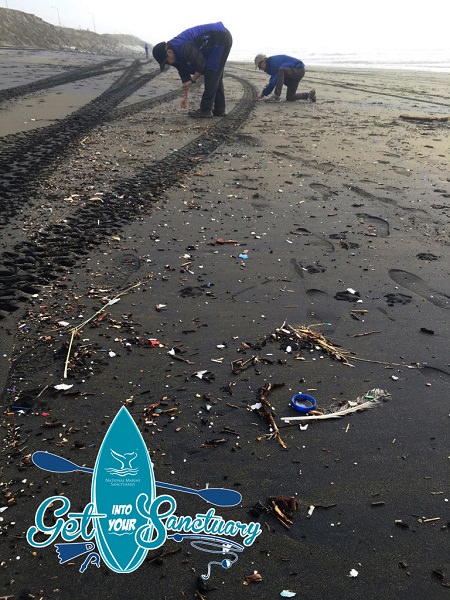
6/7/18 - Beachcombing (and picking up any trash you find while you're at it) is a great way to "Get into Your Sanctuary"! What is the most unusual thing you've found on a beach in Greater Farallones National Marine Sanctuary? (Photo Credit: Kate Bimrose, NOAA/GFNMS)
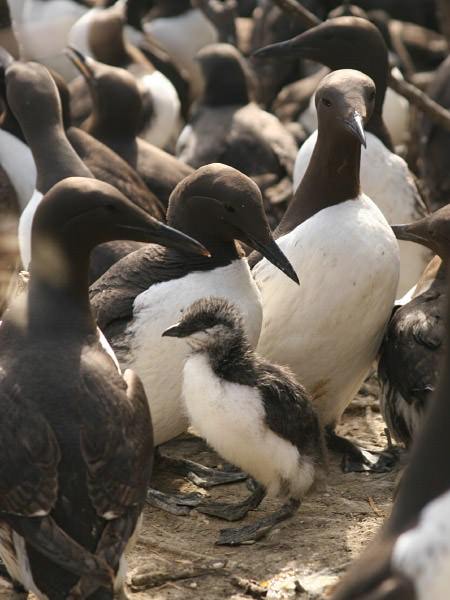
6/6/18 - Welcome to Winged Wednesday! As we approach Father's day we're celebrating seabird dads. Common Murre dads stay with their chicks for a month after they hatch. When the time is right, dad swims below the cliff and calls out. The chick then hurls itself off a 1,000 foot cliff into the ocean. That's one bold way to learn how to fly! To learn more about California seabirds and what Greater Farallones National Marine Sanctuary is doing to help seabirds thrive. (Photo: OCNMS NOAA)
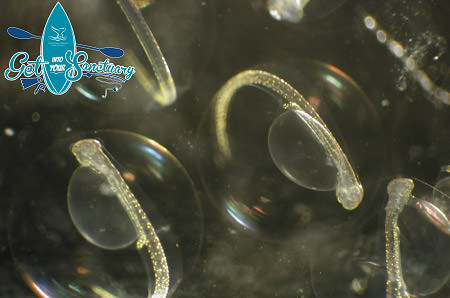
6/5/18 - WHAT IN THE WORLD IS IT? Can you do better? Enter the Get Into Your Sanctuary Photo Contest! go.usa.gov/xQdMn (Photo Credit: Matt Wilson/Jay Clark, NOAA NMFS AFSC)

6/4/18 - Happy Marine Life Monday! Bocaccio (Sebastes paucispinis) have a protruding lower jaw, which helps differentiate them from other rockfish. They can reach lengths of about 3 feet and weigh 21 pounds. It is thought that they can live for up to 50 years! (Photo Credit: Dave Murfin, NOAA)
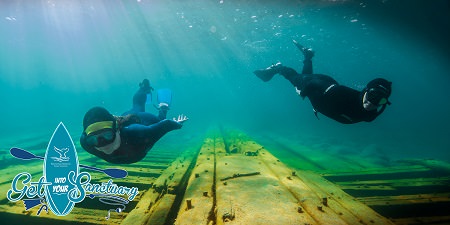
6/2/18 - Sanctuary Saturday: This week we travel to Thunder Bay National Marine Sanctuary! You don't have to be a diver to enjoy shipwrecks, this Great Lakes sanctuary protects more than 100 known shipwrecks, and many of those are shallow enough to be visited by snorkelers and kayakers. This is the wreck of the two-masted schooner Portland, which sank nearly 150 years ago and now rests in six feet of water. Learn about the shipwrecks of Thunder Bay. (Photo: David J. Ruck/NOAA)
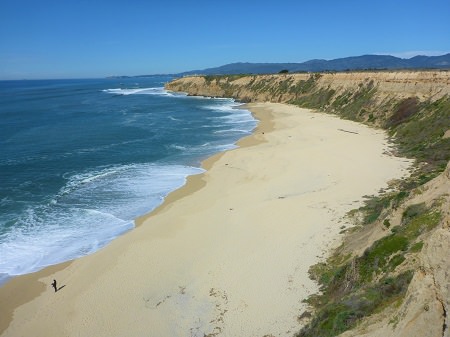
6/1/18 - Beach Watch-Beach 407: Cowell Ranch Beach is unique in that there is no paved parking lot, so accessing the beach feels remote and tranquil. It's a wonderful example of a conservation win; through a public-private partnership between the Peninsula Open Space Trust, California Coastal Conservancy, California State Parks, and local ranchers. Walk down a plant lined trail, backed by fields of brussels sprouts, artichokes, and pumpkins, to the staircase that will lead you to the beach. Enjoy the quiet and beautiful views, and remember to bring your binoculars to view the harbor seal (Phoca vitulina) haul out and breeding site. Note: this portion of the beach is closed February - June in order to not disturb pups, but you can view from a safe distance. To learn more about Beach Watch. (Photo credit: Beach Watch/GFNMS/NOAA)
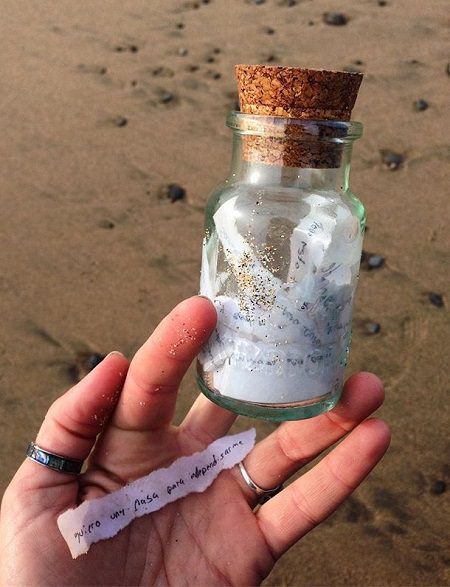
5/4/18 - Beach Watch-Beach 503: Gazos Creek Beach is rich in wildlife and history. The coastal bluffs are a stopover for migrating sparrows, and lead you to the beach where giant green anemones (Anthopleura xanthogrammica), black oystercatchers (Haematopus bachmani), and nudibranchs (Nudibranchia) are equally at home in the tidepools. This beach also has a heavy dose of lore - our surveyors have found a message in a bottle here! It also offers views of Pigeon Point Lighthouse, named for the ship Carrier Pigeon, which wrecked 500 feet offshore of Gazos in 1853. Learn more about Beach Watch. (Photo credit: Beach Watch/GFNMS/NOAA)
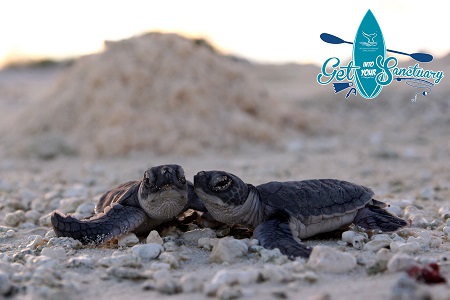
5/5/18 - Psst! Did you know that there is a whole system of national marine sanctuaries and monuments? How many of them can you name? We'll be traveling through the sanctuaries and monuments over the coming weeks, stay tuned! Photo Credit: Mark Sullivan/NOAA Papahānaumokuākea Marine National Monument
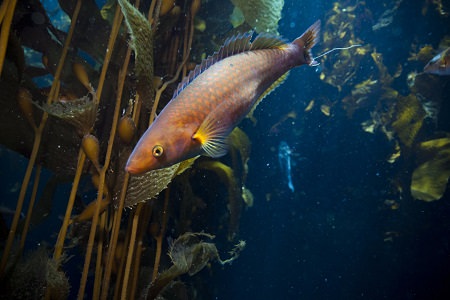
5/7/18 - Happy Marine Life Monday! Señoritas (Oxyjulis californica) are a small wrasse, reaching lengths of up to 10 inches. Their protruding teeth help them pick the bryozoans and hydroids that they feed on off of algae. Feeding by day, señoritas burrow in sandy bottom sediment with only their heads exposed for the night. Sleep tight! (Photo Credit: Chad King, NOAA/MBNMS)
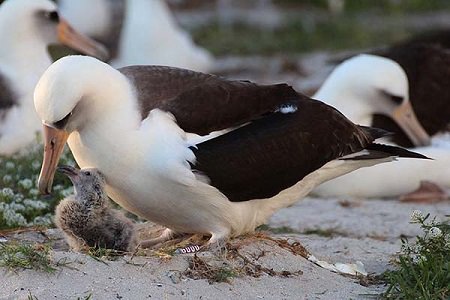
5/9/18 - Welcome to Winged Wednesday! This Mother's Day we celebrate our favorite seabird mom, Wisdom. This Laysan Albatross has successfully raised 30-36 chicks and at 67 years old she welcomed her newest chick in February. Albatrosses like Wisdom sometimes travel across the Pacific during the summer months to feed and bring food to their young. That's some impressive parenting! (Photo: Kiah Walker, USFWS)
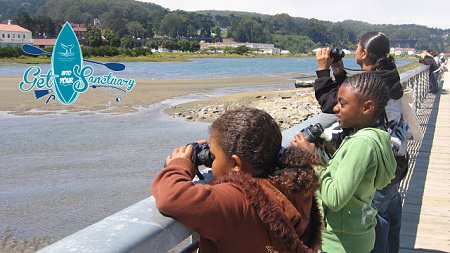
5/10/18 - Birding is just one of many ways to "Get into Your Sanctuary" and enjoy Greater Farallones National Marine Sanctuary! What is the most interesting bird you've spotted? (Photo Credit: Sara Heintzelman, NOAA/GFNMS)
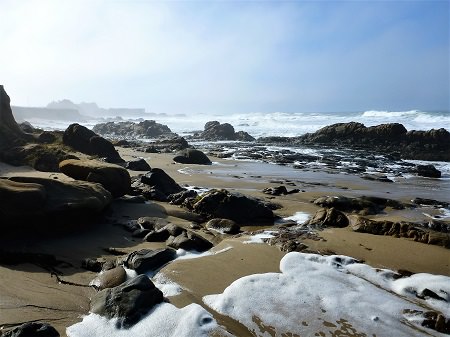
5/11/18 - Beach Watch-Beach 420: Pebble Beach is perfect for the geology lover and treasure hunter. Located on a stretch of the San Mateo coast dominated by marine-terracing, the beach is regularly filled with pebbles of jade, chert, agate, jasper, and moonstone (collecting is prohibited). The pebbles are backed by cliffs crusted with Tafoni- a honeycomb weathering process when salt air hits sandstone. There is an accessible nature trail and tidepools featuring Sunburst Anemones (Anthopleura sola) and sea urchins (Echinoidea). (Photo credit: Beach Watch/GFNMS/NOAA)
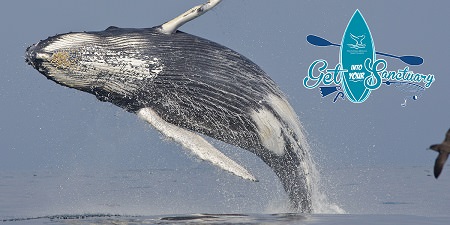
5/12/18 - Sanctuary Saturday: This week we travel to Stellwagen Bank National Marine Sanctuary and leap into adventure! Home to humpback whales, dolphins, and more, this sanctuary is one of the world's premiere whale watching destinations. Learn how to visit at stellwagen.noaa.gov/visit/(Photo: Elliott Hazen/NOAA, under NOAA Fisheries Permit #14245)
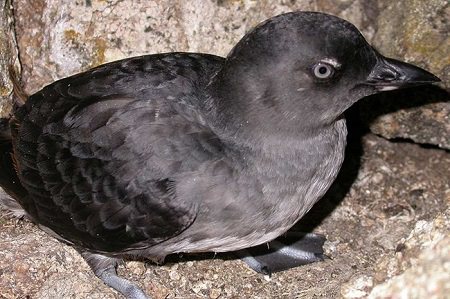
5/14/18 - Happy Marine Life Monday! The Cassin's Auklet (Ptychoramphus aleuticus) is a small, gray seabird with a distinct white spot above its eye. They breed on islands, including the Farallones, where they nest in rock crevices and build burrows by digging with their sharp nails! (Photo Credit: NPS)

5/17/18 - Hiking along the coast is a great way to "Get into Your Sanctuary"! What is your favorite hiking spot near Greater Farallones National Marine Sanctuary? (Photo Credit: Sara Heintzelman, NOAA/GFNMS)
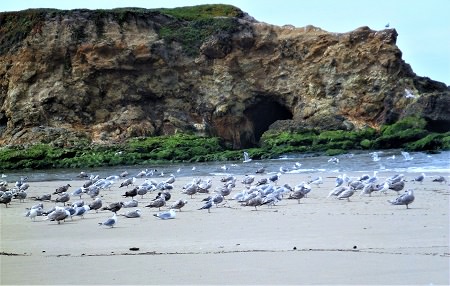
5/18/18 - Beach Watch-Beach 417: For bird-watching, Pescadero Beach has it all. One of of the best examples of a large dune beach with stands of native plants, the diverse landscape also includes rocky shoreline and a wetland marsh. It is a major stopover on the Pacific Flyway and a crucial rest area between San Francisco Bay and Monterey Bay. Surfbirds (Aphriza virgata) and Red Knots (Calidris canutus) are often seen on the rocks; and birds that are considered rarities for San Mateo County are reliably seen here during migration - Solitary Sandpiper (Tringa solitaria), Wilson's Phalarope (Phalaropus tricolor), and Pacific Golden Plover (Pluvialis fulva). Making this location even more special, are Marbled Murrelets (Brachyramphus marmoratus). A threatened species, these birds nest inland of Pescadero in old growth redwoods, and forage at sea where they can be seen with a spotting scope just past the surf. (Photo credit: Beach Watch/GFNMS/NOAA)

5/19/18 - Sanctuary Saturday: This week we travel to Florida Keys National Marine Sanctuary! Looking for a magical place to snorkel or dive? Look no further! The reefs of the Florida Keys sustain one of the most diverse communities of underwater plants and animals in North America. By booking a tour with a Blue Star operator, you can help promote sustainable diving and snorkeling practices and reduce your impact on these special reefs. Learn more at floridakeys.noaa.gov/onthewater/bluestar.html. (Photo: Matt McIntosh/NOAA)
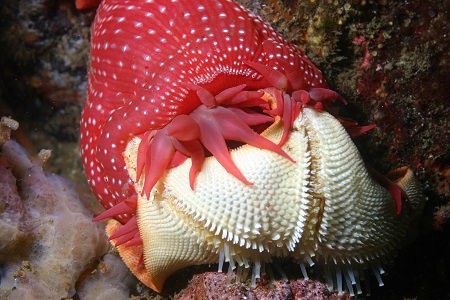
5/21/18 - Happy Marine Life Monday! Is your Monday morning off to a rough start? Look on the bright side, you aren't this bat star! The white spotted rose anemone (Urticina lofotensis) has a distinct red column with white spots and grows to have a diameter up to 4 inches and a height up to 6 inches. It feeds mostly by catching small prey with its tentacles, although this one was ambitious with its choice of prey! (Photo Credit: Chad King, NOAA/MBNMS)
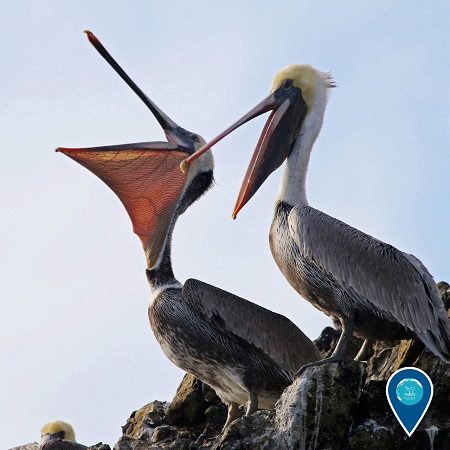
5/23/18 - Welcome to Winged Wednesday! Did you know a pelican's throat pouch is called a gular? The gular on this California Brown Pelican can hold more than it's entire stomach! That's because they use it to scoop fish out of the ocean like a net. All that water? It drains out and the pelican then swallows the fish whole. (Photo: Peter Pearsall, USFWS)

5/24/18 - Surfing is a fun way to "Get into Your Sanctuary"! There are many good surf spots in Greater Farallones National Marine Sanctuary, but always check ocean conditions before you go! (Photo Credit: Sara Heintzelman, NOAA/GFNMS)
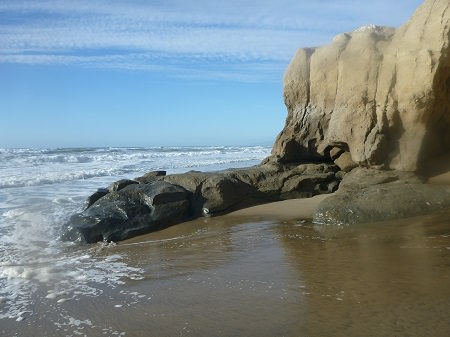
5/25/18 - Beach Watch-Beach 414: Pomponio State Beach is one of the loveliest beach-walking beaches along the coast. High sandstone cliffs and a gentle sandy beach makes avoiding the crowds easy as you walk in either direction from the small lagoon. Walking on the cliff trails is worthwhile as well, as it's a perfect vista during the California Gray Whale (Eschrictius robustus) migration. Steeped in local legend, the beach is named for José Pomponio Lupugeym, a Coast Miwok resistance leader. (Photo credit: Beach Watch/GFNMS/NOAA)
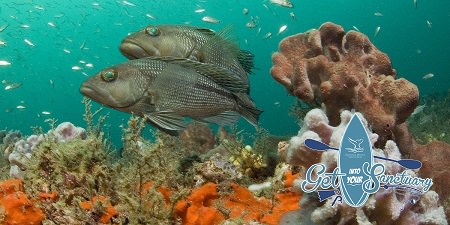
5/26/18 - Sanctuary Saturday: This week we travel to Gray's Reef National Marine Sanctuary where it's all about that bass! Located off the coast of Georgia, there are excellent opportunities for anglers, boaters, and divers. Black sea bass like these are among the fish that can be sustainably fished here. Learn more: sanctuaries.noaa.gov/visit/fishing.html. Photo: Greg McFall/NOAA
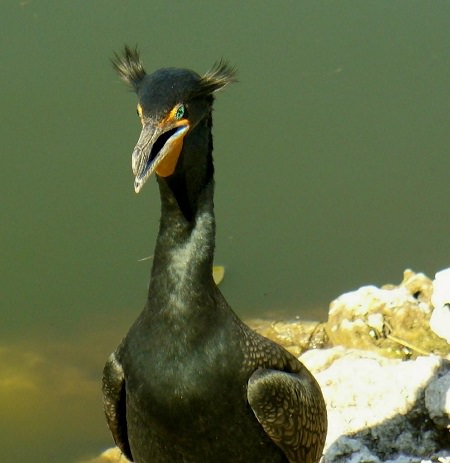
5/28/18 - Happy Marine Life Monday! The Double Crested Cormorant (Phalacrocorax auritus) develops unique tufts as a part of its breeding plumage. It appears similar to other species of cormorants, but can be differentiated by its neck which is distinctively kinked when the bird is in flight and its longer and more pointed wings. Can you name the 2 other types of cormorants found in Greater Farallones National Marine Sanctuary? (Photo Credit: P. Baxter, NPS)
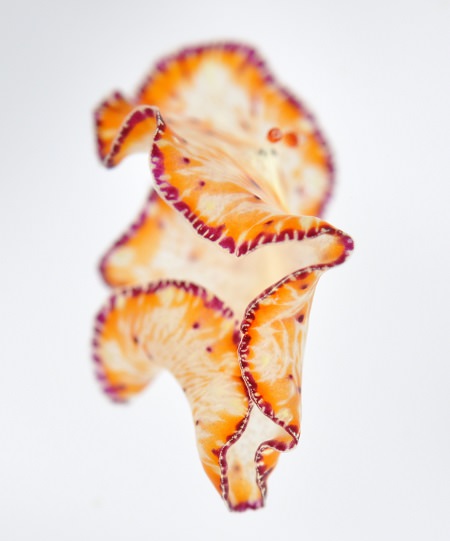
5/29/18 - WHAT IN THE WORLD IS IT? Can you do better? Enter the Get Into Your Sanctuary Photo Contest! (Photo Credit: NOAA/NMFS/PIFSC/ARMS)
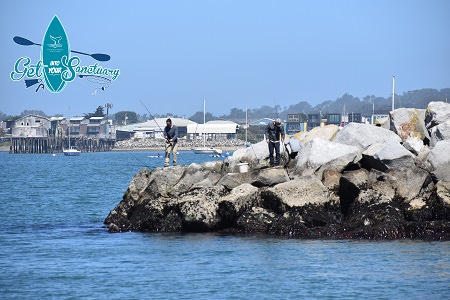
5/31/18 - Fishing is another way to "Get into Your Sanctuary"! What is the most unusual thing you have caught while fishing in Greater Farallones National Marine Sanctuary? Learn more about fishing in your national marine sanctuaries: sanctuaries.noaa.gov/visit/fishing.html (Photo Credit: Sara Heintzelman, NOAA/GFNMS)
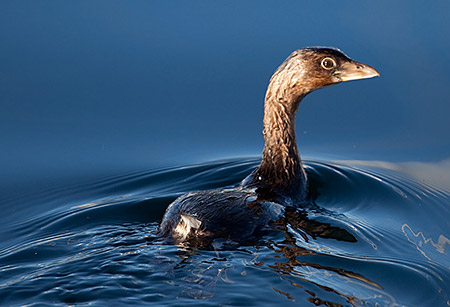
4/30/18 - Happy Marine Life Monday! The Pied-billed Grebe (Podilymbus podiceps) is a small, solitary and secretive grebe. They have the ability to sink gradually- which they do by changing their buoyancy as they expel air from between their feathers and body as well as from air sacs- and disappear from sight. While Pied-billed Grebe is generally used as their common name, they are also known as: dabchick, devil-diver, dive-dapper, hell-diver, and water witch. Which common name is your favorite? (Photo Credit: Steve Lonhart, NOAA/MBNMS)
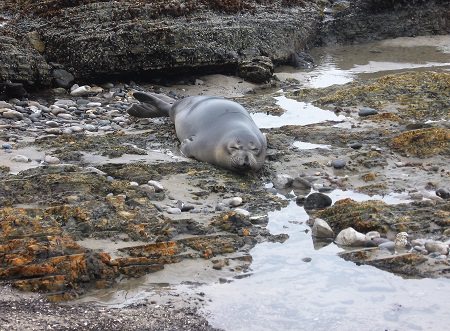
4/27_18_Beach Watch-Beach 506: Año Nuevo State Park in San Mateo County is a wonderful part of the Beach Watch Program, and a longtime sanctuary partner in ecosystem protection. Every year, 10,000 northern elephant seals (Mirounga angustirostris) return to Año Nuevo Island and the sandy mainland to breed, have pups and molt. Being on a major migratory bird route, the mix of coastal scrub and prairie, wetlands, and dune beach habitat make this a great birding destination as well. You may also see a steller sea lion (Eumetopias jubatus) peek out of the offshore rocks, as the park is at the southern end of it's range.Note: Most of the year, the sandy beach is accessible only through an Elephant Seal Viewing tour. You can learn more through the Año Nuevo State Park. Learn more about Beach Watch. Photo credits: Beach Watch/GFNMS/NOAA
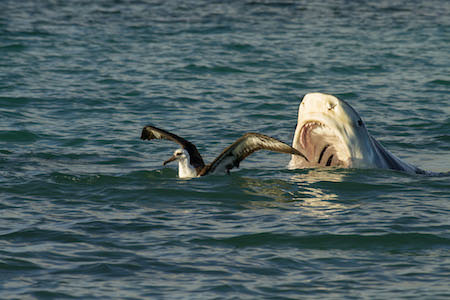
4/27/18 - Albatross Trivia: What type of shark is a top predator for albatrosses? (Hint- this amazing photo from Papahānaumokuākea Marine National Monument should tip you off!) Fledgling albatrosses can be an easy target on the ocean’s surface. In some areas, this predatory fish may be responsible for taking out 10 percent of chicks reared each year! Photo by: Ilana Nimz/NOAA Fisheries Hawaiian Monk Seal Research Program
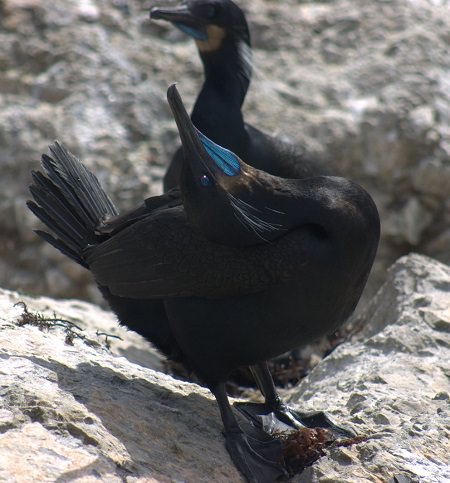
4/25/18 - Welcome to Winged Wednesday! What's up? This Brandt's Cormorant isn't checking the weather, he's showing off his gular pouch. The brilliant blue color attracts female mates during breeding season. Keep an eye out on the rocky cliffs of the coast because this mating display is going on right now! (Photo: Chad King, NOAA/MBNMS)

4/23/18 - Happy Marine Life Monday! The lobed compound tunicate (Cystodytes lobatus) is a marine invertebrate; but surprisingly tunicates are more closely related to vertebrates (like humans!) than to most other invertebrate animals. This is due to a notochord (a flexible rod) and nerve cord tunicates have during their early development. (Photo Credit: Steve Lonhart, NOAA/MBNMS)
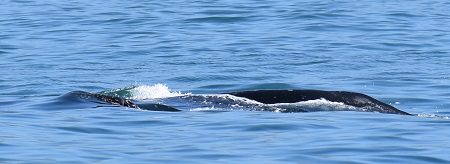
4/22/18 - Happy Earth Day! Sanctuary Explorations participants celebrated the ocean and the amazing marine life during a gray whale watching cruise. From seabirds to a gray whale cow/calf pair (look close for the calf!), we had a wonderful day and enjoyed mother earth and her amazing creatures! How are you celebrating the earth today? (Photo Credit: Sara Heintzelman, NOAA/GFNMS)
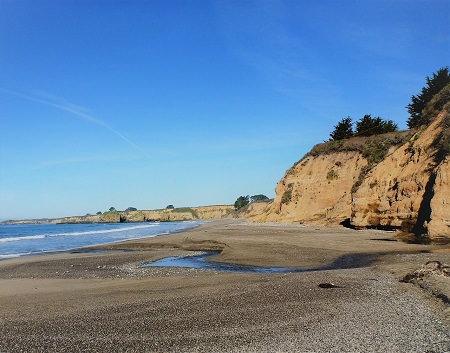
4/20/18 - Beach Watch-Beach 509: Cove Beach, in San Mateo County, lives up to its name. Closed in and secluded, you'll often find it's just you and the brown pelicans (Pelecanus occidentalis), as California sea lions (Zalophus californianus) surf the waves - along with the occasional surfing human, as well. This beach is particularly special, as it's sandy cove bluff 'banks' and alluvial soils are important nesting habitat for bank swallows (Riparia riparia), a California Threatened Species. Learn more about Beach Watch. Photo credit: Beach Watch/GFNMS/NOAA

4/16/18 - Happy Marine Life Monday! The Northern Fulmar (Fulmarus glacialis) is in a group of birds known as tubenoses. The distinct tubes seen on this fulmar's bill, contain its nostrils and aid this pelagic bird in finding food with an amazing sense of smell; a good trait when you live primarily in the open ocean! (Photo Credit: Sophie Webb, USFWS)
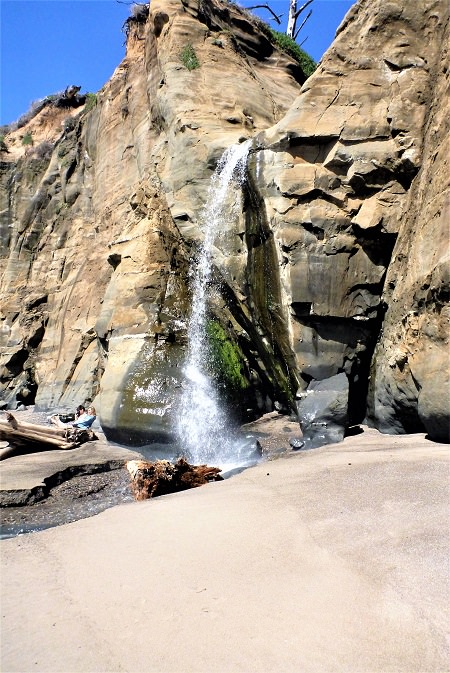
4/13/18 - Beach Watch-Beach 510: Bradley Beach in San Mateo County is our most southerly beach, and one of a handful of places in California where you can see northern elephant seals (Mirounga angustirostris) and southern sea otters (Enhydra lutris nereis) enjoying a day on the coast. Remember to never approach marine mammals, and always give them at least 300 feet of space! The ranges of these two marine mammals overlap on this beautiful beach, where seasonal waterfalls give way to creeks running to the ocean. Surveyors have seen everything from murrelets (Alcidae) to western bluebirds (Sialia mexicana) in the ocean waves and shrubby coastal bluffs. Learn more about Beach Watch. Photo credits: Beach Watch/ GFNMS/NOAA
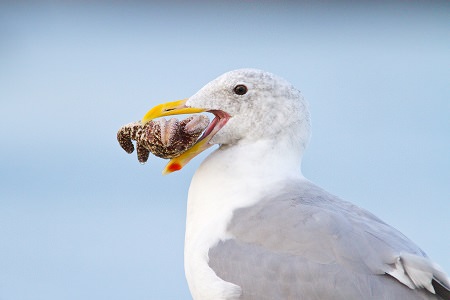
4/11/18 - Welcome to Winged Wednesday! Ever bite off more than you can chew? This sea star might not go down smoothly, but that doesn't stop this Western Gull from trying! Though they mainly feed on invertebrates and fish, gulls will eat just about anything. (Photo: Enrique Patino, NOAA NMFS)
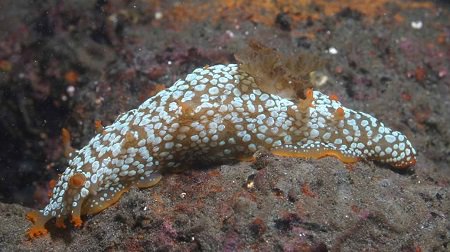
4/9/18 - Happy Marine Life Monday! The Spotted Triopha (Triopha maculata) is a nudibranch (a shell-less mollusk!) that can be found along the West coast of North America from Canada to Baja California. This nudibranch can reach lengths of up to 7 inches but is more commonly about 2 inches long. How many different types of nudibranchs have you spotted in Greater Farallones National Marine Sanctuary?(Photo Credit: Steve Lonhart, NOAA/MBNMS)
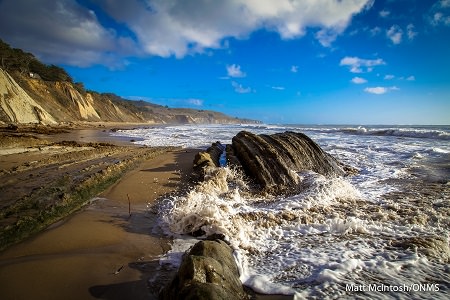
4/6/18 - Leading up to the 25th anniversary of the Beach Watch Program this coming fall, we will be featuring a 'Beach - a - Week' of all the beaches the program monitors. All beaches featured are accessible to the public, and are a great way to explore your sanctuary! Beach Watch is a long-term shoreline monitoring project which was founded in 1993 by Greater Farallones National Marine Sanctuary. A program of the Greater Farallones Association, this year-round ecosystem assessment program is conducted by dedicated volunteers who regularly survey an assigned beach within the Greater Farallones and NOAA's Monterey Bay National Marine Sanctuary.Volunteers collect data on live and dead species of birds and marine mammals as well as human activities. They also report violations, detect oil pollution, and collect oil samples. Beach Watch is the first volunteer program of the National Oceanic and Atmospheric Administration (NOAA), and has worked for almost twenty-five years to provide: A baseline dataset on the presence of live and dead coastal wildlife and human uses; assistance to sanctuary management in the early detection of natural and human-caused environmental events; a network of volunteer expert surveyors who can respond to oil spills; education to the public about the coastal environment and how they can make a difference in protecting their beaches.
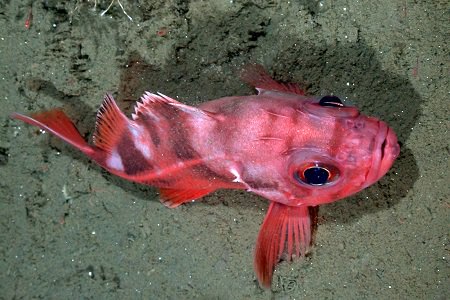
4/2/18 - Happy Marine Life Monday! Blackgill rockfish (Sebastes melanostomus) are a deep water species commonly found at depths of 400-2,500 feet. However, young blackgill rockfish can be found in shallower areas. Despite their prominent red coloring, the upper tips of their gill membranes are black, giving them their name! (Photo Credit: Kevin L. Stierhoff, NOAA/SWFSC)
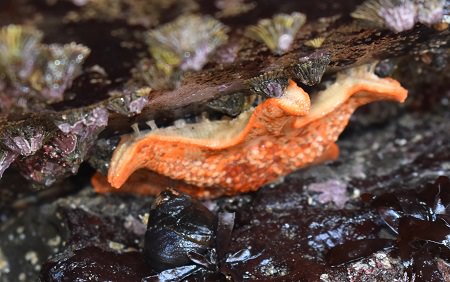
3/30/18 - Hang in there! It's almost the weekend. Do you have any plans to explore your national marine sanctuaries? (Photo Credit: Sara Heintzelman, NOAA/GFNMS)
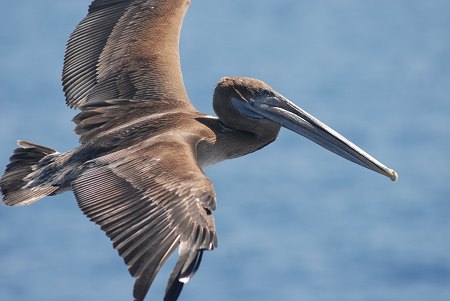
3/28/18 - Welcome to Winged Wednesday! Pelicans may lumber to become airborne, but once aloft they are truly experts at soaring. To save energy, they float up on pockets of warm air and drop downward in great circles. To learn more about California seabirds and what Greater Farallones National Marine Sanctuary is doing to help seabirds thrive. (Photo: Adam Li, NOAA NMFS SWFSC)
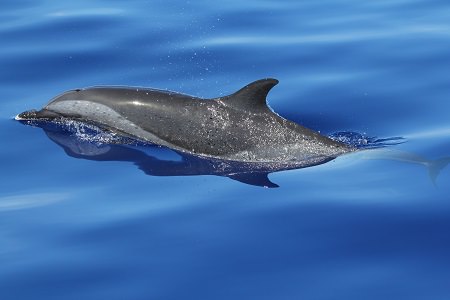
3/26/18 - Happy Marine Life Monday! While extremely rare in Greater Farallones National Marine Sanctuary, they are found in tropical and subtropical oceans worldwide. (Photo Credit: NOAA/NMFS/PIFSC)
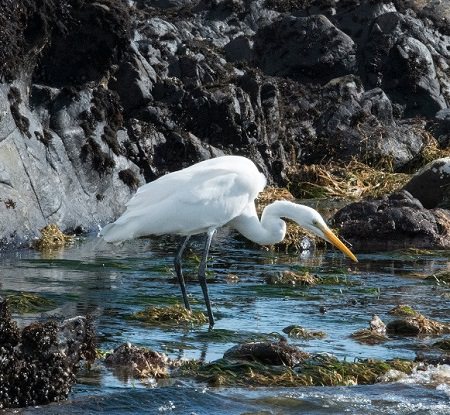
3/19/18 - Happy Marine Life Monday! The Great Egret (Ardea alba) is well designed for its wading lifestyle with long legs and a sharp bill to spear prey in the shallow waters of salt or freshwater marshes, ponds and tidal flats. Trivia Question: What key features distinguish the Great Egret from the similar looking Snowy Egret? (Photo Credit: Robert Schwemmer, NOAA)
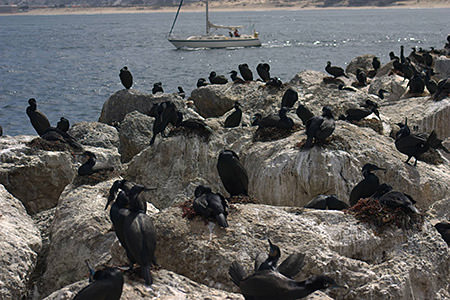
3/14/18 - Welcome to Winged Wednesday! Did you know Brandt's Cormorants cement their nests together using their own guano? Males collect nest materials like seaweed and eelgrass underwater and females do the building. Over time, the nest can turn into a tower! (Photo: Chad King, NOAA/MBNMS)
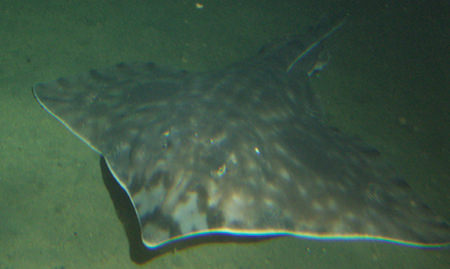
3/12/18 - Happy Marine Life Monday! Big skates (Raja binoculata) can reach lengths of up to 8 feet. They are typically found along the sandy seafloor where they can both hide from their predators (such as sharks) and find prey which includes shrimp, worms, clams and some types of fish. Big skates are known for the dark spots on their fins which resemble eyes and can confuse predators into thinking that they are much larger than they really are! (Photo Credit: Linda Snook, NOAA/MBNMS)
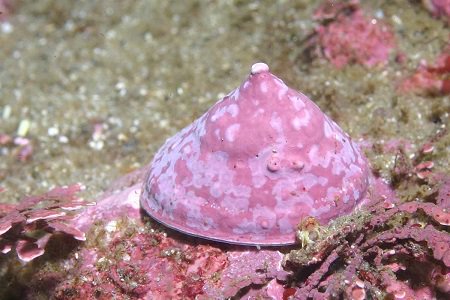
3/5/18 - Happy Marine Life Monday! The whitecap limpet (Acmaea mitra) is all white and is taller and more conical than many other limpets. It feeds on encrusting coralline algae- the pink that is covering its shell in this photo- a common site with this species. In this case, you WEAR what you eat! (Photo Credit: Steve Lonhart, NOAA/MBNMS)
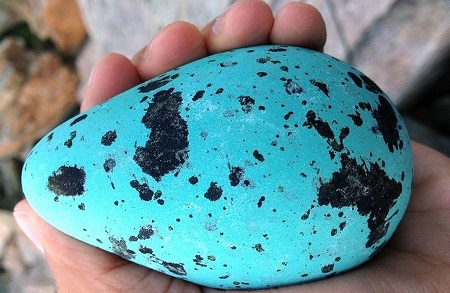
2/28/18 - Welcome to Winged Wednesday! The Common Murre lays decidedly uncommon eggs. Not only are the eggs beautiful, the speckles and swirls on each egg are unique and help parents identify their offspring before they hatch. To learn more about California seabirds and what Greater Farallones National Marine Sanctuary is doing to help seabirds thrive. (Photo Credit: Brandon Saito, USFWS)
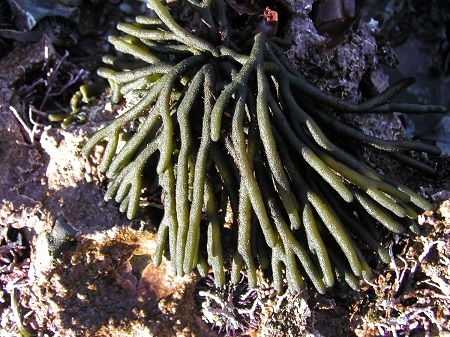
2/27/18 - If you see dead man's fingers while you're out tidepooling, don't worry! It's just seaweed ... that's not only sort of creepy, it might be invasive! LiMPETS helps to monitor several subspecies of this algae that are thought to be invasive along California coastal areas. This week, NOAA's Greater Farallones National Marine Sanctuary is raising awareness about a number of invasive species, learn more here (Photo Credit: Steve Lonhart / NOAA MBNMS)
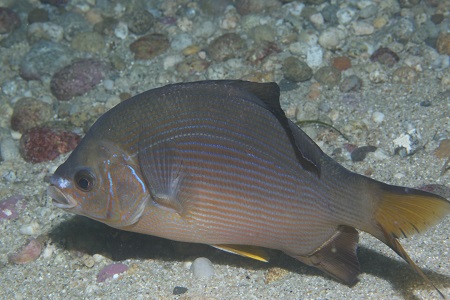
2/26/18 - Happy Marine Life Monday! Striped perch (Embiotoca lateralis) have distinctive red, blue, and yellow stripes and can grow to a length of about 15 inches. Their genus name, Embiotoca, is derived from Greek words meaning: "living within" and "offspring"; referring to their viviparous (bearing live young) mode of reproduction. (Photo Credit: Steve Lonhart, NOAA/MBNMS)
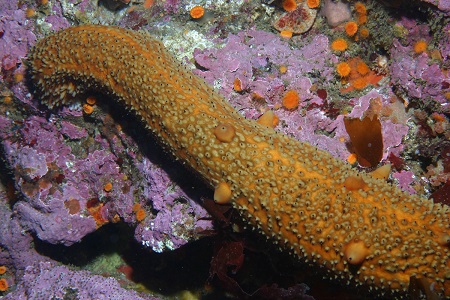
2/19/18 - Happy Marine Life Monday! The warty sea cucumber (Parastichopus parvimensis) is quite fast for a sea cucumber and can move 3 feet in about 15 minutes! If the warty sea cucumber is threatened or handled roughly, it can spew out its internal anatomy, which it then regenerates over the course of a few weeks. (Photo Credit: Steve Lonhart, NOAA/MBNMS)
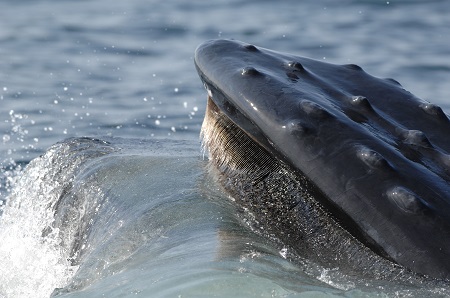
2/15/18 - Happy Whale Week! How many types of baleen whales can be found in Greater Farallones National Marine Sanctuary? Bonus points if you can name one type (or all of them)! (Photo Credit: NOAA)
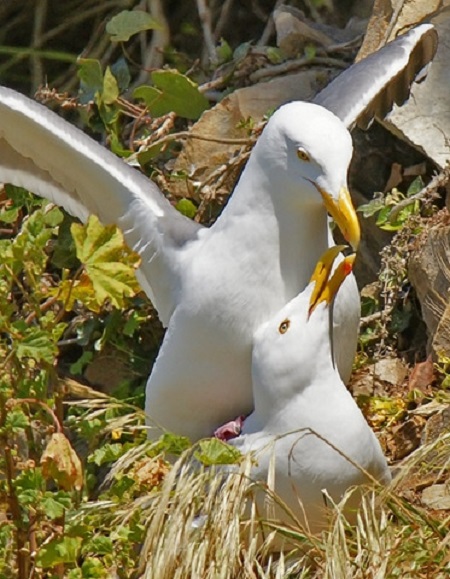
2/14/18 - Welcome to Winged Wednesday! What do seabirds want for Valentine's Day? Not flowers! When a male gull is interested in a mate, he regurgitates a meal for her to eat. Successful delivery can mean mating for life. How's that for romance? To learn more about California seabirds and what Greater Farallones National Marine Sanctuary is doing to help seabirds thrive.(Photo: National Park Service)
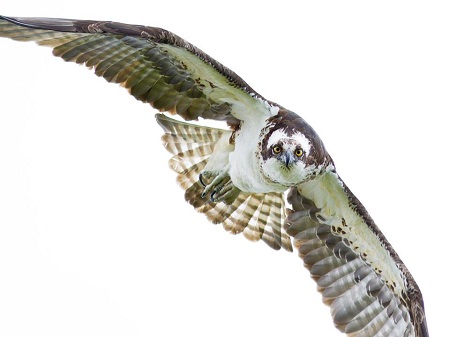
2/12/18 - Happy Marine Life Monday! The Osprey (Pandion haliaetus) is a large and distinctive hawk with a predominantly white underside. It feeds almost exclusively on live fish. The Osprey is an incredible angler and has a unique, reversible outer toe that allows it to catch fish with two toes forward and two toes back to better grip its slippery meal! Have you ever seen an Osprey fishing? (Photo Credit: Enrique Patino, NOAA Fisheries)
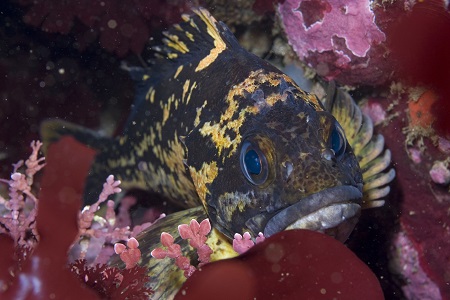
2/5/18 - Happy Marine Life Monday! The black and yellow rockfish (Sebastes chrysomelas) is a bottom dweller, most commonly found around rocky reefs from the intertidal to depths of 60 feet. This solitary and territorial fish feeds on crustaceans, mollusks and other species of fish using a nocturnal ambush strategy! (Photo Credit: Chad King, NOAA/MBNMS)
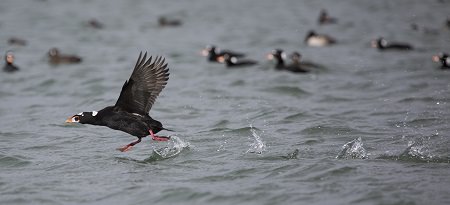
1/31/18 - Welcome to Winged Wednesday! Surfs up! Instead of catching waves the Surf Scoter smashes through them. Why? For food! This diving sea duck searches for mollusks and crustaceans underwater and consumes them whole. To learn more about California seabirds and what Greater Farallones National Marine Sanctuary is doing to help seabirds thrive. (Photo: Peter Pearsall, U.S. Fish and Wildlife Service)

1/29/18 - Happy Marine Life Monday! A new species of whip-like gorgonian coral (Swiftia farallonesica) was discovered during a research cruise in 2014. It was found in an area of Greater Farallones National Marine Sanctuary known as The Football, 23 miles west of Jenner and the mouth of the Russian River, in Sonoma County. This solitary coral feeds on plankton as they drift by with the currents! (Photo Credit: NOAA)
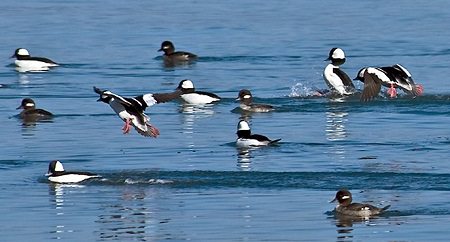
1/22/18 - Happy Marine Life Monday! The Bufflehead (Bucephala albeola) is the smallest diving duck in North America. They breed in Canada and Alaska and are cavity nesters-utilizing the holes made by woodpeckers! They winter in much of the United States and central Mexico and can be spotted in Greater Farallones National Marine Sanctuary. The males have a large black head with a white triangle covering the back of their head, while the females have a white oval on their cheek. How many males and how many females can you spot in this photo?(Photo Credit: Jim Bourke, NPS)
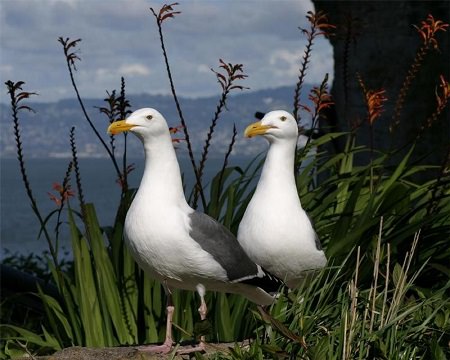
1/17/18 - Welcome to Winged Wednesday! Did you know some seabirds like the Western Gull have no problem drinking seawater? They have a special gland by their eye designed to flush out salt through their bill. It's like a built-in desalination system! To learn more about California seabirds and what Greater Farallones National Marine Sanctuary is doing to seabirds thrive. (Photo Credit: NPS)
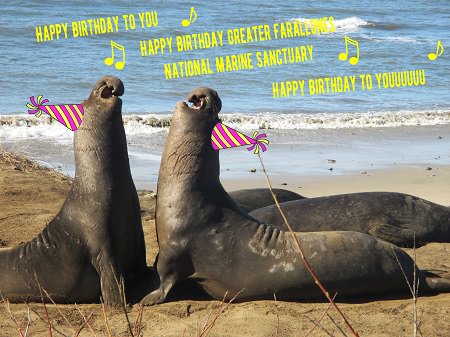
1/16/18 - Greater Farallones National Marine Sanctuary was designated on January 16, 1981!

1/15/18 - Happy Marine Life Monday! Orange cup coral (Balanophyllia elegans) can be found along the Pacific Coast from British Columbia to Baja California. The females brood their larvae until they are about 2mm long. The larvae are then released from their mother's mouth and crawl to a nearby surface where they will settle for the rest of their life. In this case, the orange cup coral really doesn't fall far from the tree! (Photo Credit: Steve Lonhart, NOAA/MBNMS)
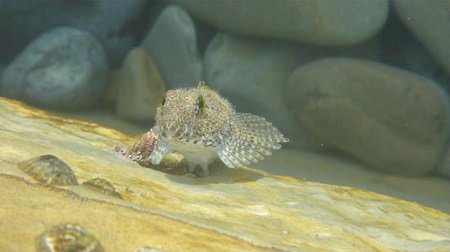
1/8/18 - Happy Marine Life Monday! The wooly sculpin (Cilinocottus analis) is a small fish (2-7 inches long) that is commonly found in the intertidal. This amazing animal not only changes color, like many sculpins, to camouflage with its surroundings but it is also capable of surviving out of the water for up to 24 hours! (Photo Credit: Cabrillo National Monument)
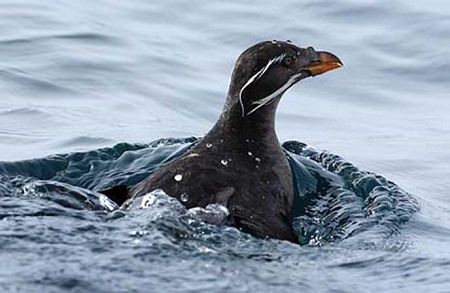
1/3/18 - Welcome to Winged Wednesday! What New Year's resolutions do seabirds have? To fatten up! Before the start of nesting season in spring, birds like this Rhinoceros Auklet spend months foraging in the open ocean for crustaceans and small fish. To learn more about - California seabirds and what Greater Farallones National Marine Sanctuary is doing to help seabirds thrive. (Photo: Nial Moore, NPS)
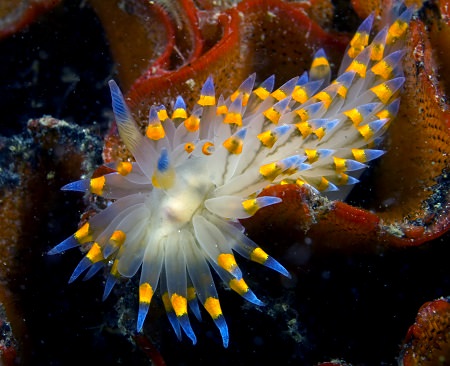
1/1/18 - Marine Life Monday! Rivaling most colorful explosions of fireworks, this little creature is actually a mollusk. The cockscomb nudibranch or Santa Barbara Janolus (Janolus barbarensis) can reach lengths of about 2 inches and can be found from San Francisco to Baja California. Several thousand species of nudibranchs have been discovered worldwide, how many species have you seen? New year, "new"dibranch!? (Photo Credit: Ken Bondy, NSF)

12/30/17 - Keep your eyes open for another set of King Tides, the highest winter tides along the entire California coast, on January 1 and 2, 2018. Check your local tides here: tidesandcurrents.noaa.gov The California King Tides Project seeks to document the impacts of flooding events during King Tides and show what the daily water levels of the future will look like with sea level rise. This allows us to take action to reduce coastal hazards that impact both our communities and economy.
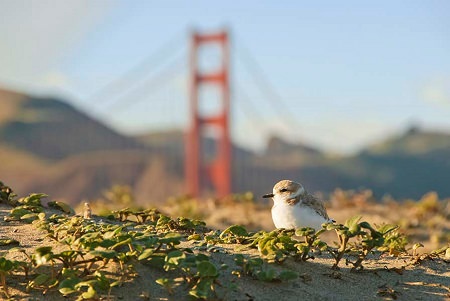
12/25/17 - Happy Marine Life Monday! While we don't have a snowy white winter along the
California coast, we do have the Snowy Plover (Charadrius alexandrinus)! This small,
pale plover has a tan back and white underparts which help it blend into its sandy
habitat. It has suffered a major decline in population due to recreational activities on
beaches, habitat loss from development and predation. The nest of a Snowy Plover is just
a small indent in the sand and often goes unnoticed. These small birds flee from their
nest when frightened and may not return for hours; their eggs can get crushed or eaten
while they are gone. Tread carefully the next time you might be walking through plover
habitat! (Photo Credit: Jessica Weinberg McClosky, NPS)
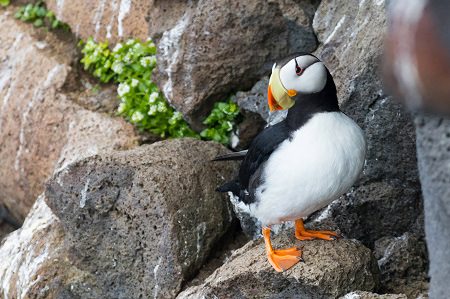
12/20/17 - Welcome to Winged Wednesday! Do you have big travel plans this holiday season? So do seabirds! Many seabirds return from summers nesting in the Arctic to winter on the Central California coast, like these striking Horned Puffins. Anyone else headed south this winter? To learn more about California seabirds and what Greater Farallones National Marine Sanctuary is doing to help seabirds thrive, visit farallones.noaa.gov/eco/seabird/. (Photo: Lisa Hupp, USFWS)
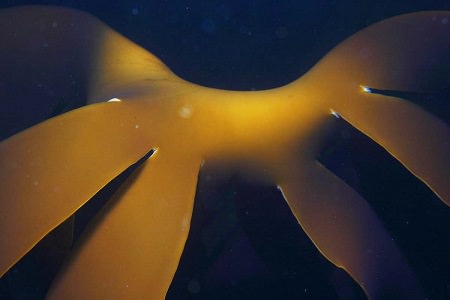
12/18/17 - Happy Marine Life Monday! Setchell's kelp (Laminaria setchellii) is a brown algae that can be found in the low intertidal and upper subtidal zones along the Pacific coast from Alaska to Baja California. Cross sections taken of this kelp reveal concentric rings, much like the rings of trees, that are formed annually and can be counted to determine age. (Photo Credit: Steve Lonhart, NOAA/MBNMS)
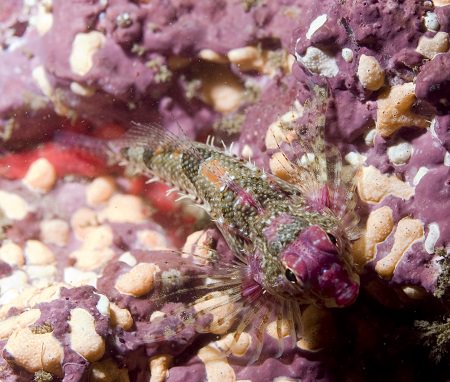
12/11/17 - Happy Marine Life Monday! The snubnose sculpin (Orthonopias triacis) can found from the intertidal down to depths of about 30 meters. This small fish grows to be about 4 inches long and can be differentiated from other sculpins by its extremely short snout. Like most sculpins, this master of camouflage can change color to match its surroundings! (Photo Credit: Chad King, NOAA/MBNMS)
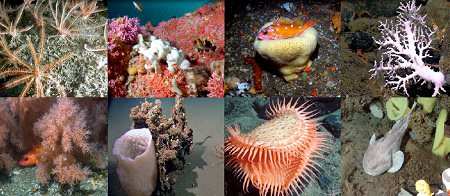
12/8/17 - Happy corals week! Did you know that we have deep-sea coral communities in the national marine sanctuaries along the West Coast? Our deep-sea coral curriculum takes students into the deep sea to identify the soft corals, hard corals, invertebrates and fish found in these communities and to investigate the unique biology of deep-sea corals. Learn the threats these animals face and what we can do help protect them. sanctuaries.noaa.gov/education/teachers/deep-coral-communities/
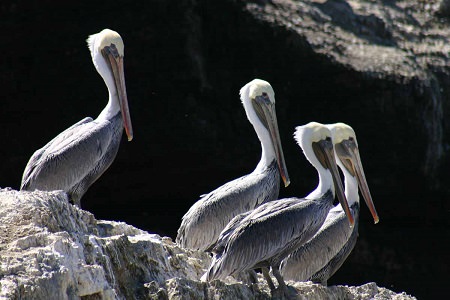
12/6/17 - Welcome to Winged Wednesday! Fun Fact: a group of pelicans is called a Squadron. Squadrons of California Brown Pelicans can be seen resting on coastal rocks or flying in formation along the crests of waves. Talk about squad goals! To learn more about California seabirds and what Greater Farallones National Marine Sanctuary is doing to help seabirds thrive, visit farallones.noaa.gov/eco/seabird/. (Photo: Steve Lonhart, NOAA/MBNMS)
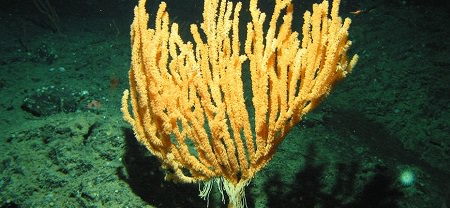
12/4/17 - Happy Marine Life Monday! Bamboo corals, in the family Isididae, are cosmopolitan-meaning that they can be found in waters all over the world including the cold, deep waters of Greater Farallones National Marine Sanctuary! Along with jellyfish and anemones, corals are members of the Phylum Cnidaria. Some species of bamboo corals, such as the one pictured here (Isidella tentaculum) have fleshy "hula skirts" of elongated tentacles which may be defensive "sweeper" tentacles to ward of nearby settlers and predators! (Photo Credit: NOAA Office of Ocean Exploration)
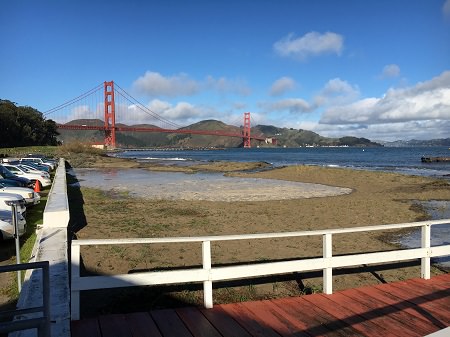
12/1/17 - King Tides, the highest winter tides along the entire California coast, are
taking place December 3, 4 and 5, 2017 and January 1 and 2, 2018.Check your local tides
here: tidesandcurrents.noaa.gov The
California King Tides project started in 2010 to raise awareness about the potential
impacts of flooding events and future sea level rise.
(Photo: Brian Johnson, NOAA/GFNMS)
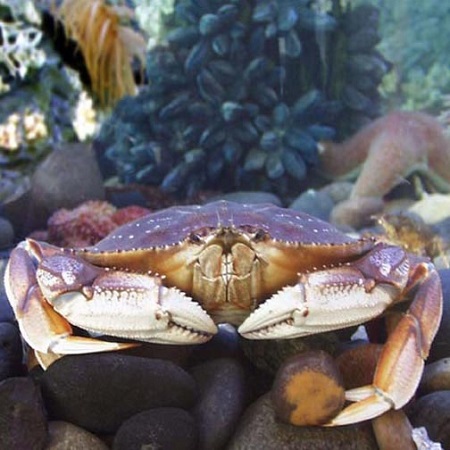
11/27/2017 - Happy Marine Life Monday! Dungeness crab (Metacarcinus magister) are commonly found from the low intertidal down to depths of about 600 feet and prefer habitats with a sandy bottom or eelgrass beds. They feed on other small invertebrates and small fish. The Dungeness crab fishery is extremely important along the West Coast. In recent years it was the highest revenue fishery in Washington and Oregon, and the second most valuable in California. (Photo Credit: National Park Service)
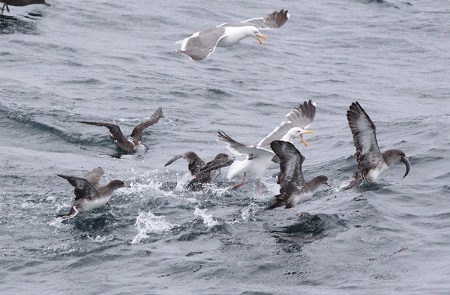
11/22/2017 -Welcome to Winged Wednesday! Happy Thanksgiving! While seabirds don't celebrate the holiday they sure do feast. At this feeding frenzy (pictured) Pink-footed Shearwaters and Western Gulls are fighting over a cornucopia of Pacific mackerel. A school of fish can attract hundreds of birds and other animals like whales and pinnipeds who all share in the nutritious bounty. To learn more about California seabirds and what Greater Farallones National Marine Sanctuary is doing to help seabirds thrive. (Photo: Sophie Webb, NOAA/SWFSC)
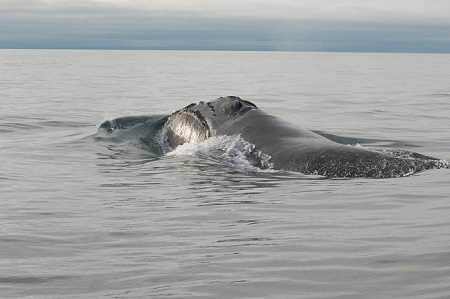
11/20/2017 - Happy Marine Life Monday! The North Pacific right whale (Eubalaena japonica) is the rarest of all large whale species and among the rarest of all marine mammals. These baleen whales reach lengths of about 45-55 feet and weigh up to 70 tons. The population of right whales was heavily depleted by commercial whaling and continues to face threats from shipstrikes and entanglement. Little is known about their migratory patterns, although it is thought that they migrate from high-latitude feeding grounds in summer to more temperate waters during the winter. (Photo Credit: John Durban, NOAA)
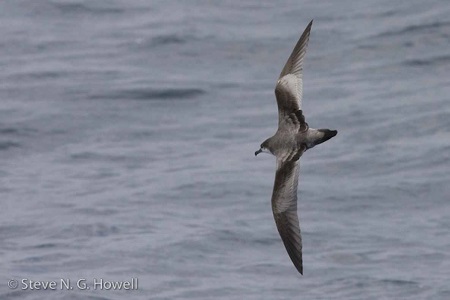
11/13/2017 - Happy Marine Life Monday! The Buller's Shearwater (Puffinus bulleri) has an estimated population of 2.5 million birds; all of which breed on just one small island group off New Zealand. The Buller's Shearwater migrates north after breeding and can be spotted feeding on fish, squid, and crustaceans off the coast of California from June to November. Several Buller's Shearwaters were spotted on a recent Sanctuary Explorations Farallon Islands & Wildlife Watching trip! (Photo Credit: Steve N. G. Howell / NOAA CBNMS)
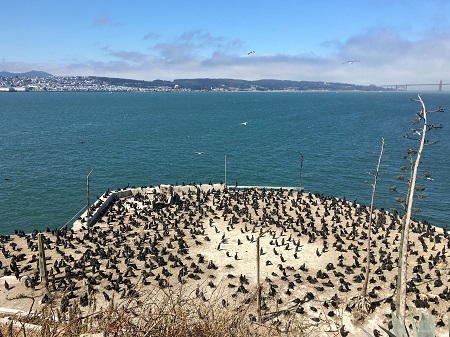
11/8/2017 - Welcome to Winged Wednesday! Long before the infamous "Birdman" of Alcatraz met his feathery friends in prison, the island was home to thousands of nesting seabirds. Even the name Alcatraz was derived from the word 'alcatraces' given to the island by early Spanish explorers due to the plentiful seabirds living there. Today, the island is a haven for over 5,000 nesting birds like these Brandt's Cormorants.To learn about California seabirds and what Greater Farallones National Marine Sanctuary is doing to help seabirds thrive. (Photo: Wendy Kordesch, NOAA/GFNMS)
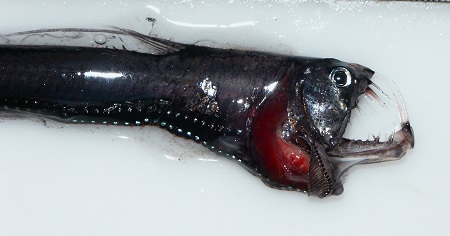
10/30/17 - Happy Marine Life Monday! There is no shortage of halloween inspiration in the ocean with deep sea creatures like this Pacific viperfish (Chauliodus macouni). The viperfish can reach lengths of 12 inches and has extraordinarily long teeth. Its teeth are so long that when it closes its mouth, the bottom teeth curve up over the outside of its head! The Pacific viperfish has a long dorsal spine with a photophore (a light-producing organ) at the end of it which acts a lure to help it catch prey in the dark of the deep sea. (Photo Credit: David Csepp, NMFS/AKFSC/ABL)

10/25/17 - Welcome to Winged Wednesday! Still looking for the perfect costume? The Tufted Puffin is always Halloween ready with it's candy-corn colored beak and snow-white mask. To learn about California seabirds and what Greater Farallones National Marine Sanctuary is doing to help seabirds thrive, visit farallones.noaa.gov/eco/seabird. (Photo: Peter Hodum, WDFW)
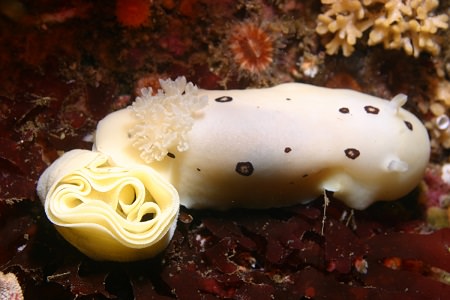
10/23/17 - Happy Marine Life Monday! The Ringed or Leopard Dorid (Diaulula sandiegensis) is an intertidal species that grazes on sponges. You may spot these nudibranchs displaying a range of colors from white, to pale grey, brown, or even yellow. Most are 'spotted' with rings or spots (earning them their name!) but occasionally these patterns are absent. They lay long, delicate egg ribbons (as seen here) that are often hidden in crevices. Tell us what your favorite nudibranch is in the comments below! (Photo Credit: Steve Lonhart, NOAA/MBNMS)
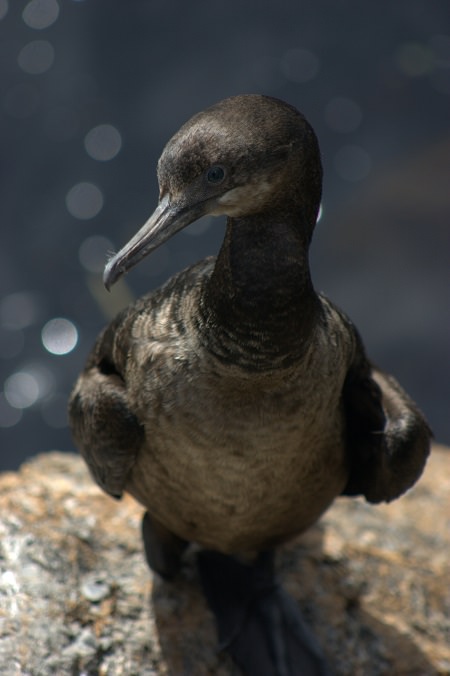
10/16/17 - Happy Marine Life Monday! The Brandt's Cormorant (Phalacrocorax penicillatus) is the most common cormorant along the California coast, can you name the other 2 cormorants found in Greater Farallones National Marine Sanctuary? They are great divers and can dive 50 meters deep when pursuing prey! After a dive, you may spot them with their wings spread out to dry, as their feathers are not completely waterproof and become soaked. Having less oil on their wings helps reduce buoyancy and allows the cormorant to forage deeper under water. (Photo Credit: Chad King, NOAA/MBNMS)
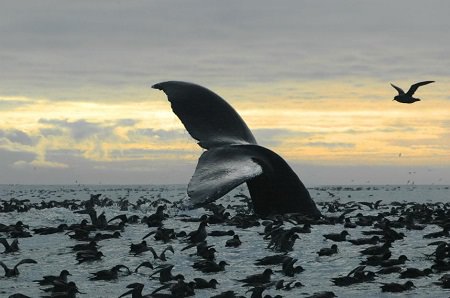
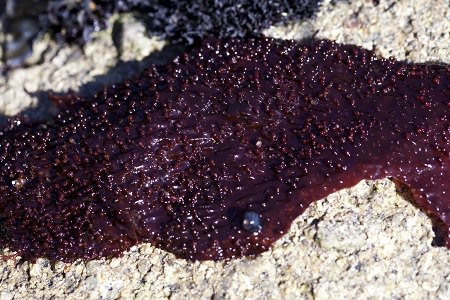



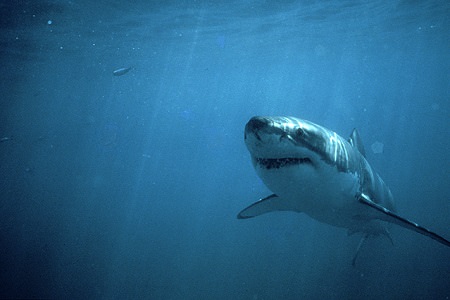

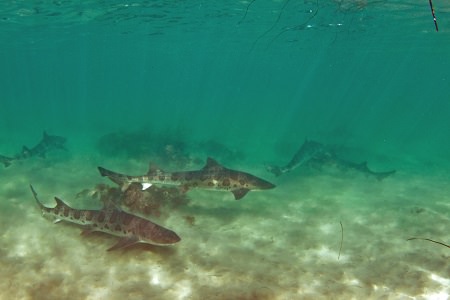
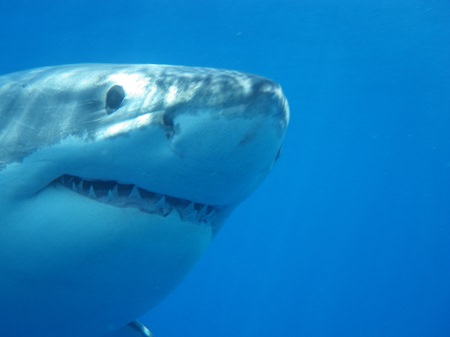
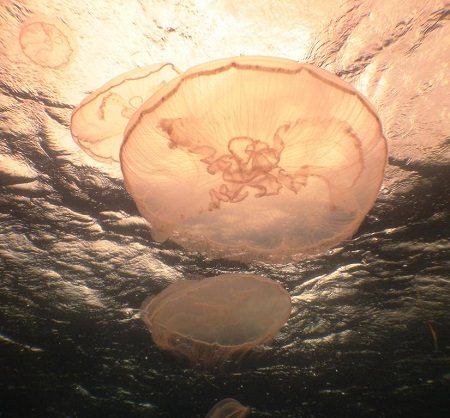
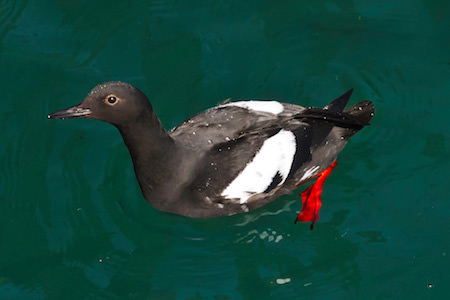
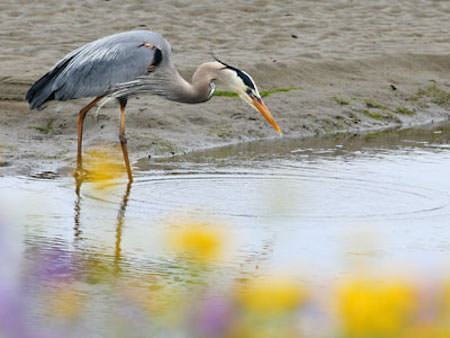
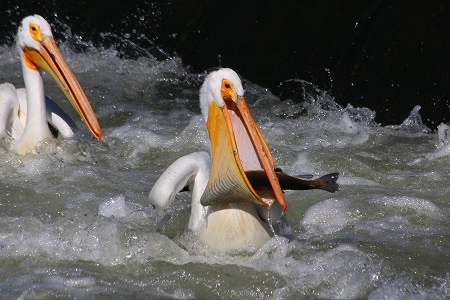
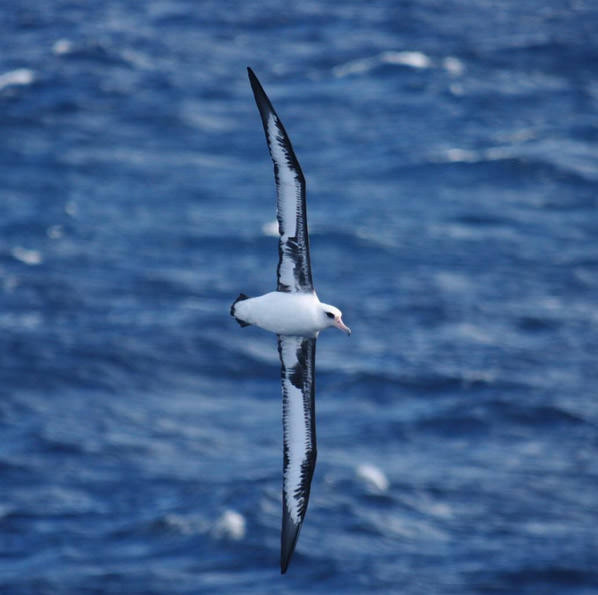
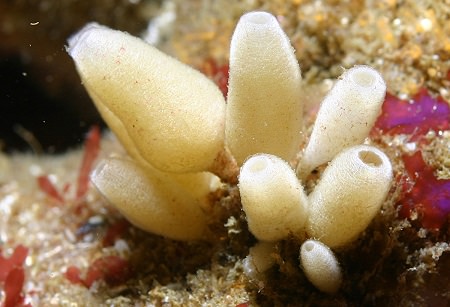
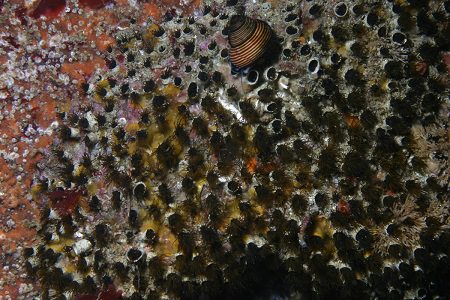
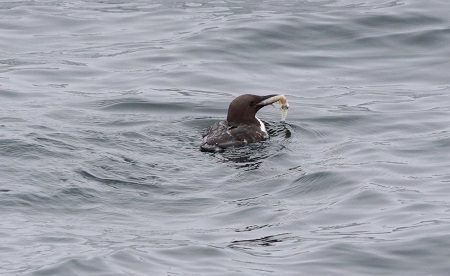
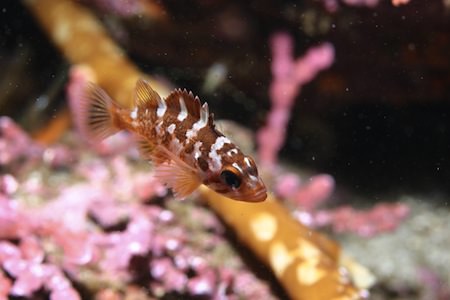
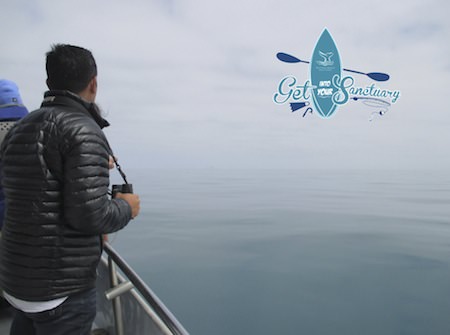
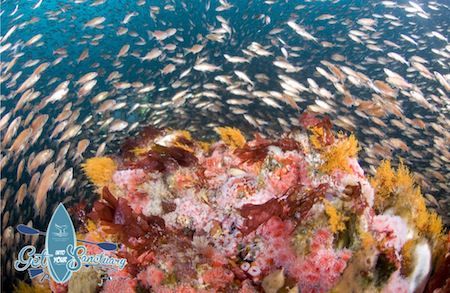
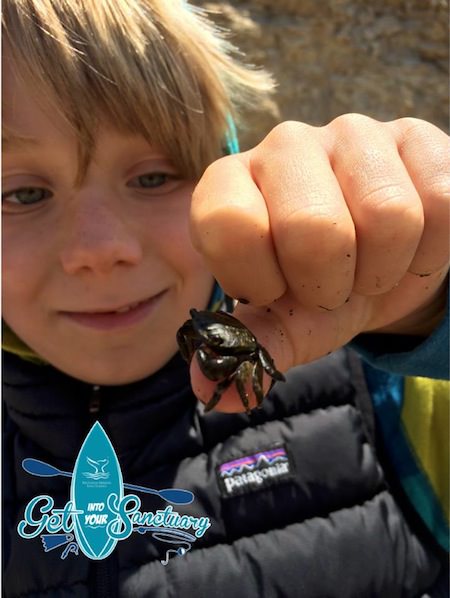
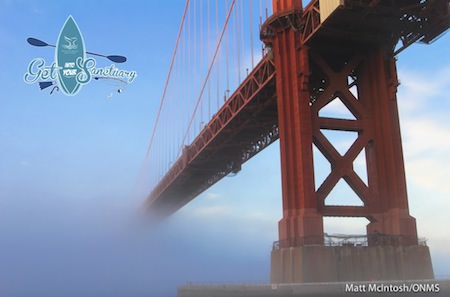
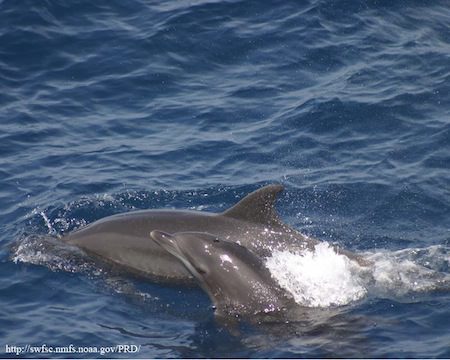

 8/3/17 - Bingo!! Stop
by the Greater Farallones Visitor Center on August 12th or 13th, 10am-4pm to borrow a bird bingo game sheet. Take a walk at the
nearby beach and marsh and bring your completed bingo board back to the visitor center for a
prize! (Photo Credit: Roy W. Lowe/USFWS)
8/3/17 - Bingo!! Stop
by the Greater Farallones Visitor Center on August 12th or 13th, 10am-4pm to borrow a bird bingo game sheet. Take a walk at the
nearby beach and marsh and bring your completed bingo board back to the visitor center for a
prize! (Photo Credit: Roy W. Lowe/USFWS)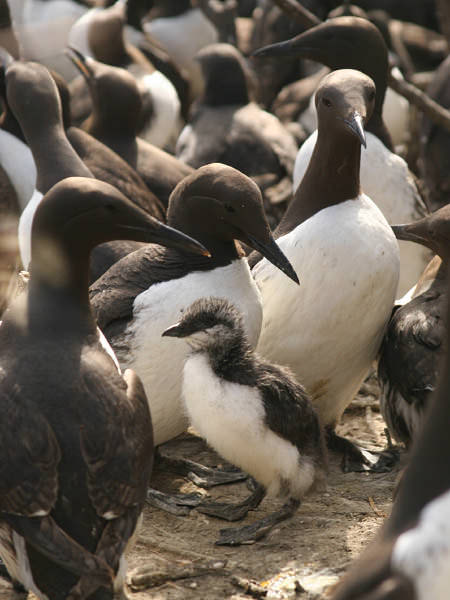 8/2/17 - Welcome to Winged Wednesday!
The Trinidad coast is home to one of California's largest colonies of Common Murres; with
over 60,000 birds nesting on Green and Flatiron Rocks alone! To help save future generations
of these birds, a new North Coast Chapter of the Seabird Protection Network has been formed.
Please join us in welcoming them to our team! Keep an eye out for these birds, and if you
live in the Trinidad area consider volunteering to assist with Citizen Science! To learn
more about seabirds and what the Seabird Protection Network is doing to help seabirds thrive
along the northern California coast, visit the website. (Photo: NOAA/OCNMS)
8/2/17 - Welcome to Winged Wednesday!
The Trinidad coast is home to one of California's largest colonies of Common Murres; with
over 60,000 birds nesting on Green and Flatiron Rocks alone! To help save future generations
of these birds, a new North Coast Chapter of the Seabird Protection Network has been formed.
Please join us in welcoming them to our team! Keep an eye out for these birds, and if you
live in the Trinidad area consider volunteering to assist with Citizen Science! To learn
more about seabirds and what the Seabird Protection Network is doing to help seabirds thrive
along the northern California coast, visit the website. (Photo: NOAA/OCNMS)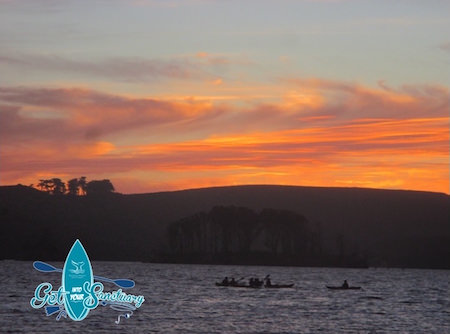 8/1/17 - We want to see your photos
of the beautiful scenery in Greater Farallones National Marine Sanctuary! Submit your
favorite sanctuary views to the Get Into Your Sanctuary photo contest! (Photo Credit: Sara
Heintzelman, NOAA/GFNMS)
8/1/17 - We want to see your photos
of the beautiful scenery in Greater Farallones National Marine Sanctuary! Submit your
favorite sanctuary views to the Get Into Your Sanctuary photo contest! (Photo Credit: Sara
Heintzelman, NOAA/GFNMS)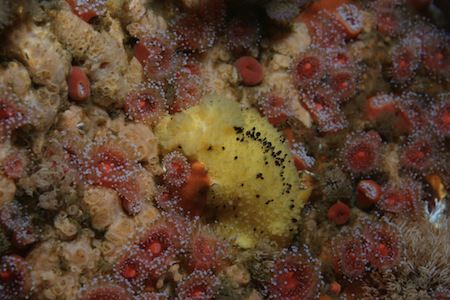 7/31/17 - Happy Marine
Life Monday! The Monterey doris (Doris montereyensis) can reach lengths of 15cm and is
usually a lemon-yellow color; however it can range in color from a brighter yellow-orange to
nearly white. It lays ribbons of eggs that can contain up to 2 million individual eggs!
(Photo Credit: Steve Lonhart, NOAA/MBNMS)
7/31/17 - Happy Marine
Life Monday! The Monterey doris (Doris montereyensis) can reach lengths of 15cm and is
usually a lemon-yellow color; however it can range in color from a brighter yellow-orange to
nearly white. It lays ribbons of eggs that can contain up to 2 million individual eggs!
(Photo Credit: Steve Lonhart, NOAA/MBNMS) 7/29/17 - Raise a hand (or fin!) if
you want to go whale watching! Plan a Get Into Your Sanctuary whale watching adventure in
Greater Farallones National Marine Sanctuary on August 12th or 13th. (Photo Credit: Ed
Lyman/NOAA Permit #15240)
7/29/17 - Raise a hand (or fin!) if
you want to go whale watching! Plan a Get Into Your Sanctuary whale watching adventure in
Greater Farallones National Marine Sanctuary on August 12th or 13th. (Photo Credit: Ed
Lyman/NOAA Permit #15240)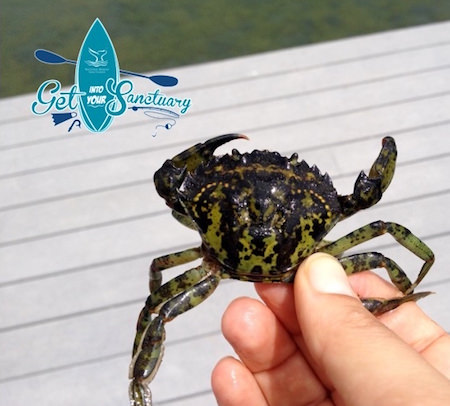 7/27/17 - Feeling crabby? Don't
worry, there is a way for the whole family to enjoy Get into Your Sanctuary Day on Saturday
August 12th! Join us for a morning or afternoon Crab Family Workshop. Attention all curious
crustaceans! Prepare your claws and carapaces for a family event devoted entirely to crabs.
Learn about crab anatomy with our crab dress-up costume and naturalist-led dissection of
invasive green crabs. Look and touch real live shore crabs and sand crabs. As a grand
finale, we will be using crab traps to fish for rock and Dungeness crabs off of our
classroom pier. For more information or to register, contact Sara: sara.heintzelman@noaa.gov
Check out all of our Get into Your Sanctuary
Events. (Photo Credit: Kate Bimrose, NOAA/GFNMS)
7/27/17 - Feeling crabby? Don't
worry, there is a way for the whole family to enjoy Get into Your Sanctuary Day on Saturday
August 12th! Join us for a morning or afternoon Crab Family Workshop. Attention all curious
crustaceans! Prepare your claws and carapaces for a family event devoted entirely to crabs.
Learn about crab anatomy with our crab dress-up costume and naturalist-led dissection of
invasive green crabs. Look and touch real live shore crabs and sand crabs. As a grand
finale, we will be using crab traps to fish for rock and Dungeness crabs off of our
classroom pier. For more information or to register, contact Sara: sara.heintzelman@noaa.gov
Check out all of our Get into Your Sanctuary
Events. (Photo Credit: Kate Bimrose, NOAA/GFNMS)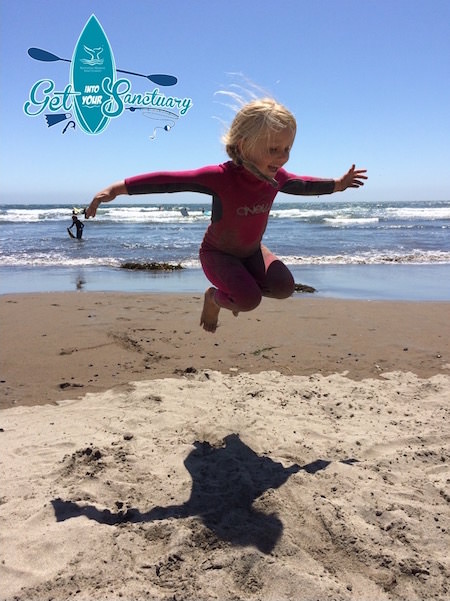 7/25/17 - If the ocean makes you jump
for joy too, submit your favorite sanctuary portraits to the Get Into Your Sanctuary photo
contest! (Photo Credit: Sara Heintzelman, NOAA/GFNMS)
7/25/17 - If the ocean makes you jump
for joy too, submit your favorite sanctuary portraits to the Get Into Your Sanctuary photo
contest! (Photo Credit: Sara Heintzelman, NOAA/GFNMS)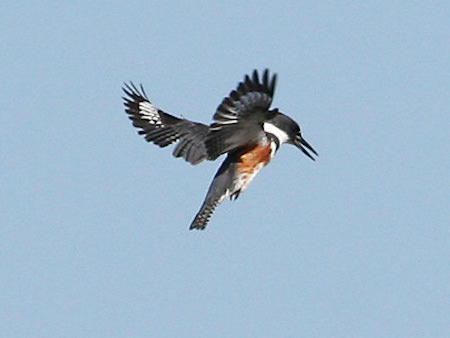 7/24/17 - Happy Marine Life Monday!
The Belted Kingfisher (Cerle alcyon) has a long, pointed beak, a dark blue head and a white
throat. Females, such as the one in the picture, have a rusty colored band on their belly
and sides. Kingfishers can be spotted diving into the water to catch their primary prey,
small fish. Keep your eyes out for Belted Kinfishers if you visit the Greater Farallones
National Marine Sanctuary Visitor Center, this one was spotted close by! (Photo Credit: Will
Elder, NPS)
7/24/17 - Happy Marine Life Monday!
The Belted Kingfisher (Cerle alcyon) has a long, pointed beak, a dark blue head and a white
throat. Females, such as the one in the picture, have a rusty colored band on their belly
and sides. Kingfishers can be spotted diving into the water to catch their primary prey,
small fish. Keep your eyes out for Belted Kinfishers if you visit the Greater Farallones
National Marine Sanctuary Visitor Center, this one was spotted close by! (Photo Credit: Will
Elder, NPS)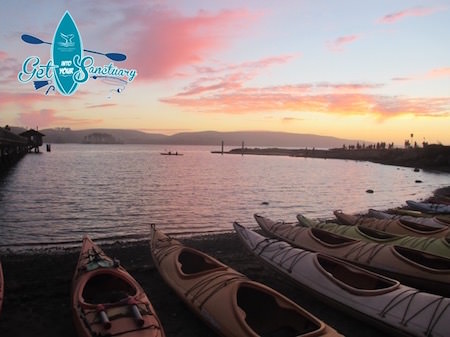 7/23/17 - Kayaks are a great way to
explore your national marine sanctuaries! Plan a Get Into Your Sanctuary Day paddle adventure
in Greater Farallones National Marine Sanctuary. (Photo Credit: Sara Heintzelman,
NOAA/GFNMS)
7/23/17 - Kayaks are a great way to
explore your national marine sanctuaries! Plan a Get Into Your Sanctuary Day paddle adventure
in Greater Farallones National Marine Sanctuary. (Photo Credit: Sara Heintzelman,
NOAA/GFNMS) 7/21/17 - Looking for a whale of a
good time? Join the Sanctuary Explorations program for a Farallon Islands & Whale Watching Trip on
August 12 to celebrate Get into Your Sanctuary Day! Or find another Get into Your
Sanctuary event near you. (Photo Credit: Peter Winch, NOAA/GFNMS)
7/21/17 - Looking for a whale of a
good time? Join the Sanctuary Explorations program for a Farallon Islands & Whale Watching Trip on
August 12 to celebrate Get into Your Sanctuary Day! Or find another Get into Your
Sanctuary event near you. (Photo Credit: Peter Winch, NOAA/GFNMS)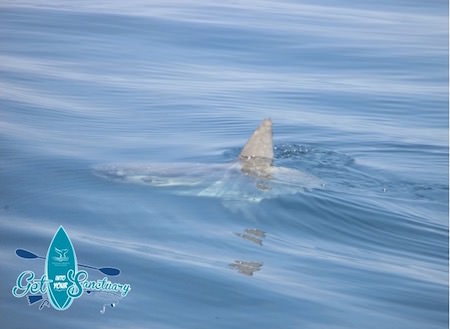 7/20/17 - It isn't too early to start
celebrating Get Into Your Sanctuary Day! The photo contest is open now and you have until
August 31st to enter. Submit your best images of the abundant sanctuary life; from
invertebrates to birds, fish to marine mammals! There is no shortage of inspiration in
Greater Farallones National Marine Sanctuary. Remember to be respectful of these marine
critters and their homes! (Photo Credit: Sara Heintzelman, NOAA/GFNMS)
7/20/17 - It isn't too early to start
celebrating Get Into Your Sanctuary Day! The photo contest is open now and you have until
August 31st to enter. Submit your best images of the abundant sanctuary life; from
invertebrates to birds, fish to marine mammals! There is no shortage of inspiration in
Greater Farallones National Marine Sanctuary. Remember to be respectful of these marine
critters and their homes! (Photo Credit: Sara Heintzelman, NOAA/GFNMS)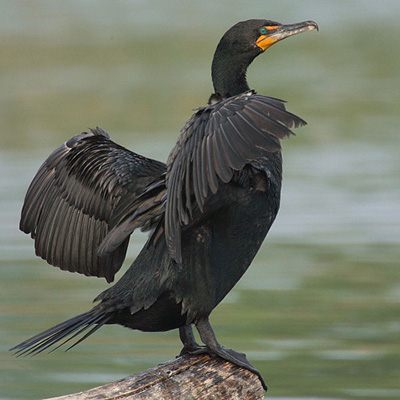 7/19/17 - Welcome to Winged Wednesday! Keep an eye out for
Double-crested Cormorants this July and August. Unlike most seabirds, Double-crested
Cormorants don't have oily feathers for waterproofing. To dry their feathers after a wet
swim, they stretch out their wings and face the wind. Good weather isn't required for
drying, but it must help - which means Double-crested Cormorants might enjoy the summer sun
as much as you do! Learn about California seabirds and what Greater Farallones National
Marine Sanctuary is doing to help seabirds thrive. (Photo:
Dick Daniels/NPS)
7/19/17 - Welcome to Winged Wednesday! Keep an eye out for
Double-crested Cormorants this July and August. Unlike most seabirds, Double-crested
Cormorants don't have oily feathers for waterproofing. To dry their feathers after a wet
swim, they stretch out their wings and face the wind. Good weather isn't required for
drying, but it must help - which means Double-crested Cormorants might enjoy the summer sun
as much as you do! Learn about California seabirds and what Greater Farallones National
Marine Sanctuary is doing to help seabirds thrive. (Photo:
Dick Daniels/NPS) 7/17/17 - Happy Marine Life Monday!
The loggerhead sea turtle (Caretta caretta) was named for its relatively large head, which
supports powerful jaws and enables them to feed on hard-shelled prey, such as whelks.
Although hatchlings only weigh 20 grams, full grown adults can reach weights of 250 pounds!
Pacific loggerheads migrate over 7,500 miles between nesting beaches in Japan and feeding
grounds off the coast of Mexico! (Photo Credit: GP Schmahl/NOAA)
7/17/17 - Happy Marine Life Monday!
The loggerhead sea turtle (Caretta caretta) was named for its relatively large head, which
supports powerful jaws and enables them to feed on hard-shelled prey, such as whelks.
Although hatchlings only weigh 20 grams, full grown adults can reach weights of 250 pounds!
Pacific loggerheads migrate over 7,500 miles between nesting beaches in Japan and feeding
grounds off the coast of Mexico! (Photo Credit: GP Schmahl/NOAA)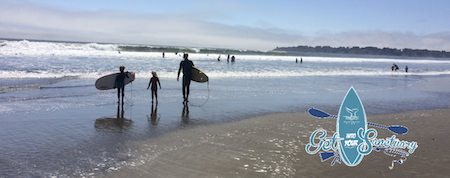 7/15/17 - Get Into Your Sanctuary Day is August 12th!
From a day-long adventure at sea, to family workshops, or drop-in activities- there is
something and some way for everyone to participate in the Get Into Your Sanctuary
celebration with Greater Farallones National Marine Sanctuary. How will you celebrate Get
Into Your Sanctuary day? (Photo Credit: Sara Heintzelman, NOAA/GFNMS)
7/15/17 - Get Into Your Sanctuary Day is August 12th!
From a day-long adventure at sea, to family workshops, or drop-in activities- there is
something and some way for everyone to participate in the Get Into Your Sanctuary
celebration with Greater Farallones National Marine Sanctuary. How will you celebrate Get
Into Your Sanctuary day? (Photo Credit: Sara Heintzelman, NOAA/GFNMS)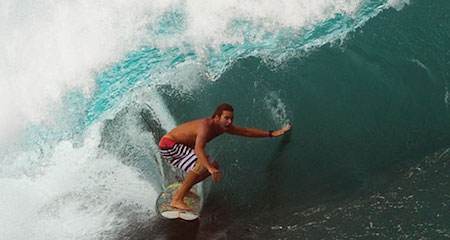 7/14/17 - You're
invited! On August 12th, we'll be holding a nation-wide "Get Into Your Sanctuary"
celebration. From a walk on the beach to a surfing adventure, a visit to an aquarium or a
sanctuary staff-led event, there is something for everyone and many ways to enjoy your
national marine sanctuaries! To figure out where to go, what to do and get a sneak peak of
what you might see, check out our Visit page.
7/14/17 - You're
invited! On August 12th, we'll be holding a nation-wide "Get Into Your Sanctuary"
celebration. From a walk on the beach to a surfing adventure, a visit to an aquarium or a
sanctuary staff-led event, there is something for everyone and many ways to enjoy your
national marine sanctuaries! To figure out where to go, what to do and get a sneak peak of
what you might see, check out our Visit page.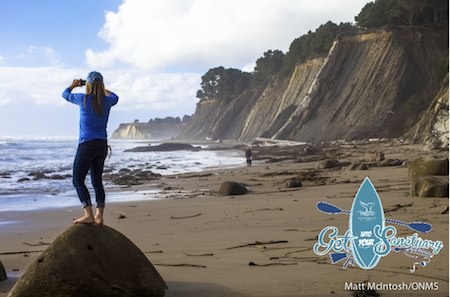 7/12/17 - Celebrate
the upcoming Get Into Your Sanctuary day by getting out and taking photos that show off the
natural beauty and importance of our marine sanctuaries! The contest has officially opened!
You can enter anytime until August 31! There are 3 categories: Sanctuary Views, Sanctuary
Life, and Sanctuary Portraits. The best photos will be highlighted on the Office of National
Marine Sanctuaries website! Please be careful not to disturb the wildlife that calls our
sanctuaries home while taking your photos! Have fun getting creative and remember to take
only photos, and leave only footprints (or bubbles!). (Photo Credit: Matt McIntosh, NOAA,
ONMS)
7/12/17 - Celebrate
the upcoming Get Into Your Sanctuary day by getting out and taking photos that show off the
natural beauty and importance of our marine sanctuaries! The contest has officially opened!
You can enter anytime until August 31! There are 3 categories: Sanctuary Views, Sanctuary
Life, and Sanctuary Portraits. The best photos will be highlighted on the Office of National
Marine Sanctuaries website! Please be careful not to disturb the wildlife that calls our
sanctuaries home while taking your photos! Have fun getting creative and remember to take
only photos, and leave only footprints (or bubbles!). (Photo Credit: Matt McIntosh, NOAA,
ONMS) 7/10/17 - Happy Marine
Life Monday! Grass rockfish (Sebastes rastrelliger) can be recognized by their red-rimmed
eyes, which are closely set and located toward the top of their large heads; these features
can give the impression that they are cross-eyed! They are masters of camouflage and tend to
stay in the same crack or crevice. While they are hard to spot, once you locate one, chances
are that the same individual will continue to be found in that location time after time!
(Photo Credit: Steve Lonhart, NOAA/MBNMS)
7/10/17 - Happy Marine
Life Monday! Grass rockfish (Sebastes rastrelliger) can be recognized by their red-rimmed
eyes, which are closely set and located toward the top of their large heads; these features
can give the impression that they are cross-eyed! They are masters of camouflage and tend to
stay in the same crack or crevice. While they are hard to spot, once you locate one, chances
are that the same individual will continue to be found in that location time after time!
(Photo Credit: Steve Lonhart, NOAA/MBNMS)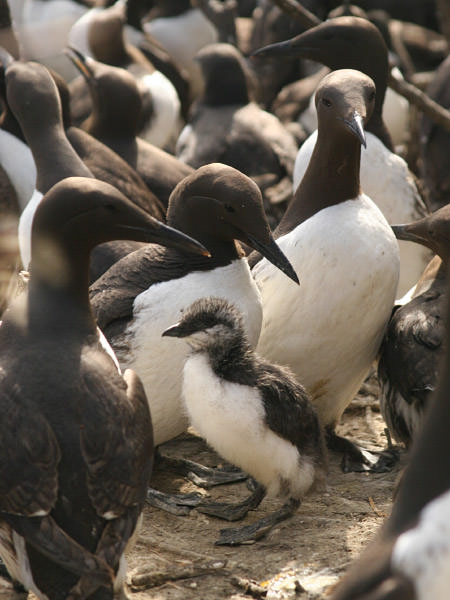 7/5/17 - Welcome to Winged Wednesday!
Strike a pose! This Common Murre is poised and undeniably beautiful! Learn about California
seabirds and what Greater Farallones National Marine Sanctuary is doing to help seabirds thrive. (Photo: Dick Daniels/NPS)
7/5/17 - Welcome to Winged Wednesday!
Strike a pose! This Common Murre is poised and undeniably beautiful! Learn about California
seabirds and what Greater Farallones National Marine Sanctuary is doing to help seabirds thrive. (Photo: Dick Daniels/NPS)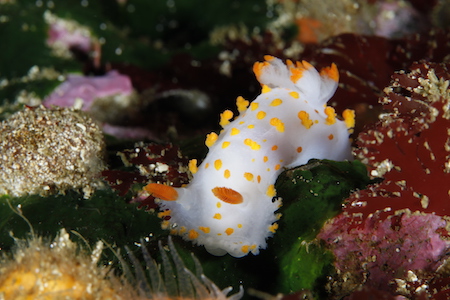 7/3/17 - Happy Marine Life Monday!
The sea-clown triopha (Triopha catalinae) is a distinctive nudibranch with its pale body and
bright orange spots. It feeds on bryozoans in mid to low rocky intertidal areas. The
sea-clown is one of the largest nudibranchs that is able to crawl on the underside of tide
pool surface films, usually a feat only accomplished by smaller nudibranchs! (Photo Credit:
Greg McFall, NOAA/CBNMS)
7/3/17 - Happy Marine Life Monday!
The sea-clown triopha (Triopha catalinae) is a distinctive nudibranch with its pale body and
bright orange spots. It feeds on bryozoans in mid to low rocky intertidal areas. The
sea-clown is one of the largest nudibranchs that is able to crawl on the underside of tide
pool surface films, usually a feat only accomplished by smaller nudibranchs! (Photo Credit:
Greg McFall, NOAA/CBNMS)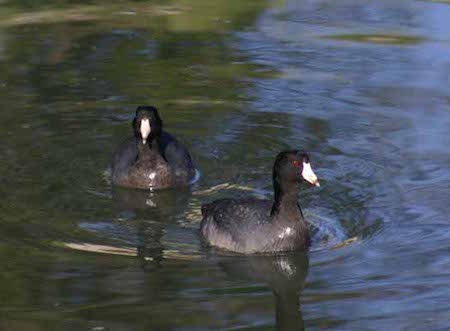 6/26/17 - Happy Marine
Life Monday! Despite its appearance, the American Coot (Fulica americana) is not a duck but
in the Family Rallidae, which included rails, gallinules, and coots. A unique feature of the
coot is that it has lobed toes rather than webbed feet. Coots can be seen running across the
water, beating their wings for quite a distance to get themselves airborne! (Photo Credit:
Steve Lonhart, NOAA/MBNMS)
6/26/17 - Happy Marine
Life Monday! Despite its appearance, the American Coot (Fulica americana) is not a duck but
in the Family Rallidae, which included rails, gallinules, and coots. A unique feature of the
coot is that it has lobed toes rather than webbed feet. Coots can be seen running across the
water, beating their wings for quite a distance to get themselves airborne! (Photo Credit:
Steve Lonhart, NOAA/MBNMS)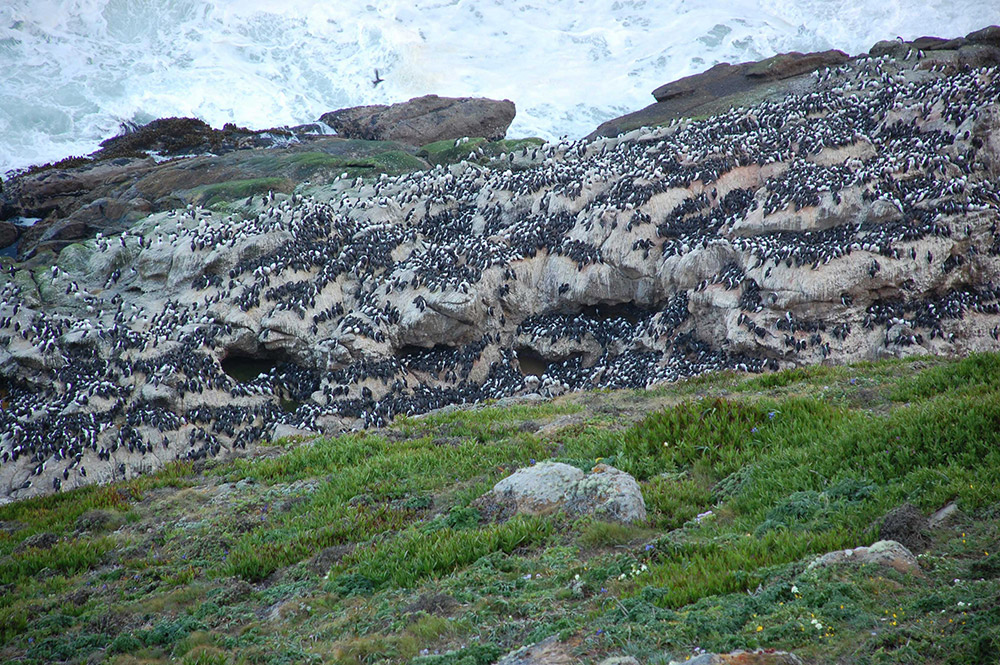 6/21/17 -Welcome to
Winged Wednesday! Point Reyes National Seashore is a treasure for many reasons, not least of
all because it's prime habitat for seabirds, including tens of thousands of common murres.
If you haven't seen them yet, grab some binocs, a windbreaker and check out the colony near
the lighthouse - not to mention the big blue expanse of the Greater Farallones National
Marine Sanctuary beyond! Learn more about common murres and what Greater Farallones National
Marine Sanctuary is doing to help seabirds thrive. (Photo:
Sandy Rhoades/USFWS)
6/21/17 -Welcome to
Winged Wednesday! Point Reyes National Seashore is a treasure for many reasons, not least of
all because it's prime habitat for seabirds, including tens of thousands of common murres.
If you haven't seen them yet, grab some binocs, a windbreaker and check out the colony near
the lighthouse - not to mention the big blue expanse of the Greater Farallones National
Marine Sanctuary beyond! Learn more about common murres and what Greater Farallones National
Marine Sanctuary is doing to help seabirds thrive. (Photo:
Sandy Rhoades/USFWS) 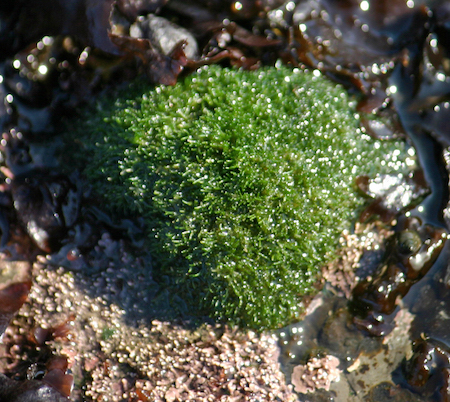 6/19/17 - Happy Marine Life Monday!
Green Pin Cushion Alga (Cladophora columbiana) may look just like moss, but it is a green
alga found in the mid to high intertidal. Its spongy filaments help it effectively hold
water, allowing it to survive long periods of exposure to the air and sun. This is one of
the species monitored by the LiMPETS program! Find out more about LiMPETS (Photo Credit: Monika Krach, Greater
Farallones Association)
6/19/17 - Happy Marine Life Monday!
Green Pin Cushion Alga (Cladophora columbiana) may look just like moss, but it is a green
alga found in the mid to high intertidal. Its spongy filaments help it effectively hold
water, allowing it to survive long periods of exposure to the air and sun. This is one of
the species monitored by the LiMPETS program! Find out more about LiMPETS (Photo Credit: Monika Krach, Greater
Farallones Association) 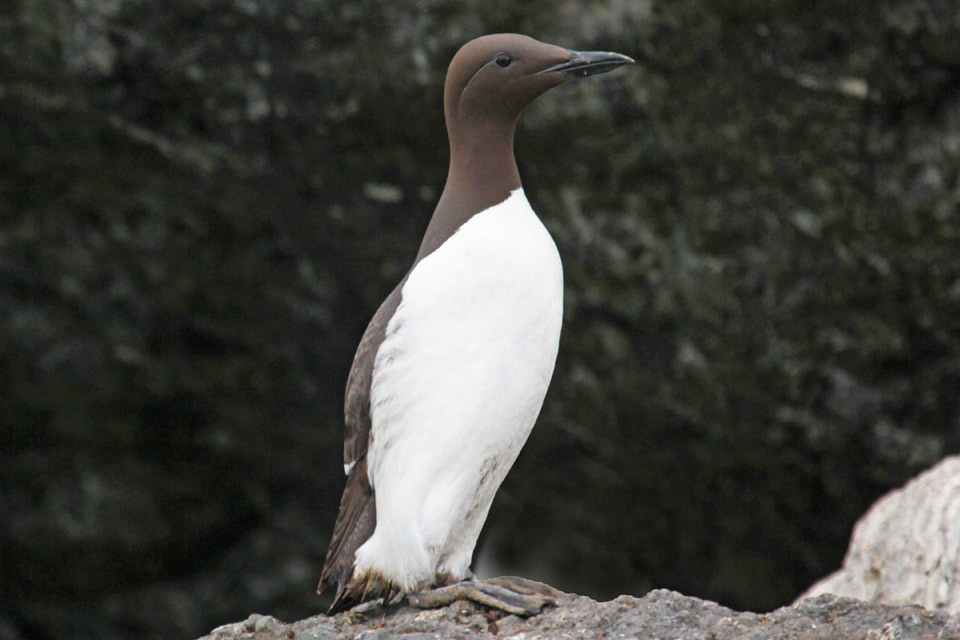 6/18/17 - Happy Father's Day! We know
that there are a lot of incredible fathers out there and Common Murre dads are among them!
Did you know that Common Murre chicks leave their rocky, cliffside nests just 3 weeks after
hatching? First the fathers coax the flightless chicks to jump from the cliffs down to the
sea, then the fathers spend the next 2 months teaching their chicks how to survive life as a
seabird. Good job dads!
(Photo Credit: OCNMS, NOAA)
6/18/17 - Happy Father's Day! We know
that there are a lot of incredible fathers out there and Common Murre dads are among them!
Did you know that Common Murre chicks leave their rocky, cliffside nests just 3 weeks after
hatching? First the fathers coax the flightless chicks to jump from the cliffs down to the
sea, then the fathers spend the next 2 months teaching their chicks how to survive life as a
seabird. Good job dads!
(Photo Credit: OCNMS, NOAA)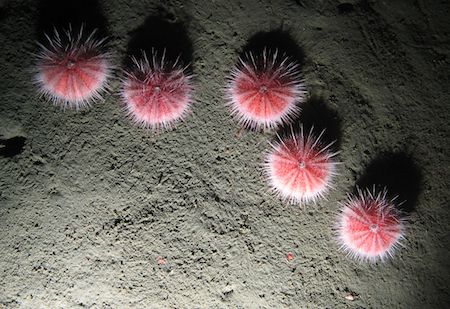 6/12/17 - Happy Marine
Life Monday! The fragile pink urchin (Strongylocentrotus fragilis) is a deep sea species and
is usually found at depths of 300-1600 feet. The fragile pink urchin feeds on bits of plants
and animals that drift down to its deep environment. Like other urchins, it has tiny tube
feet and spines that it uses to pass the treasured food scraps to its mouth which is on the
bottom of its body! (Photo Credit: IfAME MBNMS MARE TNC)
6/12/17 - Happy Marine
Life Monday! The fragile pink urchin (Strongylocentrotus fragilis) is a deep sea species and
is usually found at depths of 300-1600 feet. The fragile pink urchin feeds on bits of plants
and animals that drift down to its deep environment. Like other urchins, it has tiny tube
feet and spines that it uses to pass the treasured food scraps to its mouth which is on the
bottom of its body! (Photo Credit: IfAME MBNMS MARE TNC) 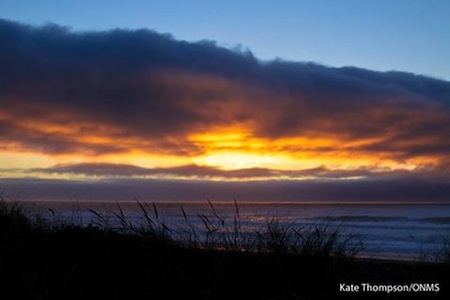
6/8/17 - Happy World Oceans Day! Looking for a way to celebrate World Oceans Day? Come visit Greater Farallones education staff at the San Francisco Zoo from 10am-3pm this Sunday, June 11th! (Photo Credit: Kate Thompson/NOAA)
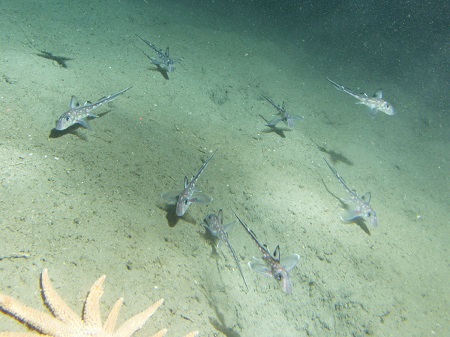 The spotted ratfish (Hydrolagus
colliei) is a chimaera and has some characteristics of sharks (cartilaginous fish) and some
characteristics of bony fish. This deep sea species can be found as deep as 1000 meters and
can be spotted cruising along the seafloor looking for shrimp, clams, worms, sea stars, or
other fishes to feed on! (Photo Credit: Jean DeMarignac / NOAA MBNMS)
The spotted ratfish (Hydrolagus
colliei) is a chimaera and has some characteristics of sharks (cartilaginous fish) and some
characteristics of bony fish. This deep sea species can be found as deep as 1000 meters and
can be spotted cruising along the seafloor looking for shrimp, clams, worms, sea stars, or
other fishes to feed on! (Photo Credit: Jean DeMarignac / NOAA MBNMS) 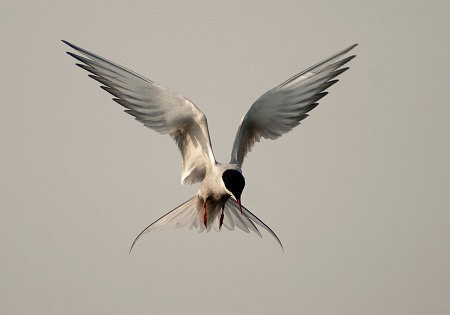 The Arctic Tern (Sterna paradisaea) is
well known for its amazing annual migration. With a wingspan of 25-29 inches and a weight of
only 3-4 ounces, this small bird migrates around 22,000 miles from Arctic breeding grounds
to its wintering grounds off of Antarctica! (Photo Credit: Ken Conger, NPS)
The Arctic Tern (Sterna paradisaea) is
well known for its amazing annual migration. With a wingspan of 25-29 inches and a weight of
only 3-4 ounces, this small bird migrates around 22,000 miles from Arctic breeding grounds
to its wintering grounds off of Antarctica! (Photo Credit: Ken Conger, NPS)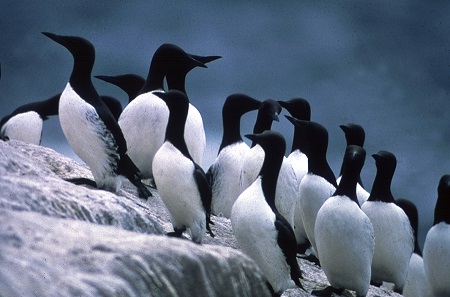 In 1994, seabird
biologist Harry Carter had a vision: to restore the common murre colony at Devil's Slide
Rock, which had been completely abandoned as a result of an oil spill and gillnet fisheries.
Carter assembled a daring team, piloted zodiacs in rough seas, and climbed the rock to place
decoys he hoped would attract the murres back to their old home. Year after year, that work
continued, and more birds started breeding on the rock. Thanks to this long term commitment
over the past twenty years, the colony today is now home to 2,000 nesting common murres.
In 1994, seabird
biologist Harry Carter had a vision: to restore the common murre colony at Devil's Slide
Rock, which had been completely abandoned as a result of an oil spill and gillnet fisheries.
Carter assembled a daring team, piloted zodiacs in rough seas, and climbed the rock to place
decoys he hoped would attract the murres back to their old home. Year after year, that work
continued, and more birds started breeding on the rock. Thanks to this long term commitment
over the past twenty years, the colony today is now home to 2,000 nesting common murres.
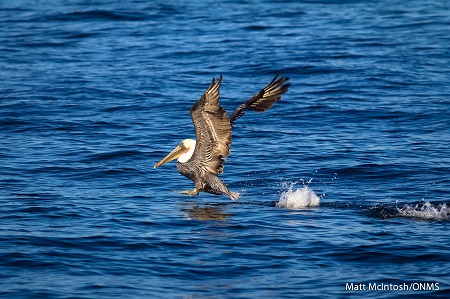 From striving to thriving, the
Brown Pelican is an endangered species success story! Nearly extinct in the 1970's they
have rebounded to healthy numbers since DDT was banned. The Endangered Species Act made
this possible and the California Brown Pelican was delisted in 2009. (Photo Credit: Matt
McIntosh/NOAA)
From striving to thriving, the
Brown Pelican is an endangered species success story! Nearly extinct in the 1970's they
have rebounded to healthy numbers since DDT was banned. The Endangered Species Act made
this possible and the California Brown Pelican was delisted in 2009. (Photo Credit: Matt
McIntosh/NOAA)
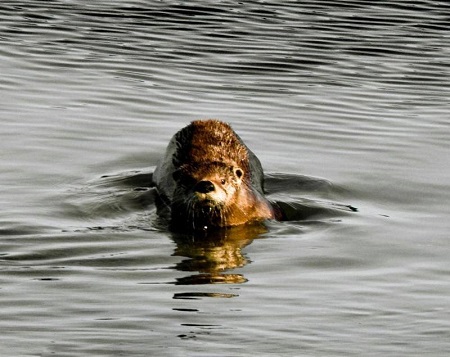 The North American
River Otter (Lontra canadensis) population has been rebounding in Northern California in
recent years after historic declines due to pressures from hunting, pollution and habitat
loss. Although somewhat similar in appearance to their relatives the sea otter, the river
otter does not float on its back and is much more agile on land. They reach lengths of about
4 feet (including their tails!) and weigh 10-30 pounds. They can be found in a wide variety
of marine and freshwater habitats where they search for fish, sea stars, crabs, mussels,
amphibians, and bird eggs to feast on. (Photo Credit: NPS)
The North American
River Otter (Lontra canadensis) population has been rebounding in Northern California in
recent years after historic declines due to pressures from hunting, pollution and habitat
loss. Although somewhat similar in appearance to their relatives the sea otter, the river
otter does not float on its back and is much more agile on land. They reach lengths of about
4 feet (including their tails!) and weigh 10-30 pounds. They can be found in a wide variety
of marine and freshwater habitats where they search for fish, sea stars, crabs, mussels,
amphibians, and bird eggs to feast on. (Photo Credit: NPS) Shortly after hatching,
common murre chicks stretch their wings for their first... swim! Common murres learn to swim
and dive before they fly. In fact, they are such incredible divers and swimmers that they
are often described as “flying” through the water. Make sure you give common
murre chicks space as they enter Greater Farallones and Monterey Bay National Marine
Sanctuaries for their very first time. (Photo: RJ Roush)
Shortly after hatching,
common murre chicks stretch their wings for their first... swim! Common murres learn to swim
and dive before they fly. In fact, they are such incredible divers and swimmers that they
are often described as “flying” through the water. Make sure you give common
murre chicks space as they enter Greater Farallones and Monterey Bay National Marine
Sanctuaries for their very first time. (Photo: RJ Roush) 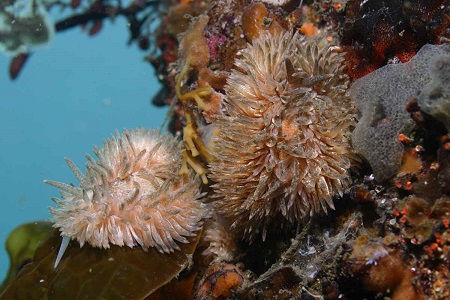 The shag-rug nudibranch
(Aeolidia papillosa) can be found in the low intertidal and subtidal zones from Alaska
through central California. Their shaggy appearance mimics the sea anemones that these
nudibranchs feed on! (Photo Credit: Steve Lonhart, NOAA/MBNMS)
The shag-rug nudibranch
(Aeolidia papillosa) can be found in the low intertidal and subtidal zones from Alaska
through central California. Their shaggy appearance mimics the sea anemones that these
nudibranchs feed on! (Photo Credit: Steve Lonhart, NOAA/MBNMS)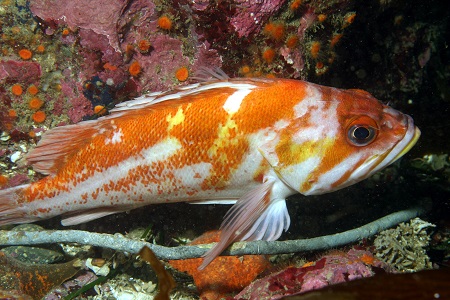 The copper rockfish (Sebastes
caurinus) has pronounced spines and the rear two thirds of its lateral line is distinctly
light which helps distinguish it from similar looking rockfish species. The copper rockfish
can reach lengths of approximately 26 inches and has been know to live for 50 years!
The copper rockfish (Sebastes
caurinus) has pronounced spines and the rear two thirds of its lateral line is distinctly
light which helps distinguish it from similar looking rockfish species. The copper rockfish
can reach lengths of approximately 26 inches and has been know to live for 50 years!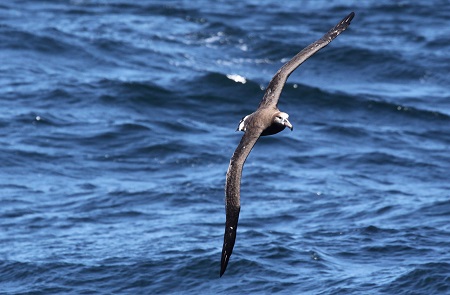
I spy, with my little eye, a giant, soaring black-footed albatross. Welcome to Winged Wednesday! Black-footed albatrosses are “medium-sized” albatrosses, but they're nonetheless huge birds with 7-foot wingspans. These birds can be found off California year-round, but they're more abundant during our upwelling season, April-September, when our coastal waters are most productive and full of yummy seabird food. Please join us in welcoming many black-footed albatrosses back to our California sanctuaries! Learn more about seabirds and what Greater Farallones National Marine Sanctuary is doing to help seabirds thrive. (Photo: NOAA)